- contact@scarhandpainting.com


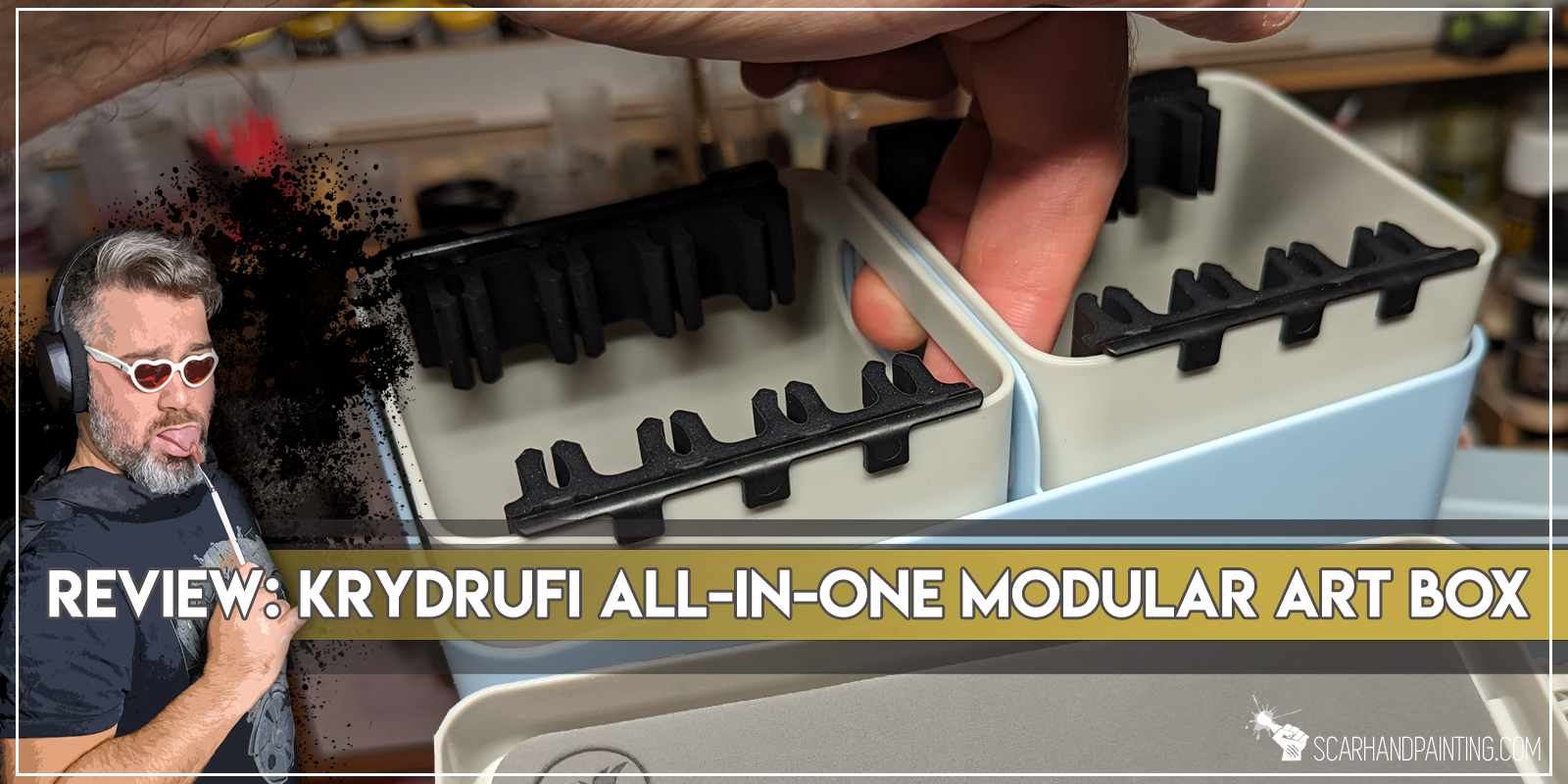
Watching the miniatures hobby industry from within for over two decades can definitely yield a few observations, such as what trends dominate the current period. If I was to pick one it would definitely be “all-in-one”, starting with portable painting stations, transportation cases and hobby tools. Nowadays I am more of a sedentary type of a hobbyist, but I used to work in a hobby store and travel quite a lot, carrying my hobby around. All that to say that regardless of my current situation I can appreciate easy to transport, modular hobby solutions. One of which, the All-In-One Modular Art Box by KRYDRUFI, I would like to present to you in this article.
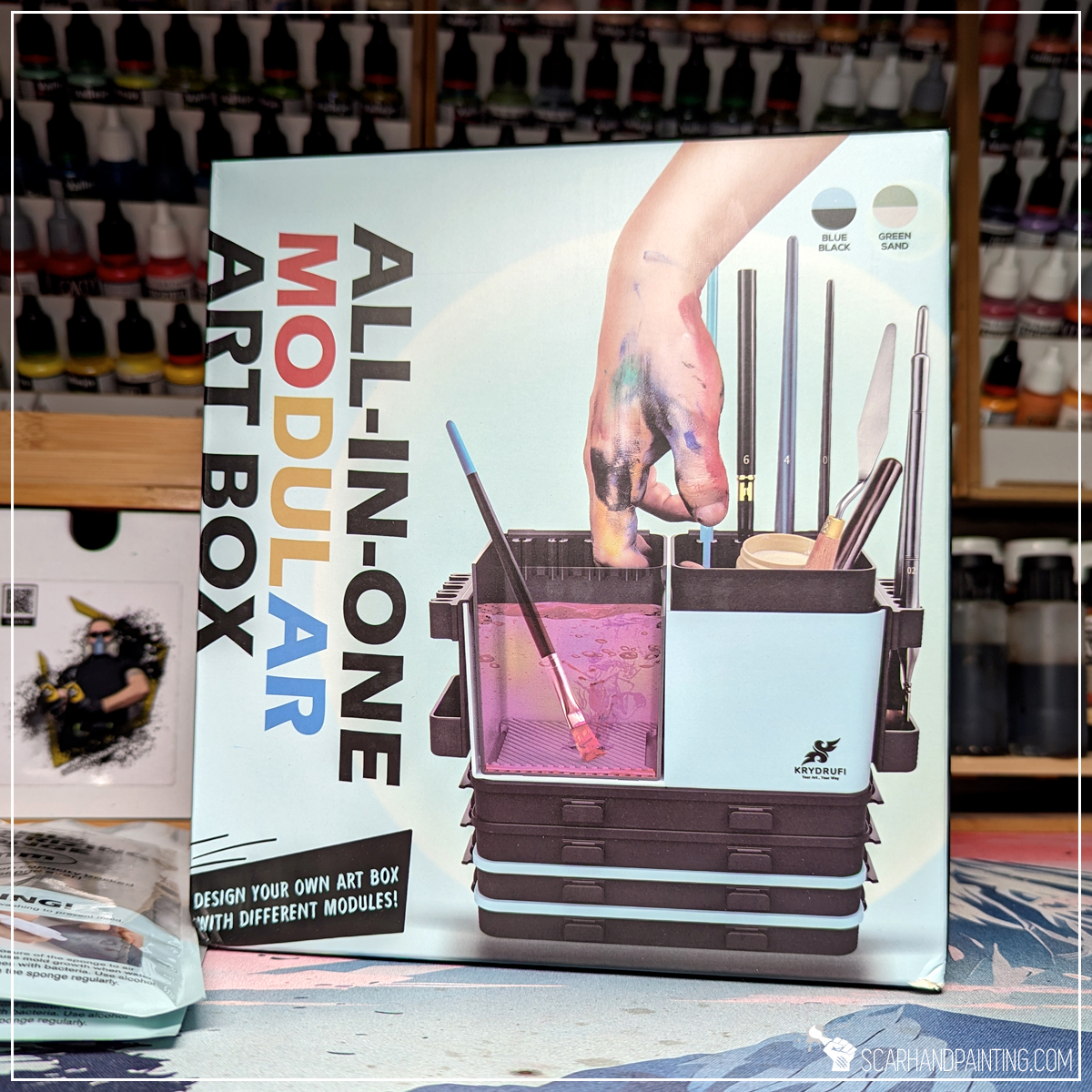
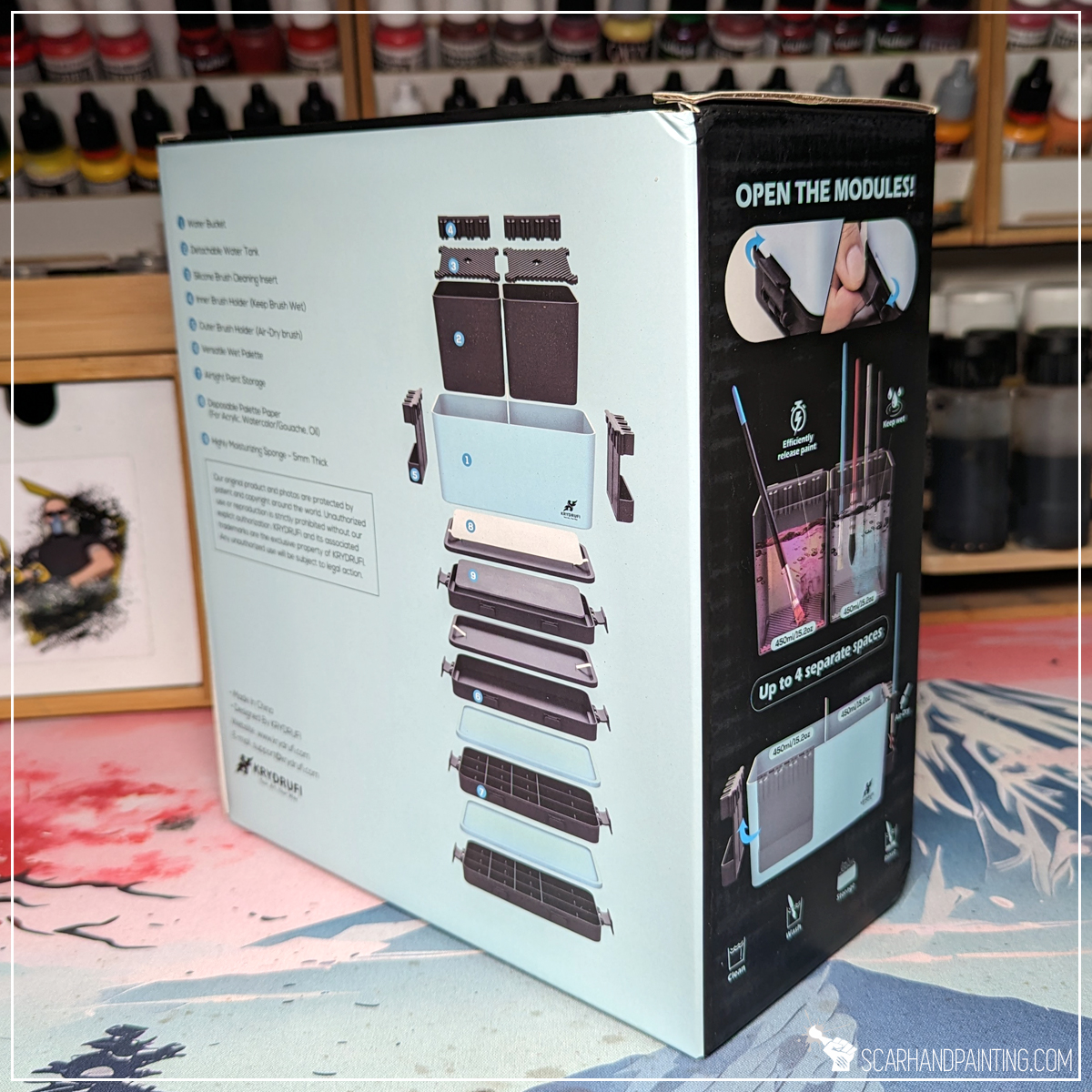
Long story short, I was recently contacted by KRYDRUFI asking if I would like to test out the All-In-One Modular Art Box, to which I agreed. The item arrived in good condition a few days later, all the way from China. I’m a sucker for the high aesthetic value of packaging both overall and of each individual piece and the first impression was great.
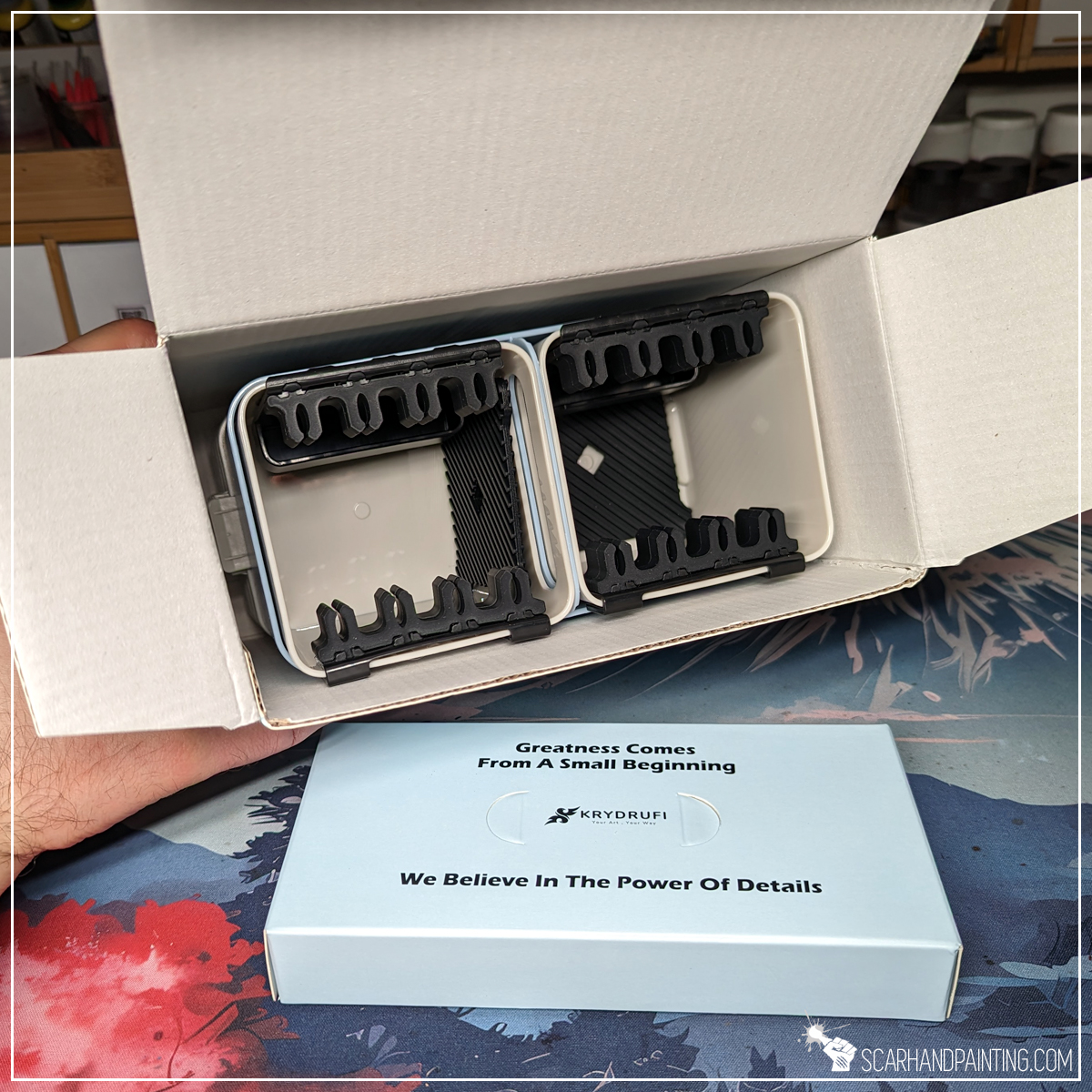
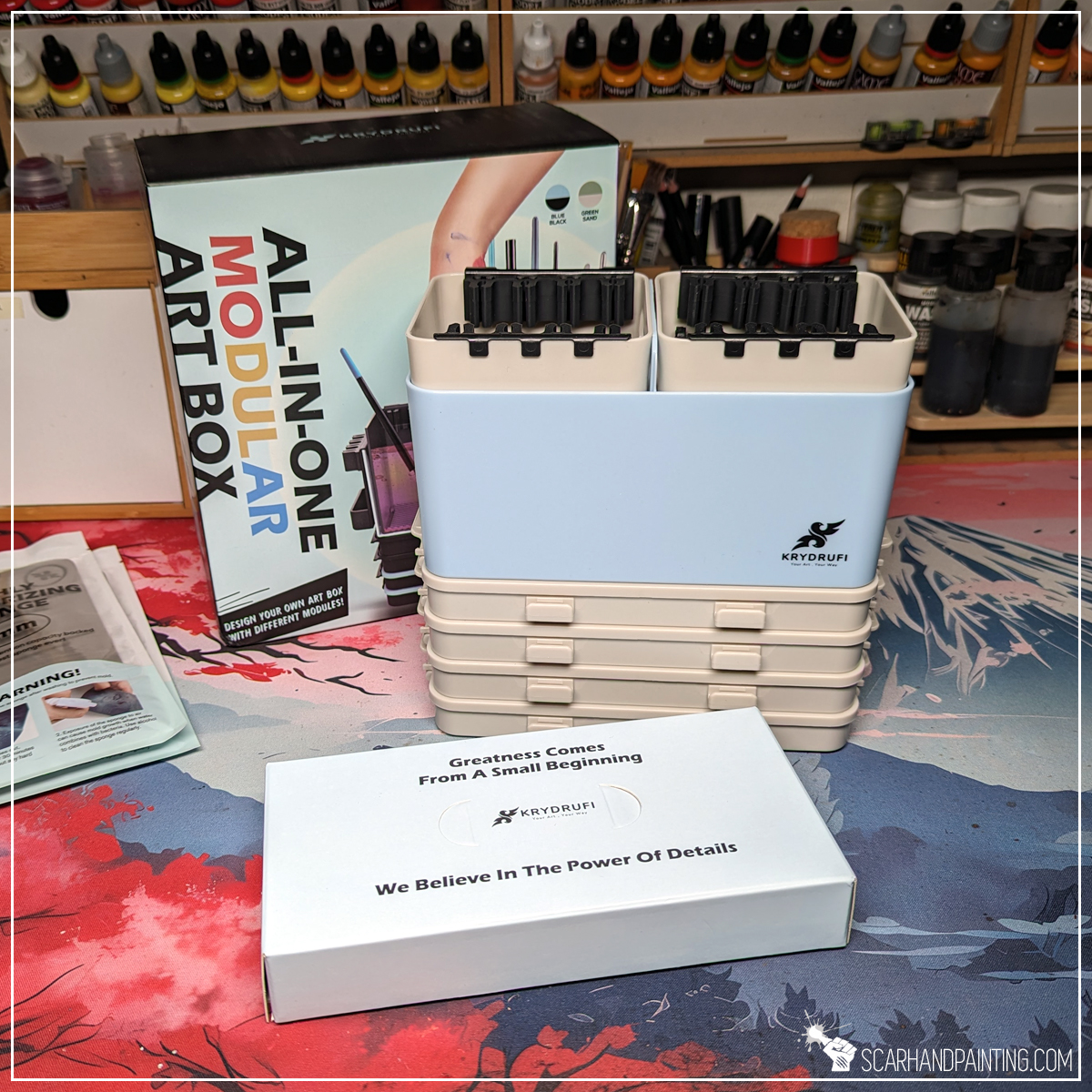
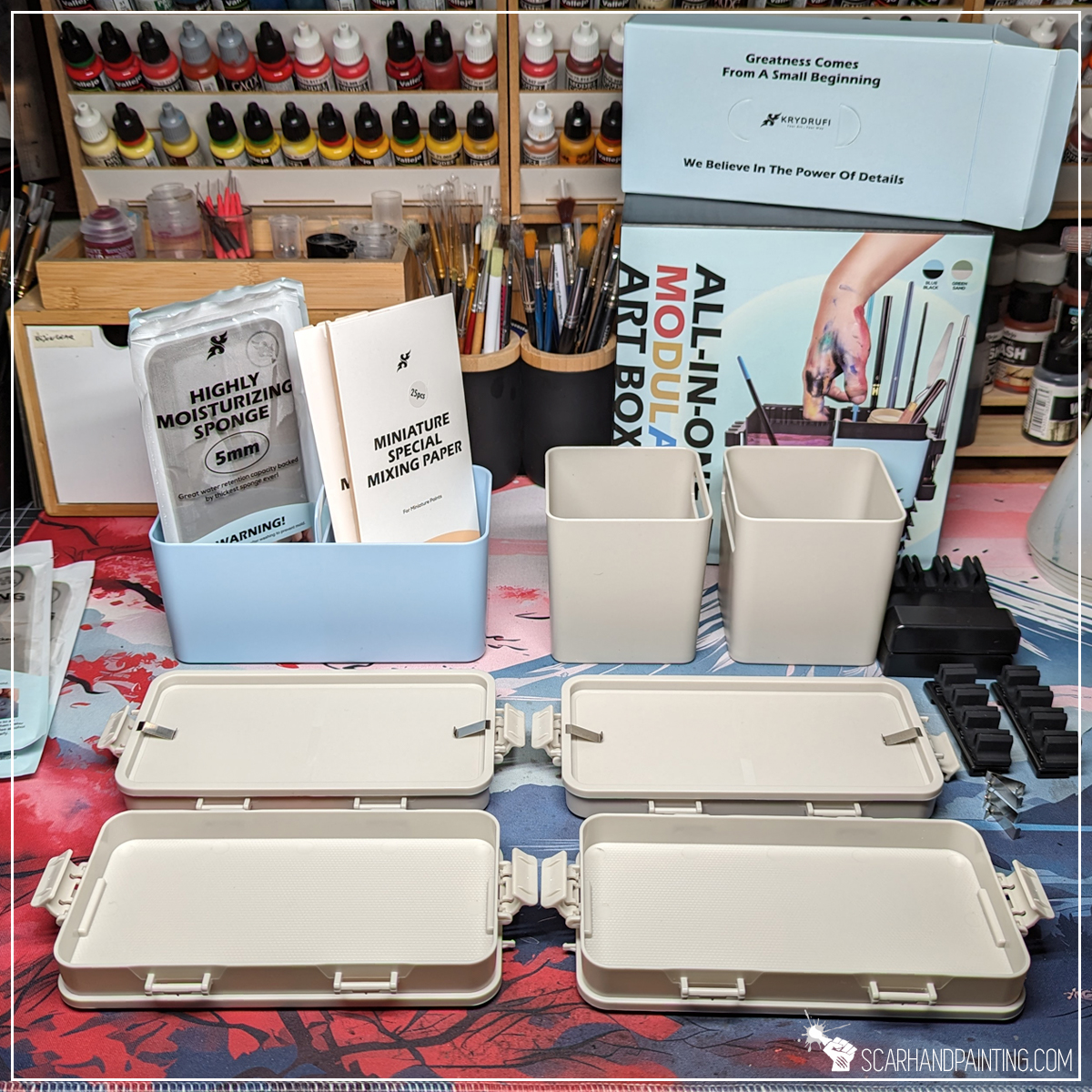
The All-In-One Modular Art Box comes with a variety of functionality. It usually consists of
* Large two-chambers Water Bucket,
* Two separate Water Tanks equipped with Silicone Brush Cleaning Inserts,
* A total of four Brush Holders,
* Two Airtight Paint Storages,
* Two Wet Palettes with a 5mm Sponge and Disposable Palette Paper supply,
Important note: My Item arrived in Ultra – Wet Palette Only Kit variant with two Paint Storages replaced by additional Wet Palettes. I would love to test the full functionality of the box, especially because four Wet Palettes seems like an overkill, and am now looking for an excuse to purchase additional Paint Storages.
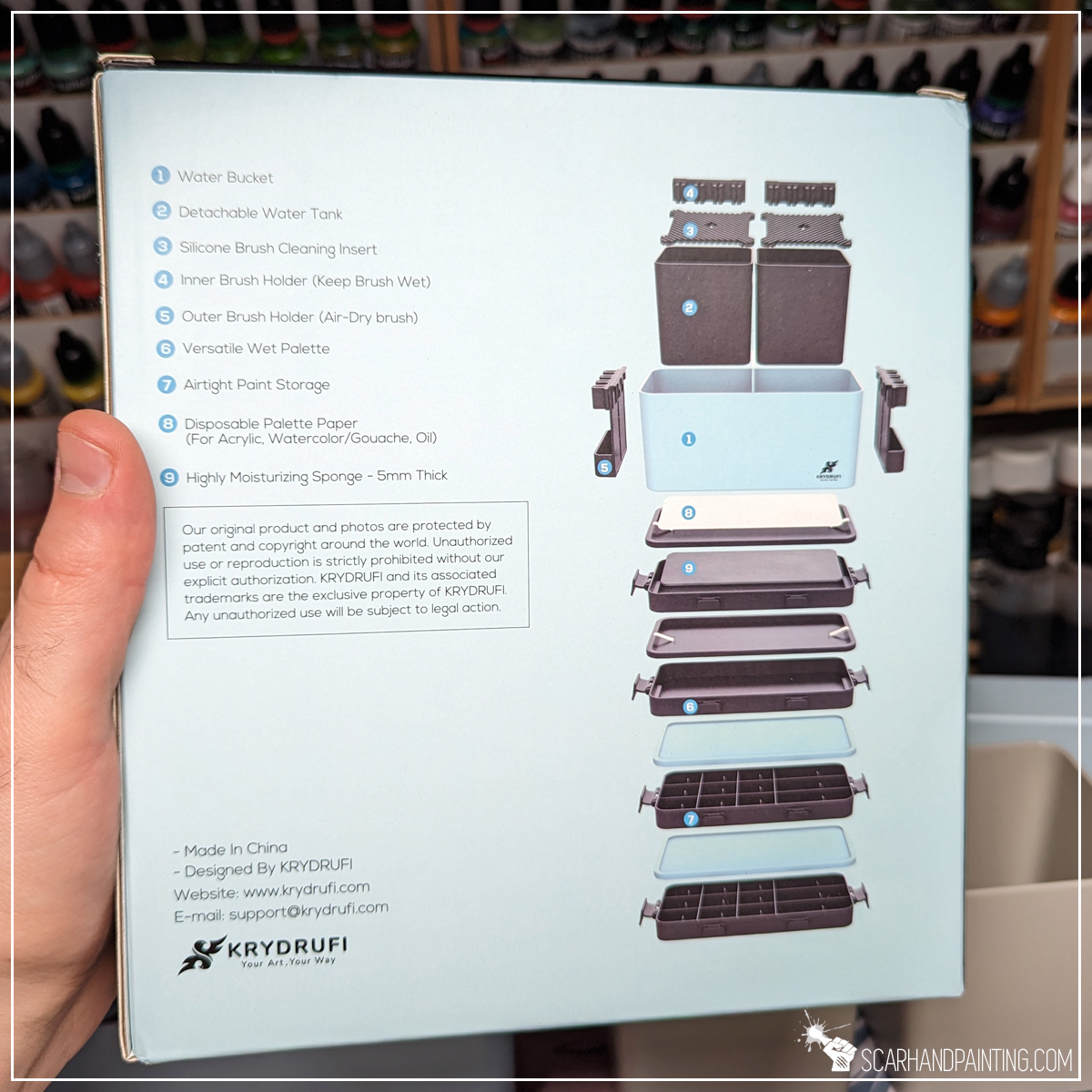
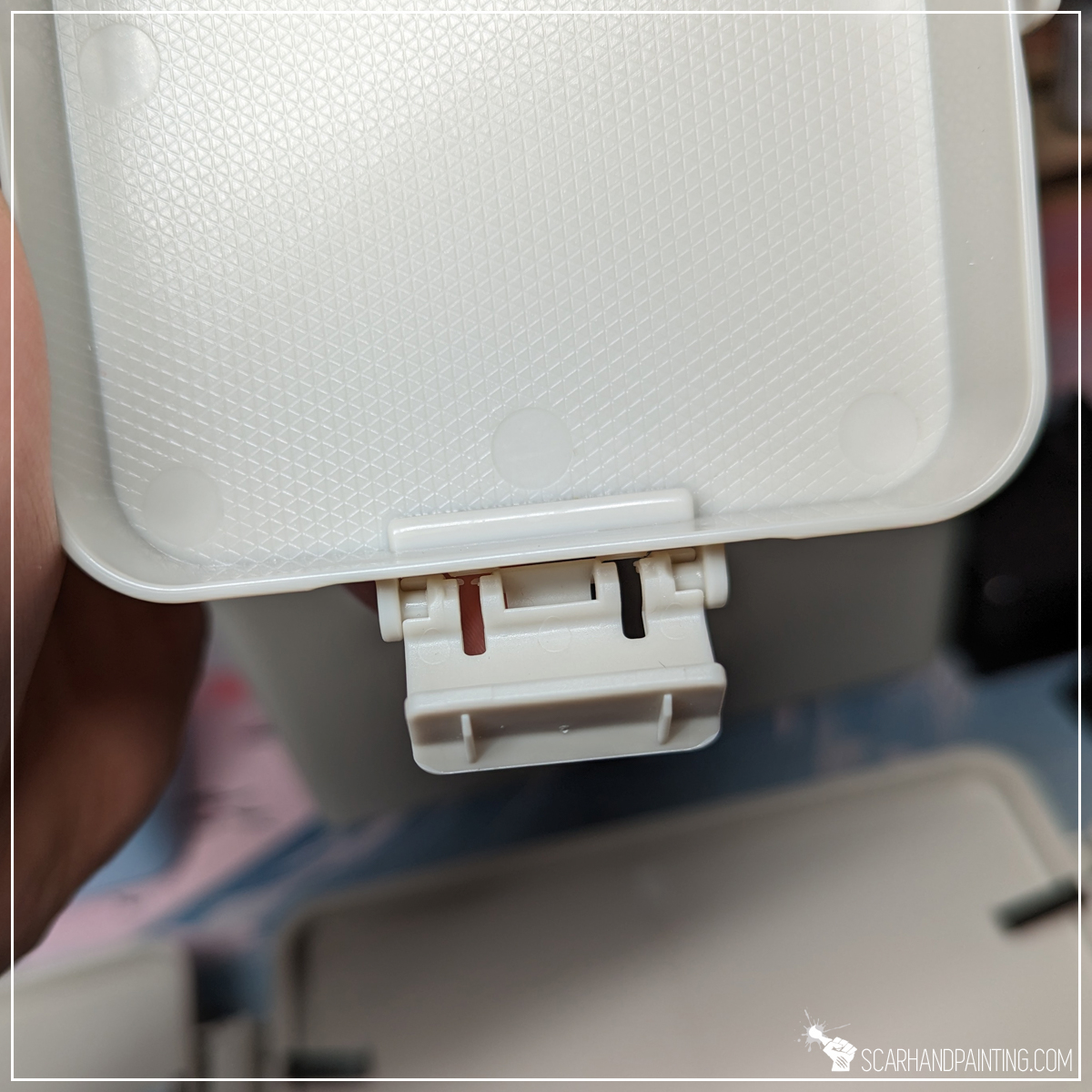
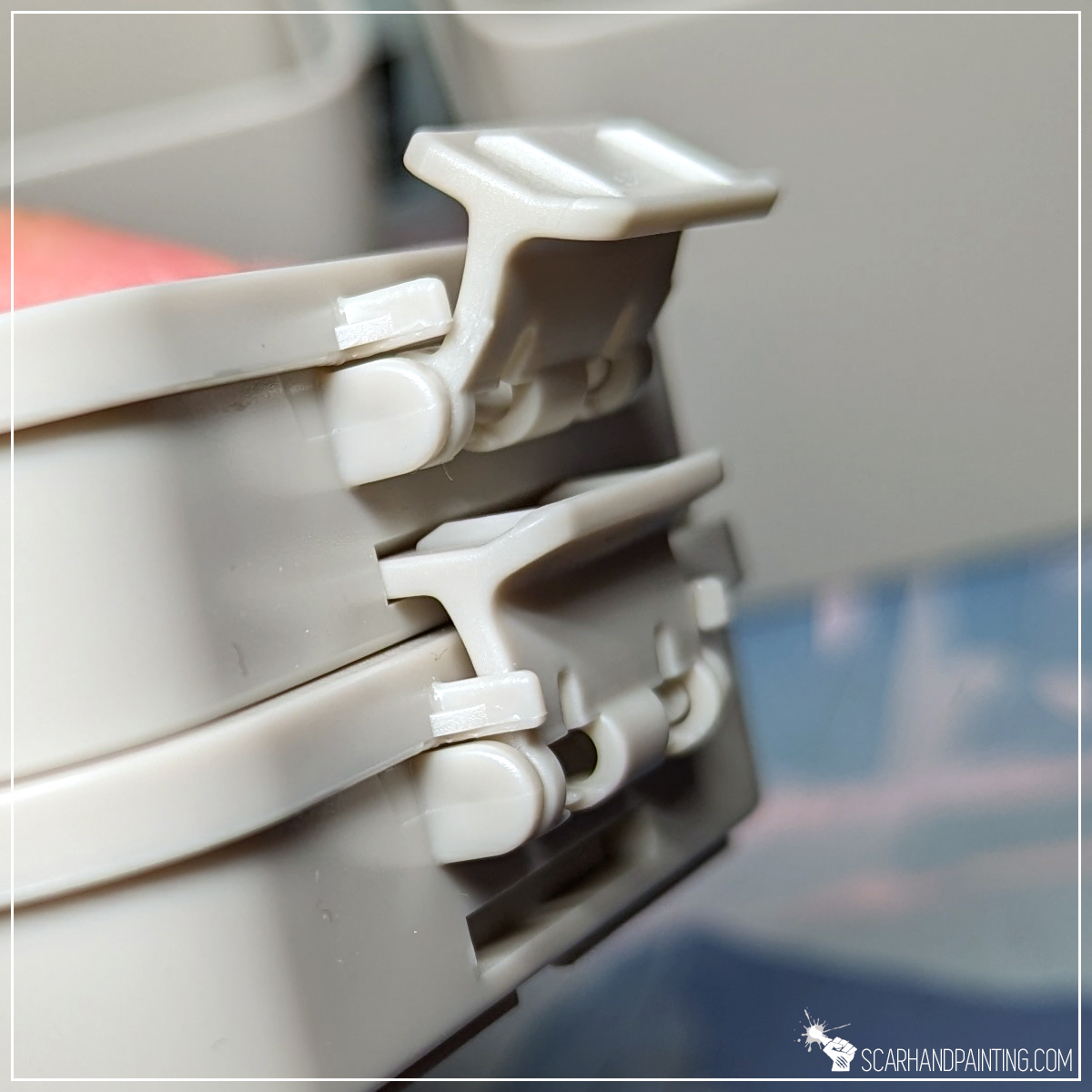
After taking the All-In-One Modular Art Box outside and painting miniatures in the garden, I can genuinely say that I am impressed by the plethora of functionality squeezed into this single, relatively small product.
As someone used to working long painting sessions, I am especially fond of a large Water Bucket. Thanks to the separation through the middle, the Water Bucket, combined with two Water Tanks, results in less time spent on replacing dirty water and more time spent on actual painting.
Probably the most ingenious of the entire set are the Brush Holders, especially the two with small containers at the bottom. No need to worry about messing up the table in a hotel with a dripping wet brush – these puppies have you covered!
Two Brush Cleaning Inserts are a cherry on top. Not everyone will appreciate them, but I’m one of those painters for whom this is a perfect brush cleaning solution.
Finally, all these things fit into the Water Bucket to get carried as a whole, or just save space on the workbench between projects – what’s not to love about it?
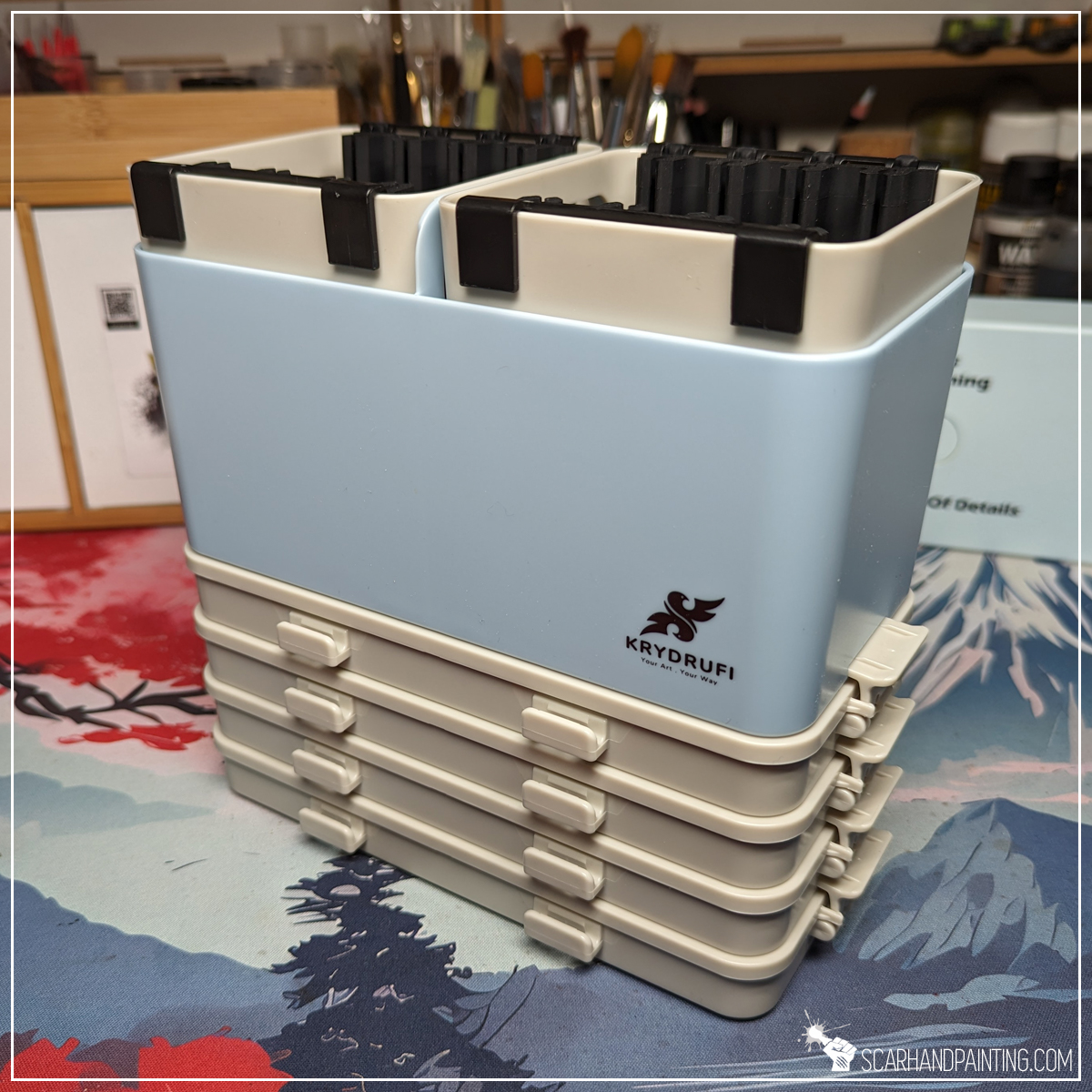
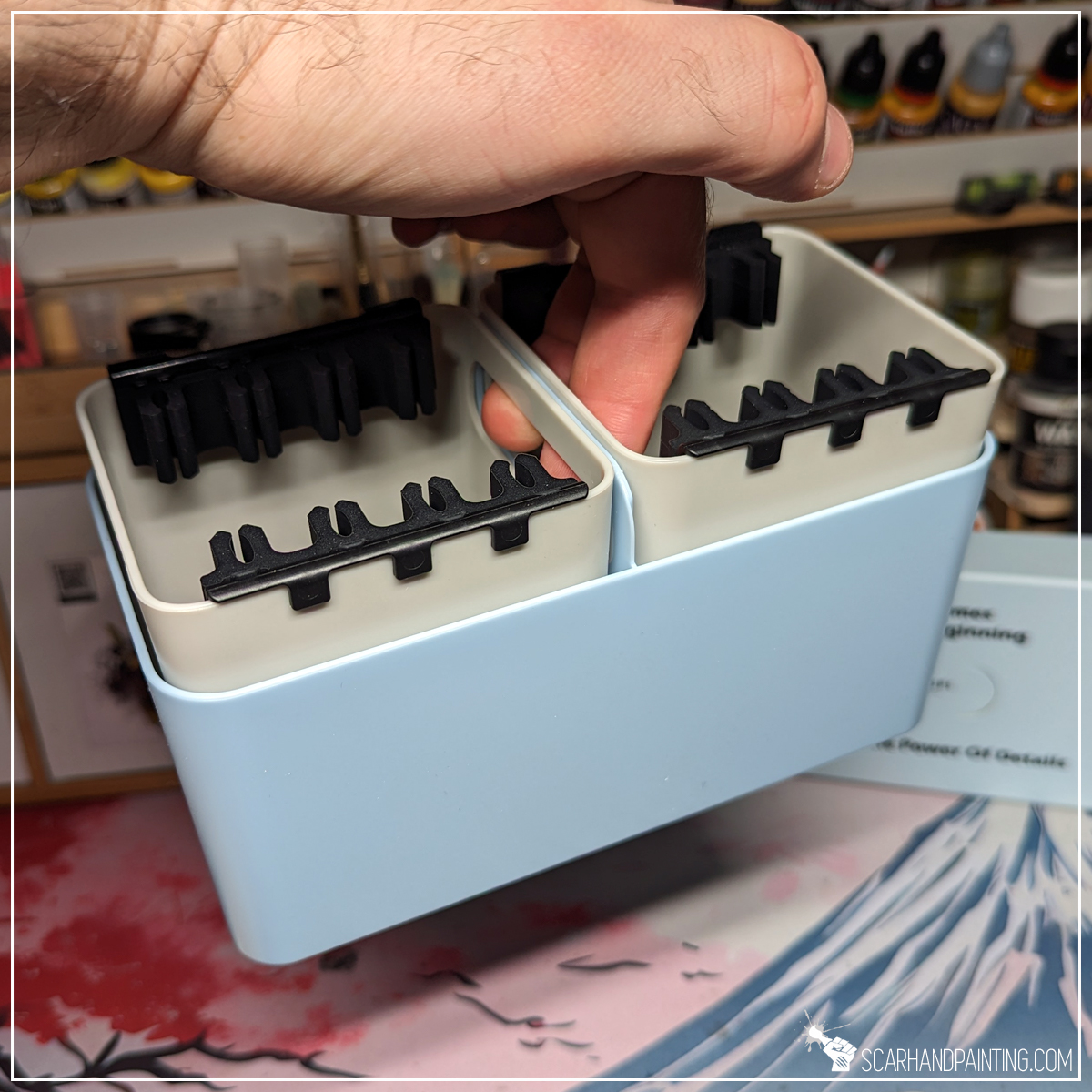
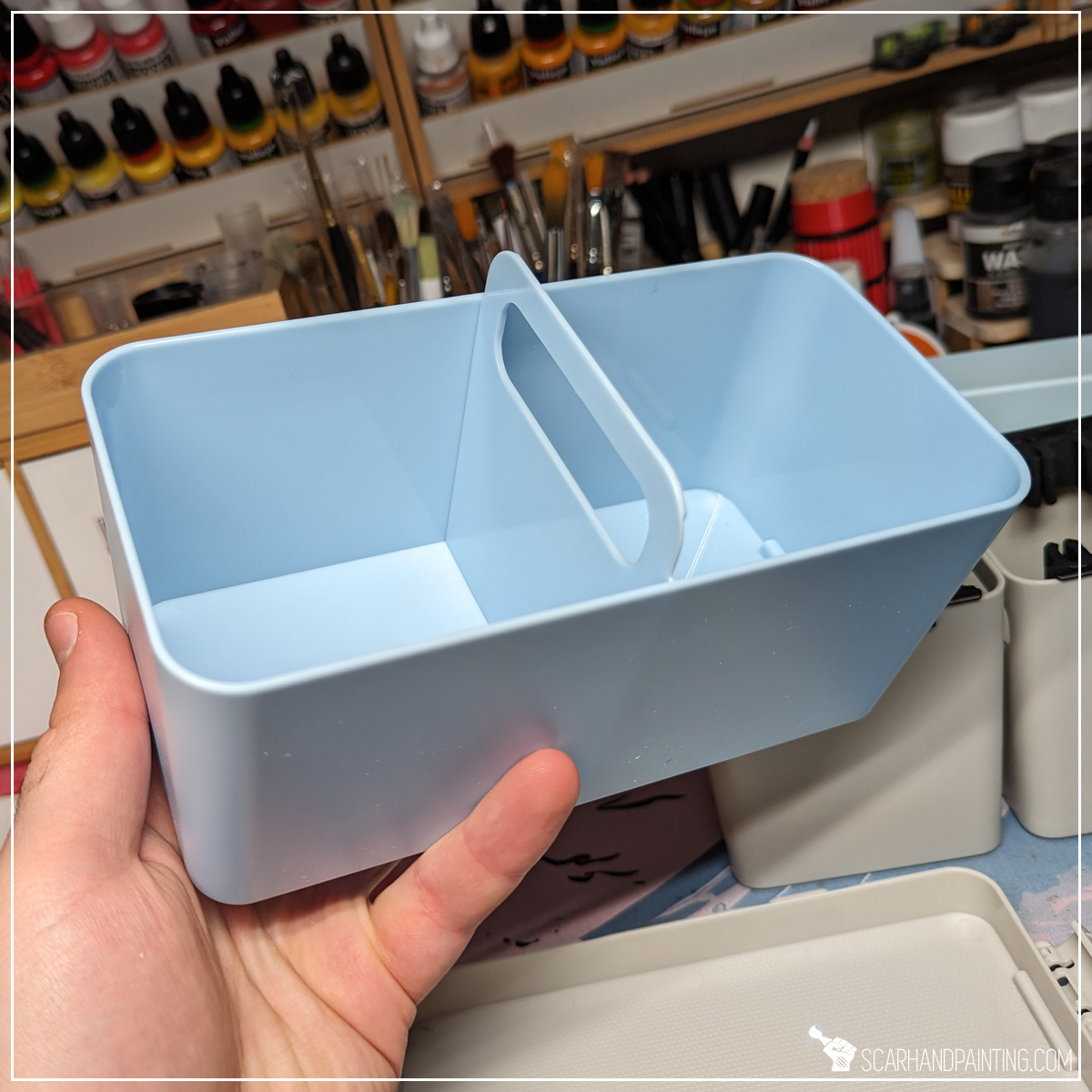
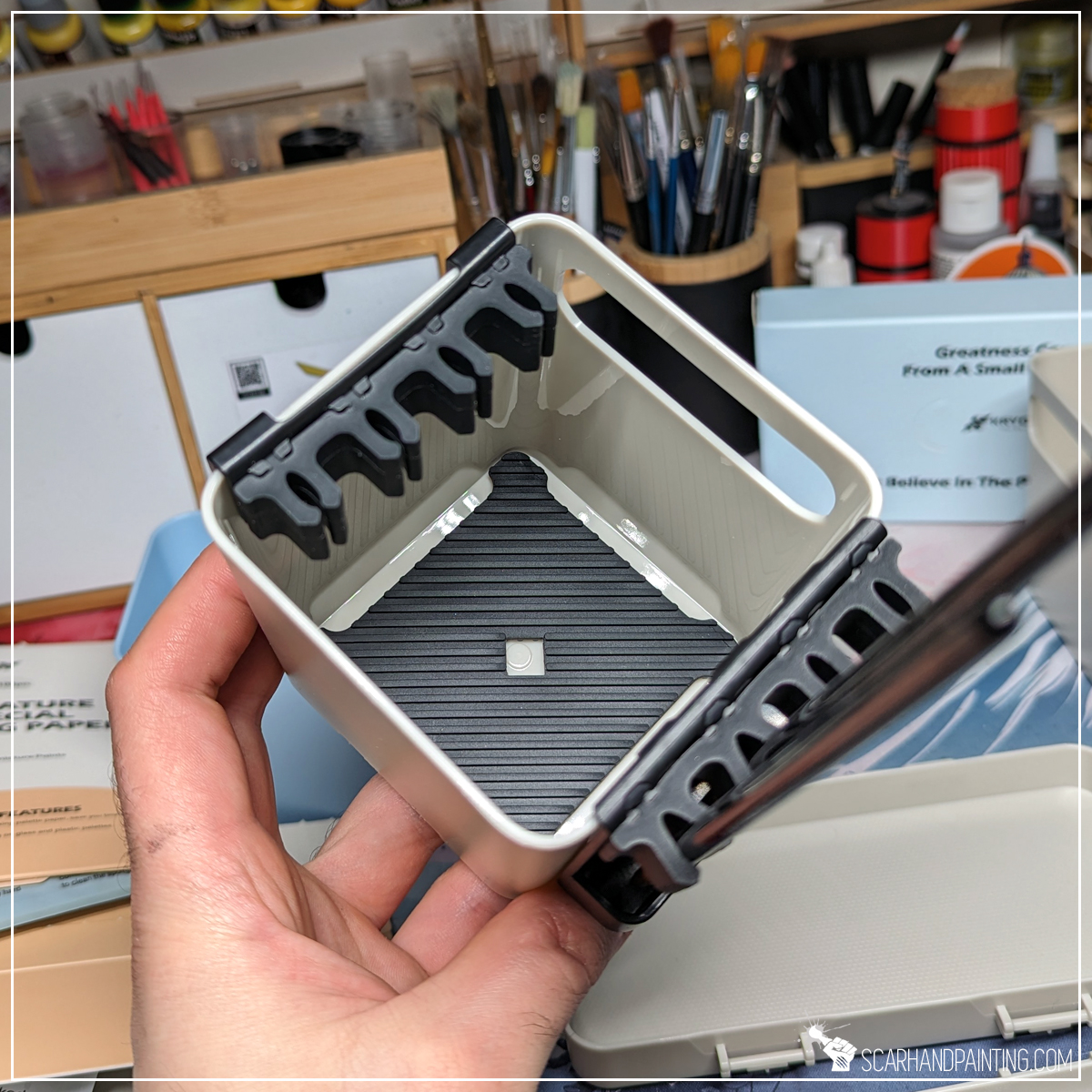
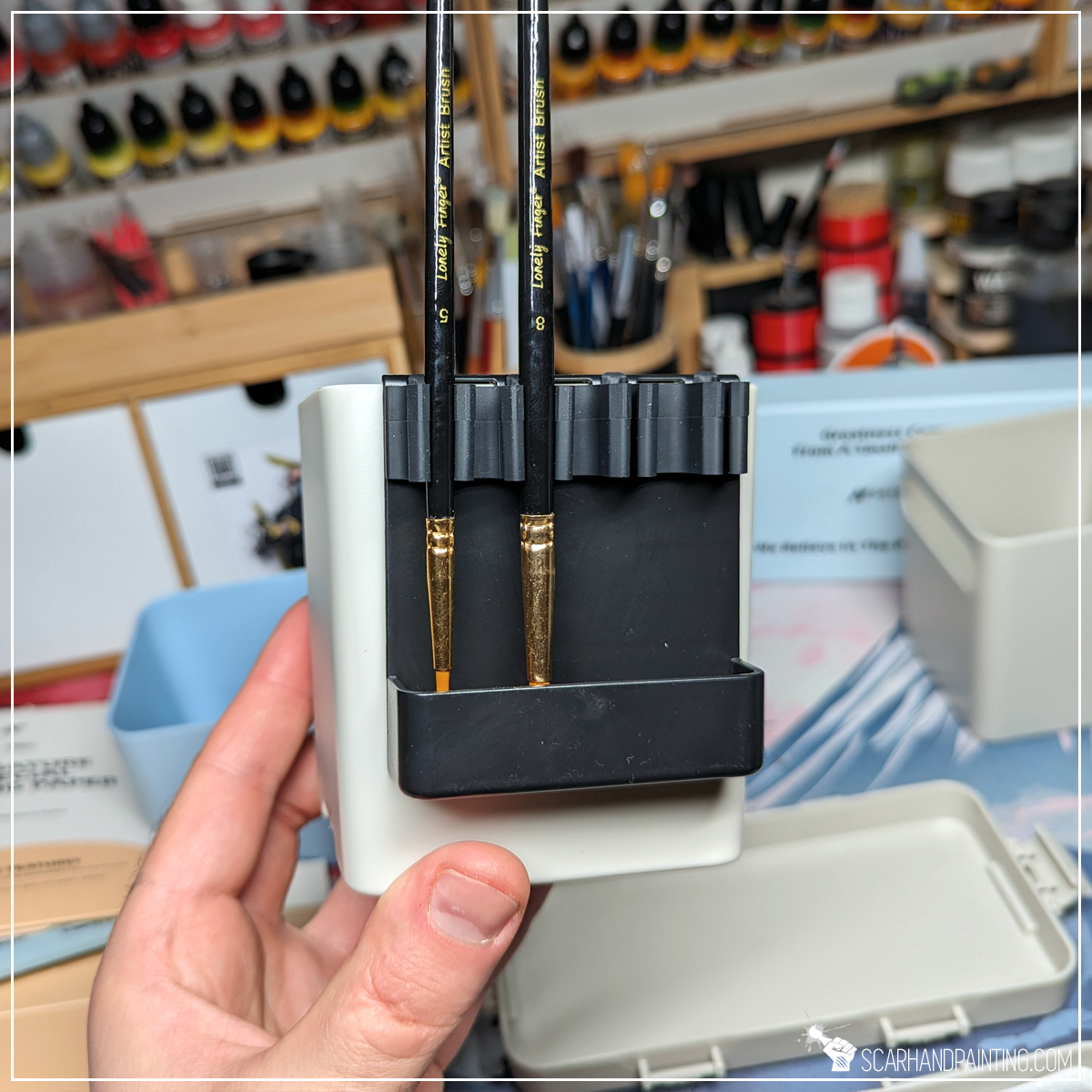
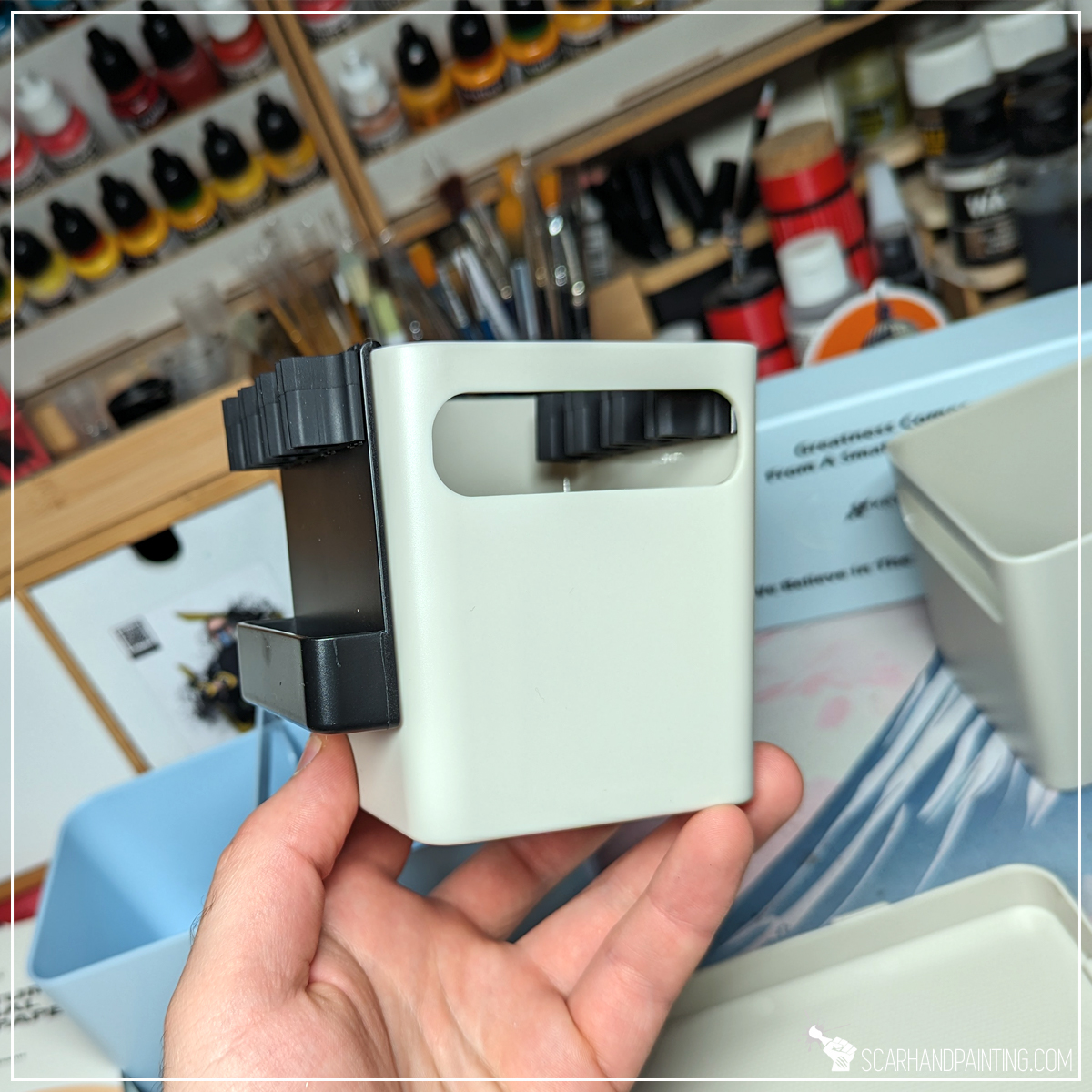
Apart from the obvious, being able to adjust the number of lower modules and then stack them via special side clamps to carry the whole thing around is just brilliant. I can easily imagine combining two sets into one giant stack, while leaving one fully equipped upper part on the in-house workbench. As for the clamps, they are pretty hard to unlock and I am not sure as to how they would perform in the long run. Plastic seems somewhere between brittle and solid, only time will show if it loosens up or breaks.
For those of us pre-planning the paint job, the Airtight Paint Storage seems* like a perfect solution to save space on travel via pouring a bit of each required paint into an individual slot, instead of carrying each bottle separately.
*Seems, because I was not able to properly test these myself.
Last but not least, I don’t know about you, but me personally – I love to keep particular tools in one place. I would imagine the stackable Wet Palettes will suit multiple painting projects perfectly and save space on the working bench. Not to mention spare paper clipped on top and in between the Palettes, rather than kept separately.
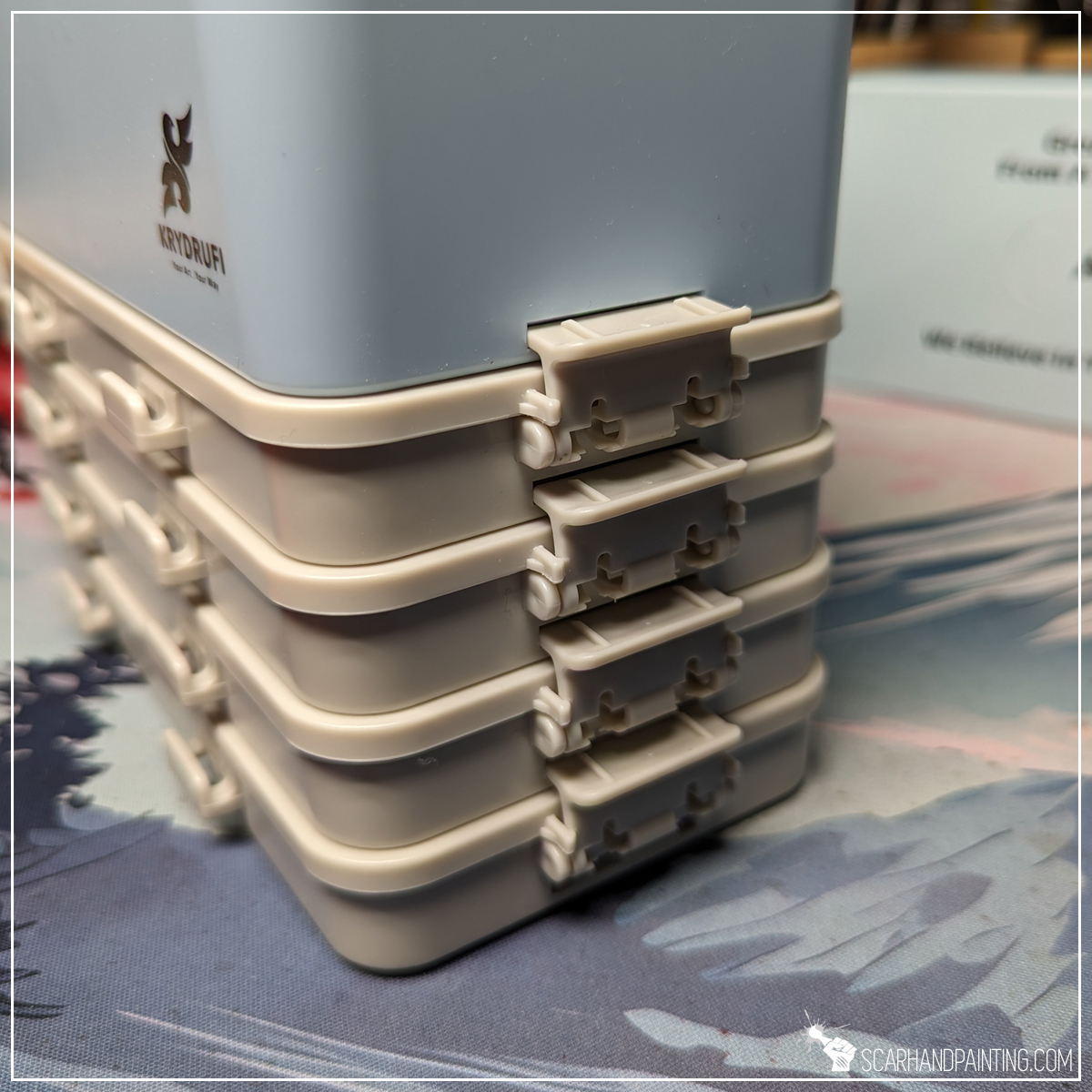
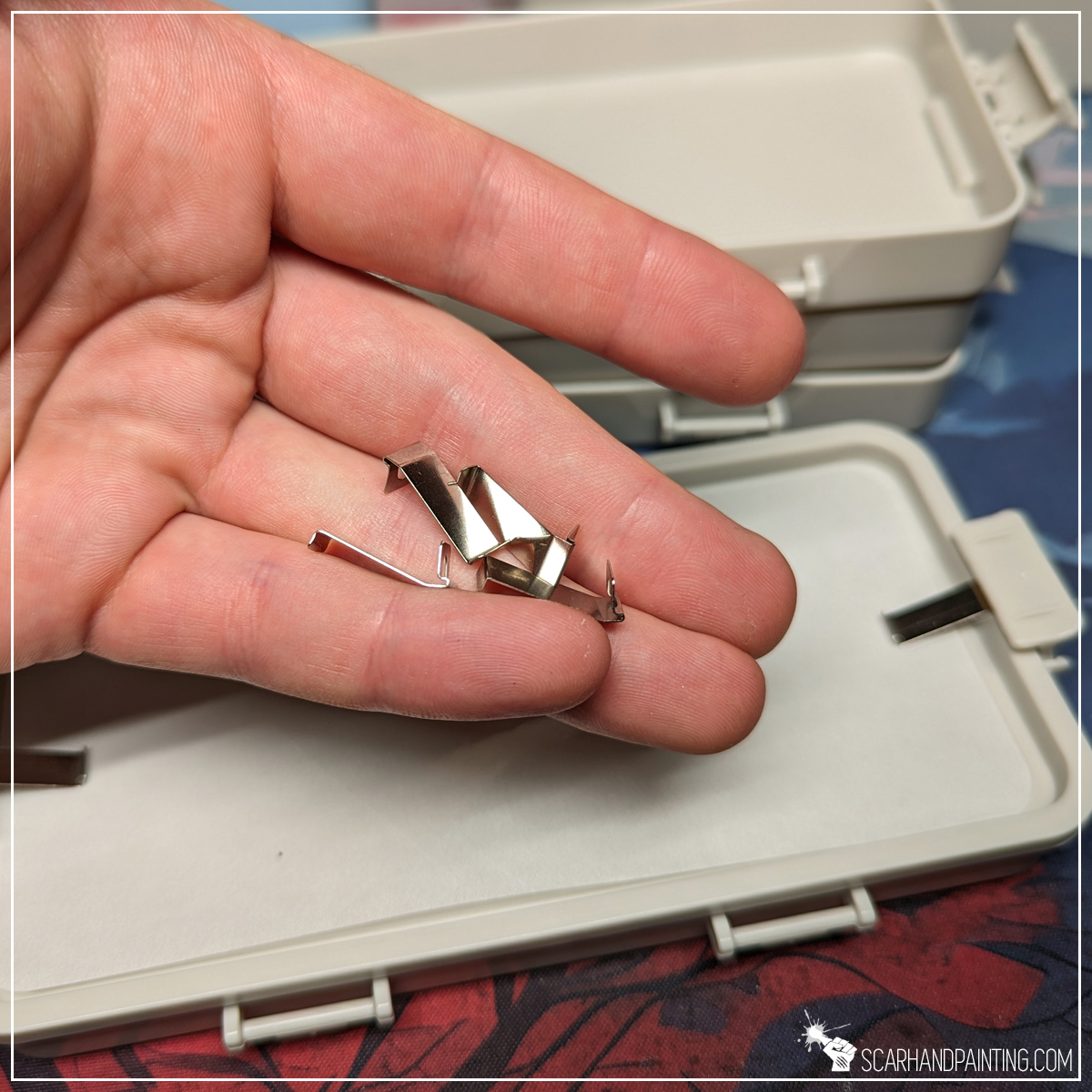
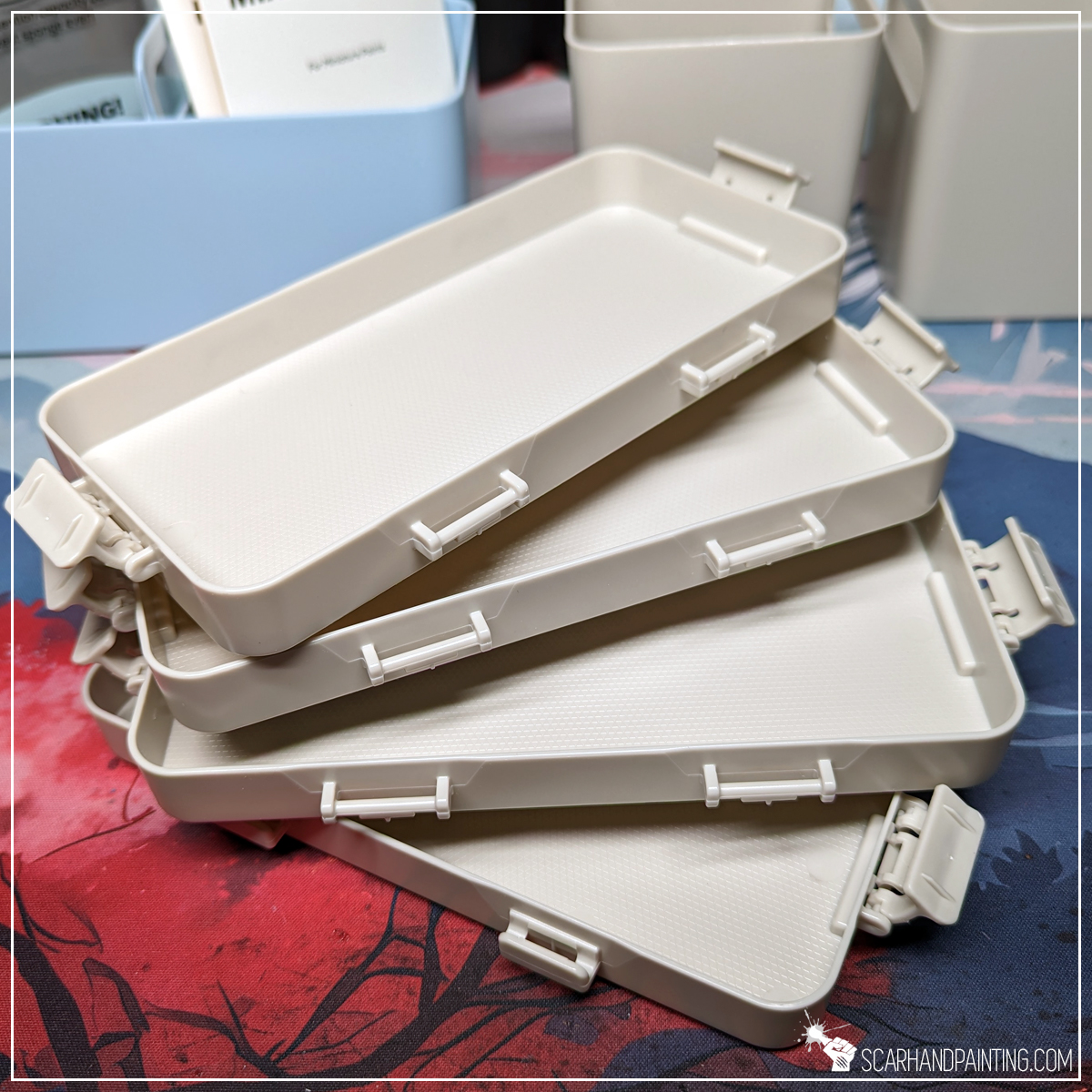
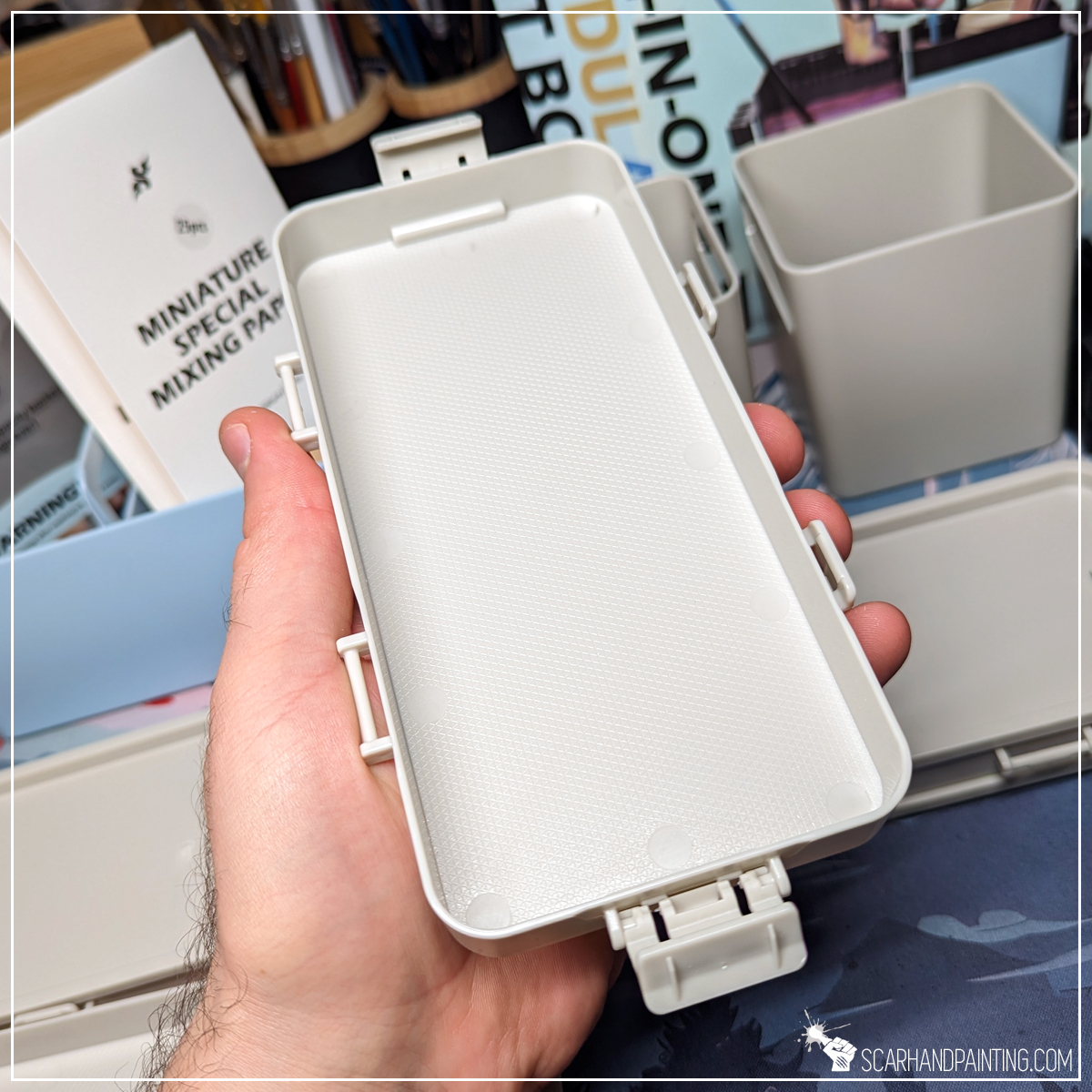
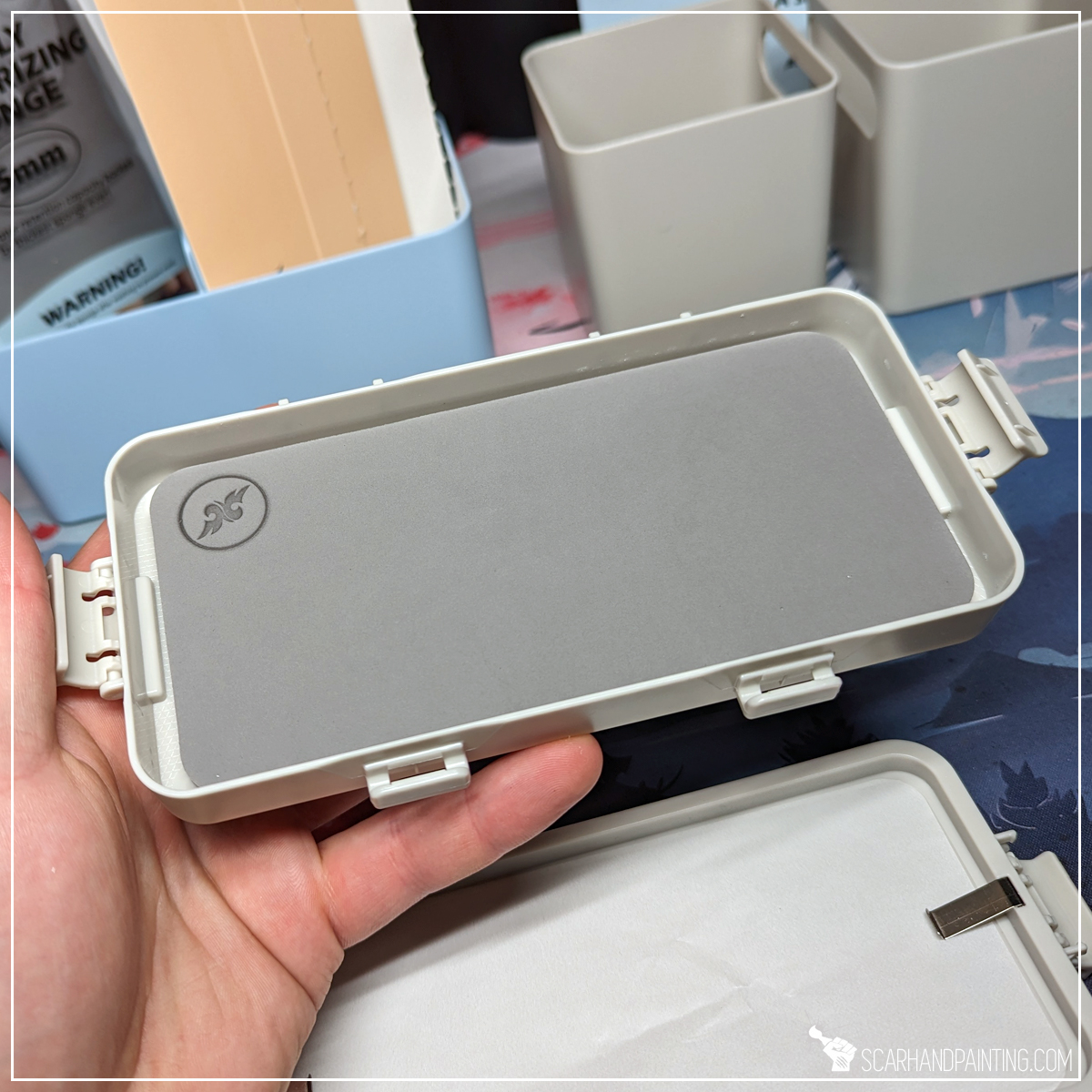
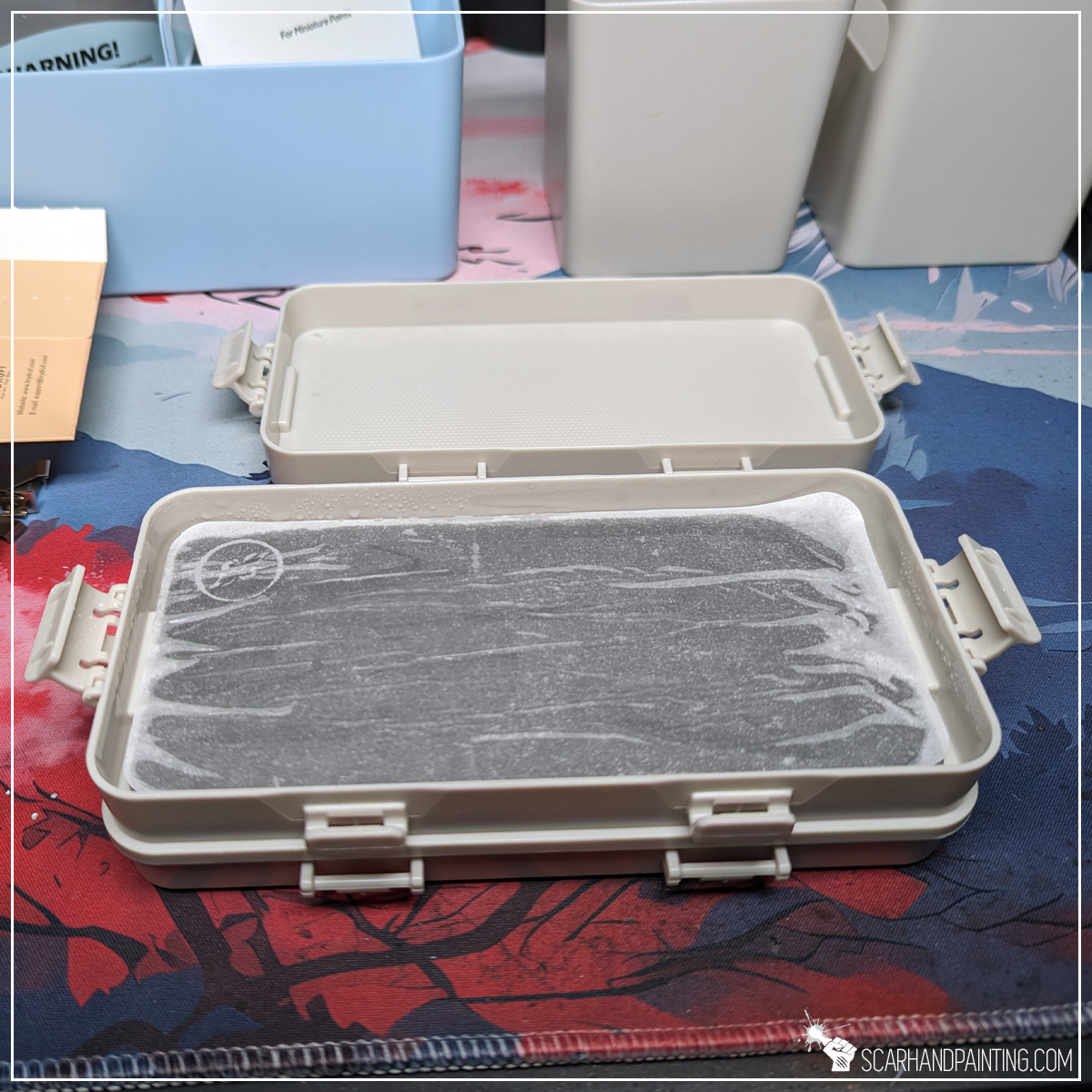
The set comes equipped with a Highly Moisturizing Sponge for each Wet Palette and a stack of Disposable Palette Paper. The quality of both seem on par with items from other suppliers I worked on previously. They seem to be pretty durable, but can also be resupplied from the KRYDRUFI online store if needed.
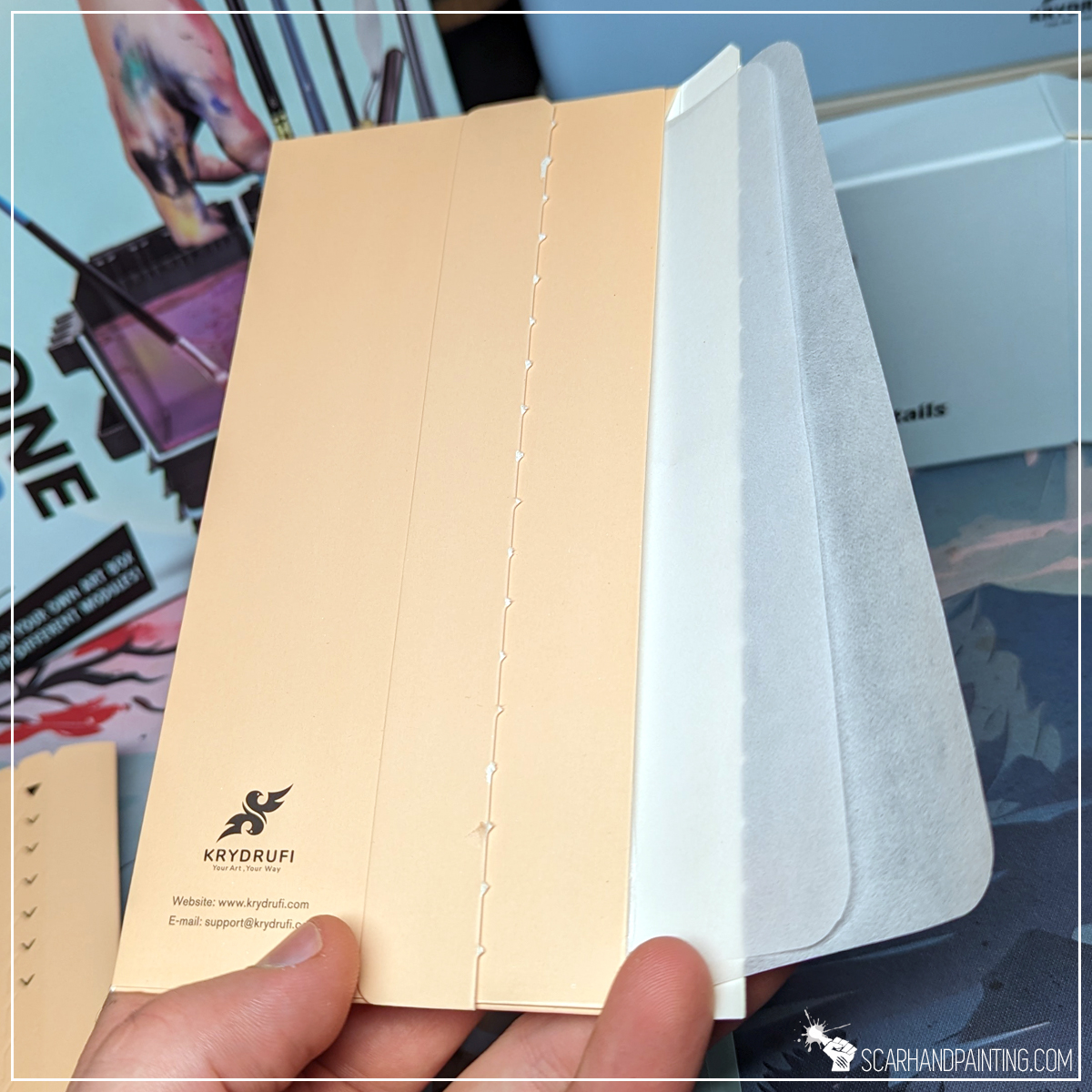
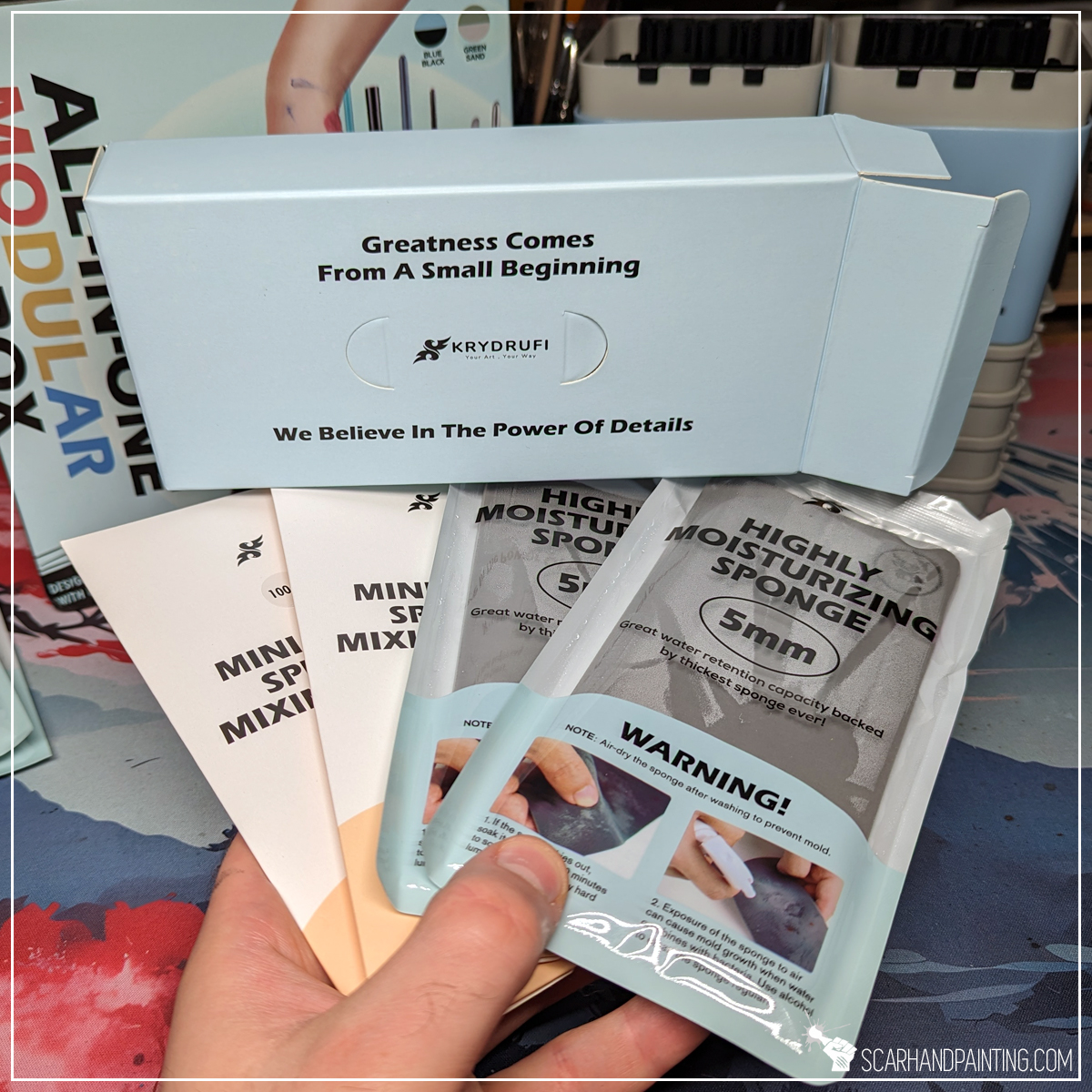
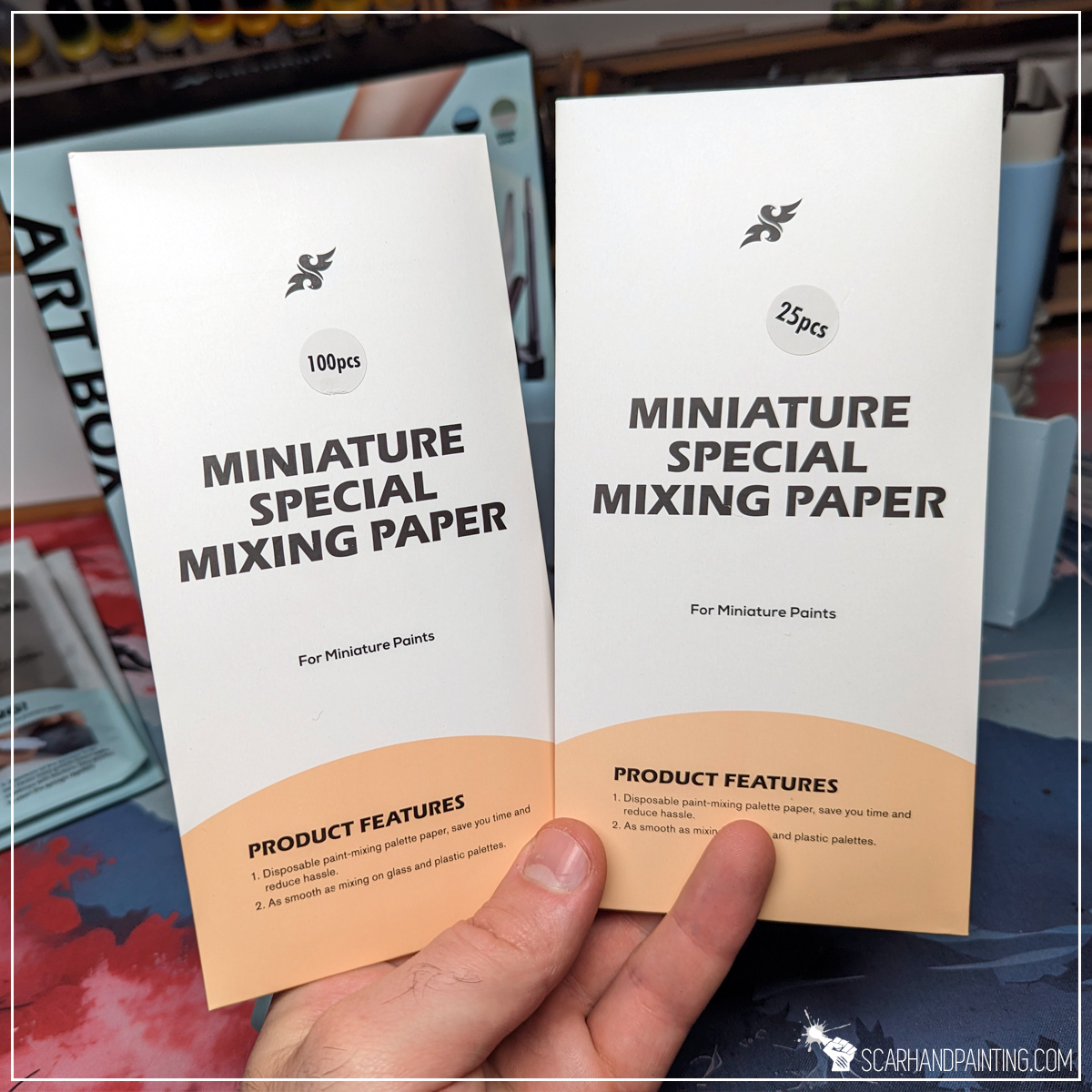
In my opinion the KRYDRUFI All-In-One Modular Art Box embodies the All-In-One aspect completely, offering a variety of functionality and modularity. Most importantly it comes in a very compact, space saving form, which for many might be the deal breaker. The price varies between different $20 USD for the entire upper module (KRYDRUFI Cleaning* Brush Holder Module) to about $46 USD for the full set (KRYDRUFI All-In-One Modular Art Box Ultra). Personally I’m happy with my ‘box of goodness’ and plan on expanding it. Pricing seems fair for what it offers imho.
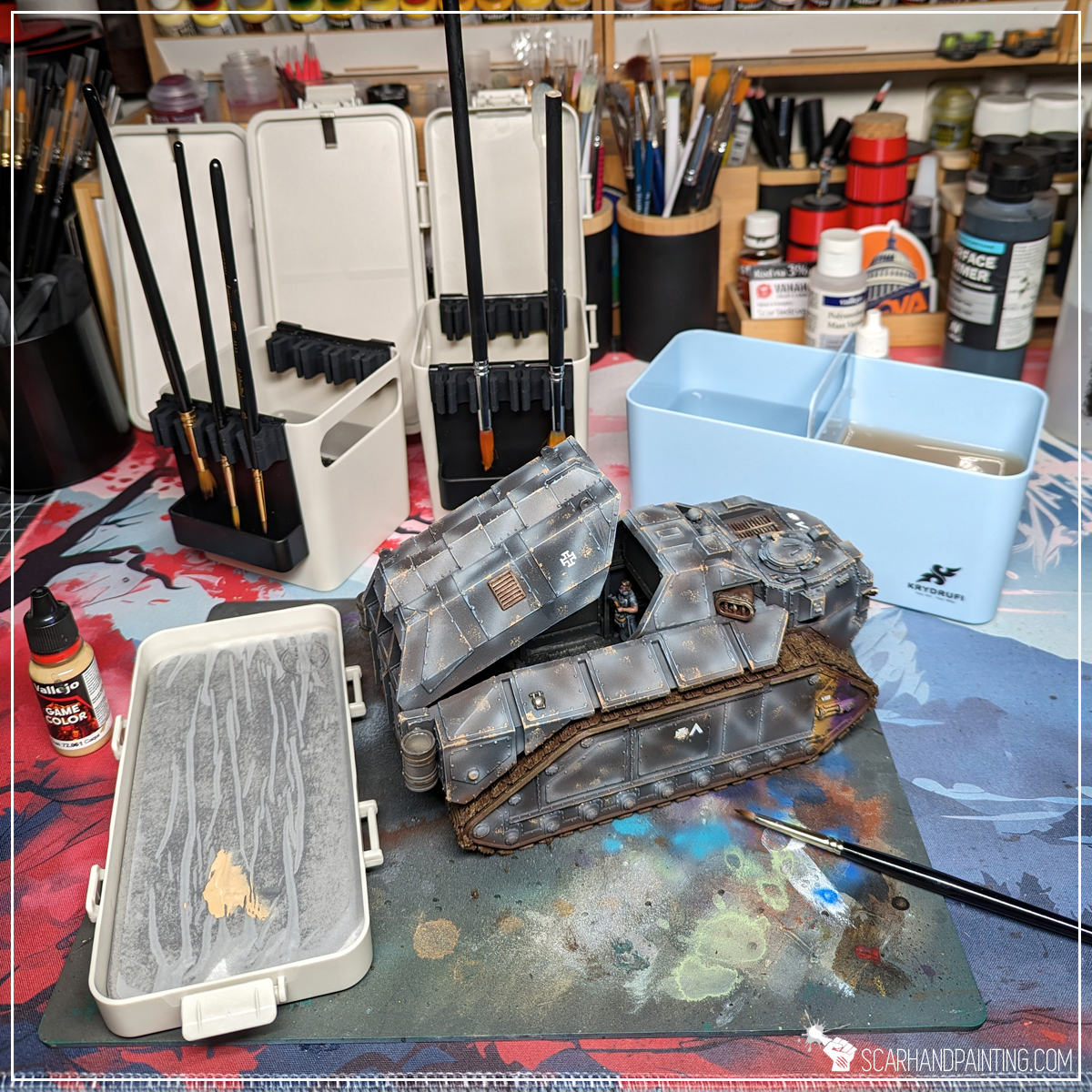
The item is available directly from KRYDRUFI online store and you can get a 10% discount by using my link and the code KRYDRUFI-SCARHANDPAINTING on checkout. More so, if you do, I will get a 10% commission thus not only will you save but also support my little hobby endeavor. Seems like a win-win.
I hope you find this review interesting. Be sure to let me know your thoughts in the comments below, or at Facebook or Instagram. I would also appreciate it if you considered sharing this content with your friends, who might find it useful. Finally if you are looking for a professional miniatures painting service, be sure to contact me with this contact form. I always reply within 24 hours, after which please check out your spam folder.

Welcome to Painting Warhammer 40,000 Crimson Fists tutorial. Here I will present to you a Step-by-step of an easy and fast painting process for Games Workshop Crimson Fists Primaris Marines metal as can be seen in Gallery: Crimson Fists.
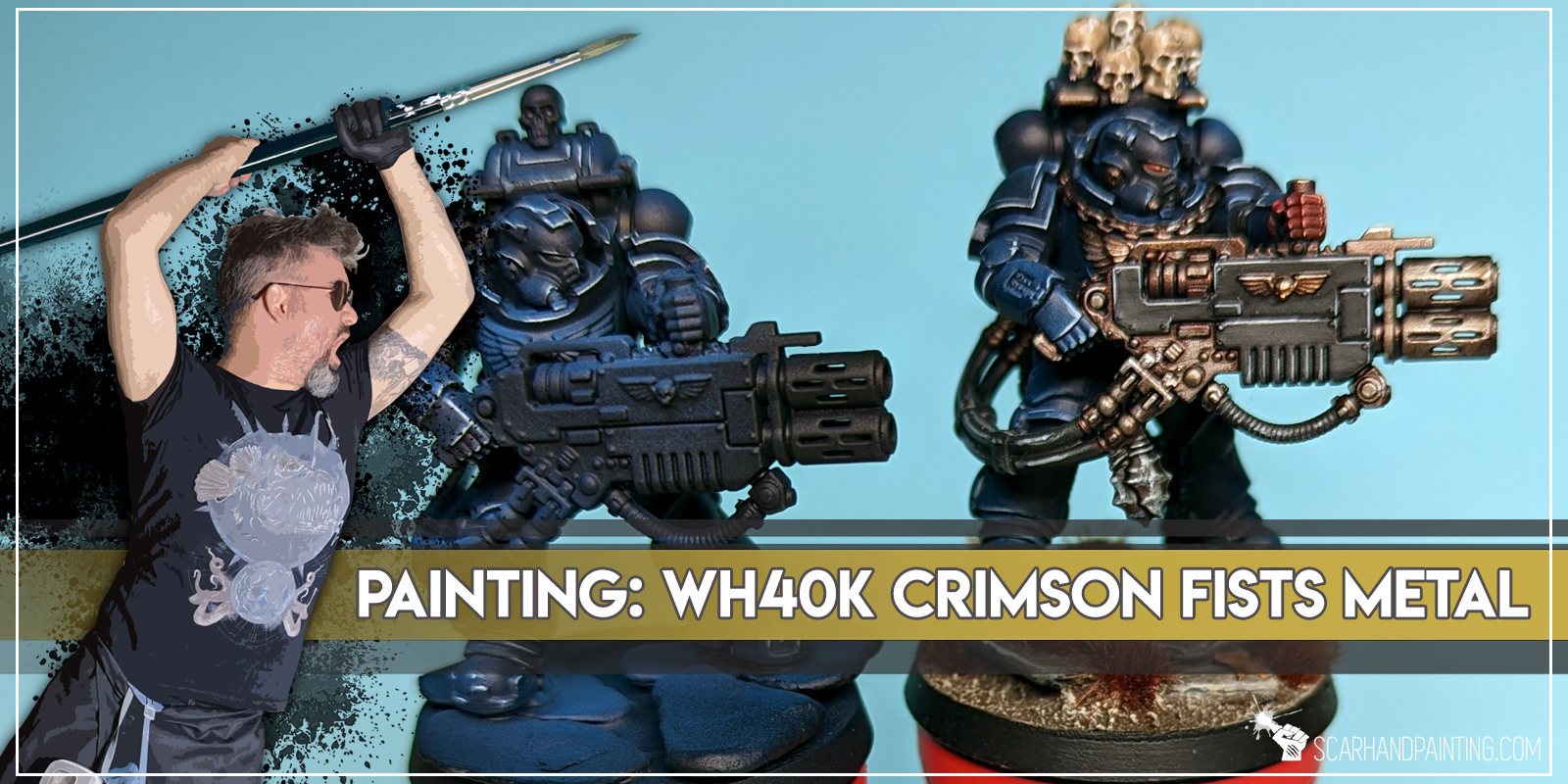
Before we start, some notes:
Previous steps: Blue Armor
Although metal elements can be painted separately I strongly recommend following part one of the article before moving to this color. Visit Tutorial: Painting Warhammer 40,000 Crimson Fists part one Blue Armor for more information.
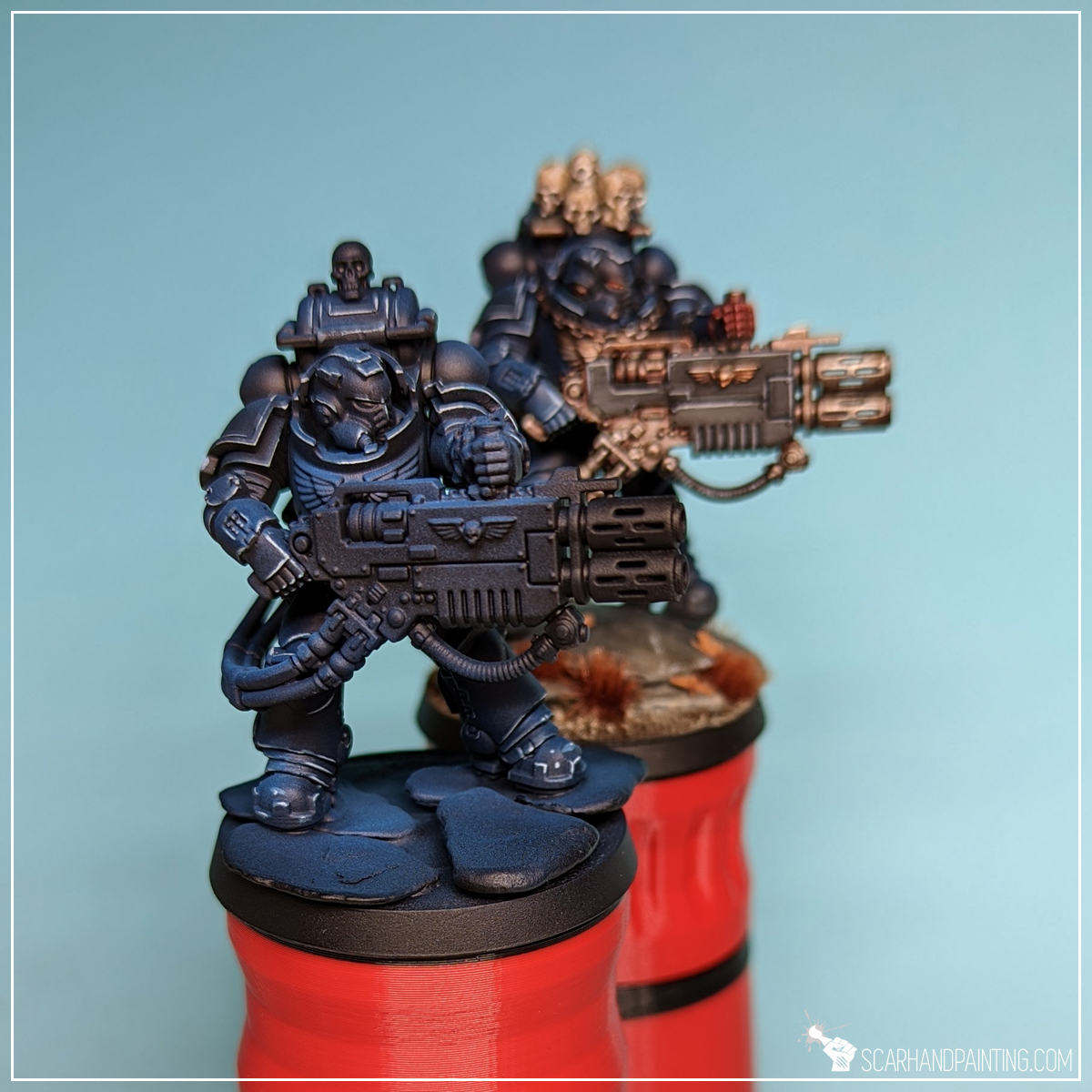
Step one: Base Color
The initial layer was painted manually (no airbrush) with Vallejo Game Color – Tinny Tin (72.060). The color is relatively thin making it easy to move into any recesses, but also maintains a strong coverage, which is good because covering the entire surface is imperative for this particular layer.
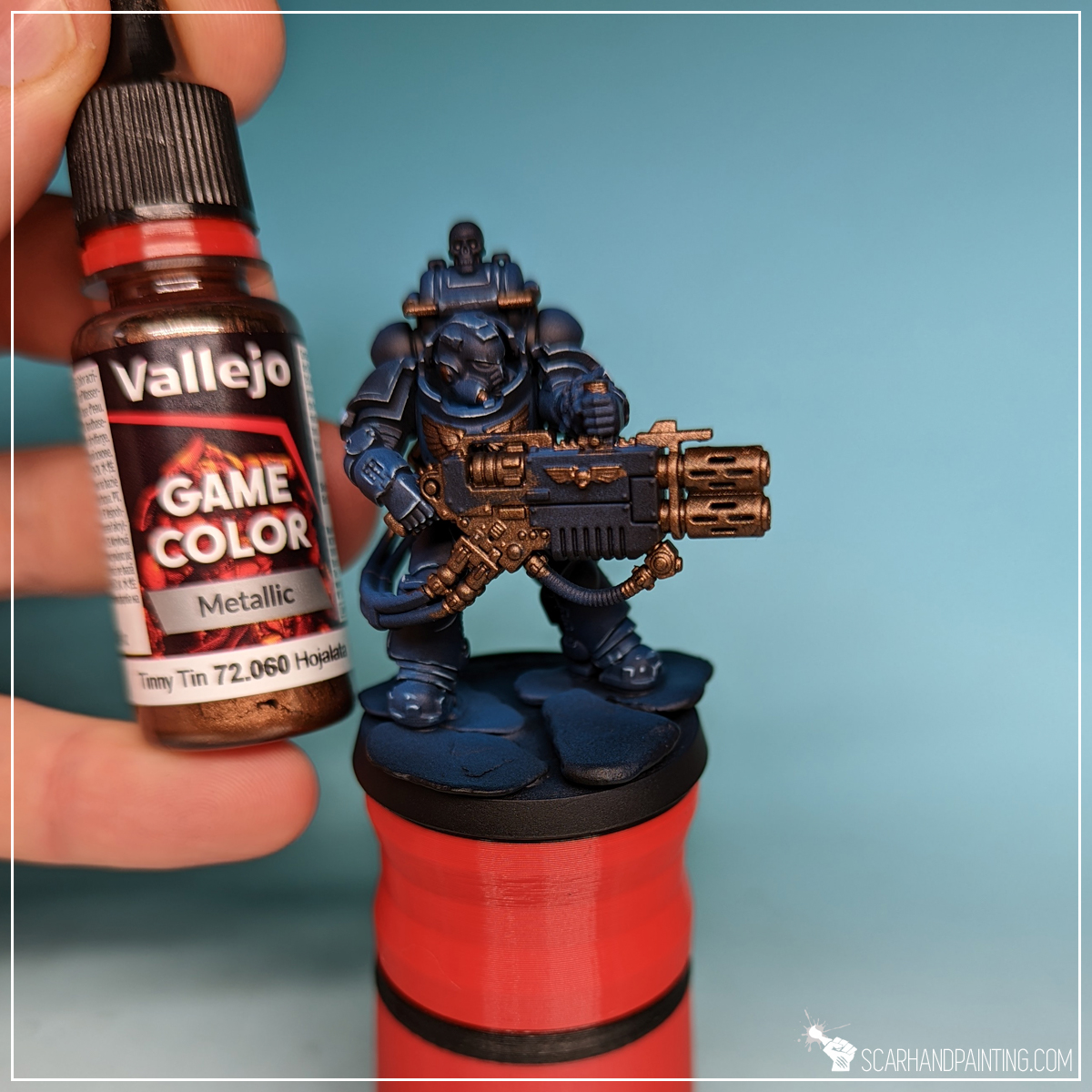
Step two: Highlight
Next I manually applied a large area (flatbrush) highlight of Vallejo Game Color – Chainmail (72.053). A much brighter steel color with strong pigmentation to cover most of the surface, except recesses.
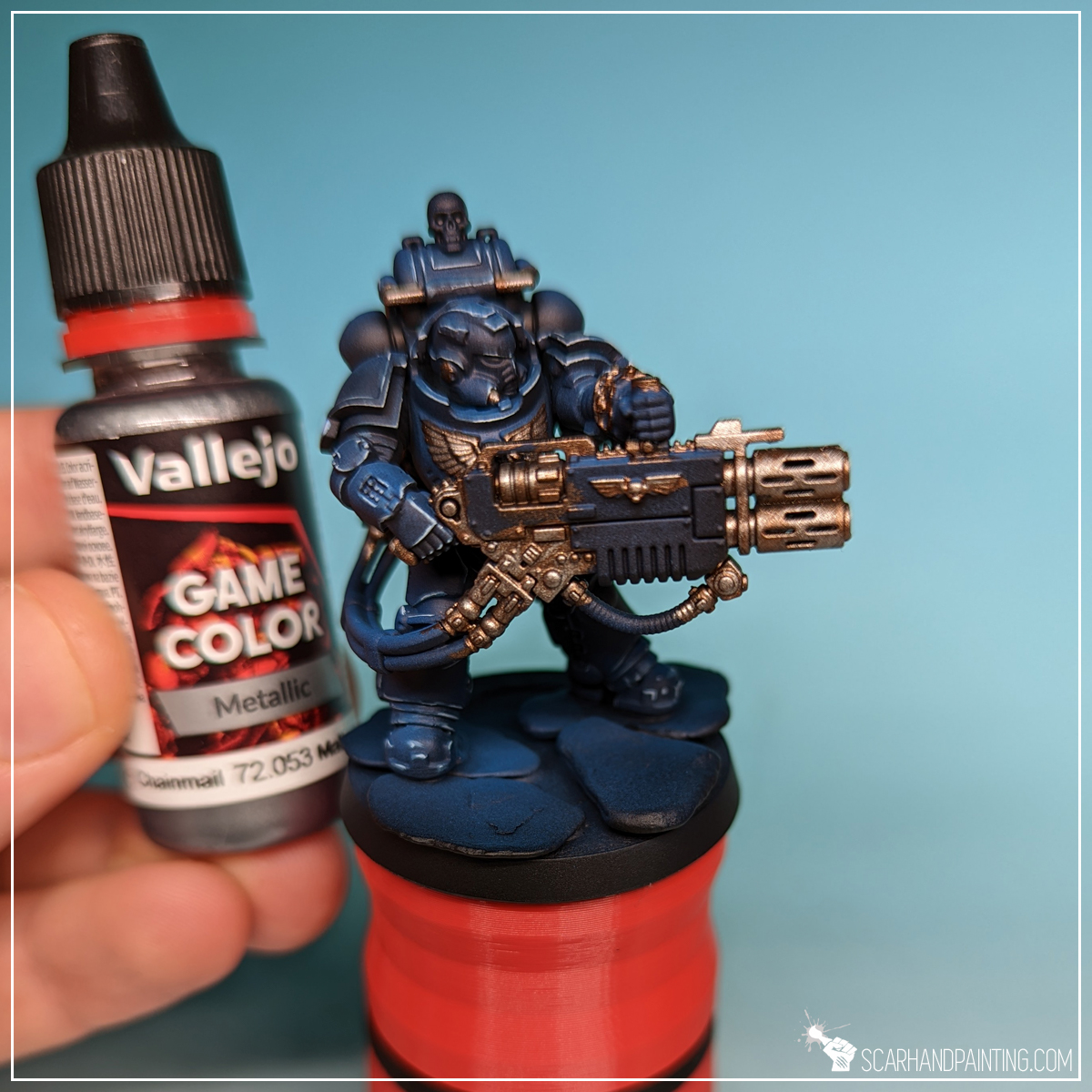
Step three: Highlight
I then applied a more contained highlight of Vallejo Game Color – Silver (72.052), switching between edge highlight and flatbrush.
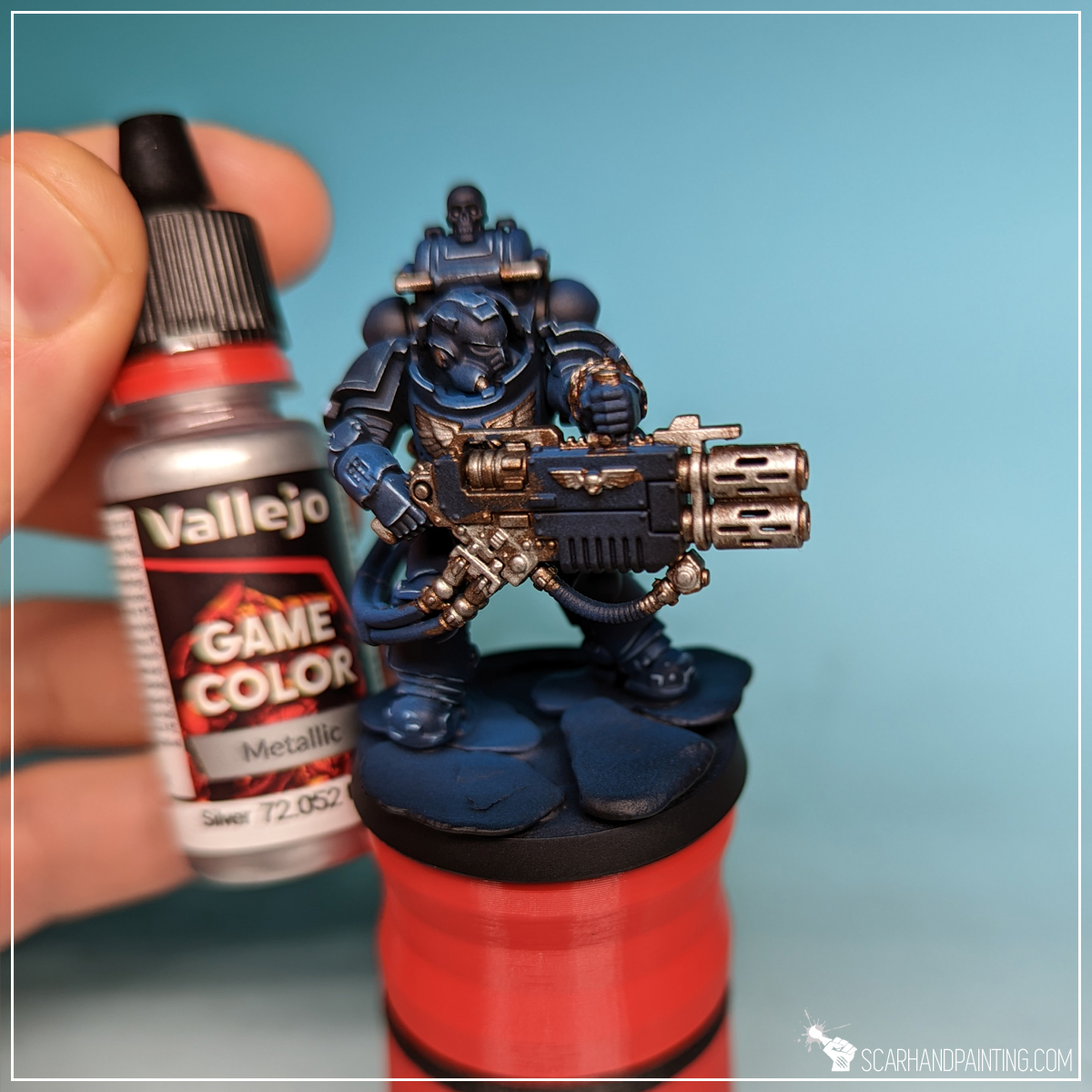
Step four: Wash
Lastly I applied a lot of The Army Painter – Strong Tone Wash. I like to go hard on washes, applying lots and lots of them to allow for pigmentation to do its thing.
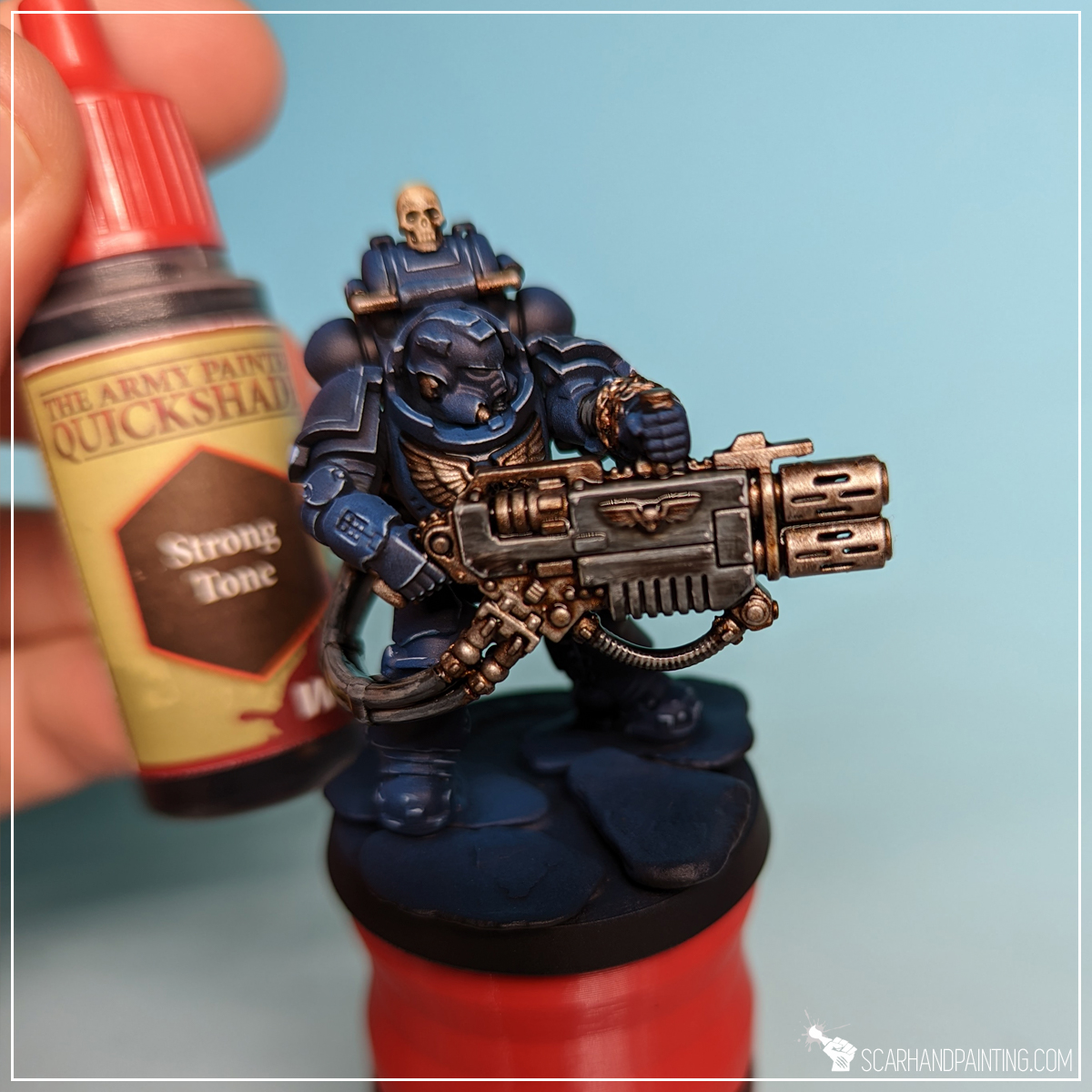
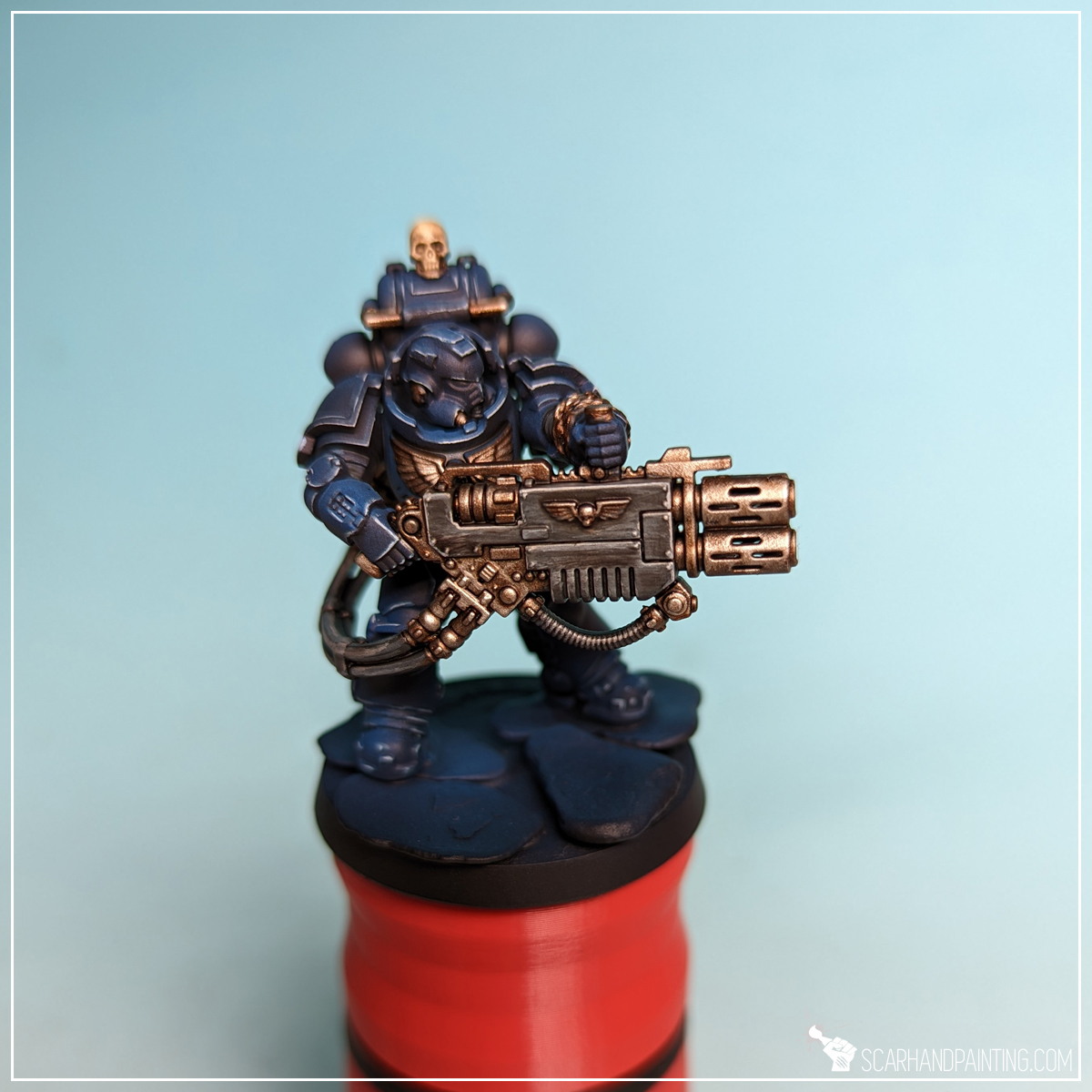
Extra Step: Final Highlight
Depending on the level of paint job I sometimes apply a final, soft highlight of Vallejo Game Color – Silver (72.052). This might work especially good for tiny detail such as chains, Imperial Aquila and similar, making steel look crisp and sharp. Unfortunately I skipped this part for the Eradicators so you’d have to take my word for how it works, or see other Crimson Fists miniatures for reference.
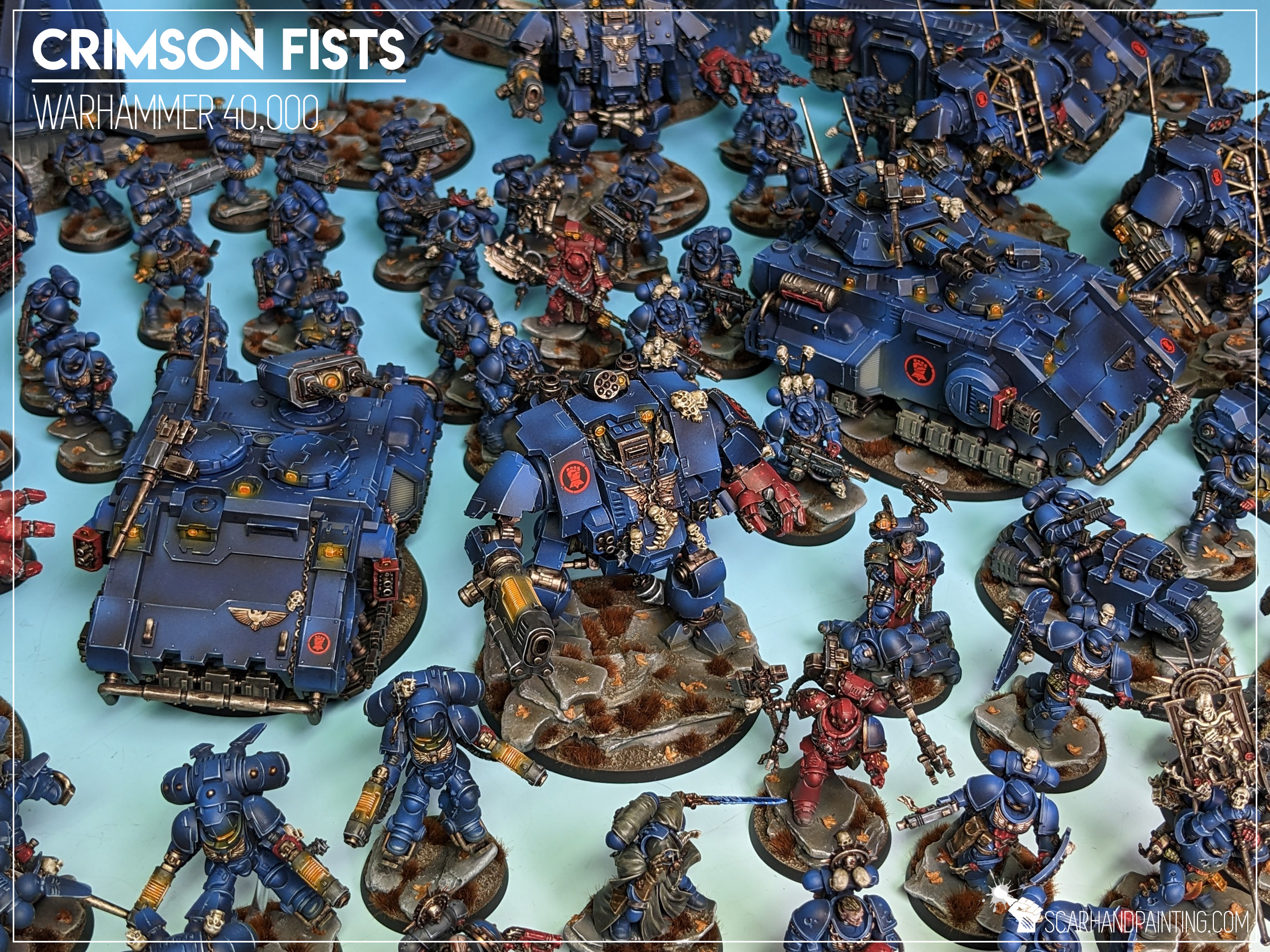
I hope you’ve enjoyed this article. Be sure to let me know your thoughts in the comments below or via Facebook or Instagram. I would also appreciate it if you considered sharing this content with your friends, who might find it interesting. Finally if you are looking for a professional miniatures painting service, be sure to contact me with this contact form. I always reply within 24 hours, after which please check out your spam folder.

Welcome to Painting Warhammer 40,000 Crimson Fists tutorial. Here I will present to you a Step-by-step of an easy and fast painting process for Games Workshop Crimson Fists Primaris Marines red as can be seen in Gallery: Crimson Fists.

Before we start, some notes:
Previous steps: Blue Armor
Although red elements can be painted separately I strongly recommend following part one of the article before moving to this color. Visit Tutorial: Painting Warhammer 40,000 Crimson Fists part one Blue Armor for more information.
Step one: Base Color
The initial layer was painted manually (no airbrush) with Vallejo Model – Hull Red (70.985). The color is thick resulting in strong coverage. I deliberately avoided going back to places where the undercoat might be visible, not to build too much paint in the area. Other layers will take care of that.

Step two: Highlight
Next I manually applied a large area highlight of Vallejo Burnt Red (70.814). A bit brighter and slightly pastele, the color has a relatively good coverage. I focused on covering all edges and exposed areas, less on recesses and inner folds.

Step three: Texture Highlight
I then applied a mix-method layer of Vallejo Flat Red (70.957)*, switching between edge highlight and stippling. This added much needed texture and vibrancy.
* Warning: I am convinced my Vallejo Flat Red is bugged. I have purchased a number of bottles and the one used for my Crimson Fists is clearly mixed up. There sadly is no comparable color in the entire Vallejo range that I am aware of (and I got each Red they make to test it). I recommend choosing any strong, vibrant, well pigmented red for this step instead.
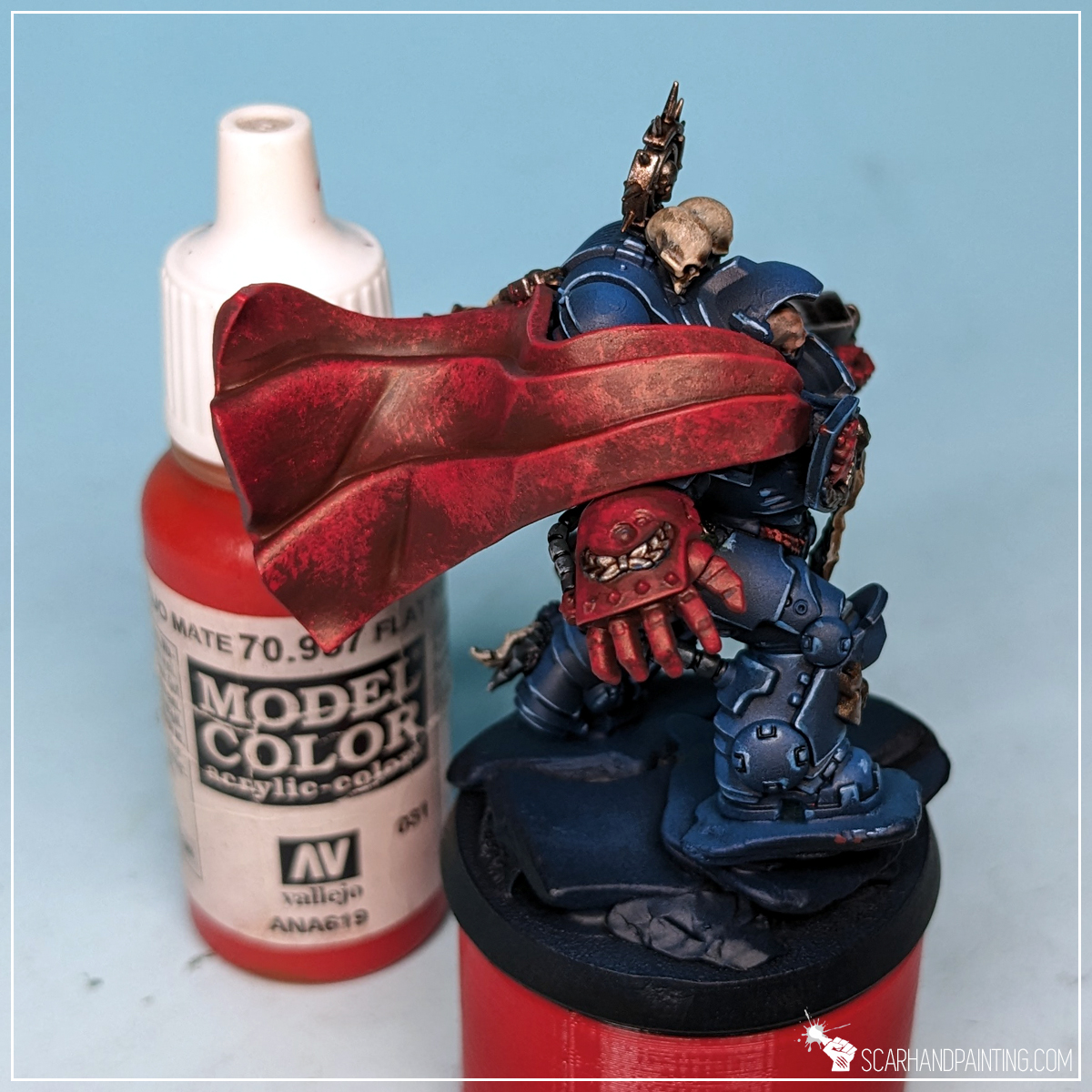
Step four: Final Highlight
In the last step I added a limited highlight of Citadel Lugganath Orange. The paint is thick and I used it without thinning. Just a few lines on the edges, a few irregular dots in certain areas. Not to much, not to change the expression of the overall color.
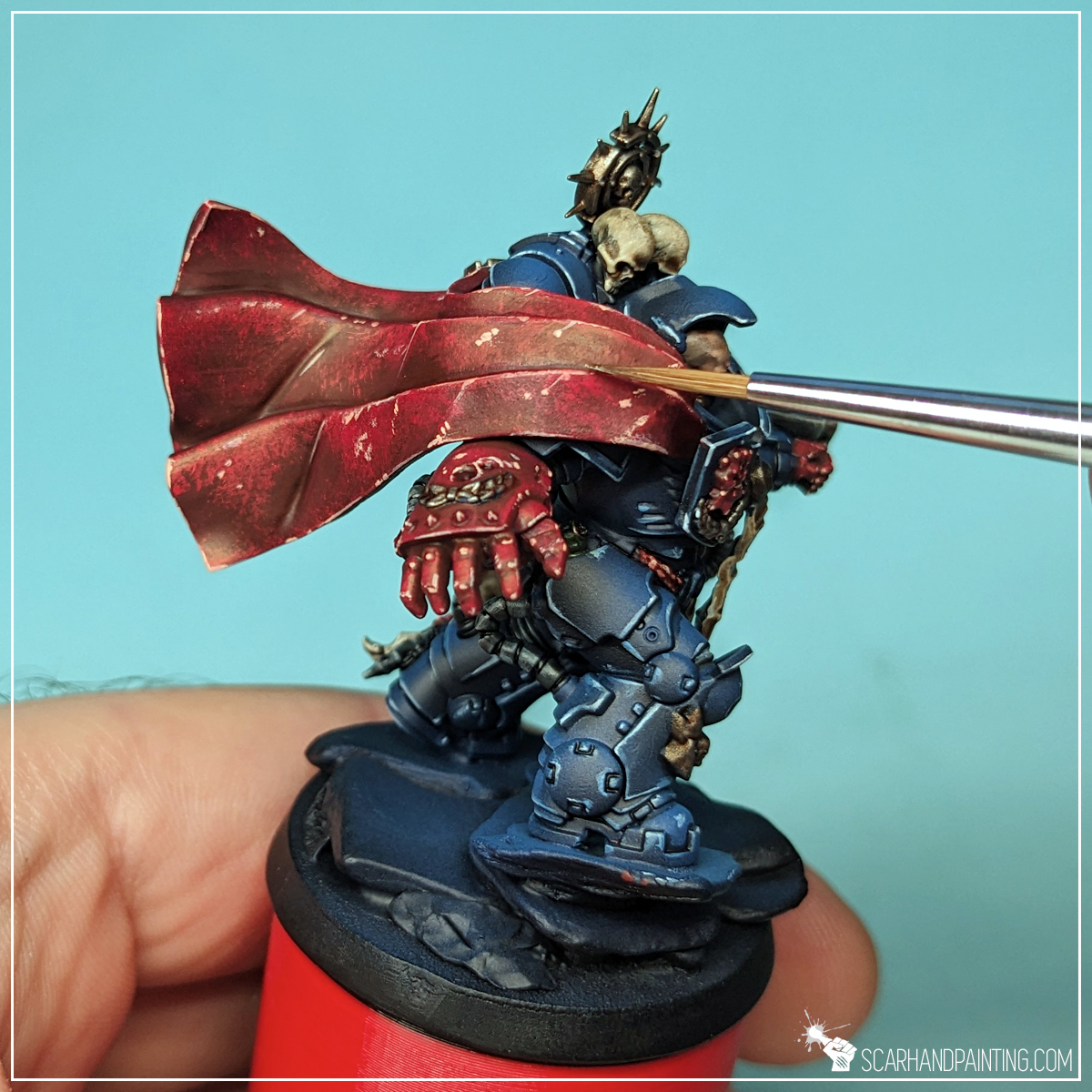

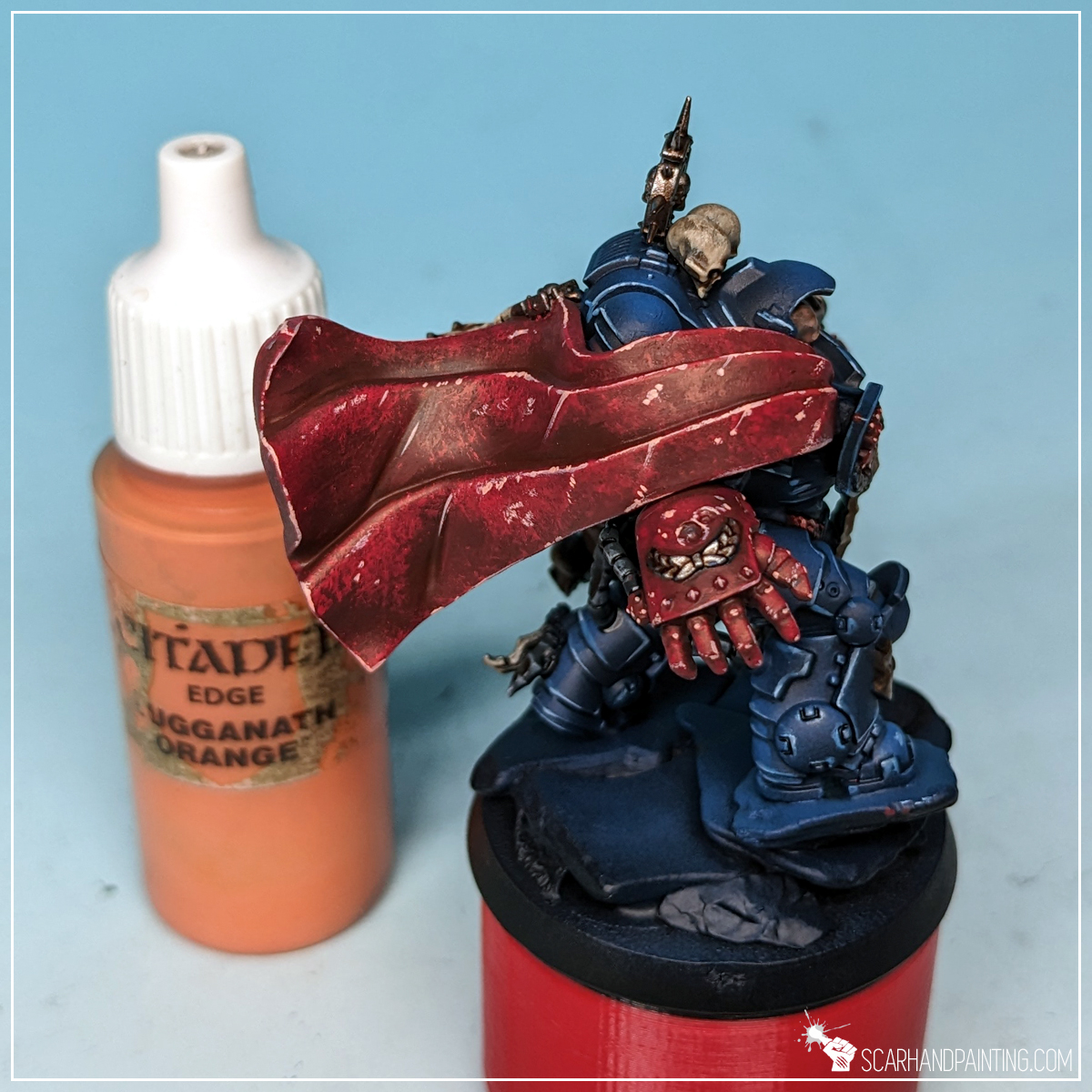
That wraps up red. Four layers of paint to imitate eye catching, vibrant tone. Two most important colors out of the way, the rest is a topic for another day. Stay tuned for part three of the tutorial.

I hope you’ve enjoyed this article. Be sure to let me know your thoughts in the comments below or via Facebook or Instagram. I would also appreciate it if you considered sharing this content with your friends, who might find it interesting. Finally if you are looking for a professional miniatures painting service, be sure to contact me with this contact form. I always reply within 24 hours, after which please check out your spam folder.

Magnetic transportation is probably the best way to carry miniatures safely. Its main pros are ease of use and speed with which the miniatures get packed/unpacked. Although pure comfort, this way of transporting miniatures is not without issues, amongst which is how very heavy pieces can slide and rub on one another, damaging the paint job in the process. Today I will present to you an easy way of dealing with this issue once and for all!
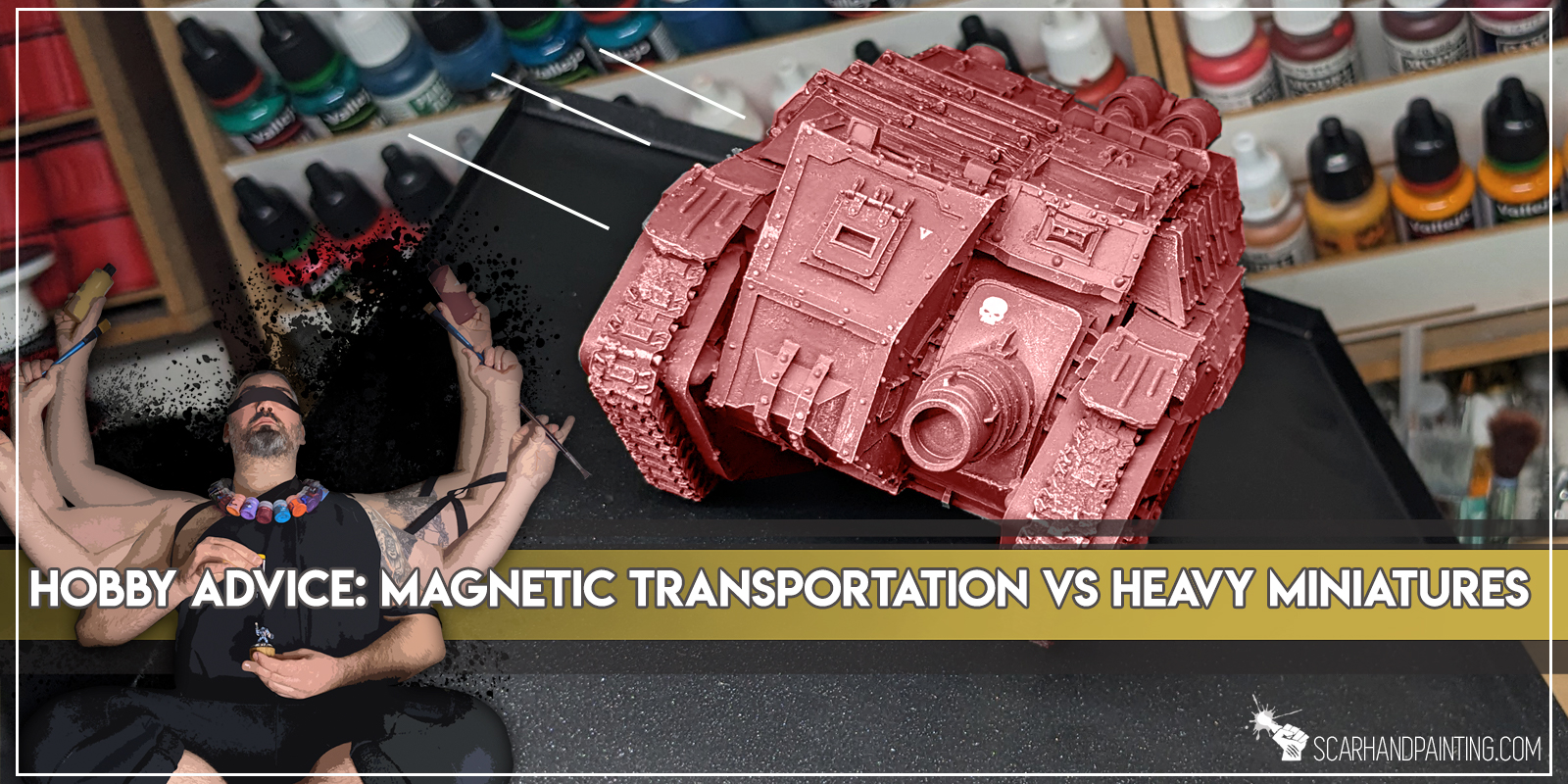
I have been using magnetic transportation for the last few years. Before that I was all about foam bags and stuff, but since I got my first A-Case I’ve abandoned all other ways of carrying minis and never looked back. Now I am happily carrying my lovingly crafted armies, including scenery, in magnetic transportation cases exclusively. Although I will never trust in any one way of carrying minis completely, with only the positive experience, I grew to trust magnetic transportation *almost* all the way. By “almost” I mean there are, like with all methods, some things worth being aware of. For starters I will never, under any circumstances put my case sideways. Do not get me wrong – my miniatures are professionally magnetized, but why tempt fate? More importantly some miniatures are really, and I mean REALLY, heavy and may slide around regardless of how many magnets you put into their underside.
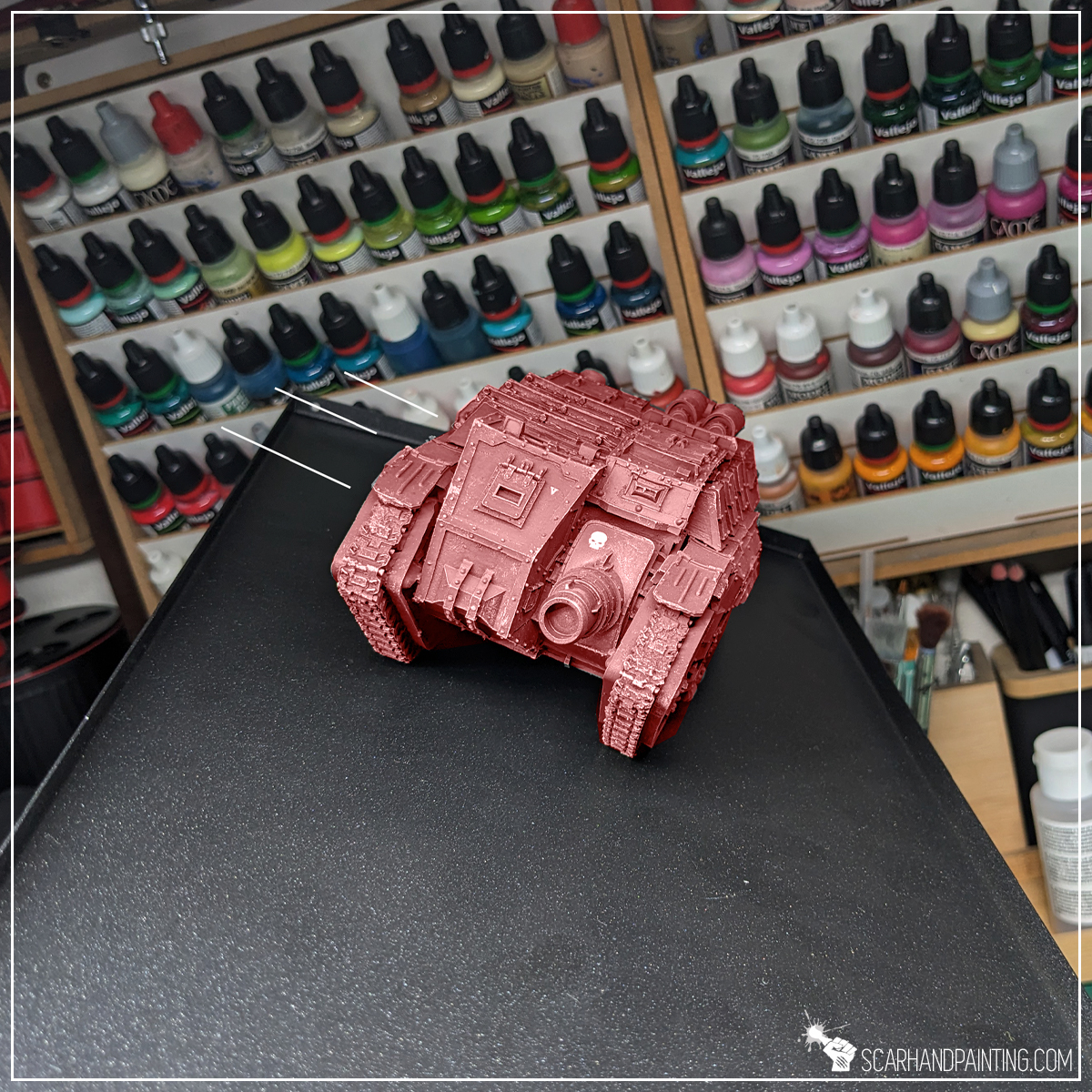
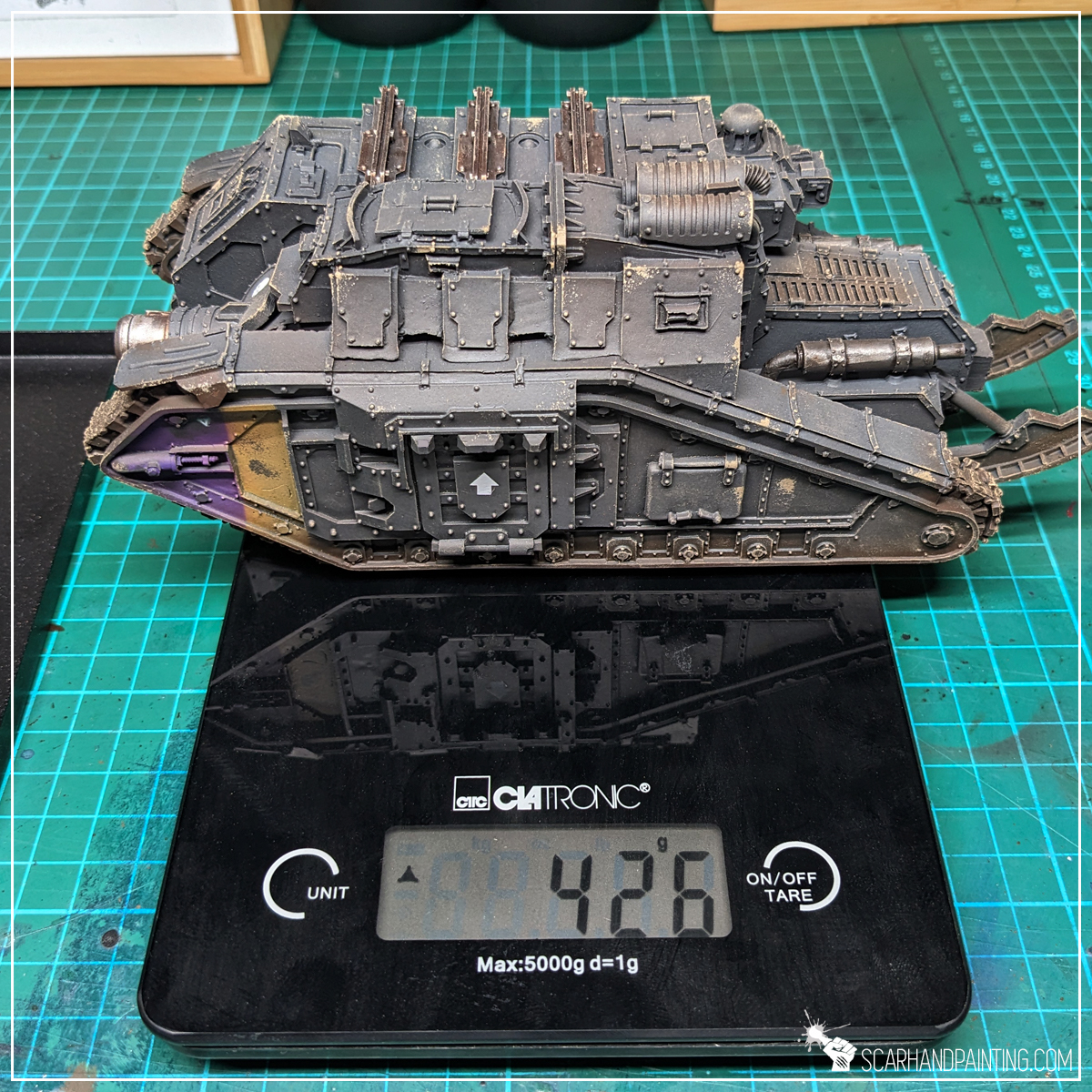
Just recently I have completed a large Solar Auxilia commission, including ten resin Dracosan tanks, over 400 grams each! The customer asked me to magnetize them and I got to it right away, but not without some thorough testing, to ensure the solution will work properly for these bad boys. Of course the miniatures moved around. I went through magnetized 3d printed holders, more magnets, stronger (over 20kg attraction power) magnets, magnets with rubber bands stretched between them, anti-slide stickers, foam trays to protect the miniatures and more. Neither solution satisfied the goal of providing safe transportation for my customers’ collection. Finally after multiple trials and errors I found an easy, cheap solution that gets the job done and is very user friendly.
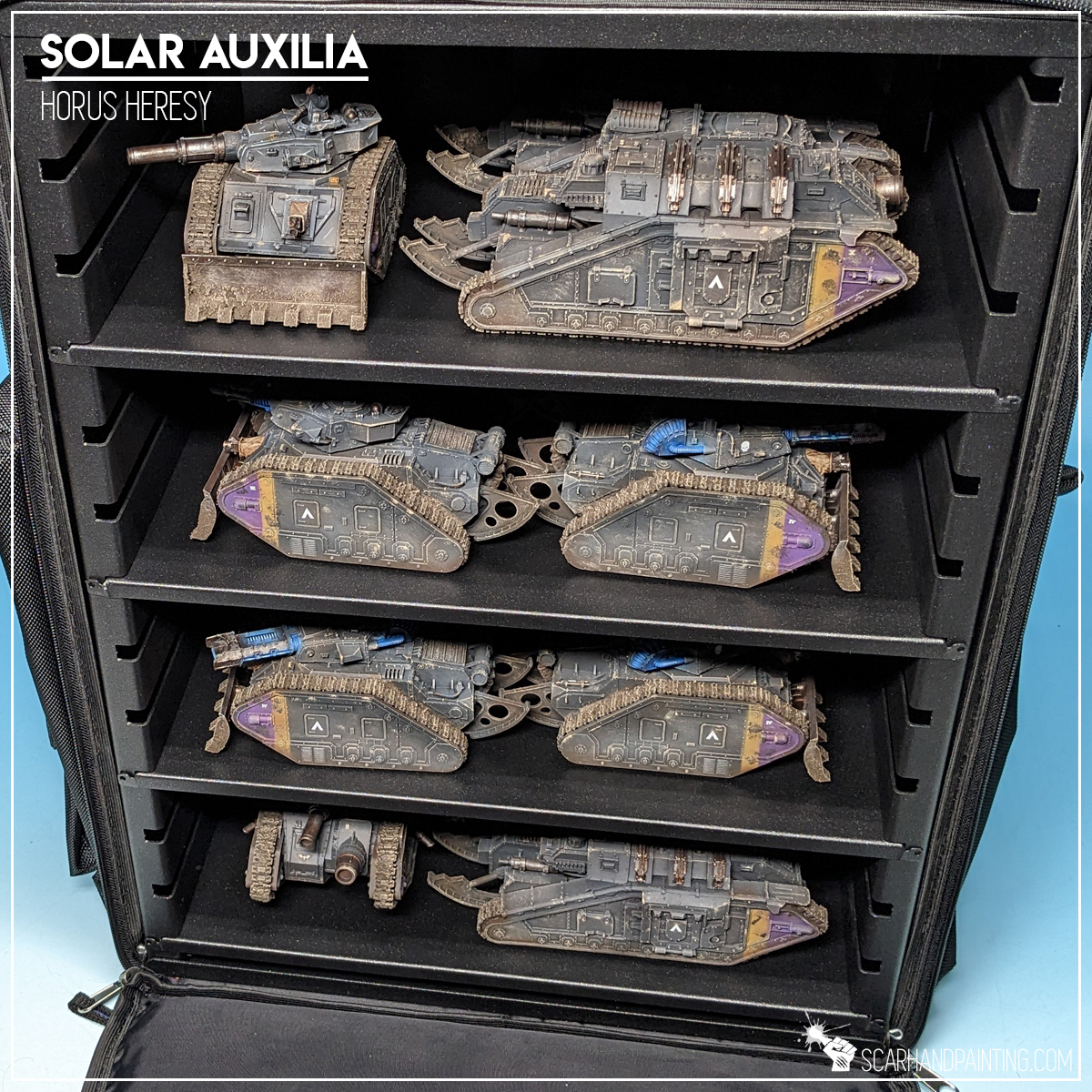
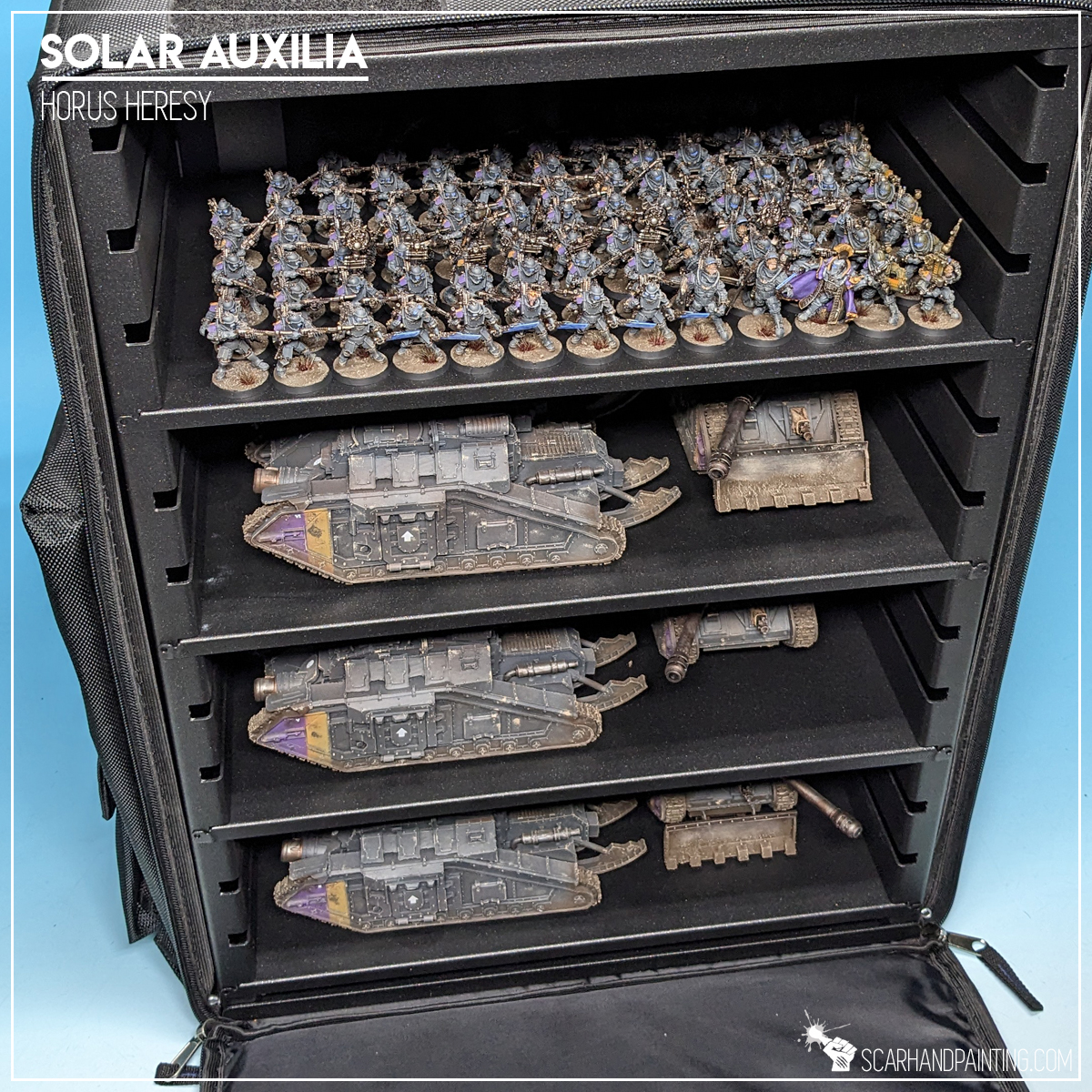
Final word before we start:
The solution is very simple: Due to heavy weight the miniatures, if well magnetized, will stay on top of the metal shelf without issue. In order to prevent them from sliding around I simply needed to create a socket to block any extensive sideways movements.
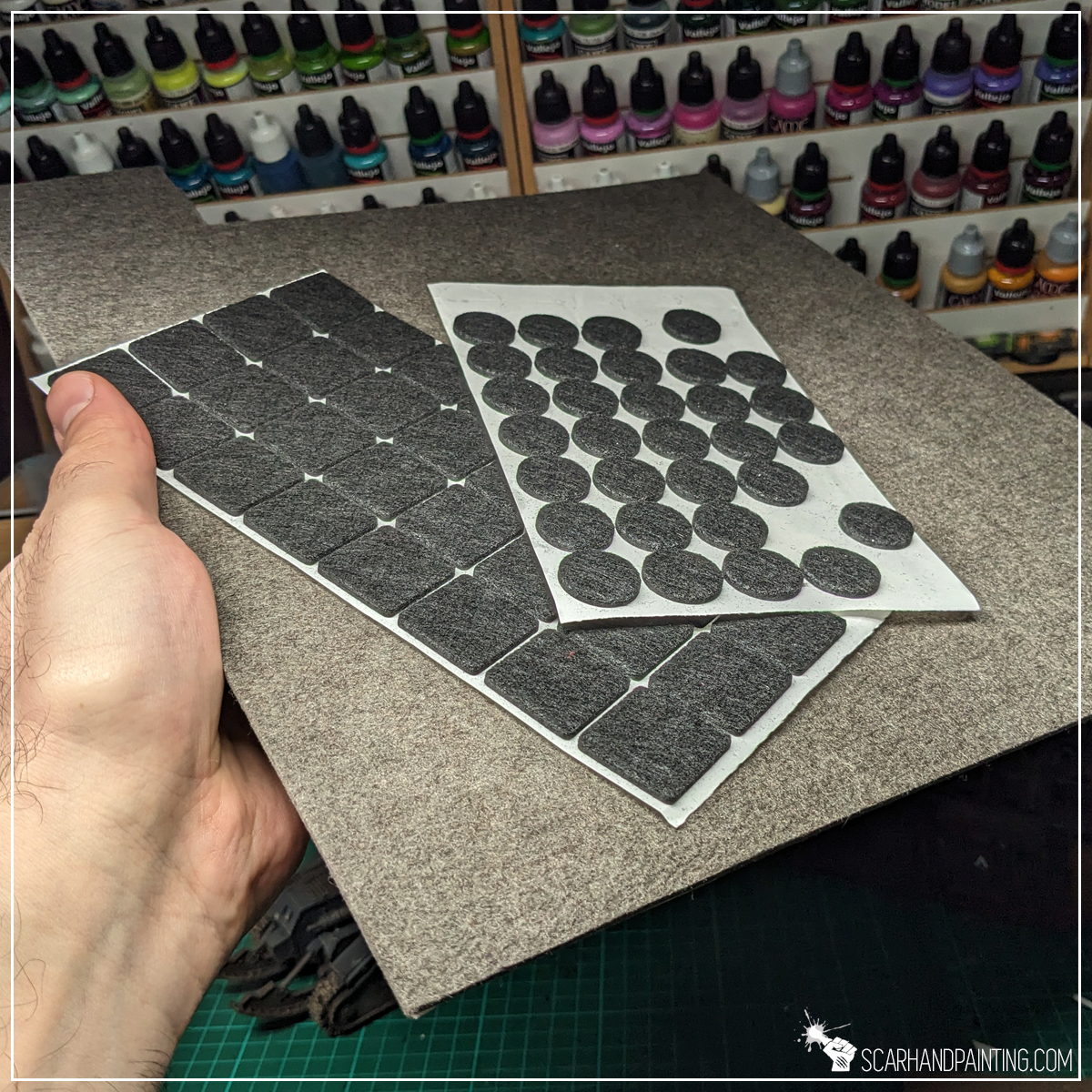
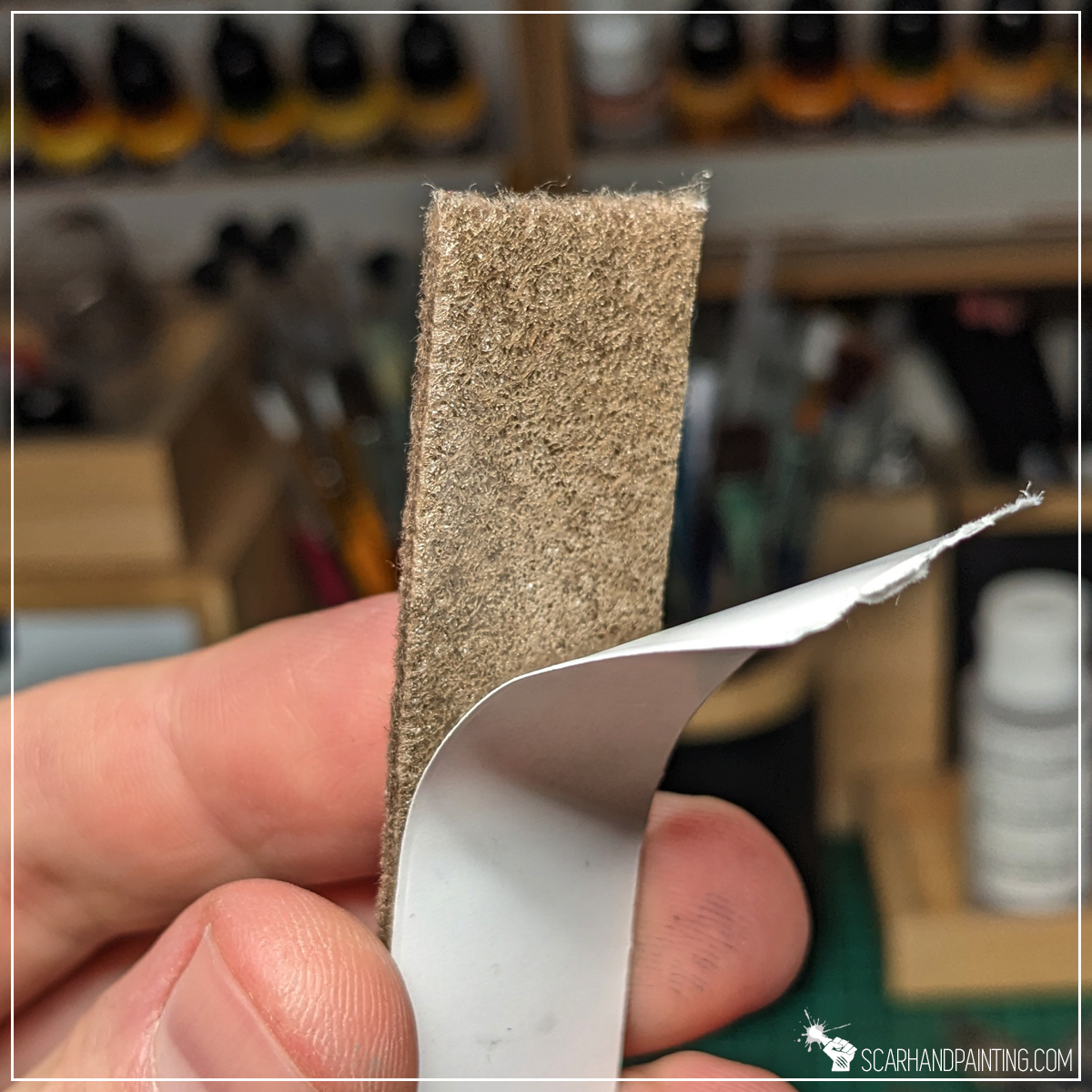
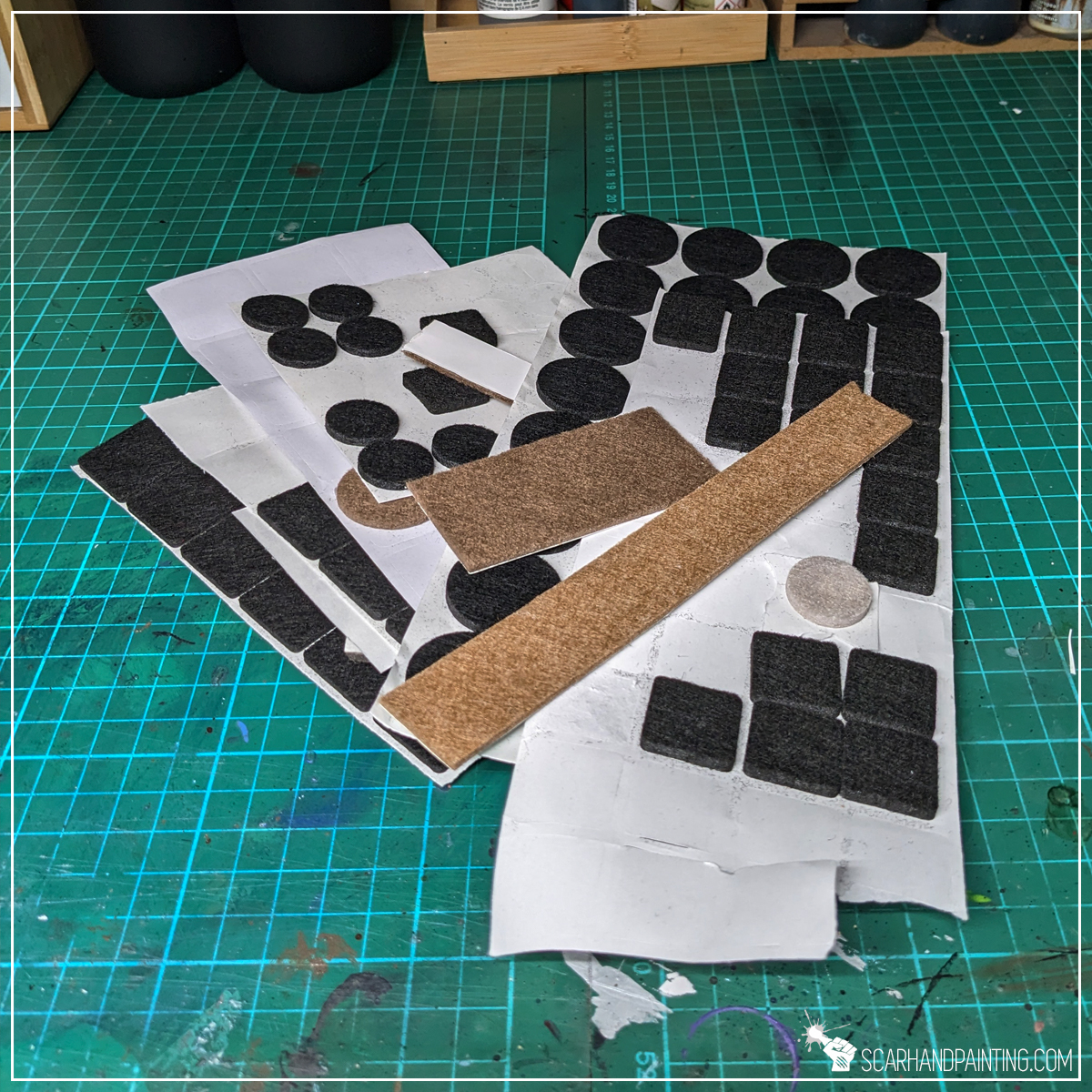
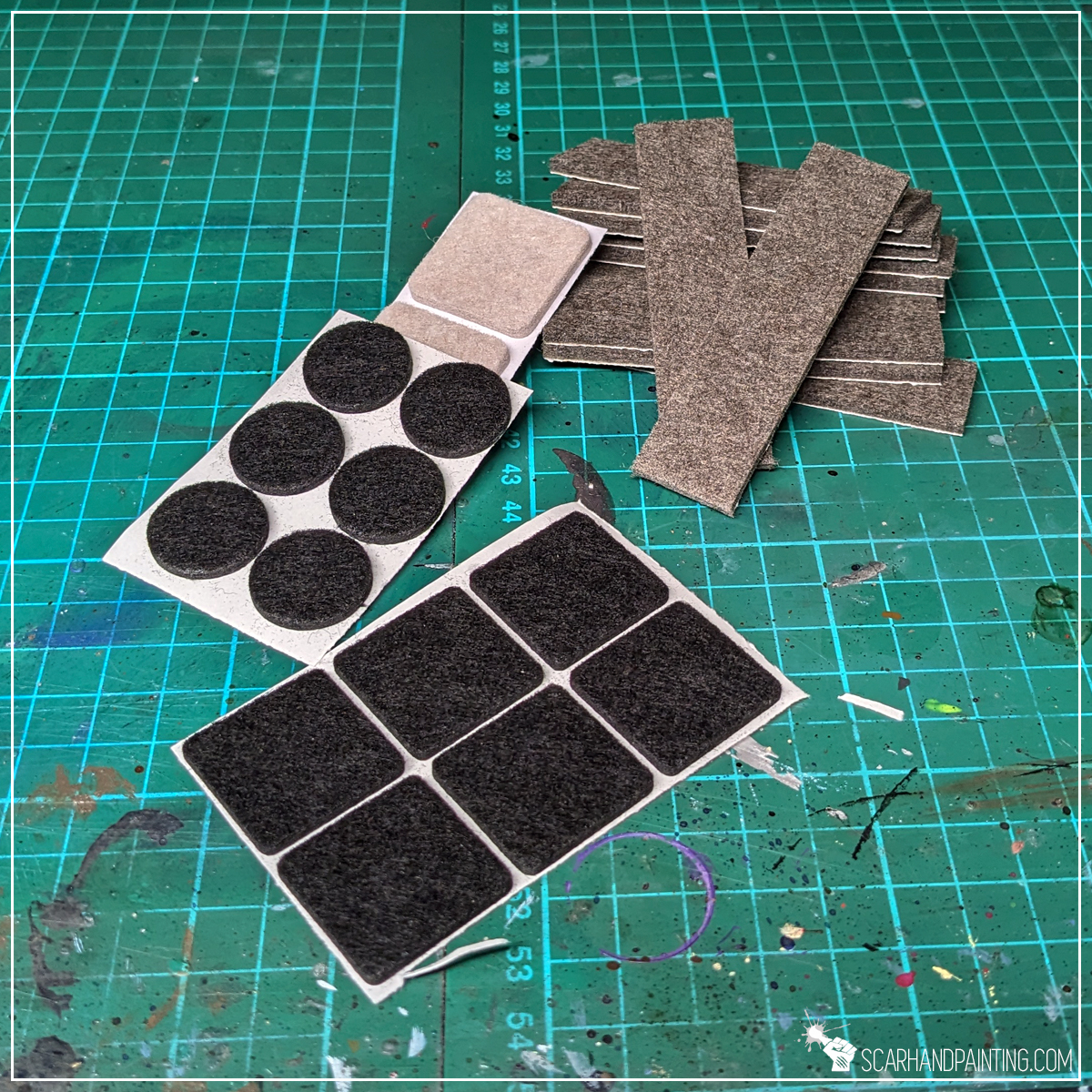
For this I used 3mm thick self-adhesive felt sheets and pads. Yes, that is correct – the solution was much simpler than anticipated. I used the actual Dracosan tanks spread across an A-Case shelf and stuck a few felt pads, prepared in advance, around them. I left some loose space between the sheets and the tanks to make it easier for the customer to fit each tank in each slot, regardless of eventual small differences in size of resin elements. Assuming the tanks will not take off, they are allowed to slide just barely, as long as the only thing they hit would be a relatively soft pad…
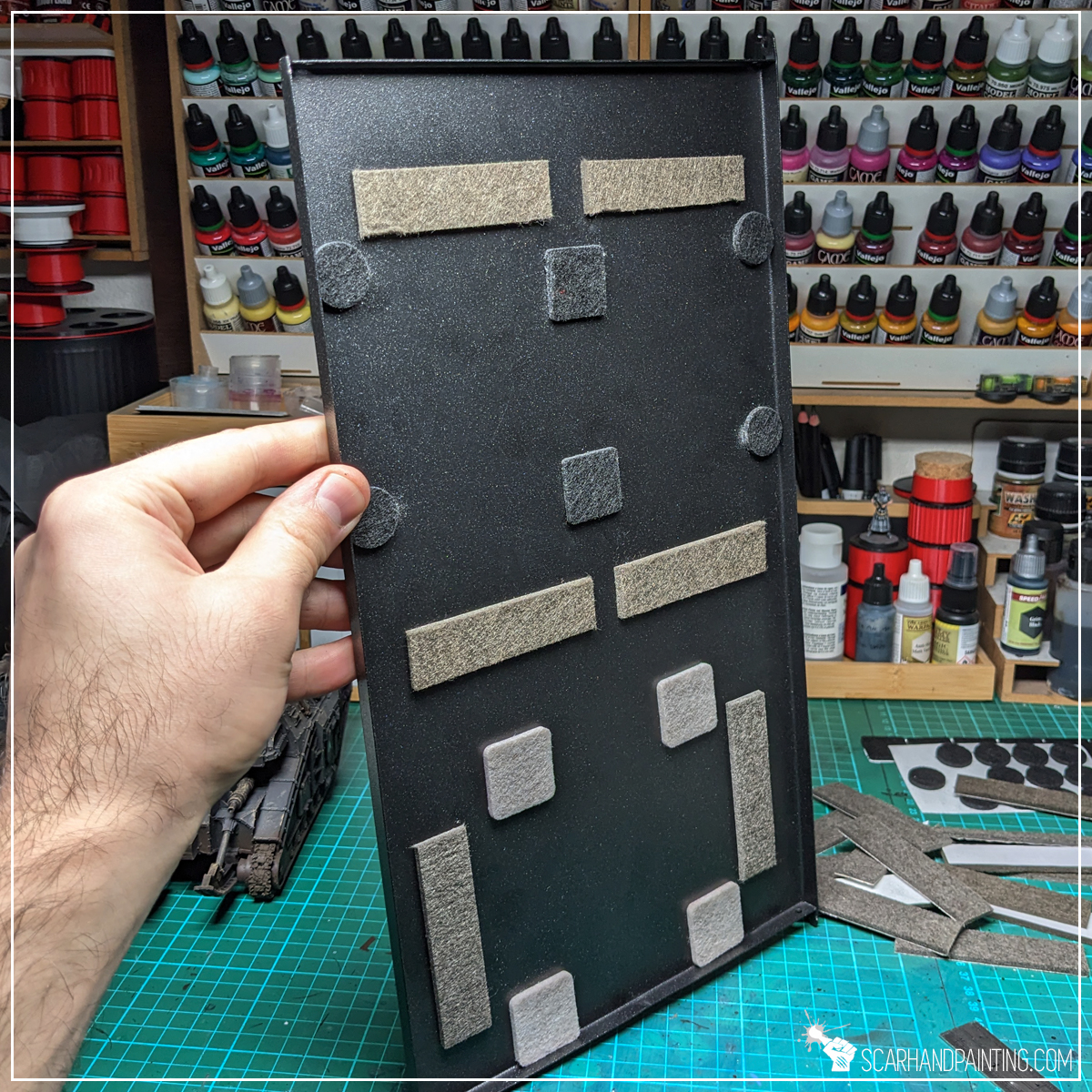
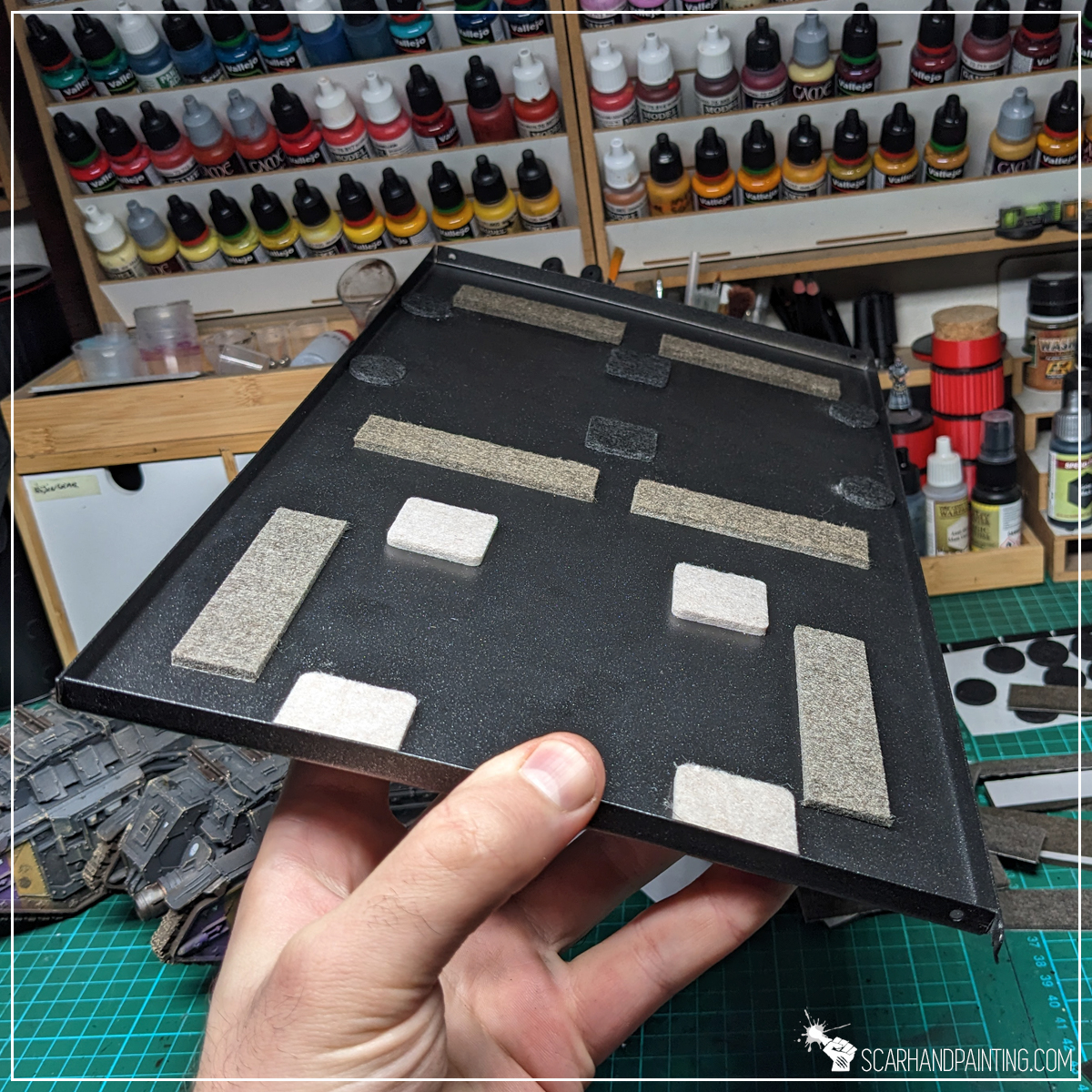
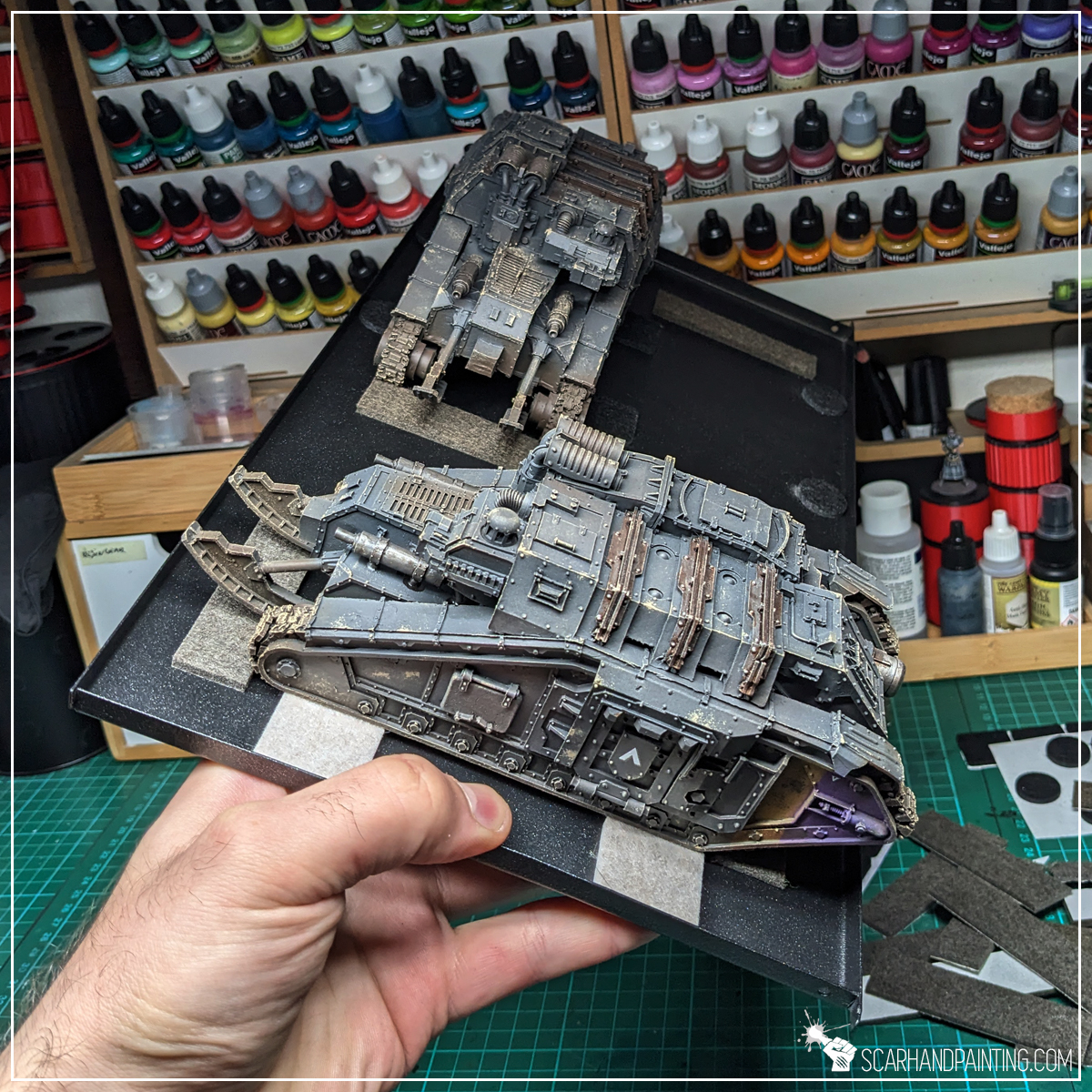
The Final Test was successful!

I hope you’ve enjoyed this article. Be sure to let me know your thoughts in the comments below or via Facebook or Instagram. I would also appreciate it if you considered sharing this content with your friends, who might find it interesting. Finally if you are looking for a professional miniatures painting service, be sure to contact me with this contact form. I always reply within 24 hours, after which please check out your spam folder.

What if I told you it is possible to turn almost any old, damaged, badly painted Space Marine model into an Obliterator using trash and a bit of modeling magic? Sounds good? How about I just show you!
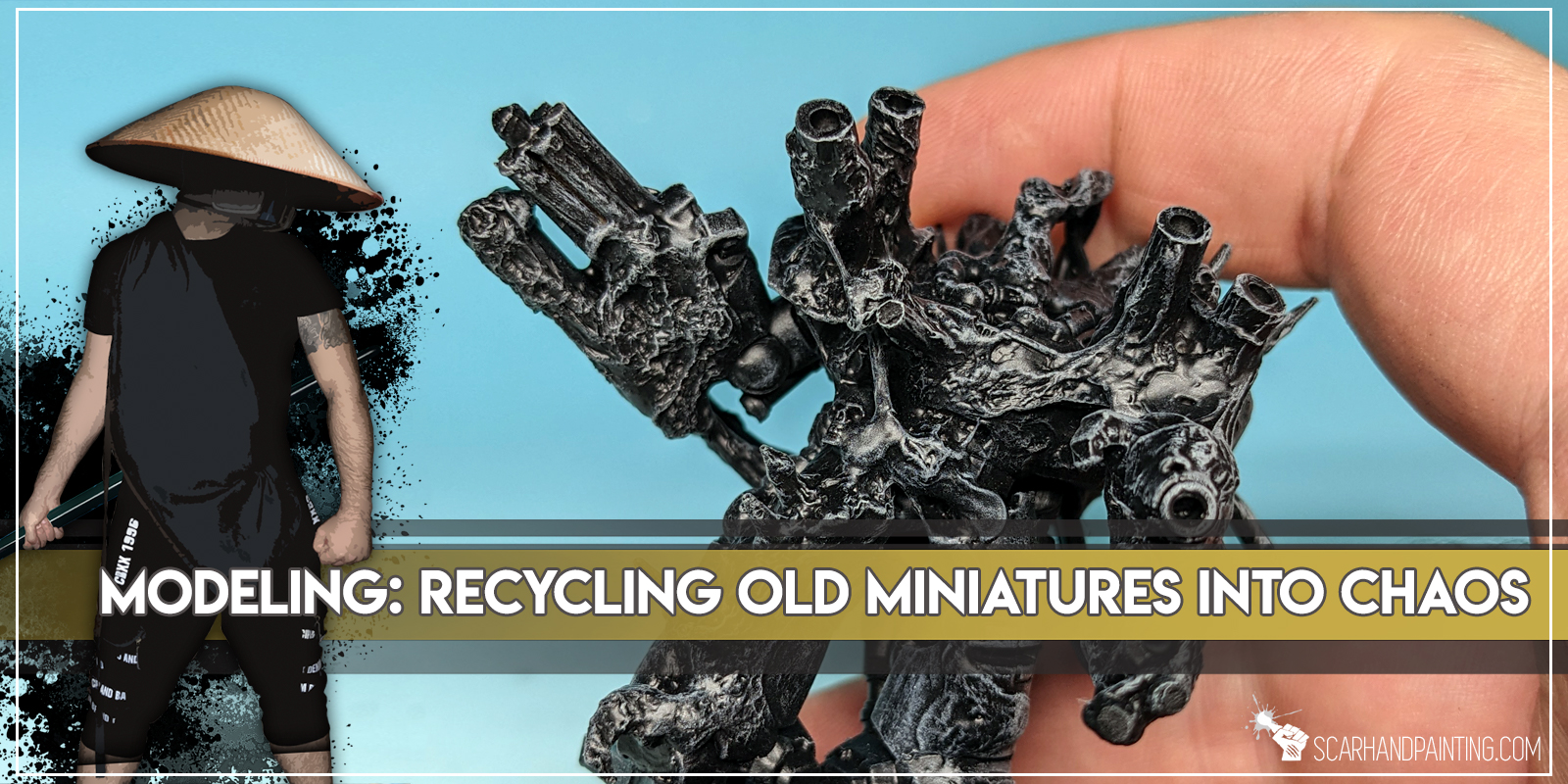
Before we start, some notes:
I have been playing Warhammer for over two decades now. Throughout that time I had multiple armies that I built, then painted, then sold out to get dough for another dose of ‘plastic crack’. At times I had to get rid of some really badly painted, out of date sculpts. Easy to say, I came up with a variety of ideas on how to make such miniatures more desirable in the eyes of potential buyers, one of which was turning old minis into Chaos Obliterators and Spawns. The key was to use an old miniature and as little extra bitz as possible to up the value on the gaming board. Nowadays Obliterators come in plastic and look cool, but I believe there is still value in recycling old minis, especially if you’re short on cash and would like to play CSM proper by spamming these bad boys all over the place. The method shown below can be used for anything, including turning Marines/Vehicles Death Guard, making Possessed or Mutants and more. I deliberately chose to make an Obliterator, but stay open minded and let me know in the comments if you would like to see some kind of dedicated Nurge’esque magic in the future.
Now buckle up and let’s jump straight into it!
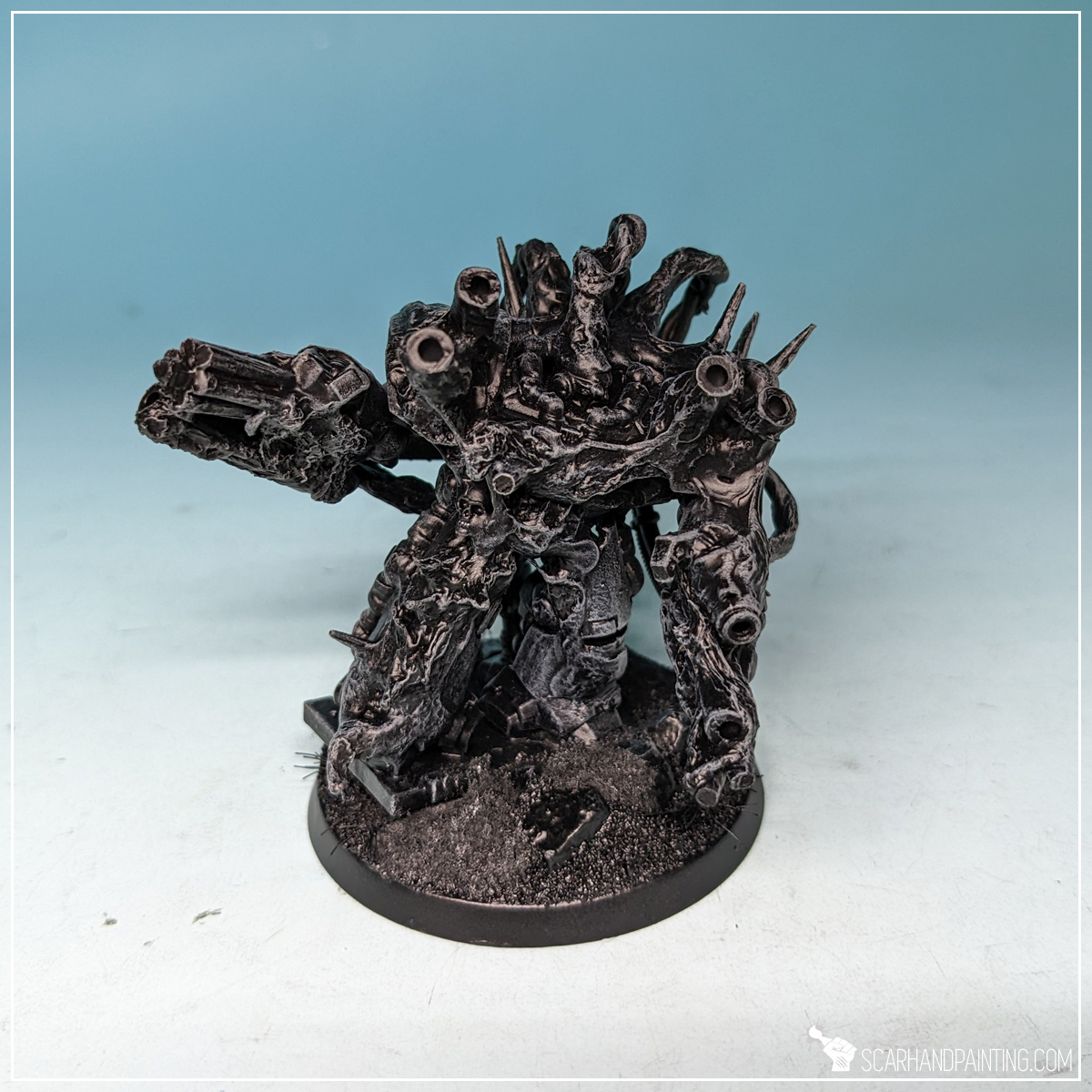
Step One: Preparing the Miniature
Using Hobby Cutters and a Hobby Knife I removed front parts of the miniature’s arms to make space for the upcoming weapon extensions. I also removed any Imperium related symbols.
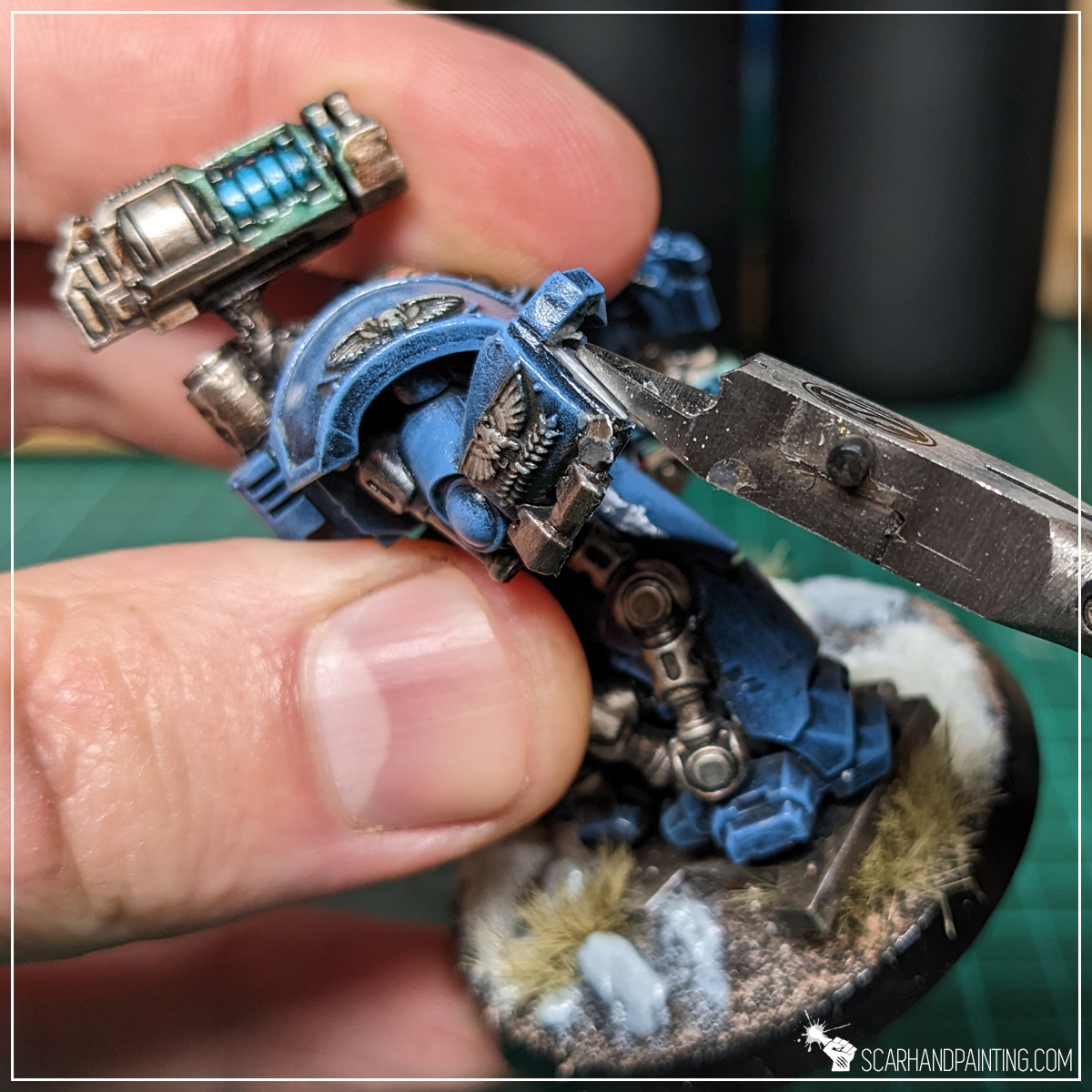
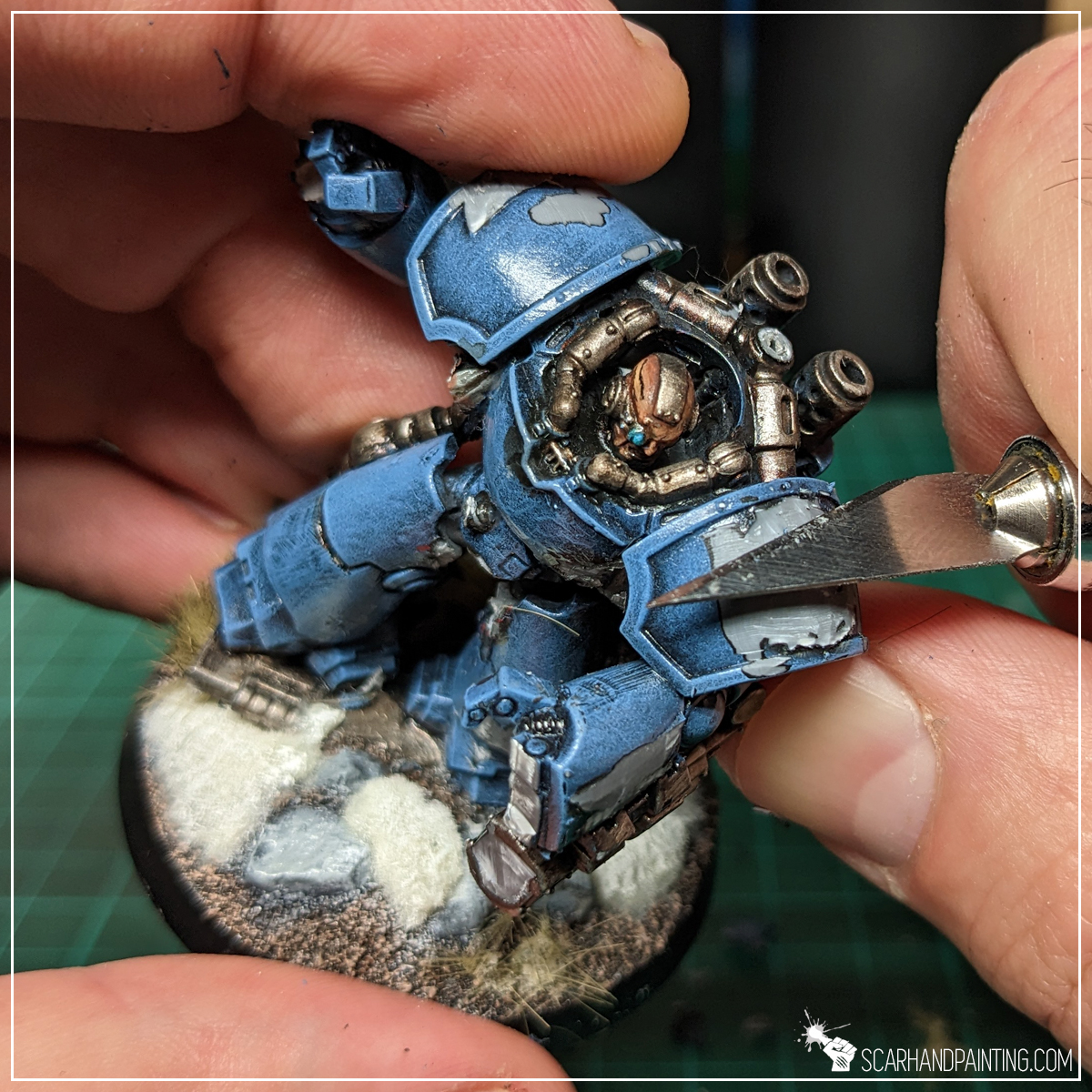
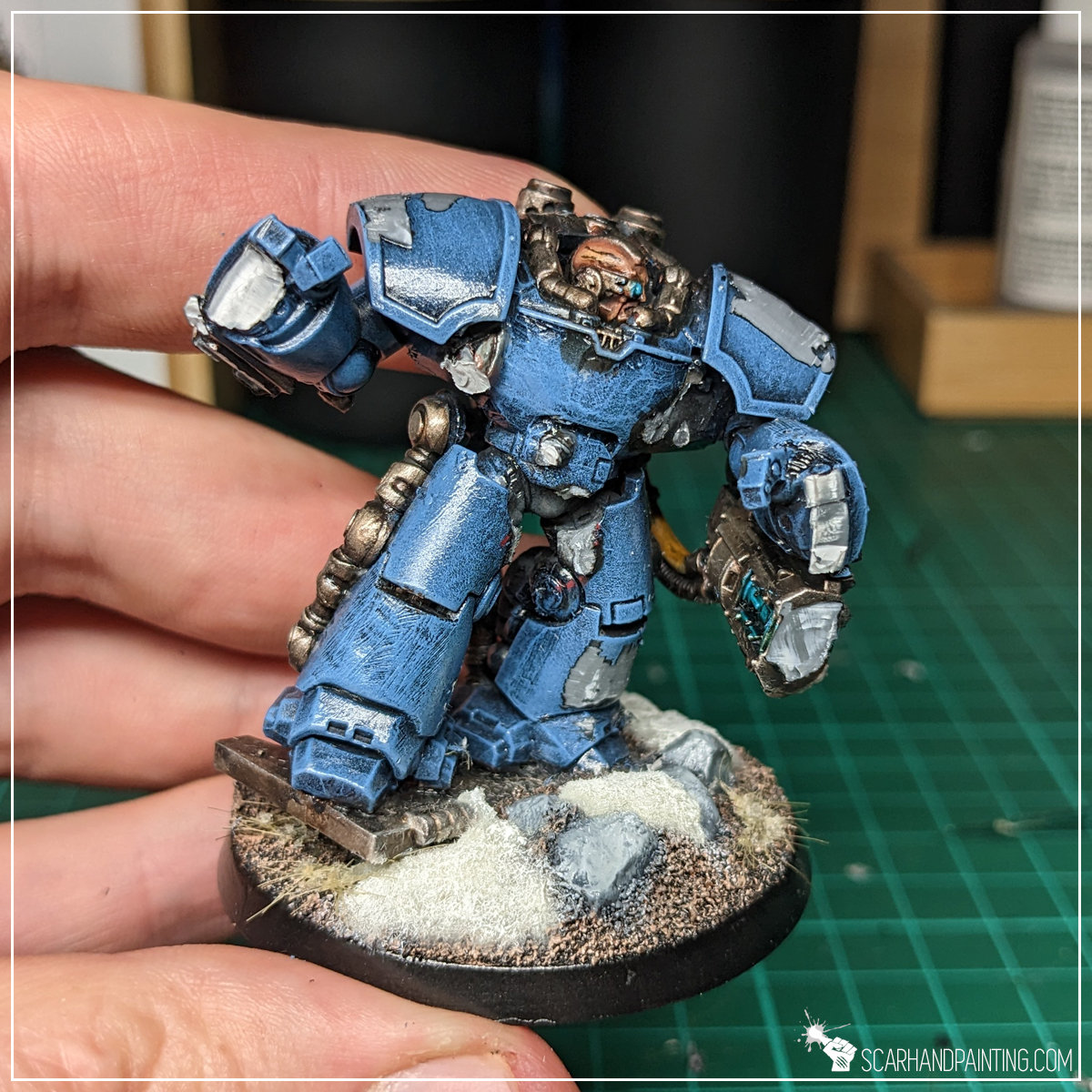
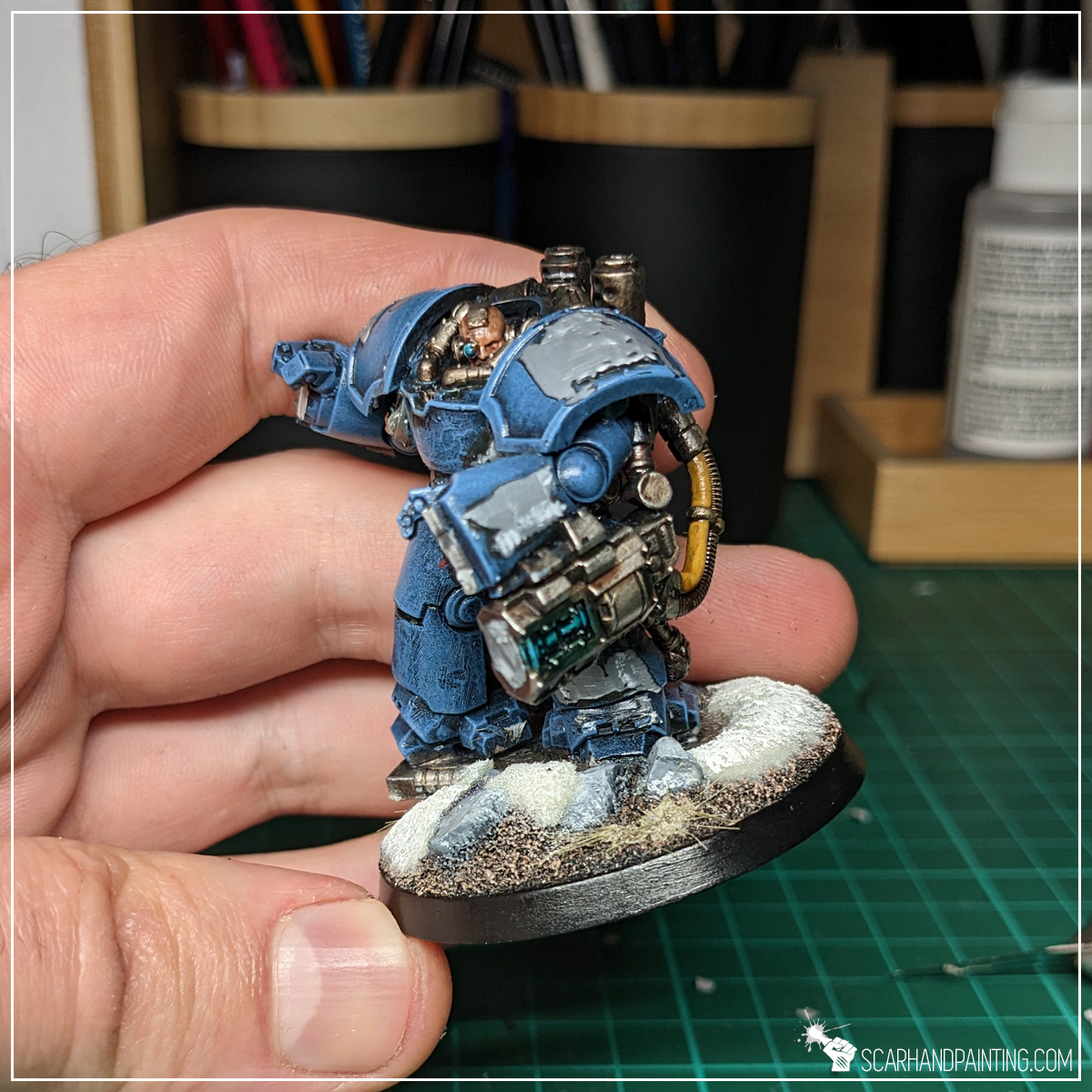
Step Two: Weapon Barrels
Next I cut an old lollipop stick and a few toothpicks into short pieces, then glued them onto the shoulder guards and arms of the miniature with Super Glue. I used remaining sharp toothpick ends to form spikes on one leg and the back of the miniature.
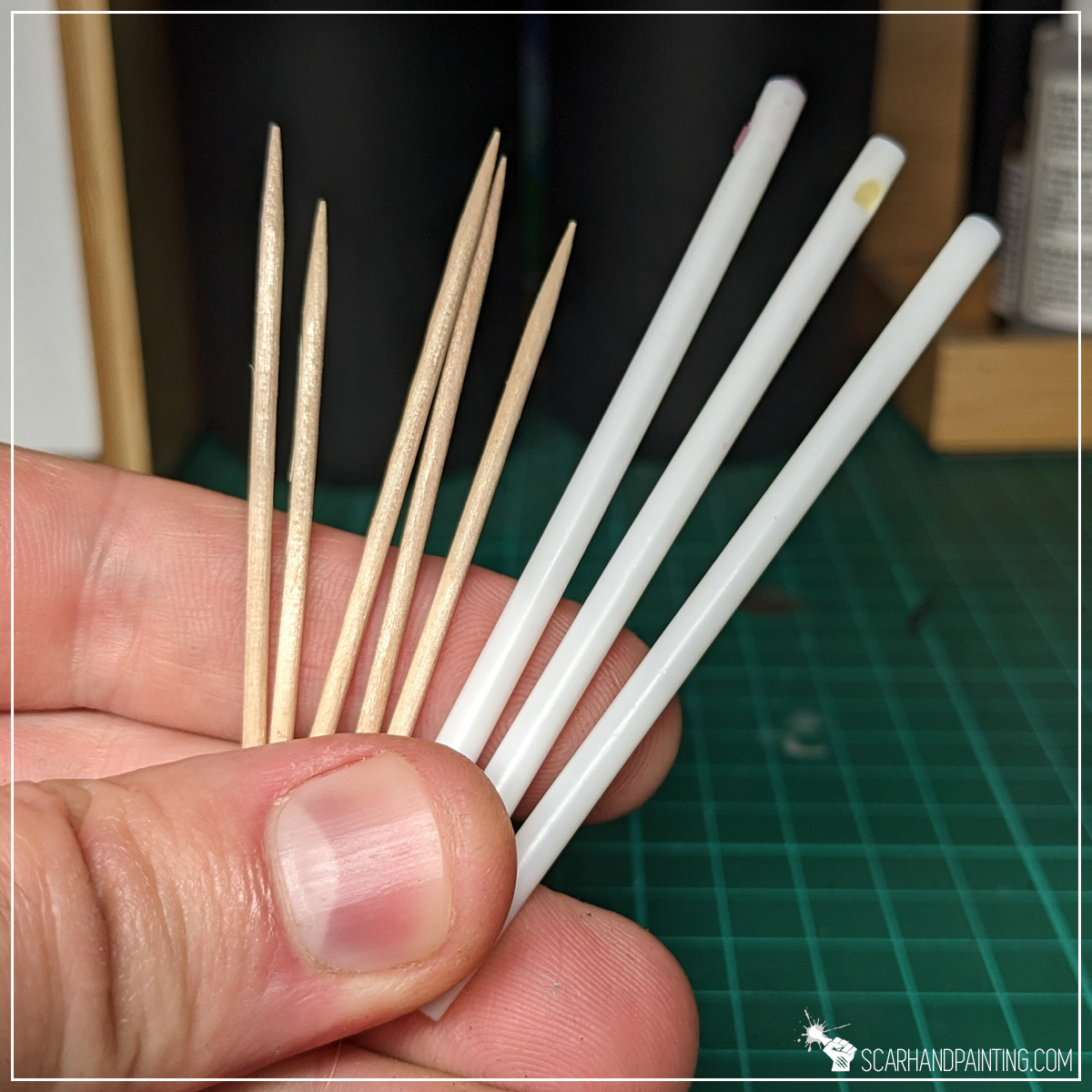
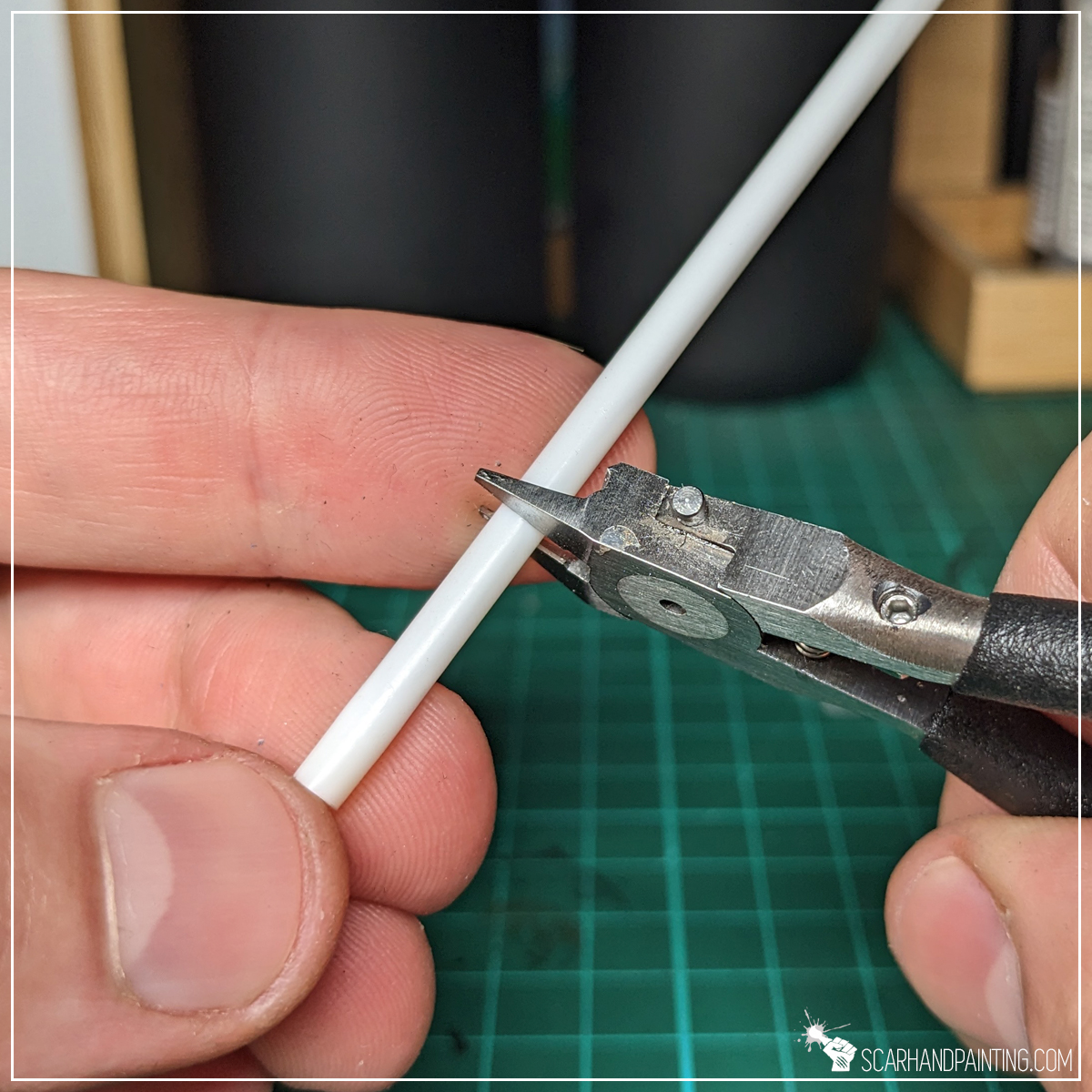
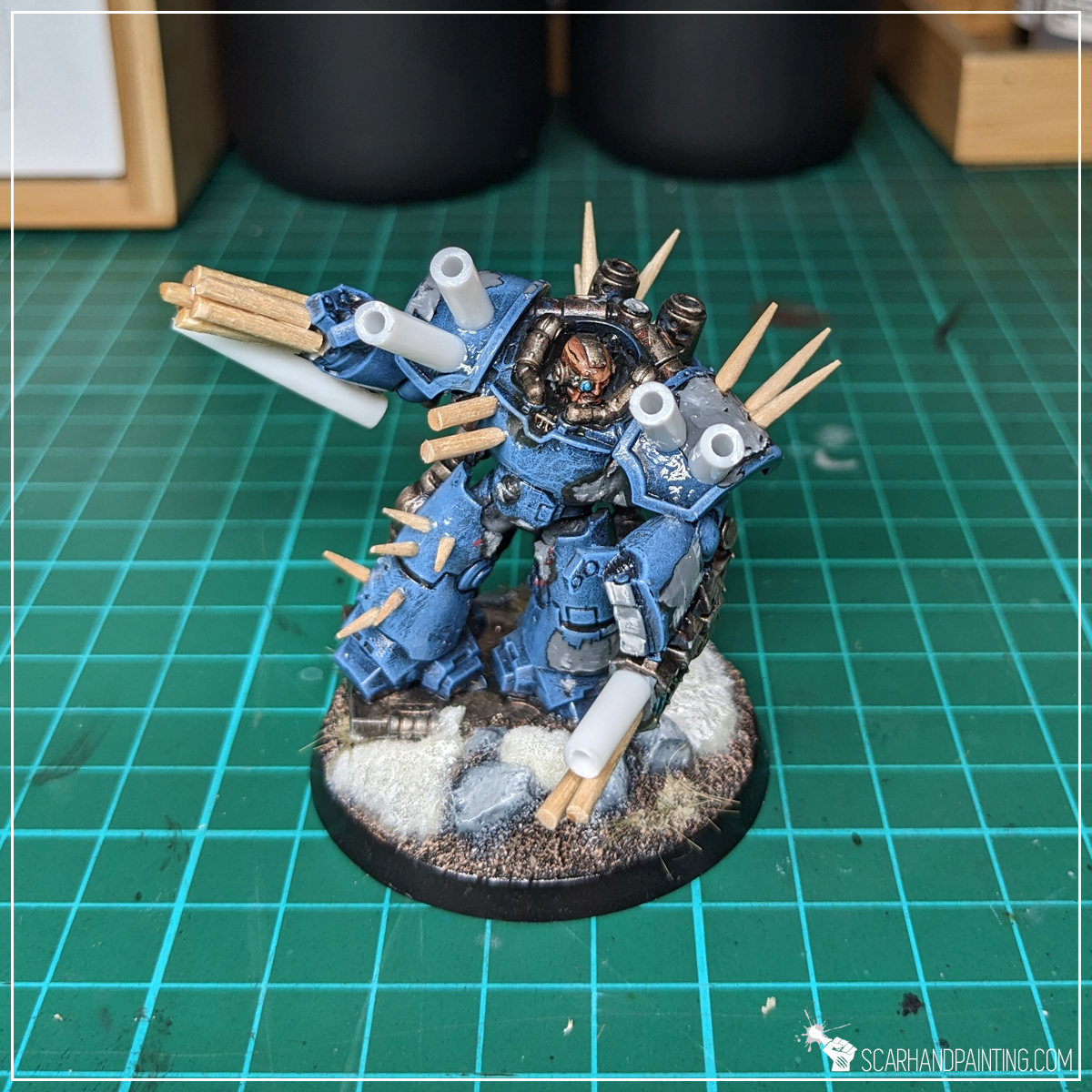
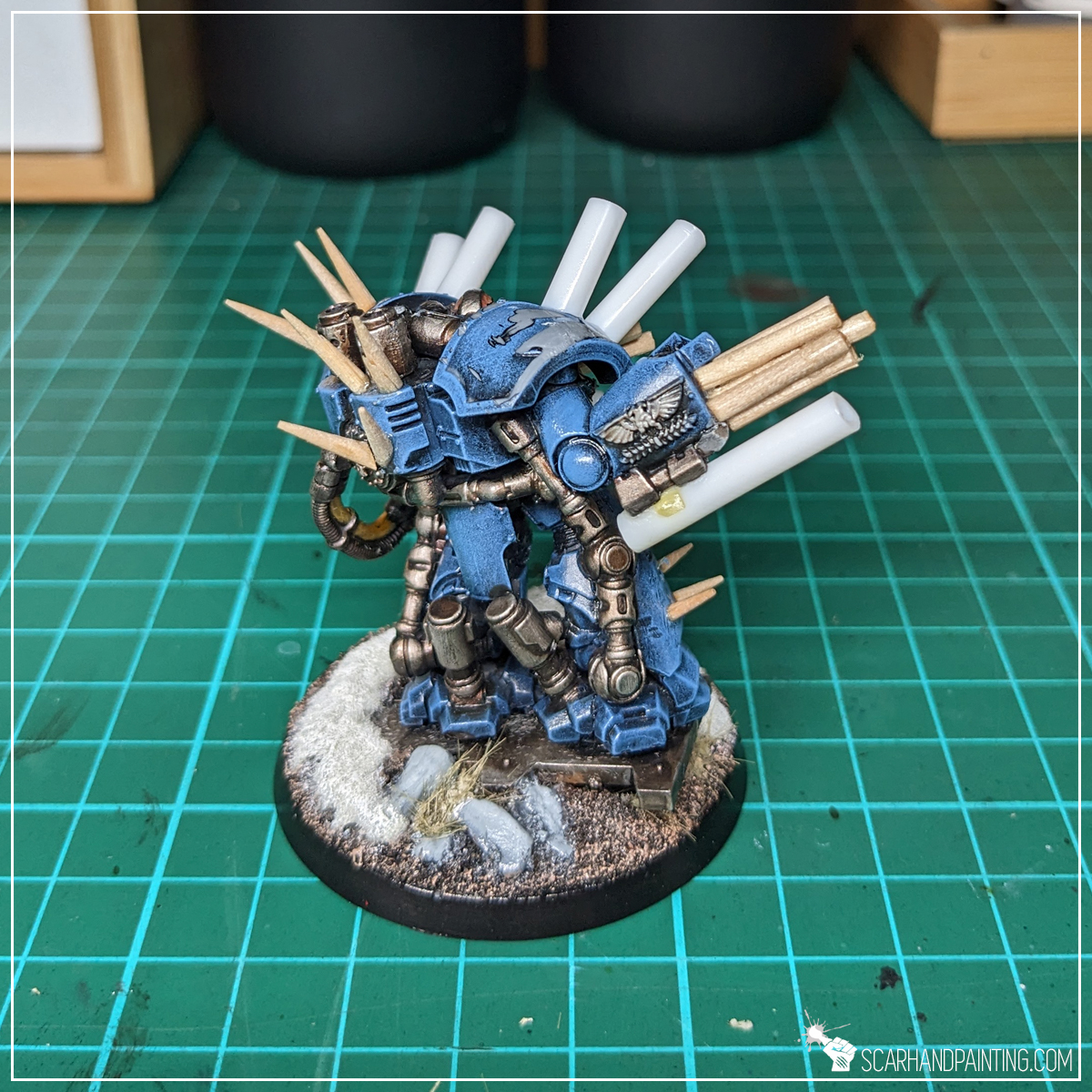
Step Three: Veins and Cables
I then added another thematic detail by cutting paper clips into small pieces, then bending them to form swathes of cabling. I also twisted a few to form double cabling/veins then glued all of them onto the miniature. Again with Super Glue.
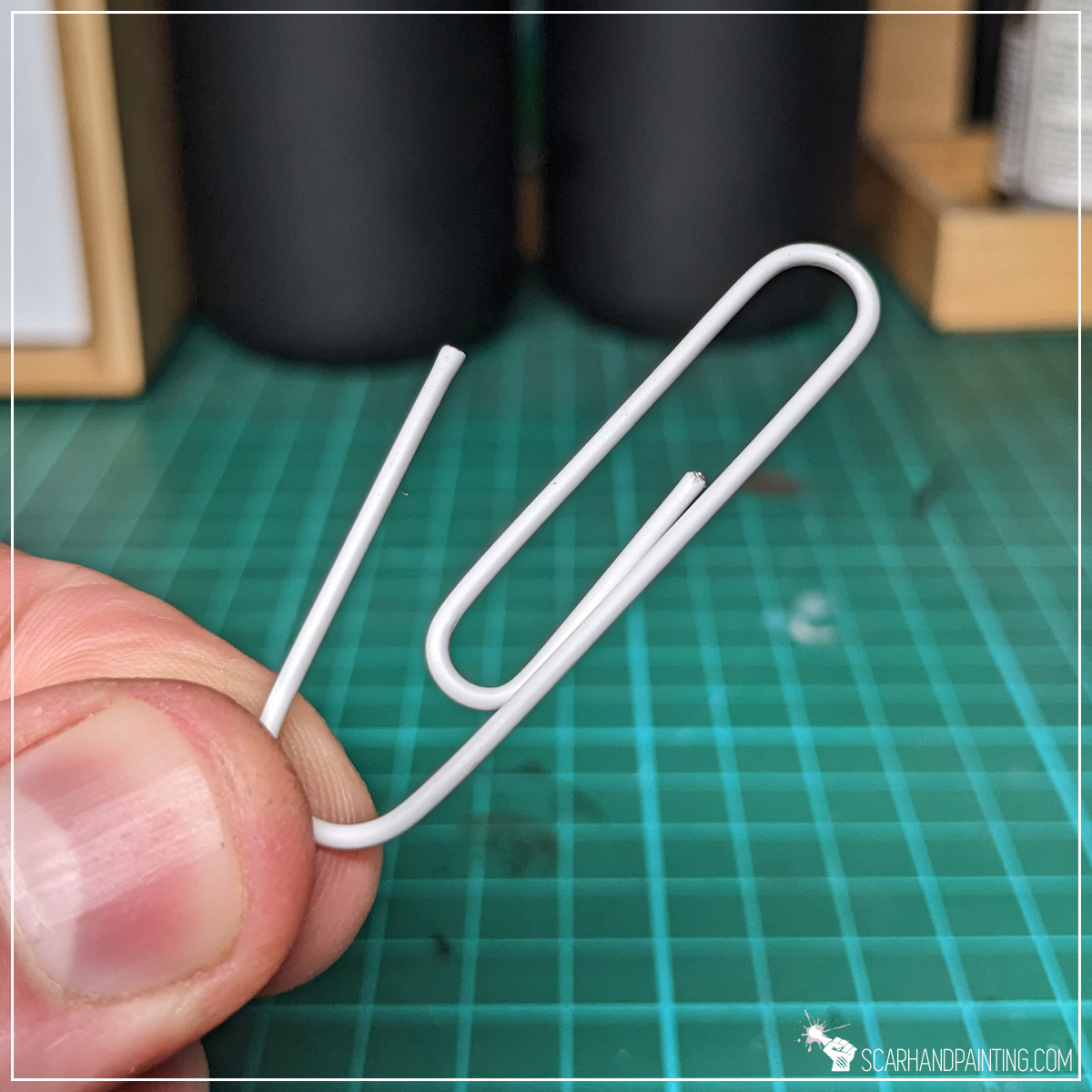
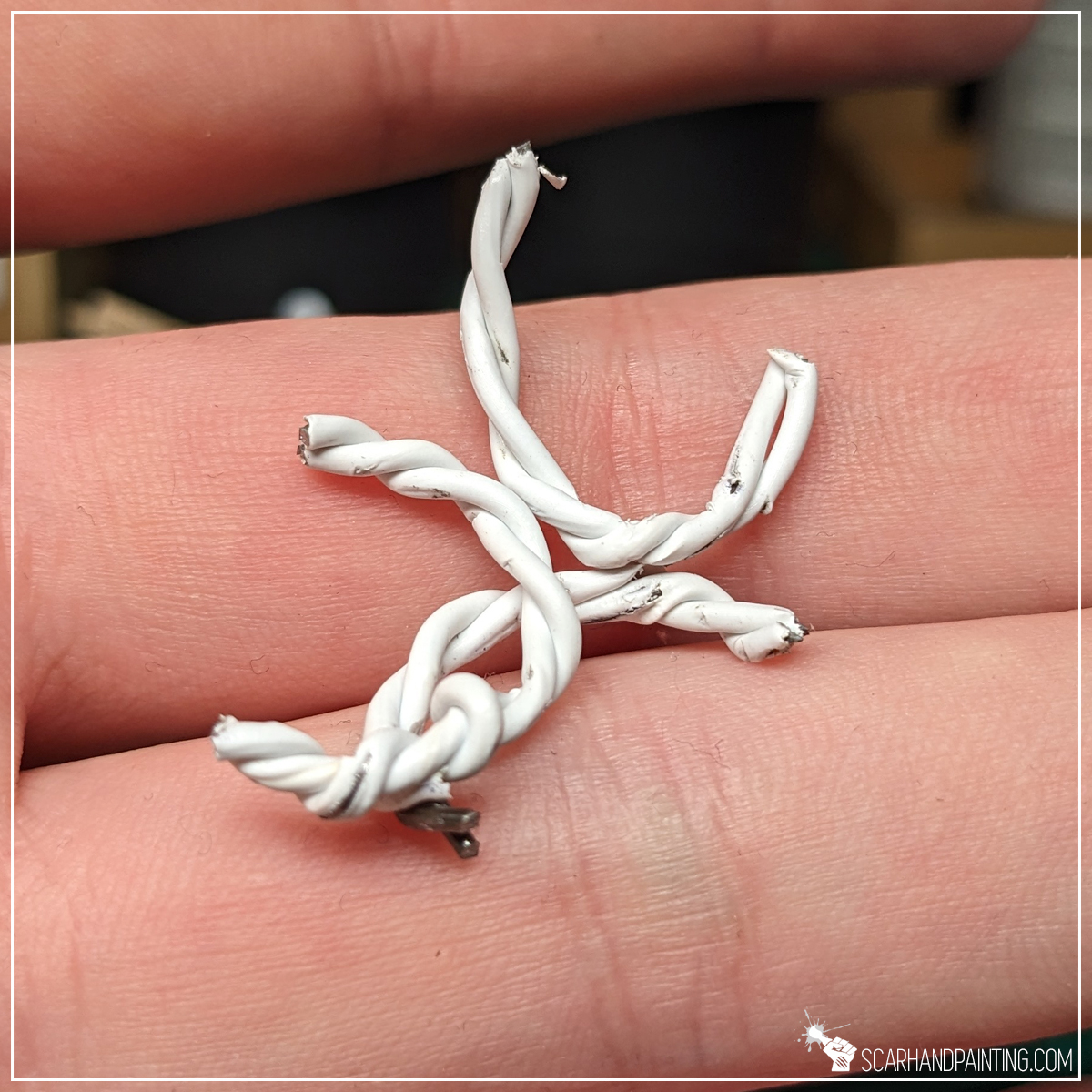
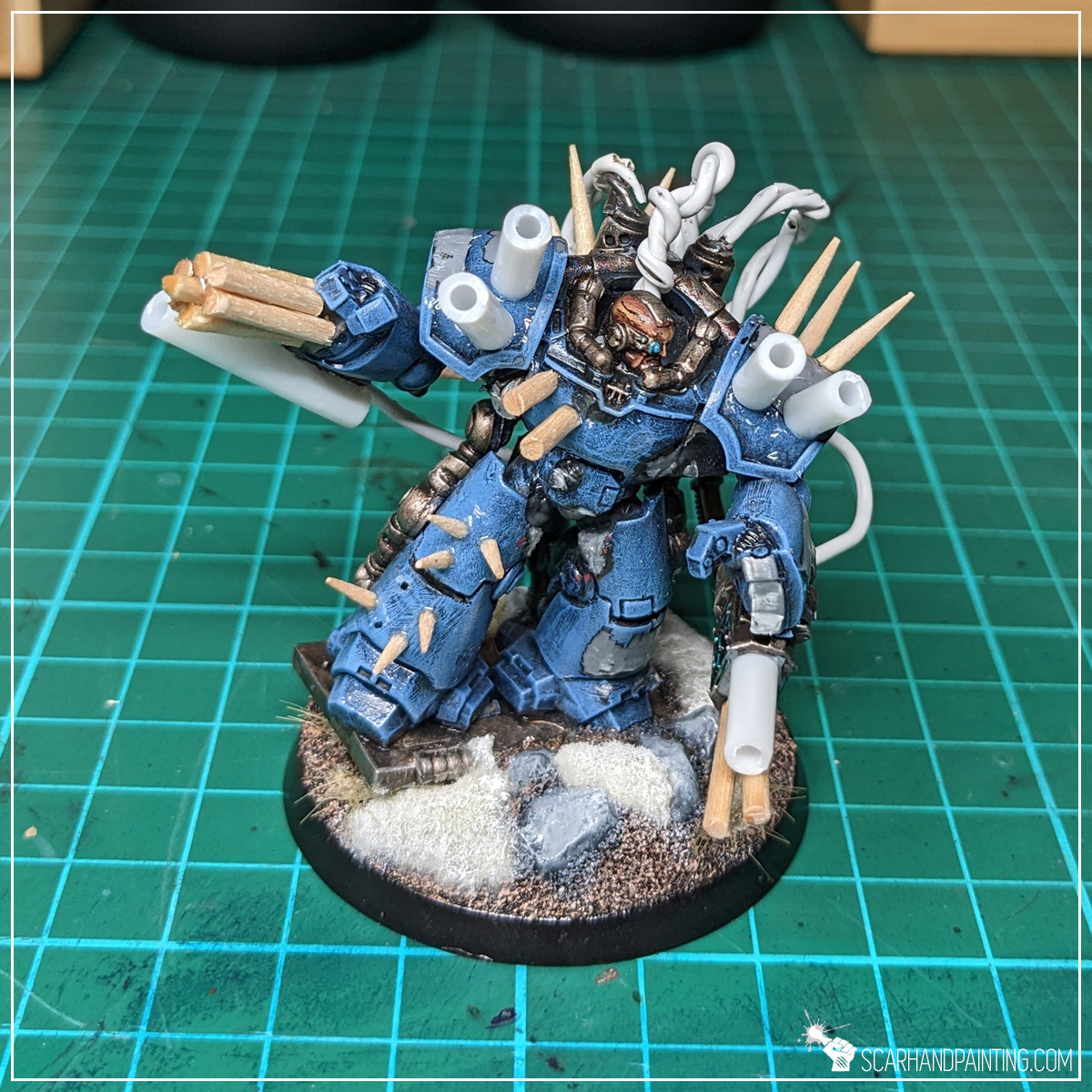
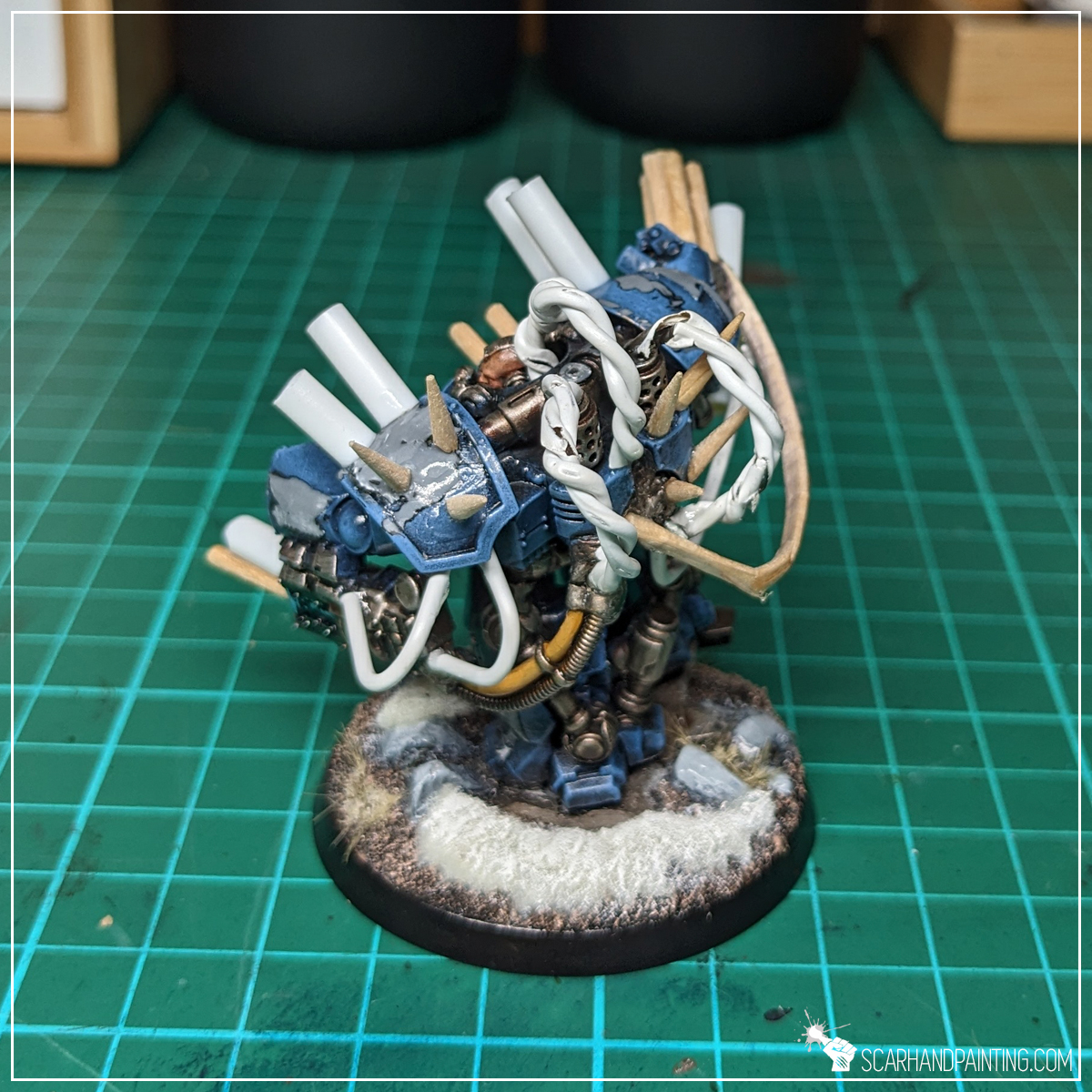
Step Four: Glue Goo Magic
I followed up with the favorite trick amongst my arsenal – a mix of PVA glue and Super Glue. First I applied some PVA onto the miniature, then right after, I applied Super Glue on top. I then started ‘dragging’ the goo around with a tip of a toothpick to form veins and some sort of meat chunks. The curing Super Glue twisted and hardened the PVA glue underneath – MAGIC!
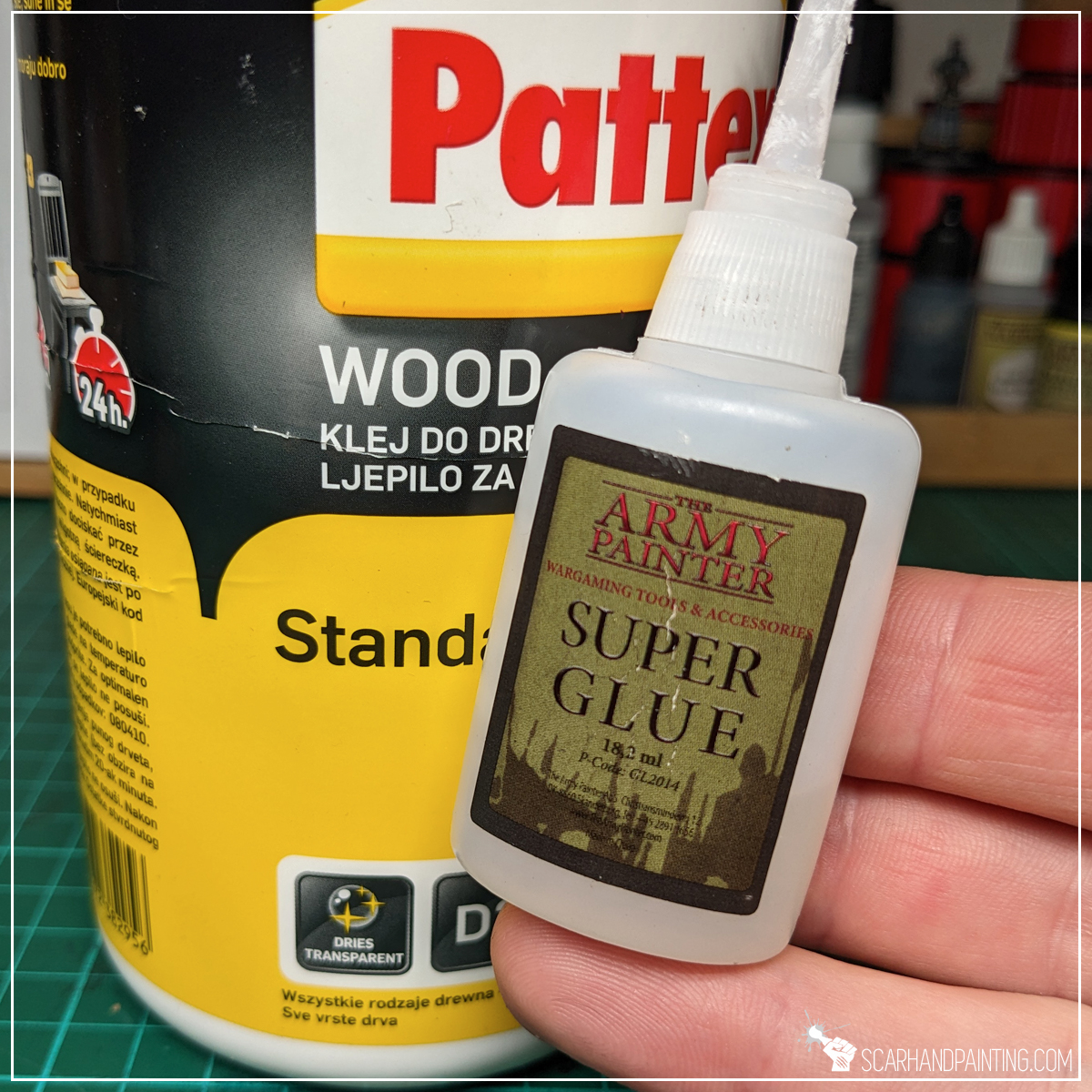
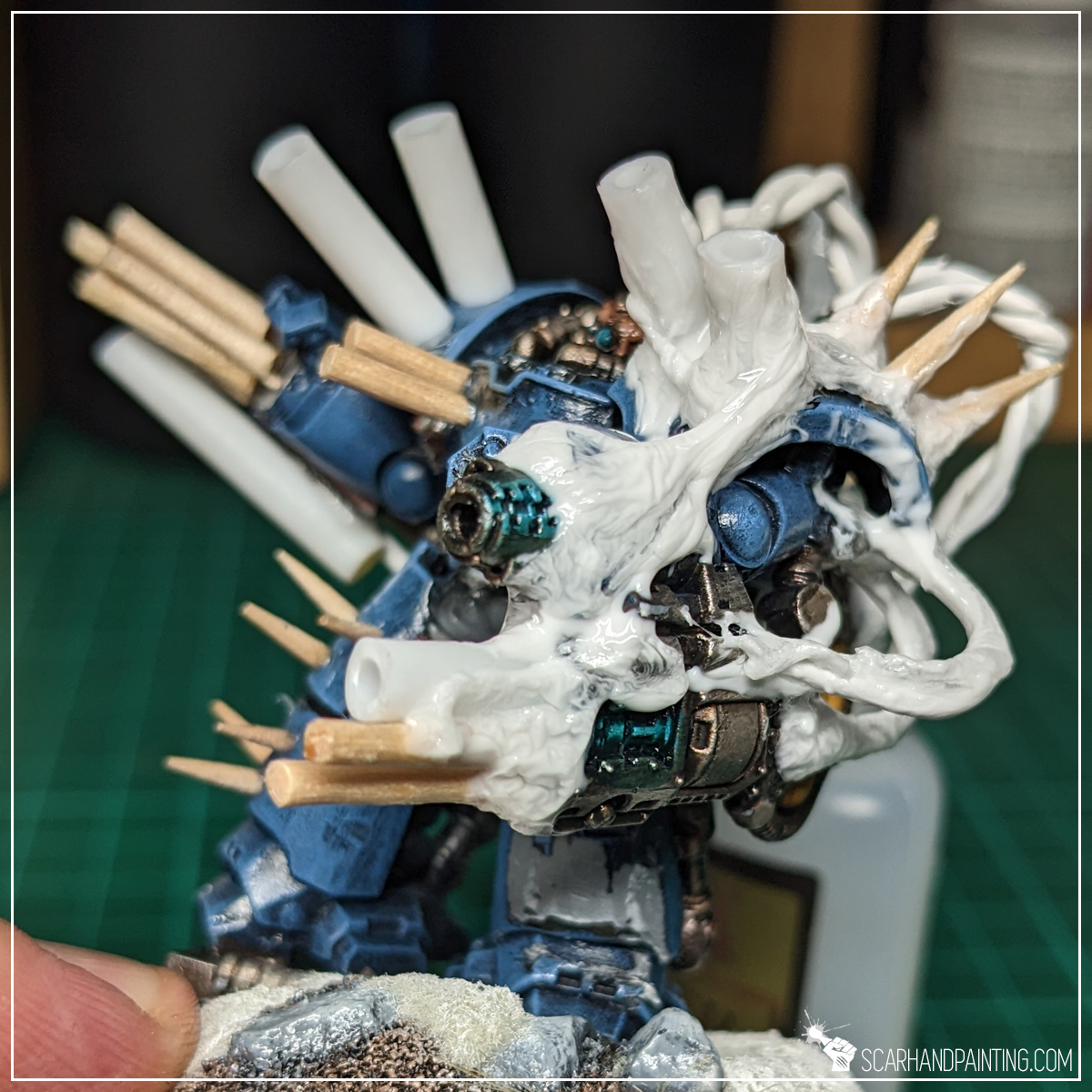
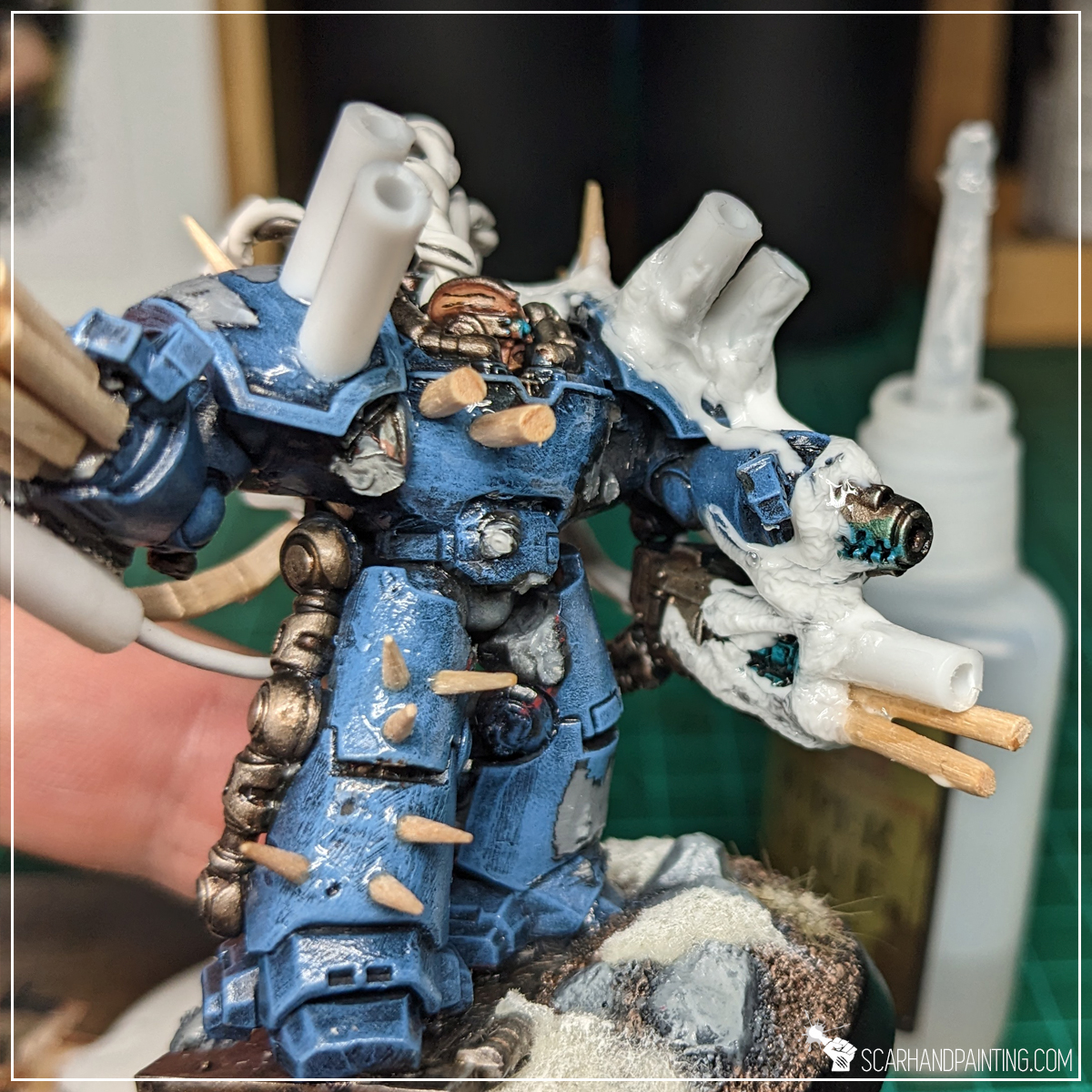
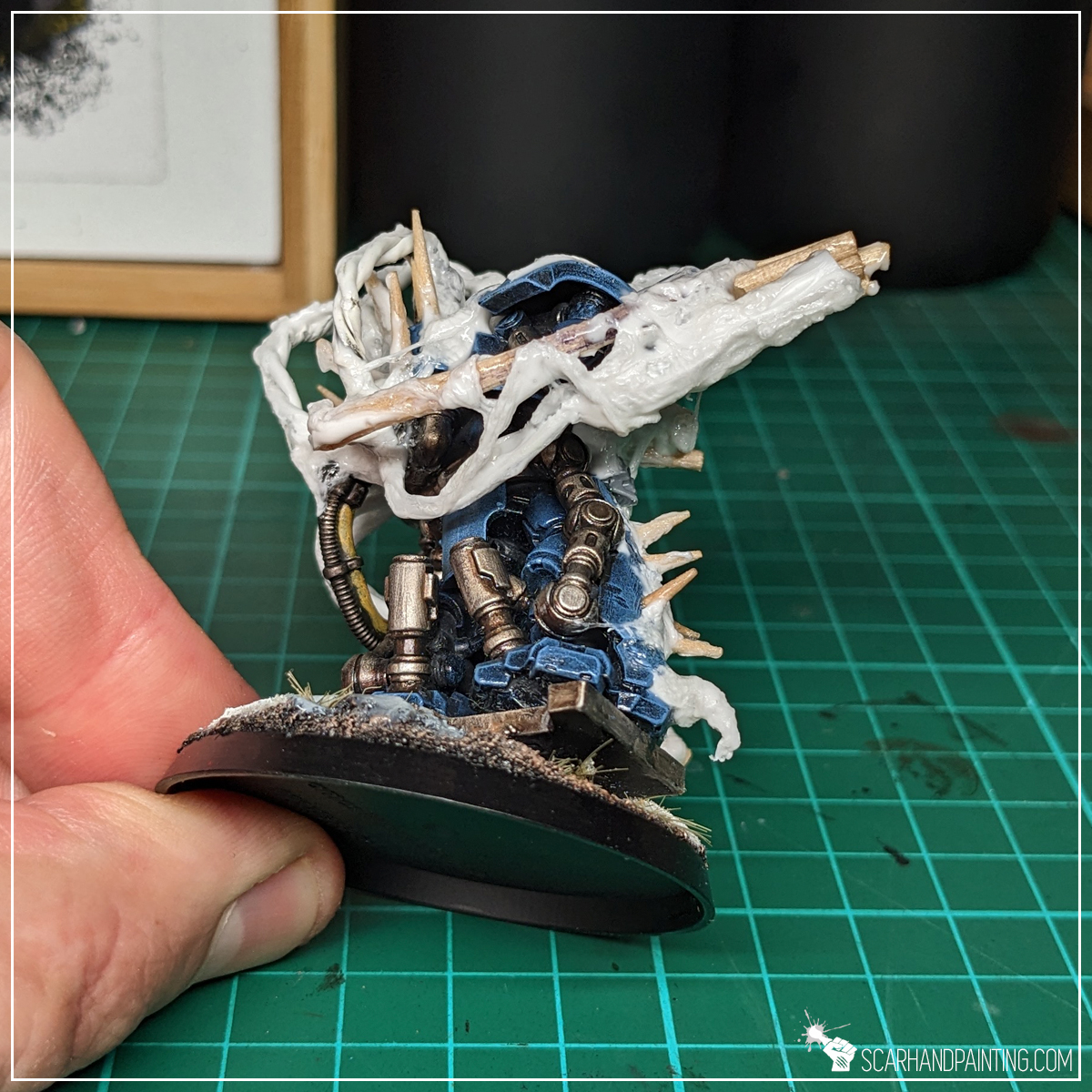
Step Five: Additional Detail
Here’s where I would usually add some leftover bitz. For this particular miniature I glued three skulls here and there to better represent the theme of ‘big bad Chaos thing’, but I invite you to experiment with stuff. I just wanted to keep things simple.
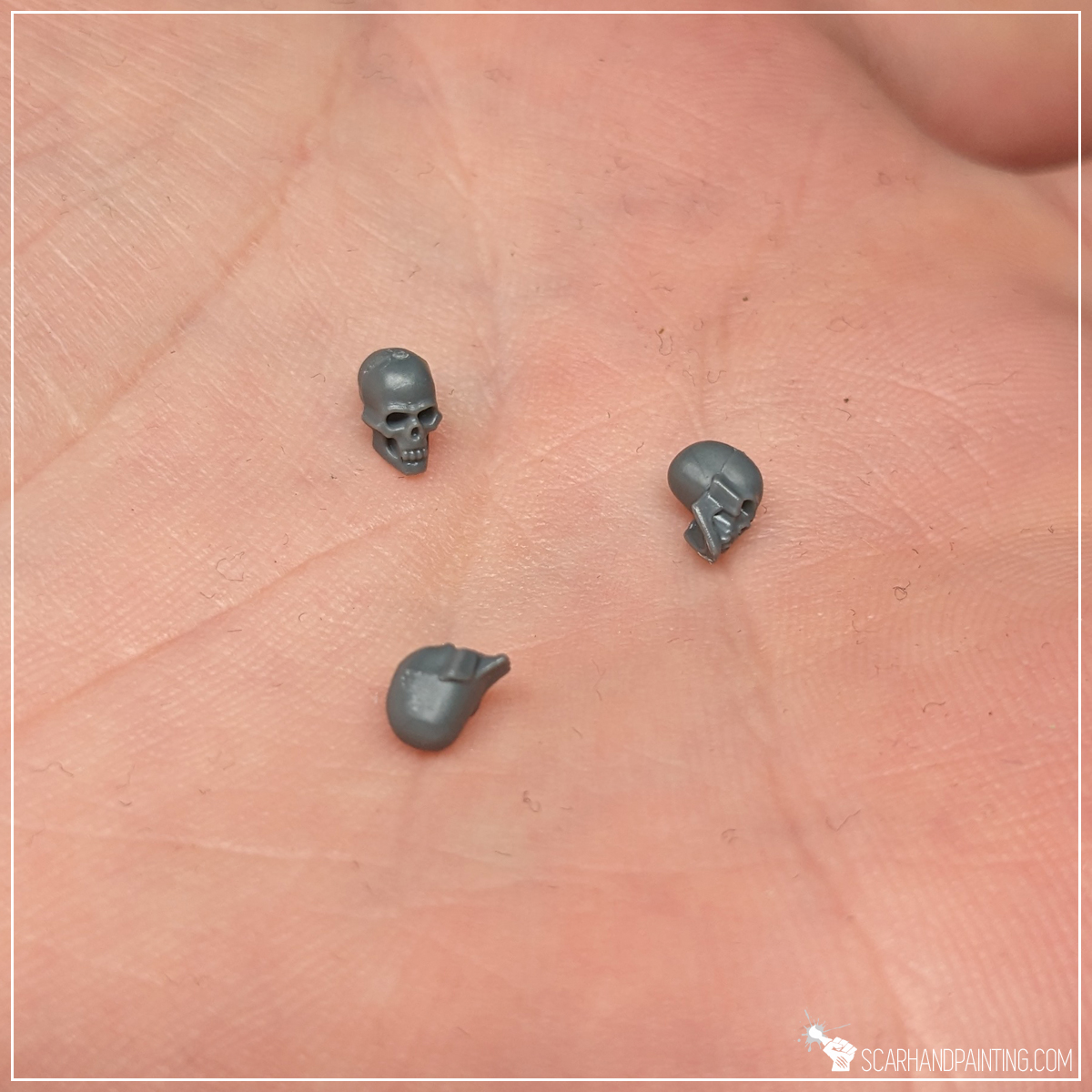
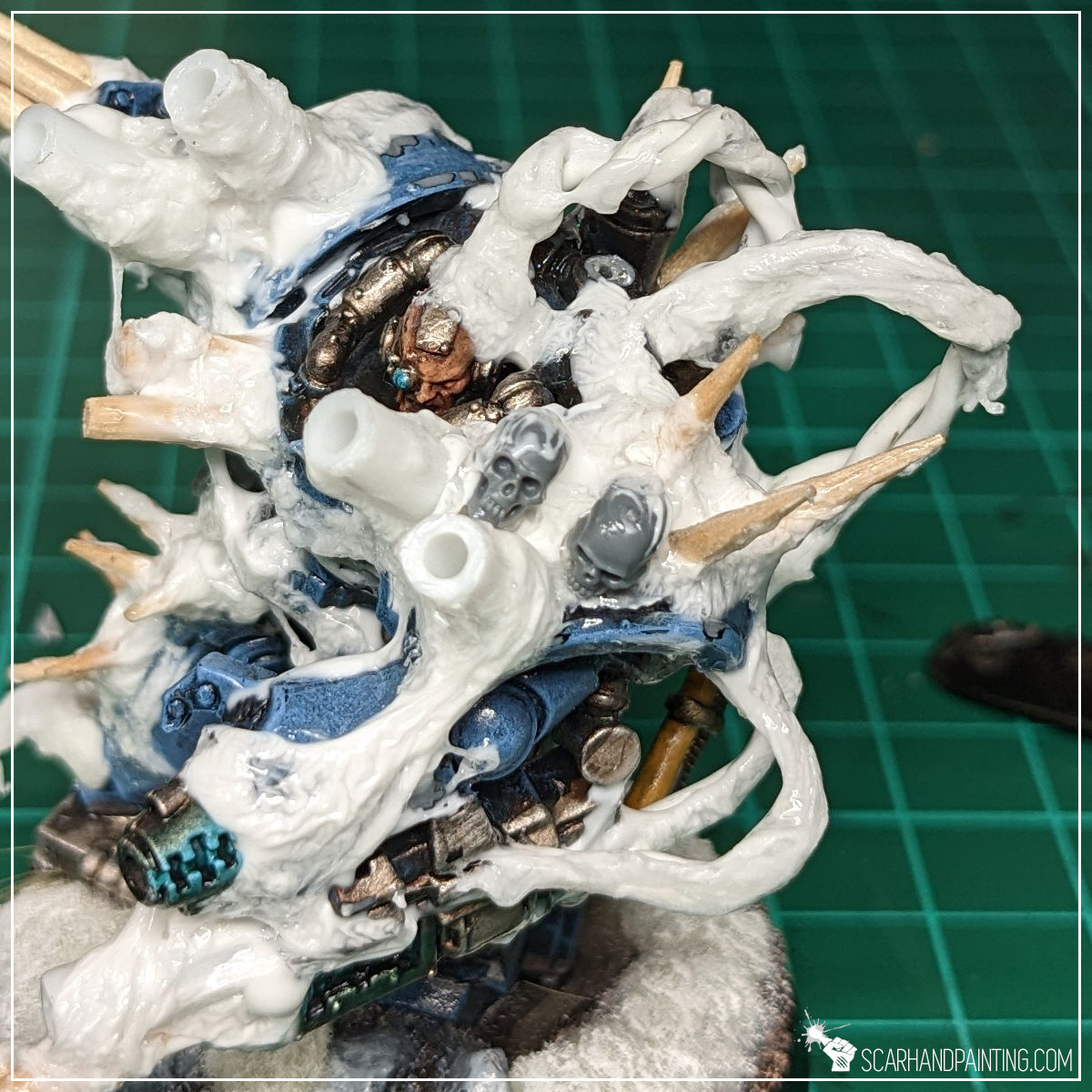
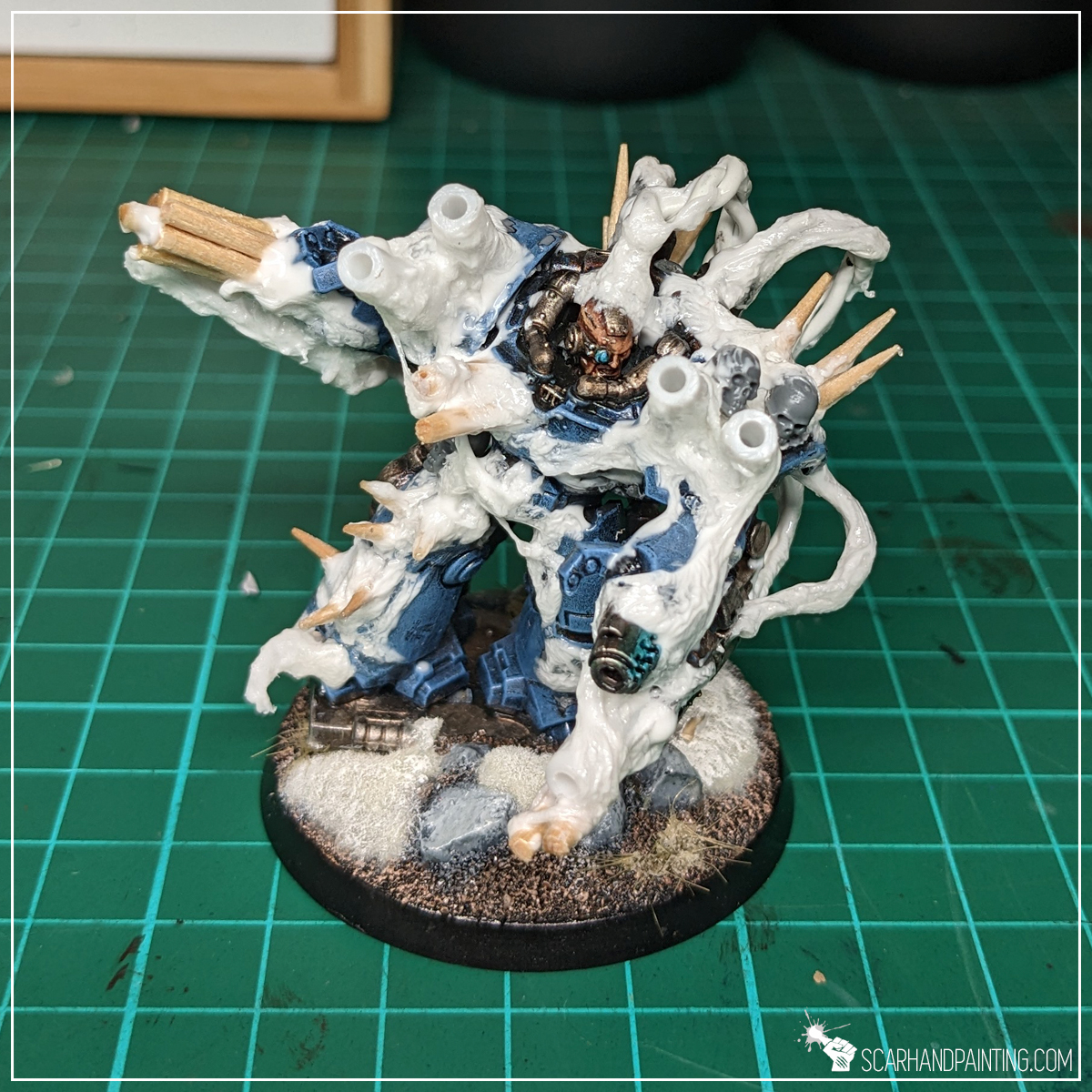
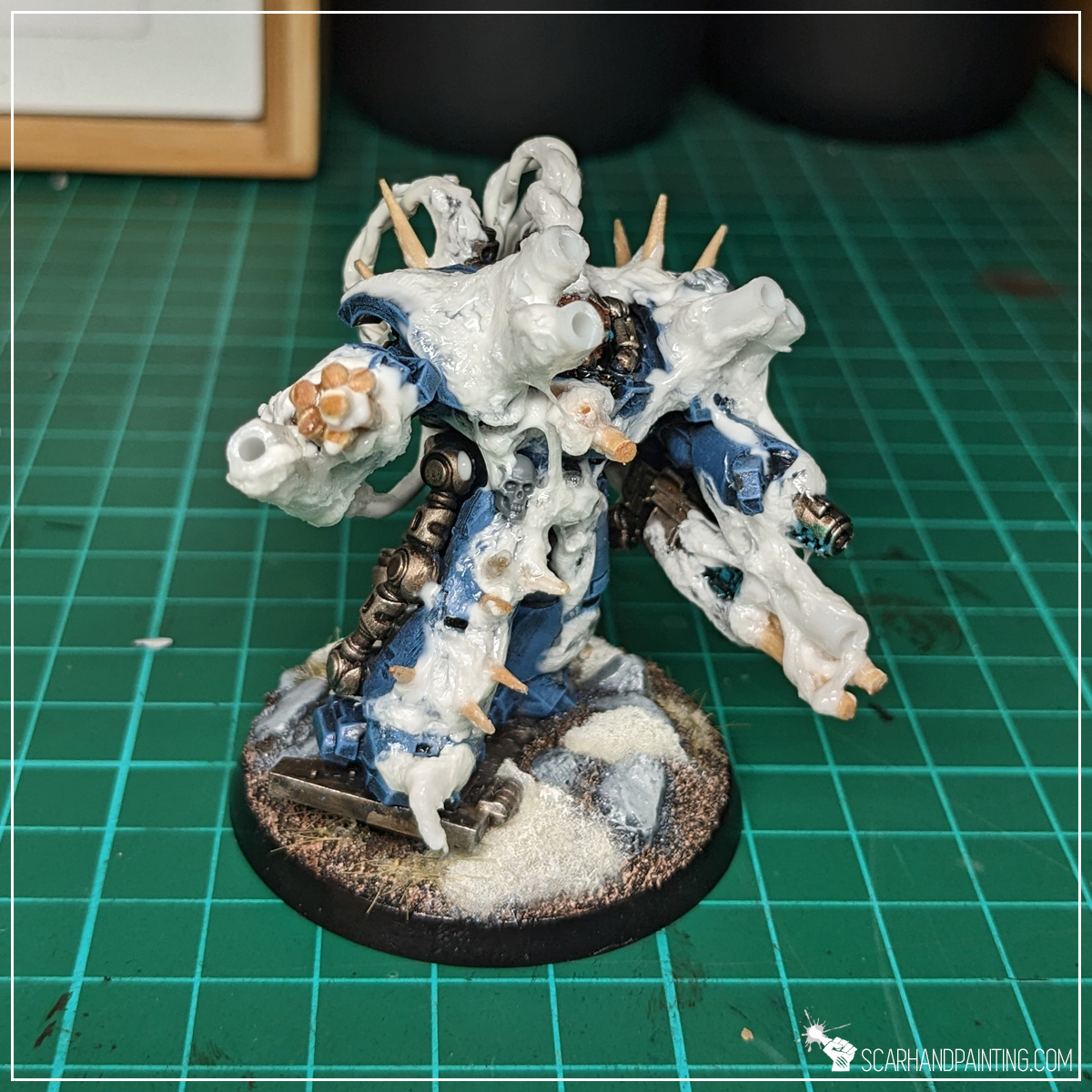
Job done – seriously. I know the miniature above looks like crap, but just take a look at this undercoated, drybrushed Chaos Obliterator below. It took me less than ten minutes to make and cost as much as an old mini that hadn’t seen action in a decade!
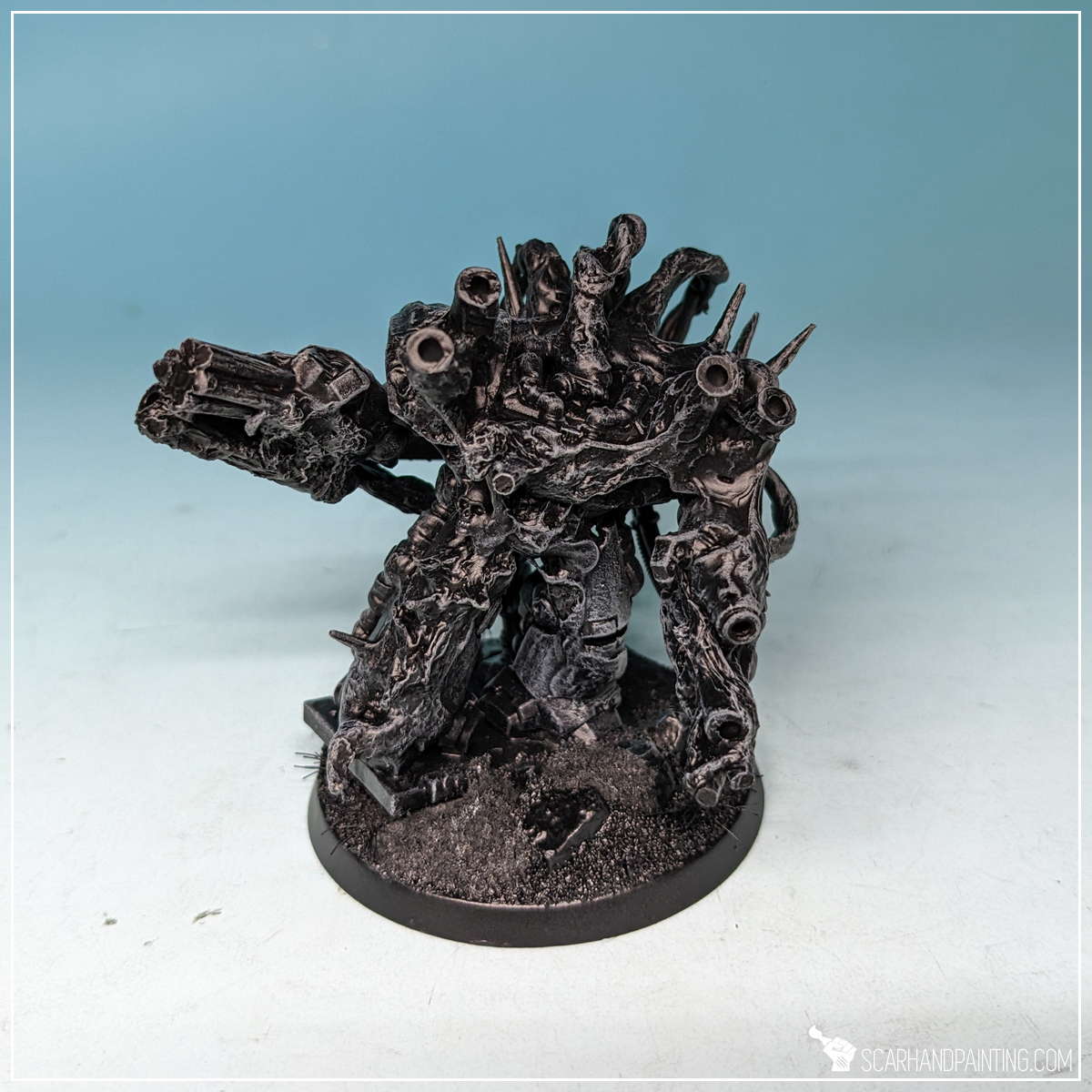
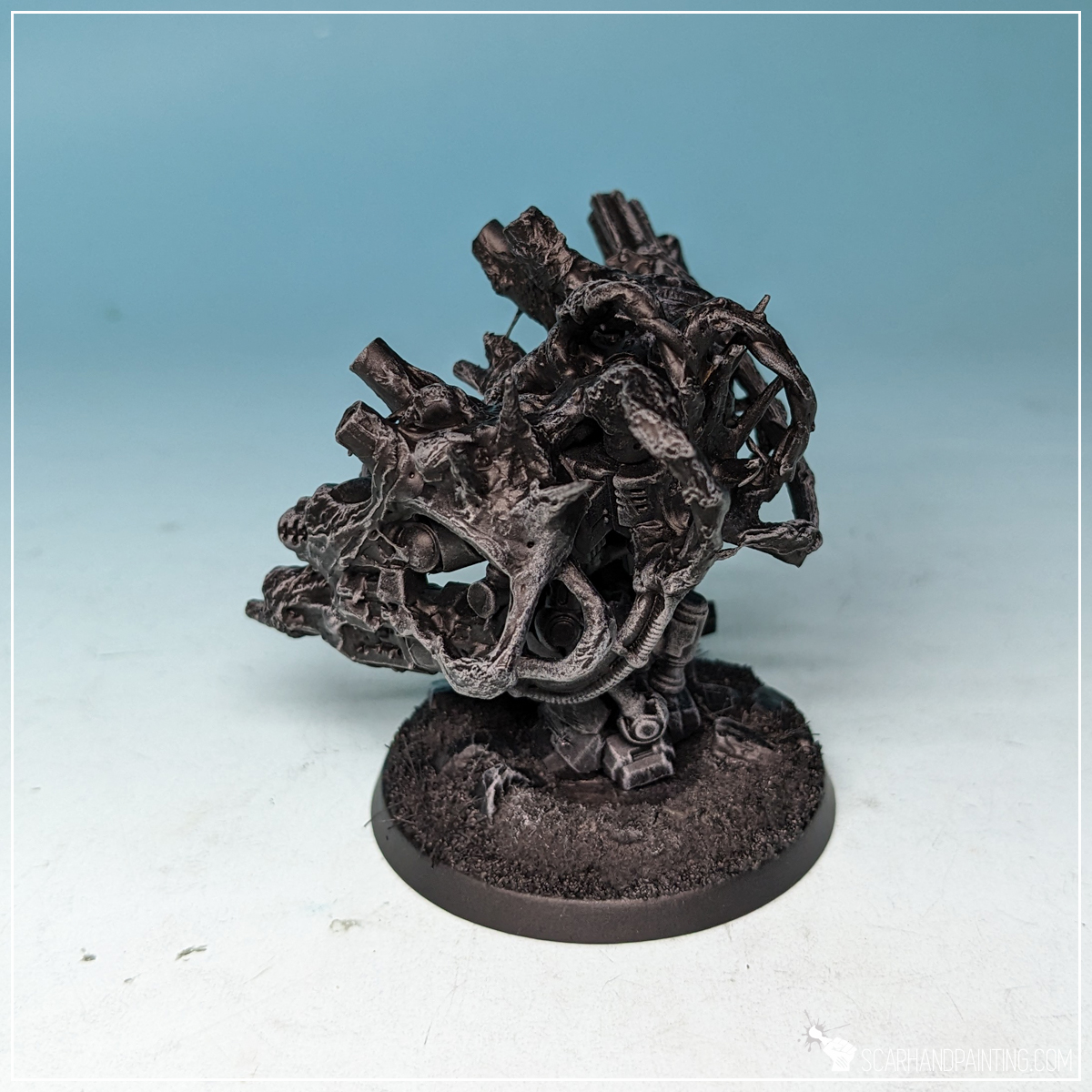
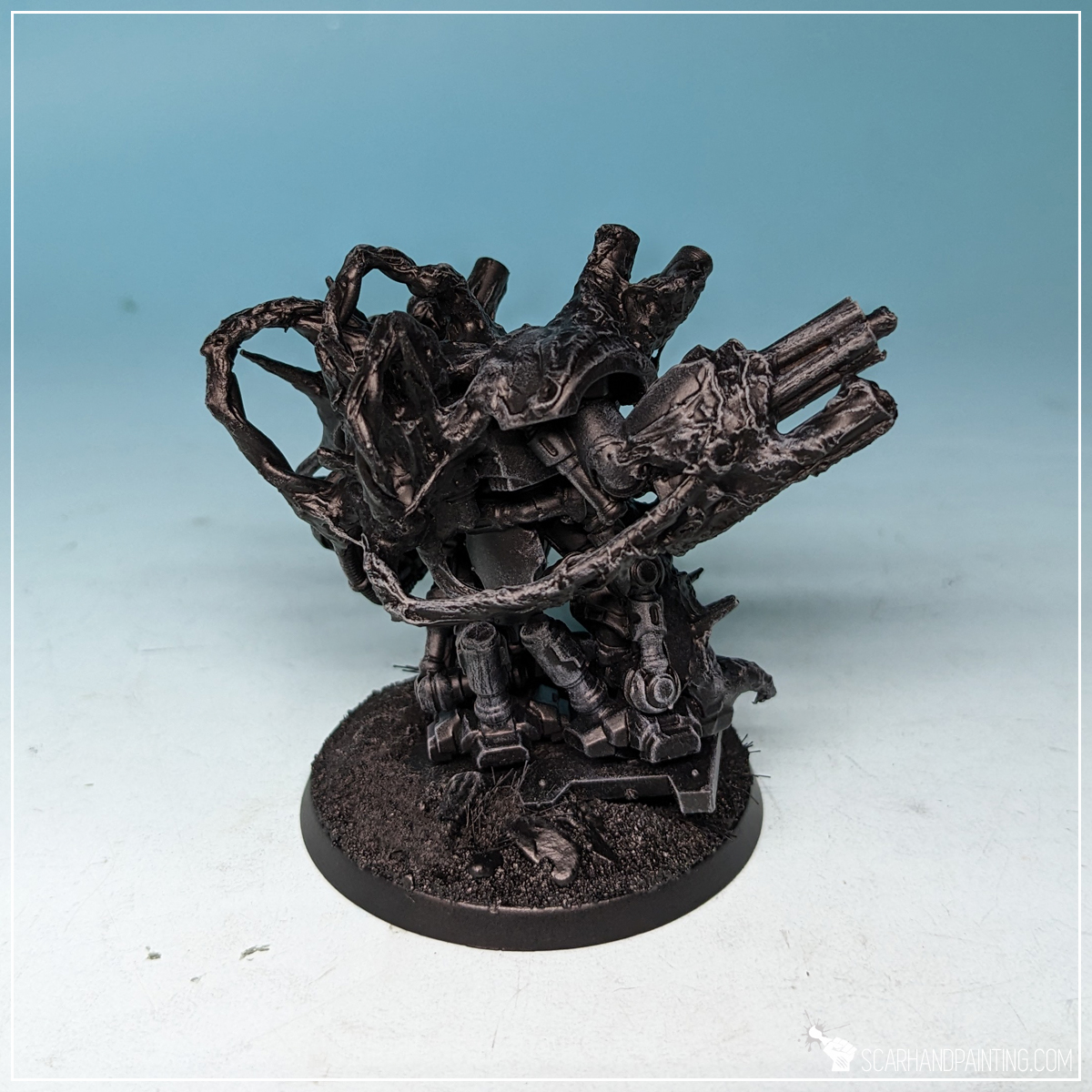
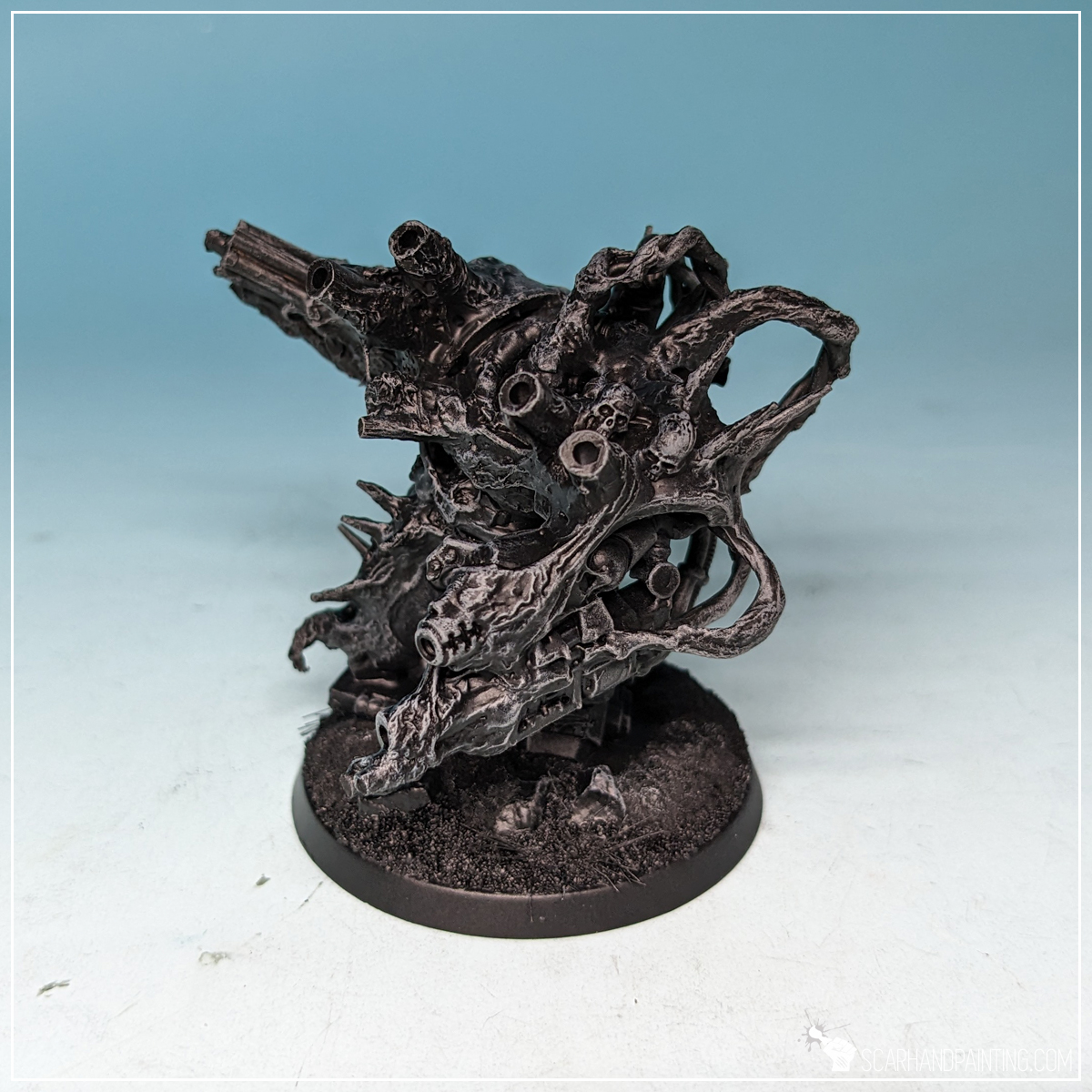
I hope you’ve enjoyed this article. Be sure to let me know your thoughts in the comments below or via Facebook or Instagram. I would also appreciate it if you considered sharing this content with your friends, who might find it interesting. Finally if you are looking for a professional miniatures painting service, be sure to contact me with this contact form. I always reply within 24 hours, after which please check out your spam folder.

Who wouldn’t like to play games on a highly detailed, great looking scenery? Fortunately for us – hobbyists, we’re living in times of abundance. Not only is the market saturated with ready to buy awesome scenery elements, but there are many ways to make our own scenery from scratch. Today I’m here to share with you the latter – my method of scratch building well textured, interesting looking trees, of any size and shape!
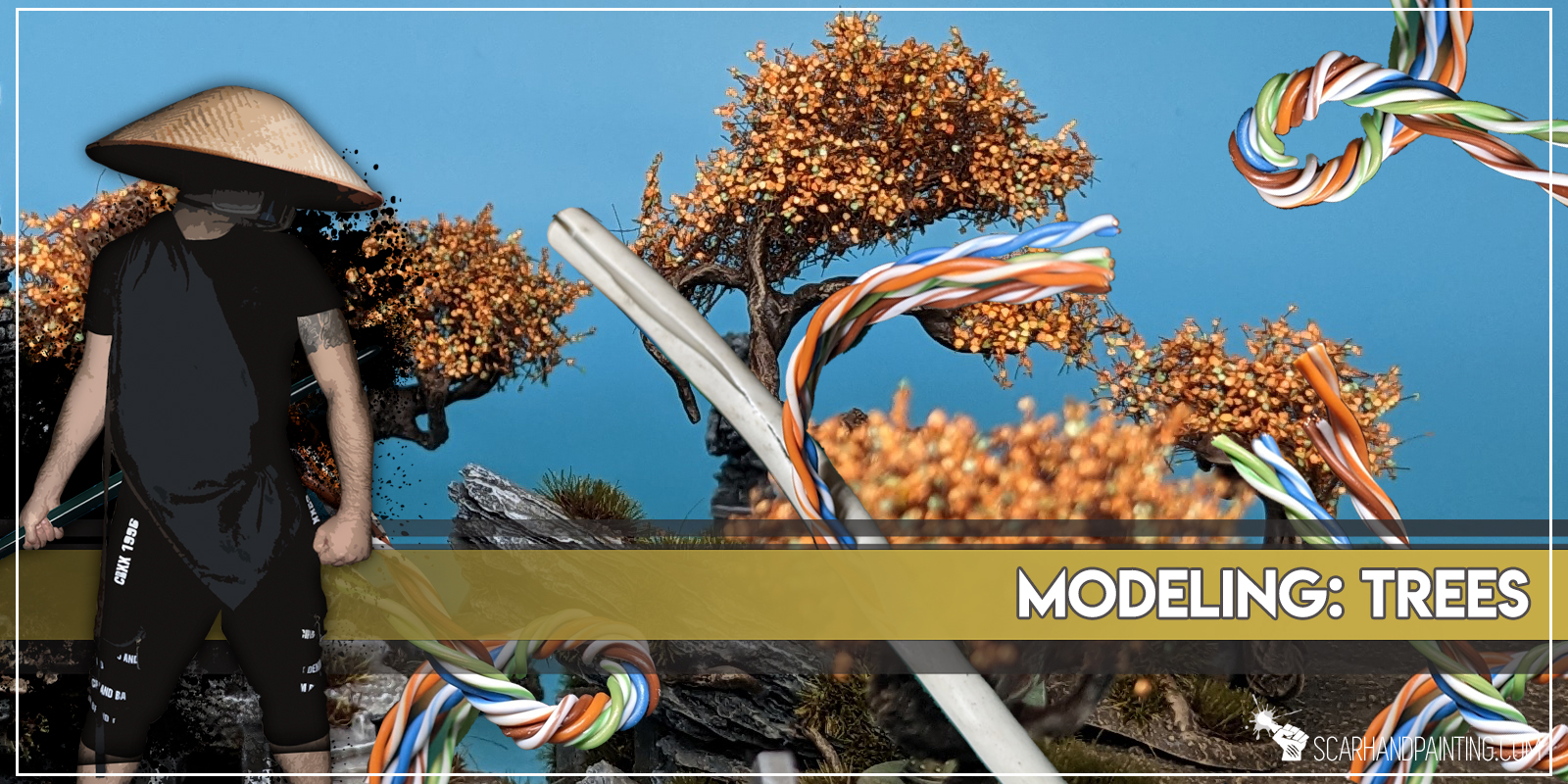
Before we start, some notes:
Just recently I decided to finally let my 10mm scale itch loose and commit to a new scenery related project. I chose a dark, fantasy theme for it, so alongside crumbling ruins, rocky hills peppered with tombstones I needed some twisted, creeping trees to better tell a story of the glory times long gone. Making scenery from scratch allows us to tell a different short story with each individual piece. This can only be enhanced with self made trees of any size and shape, thus I decided to go this route. The resulting Ghasthollows Cemetery set speaks for itself.
Without further ado here’s how I went about it…
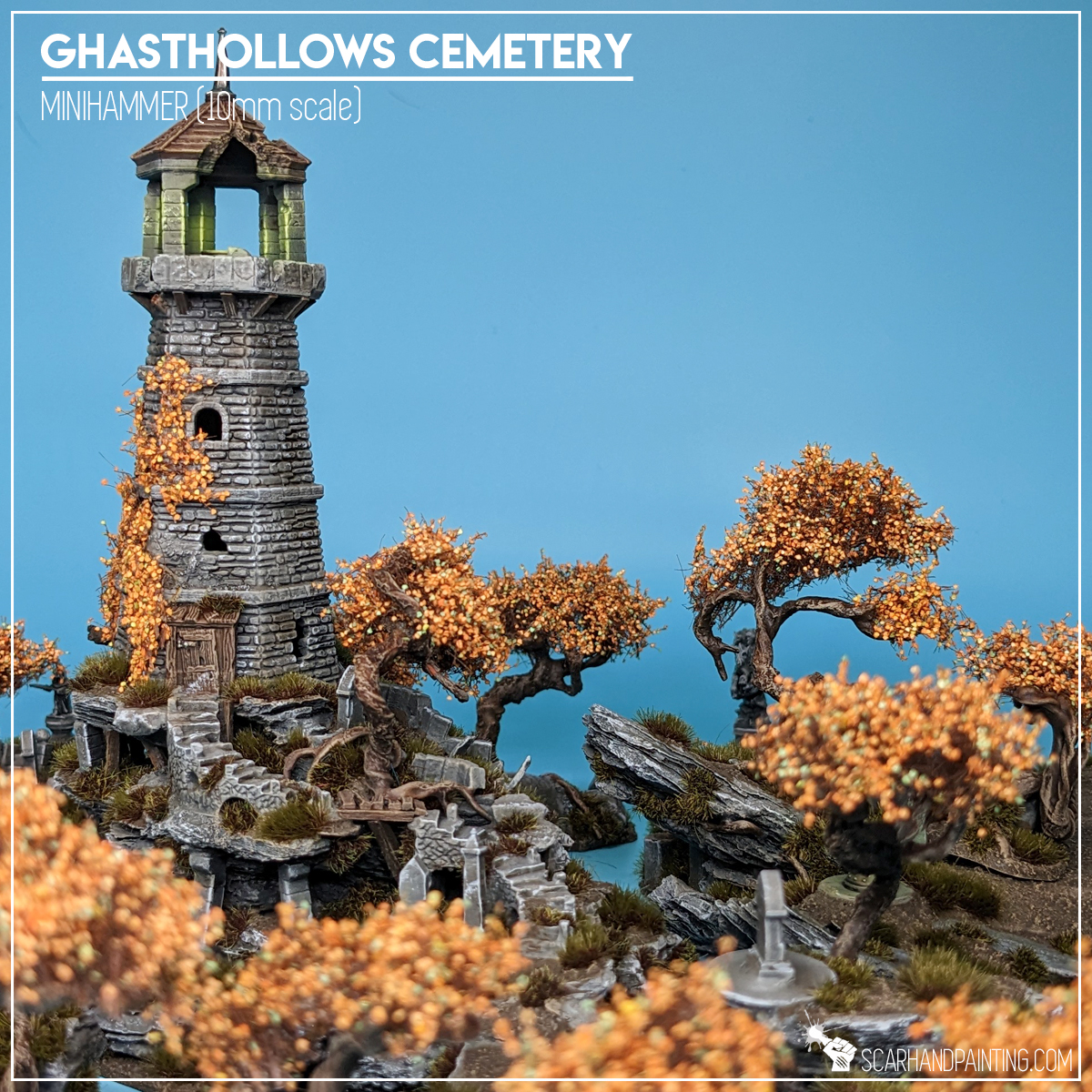
Step One: Trunks
I have started by butchering an old Ethernet cable, removing the rubber cover and pulling out small rubber protected ones. I deliberately chose this type of cable because of the rubber shielding the wires inside. I have observed paint sticking onto it much better than to smooth metal surfaces.
Next I have cut a few pieces of similar size and bundled them together, twisting them in the middle to form tree trunks and leaving top and bottom parts separated.
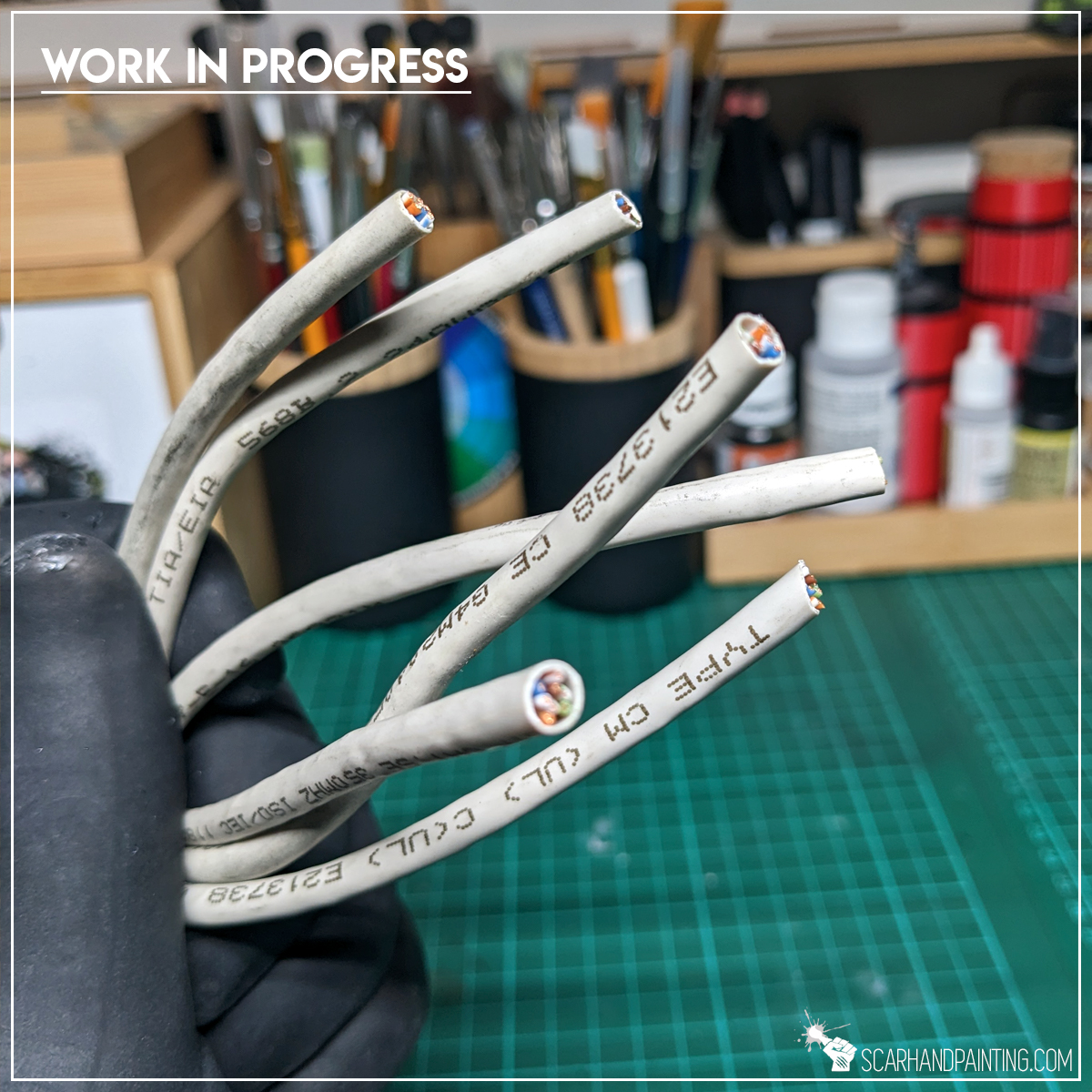
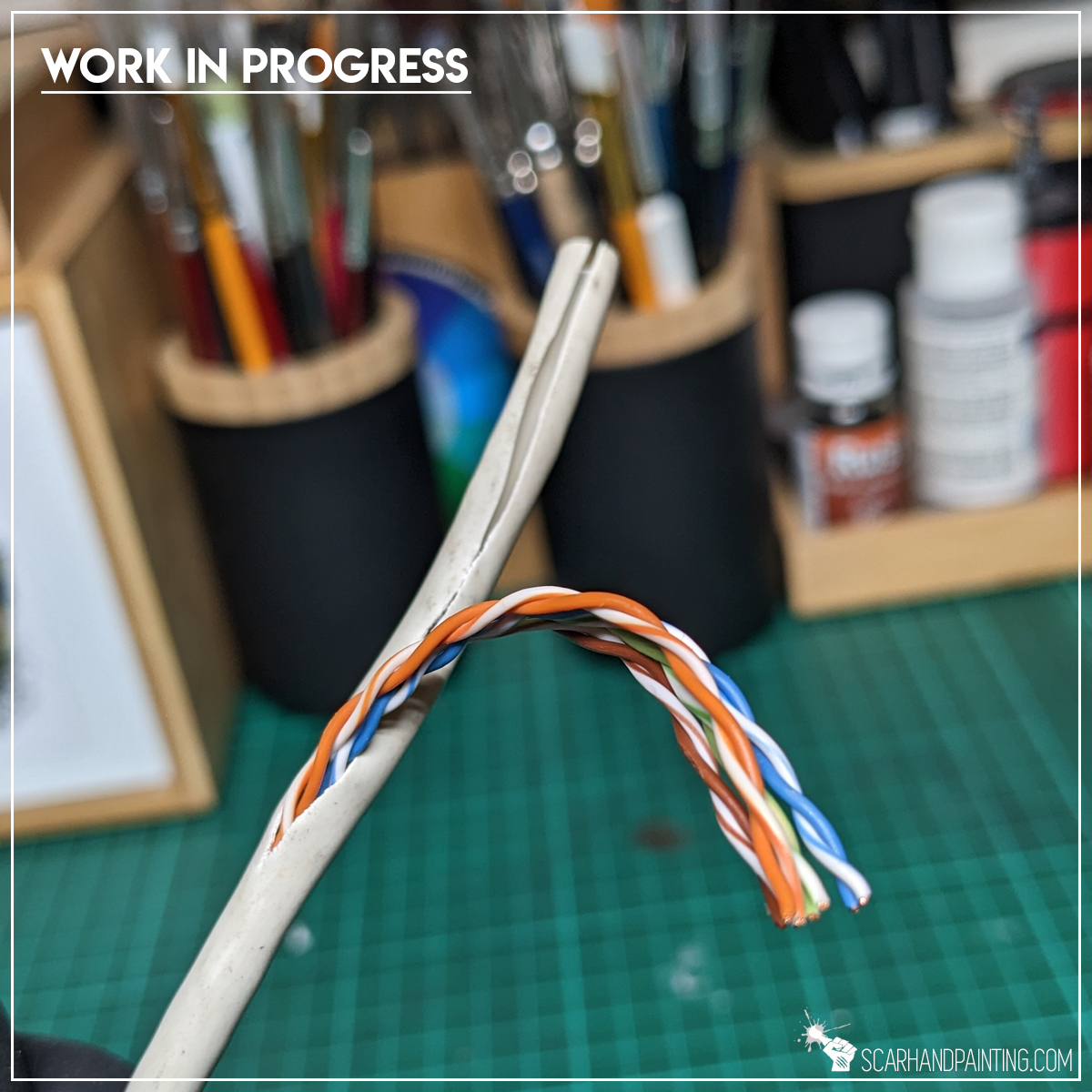
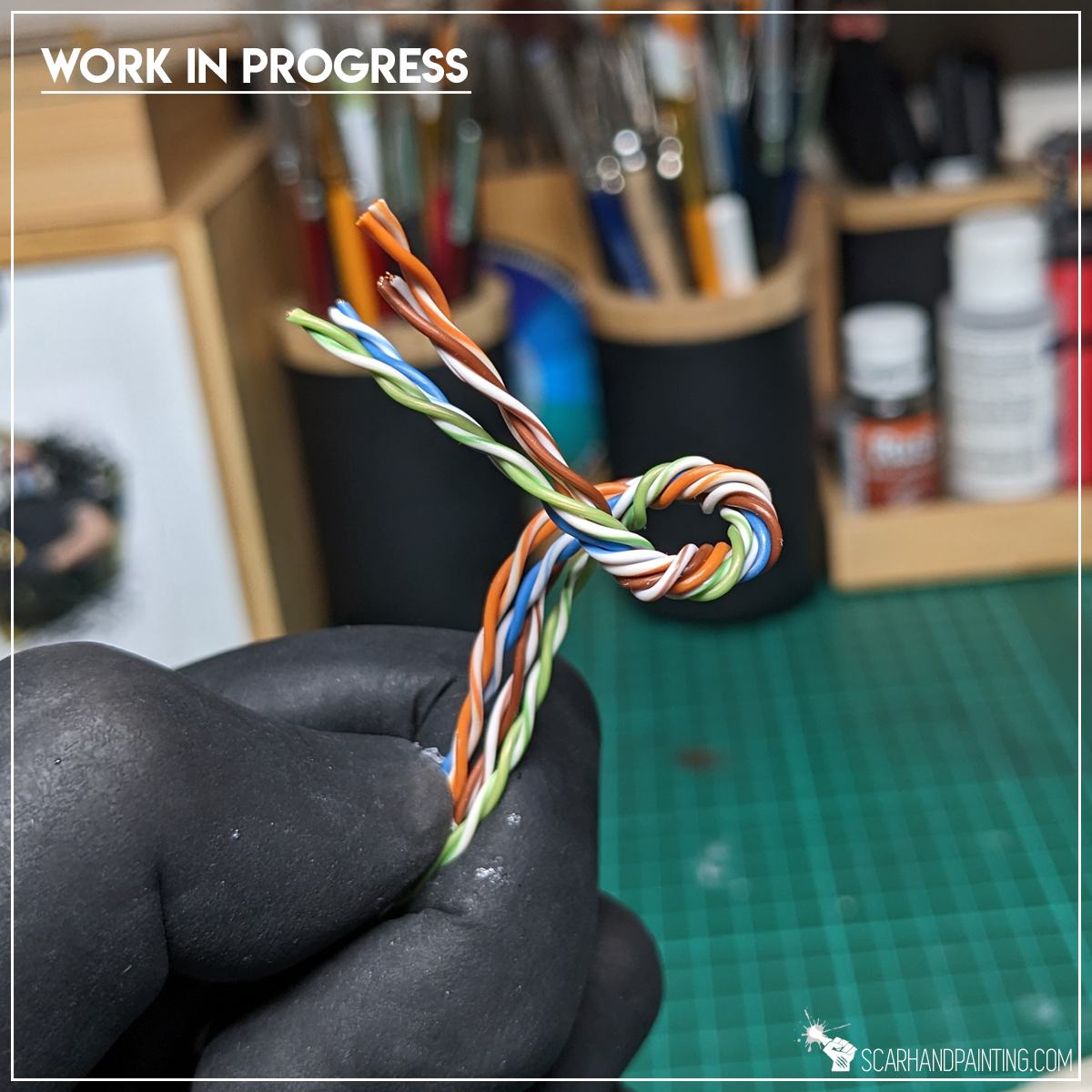
Step Two: Roots and Branches
Next I based the tree, first forming roots from the lower wires with a set of solid tweezers and then sealing them alongside the trunk with Super Glue. Once dry I then formed upper branches and sealed them with Super Glue using the same method.
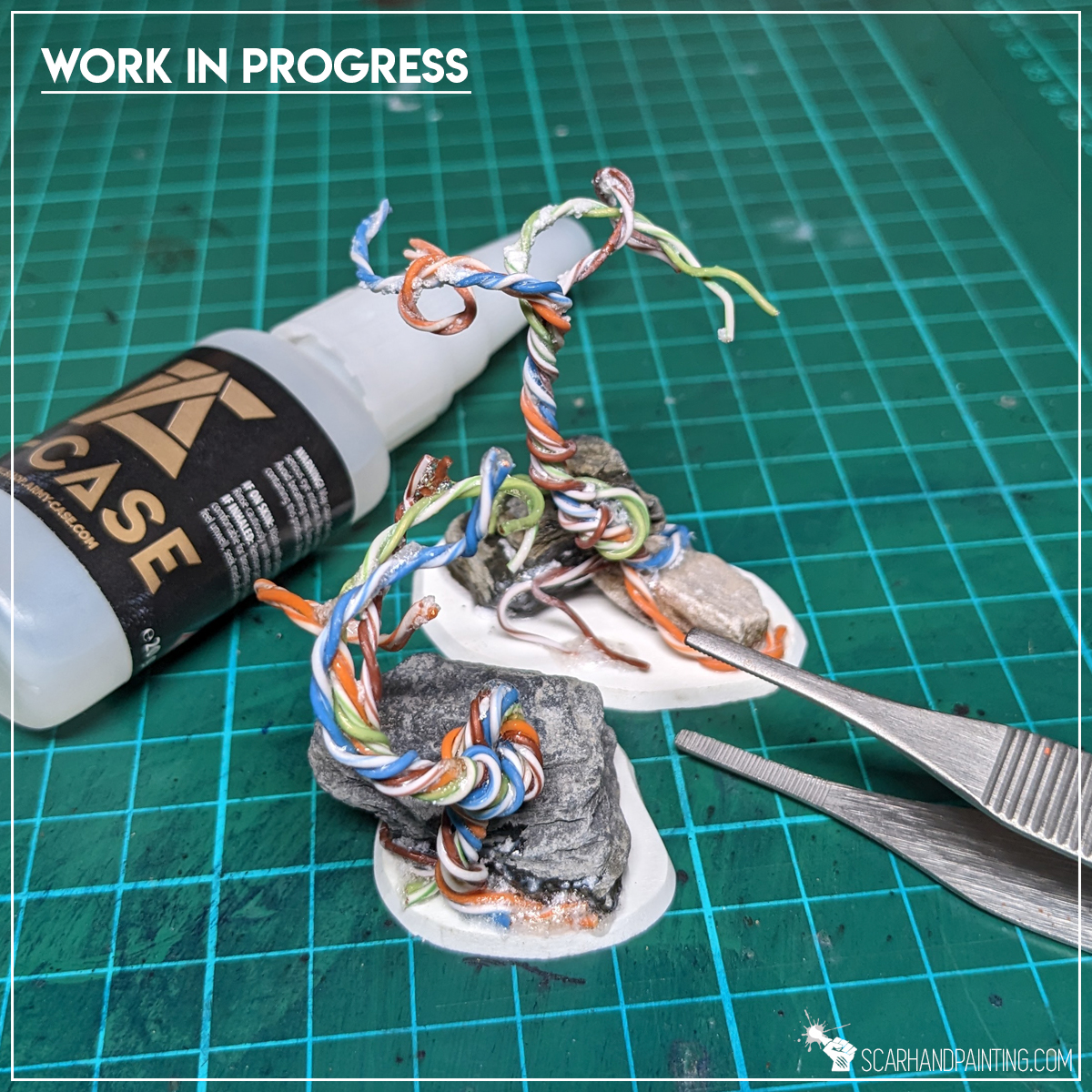
Step Three: Texture
To add texture and increase durability I covered the entire tree with PVA glue, immediately applied Super Glue on top and sealed it with Super Glue Activator. This way I ended up with solid, sturdy trees covered with a mix of twisted veins / rough bark-like texture.
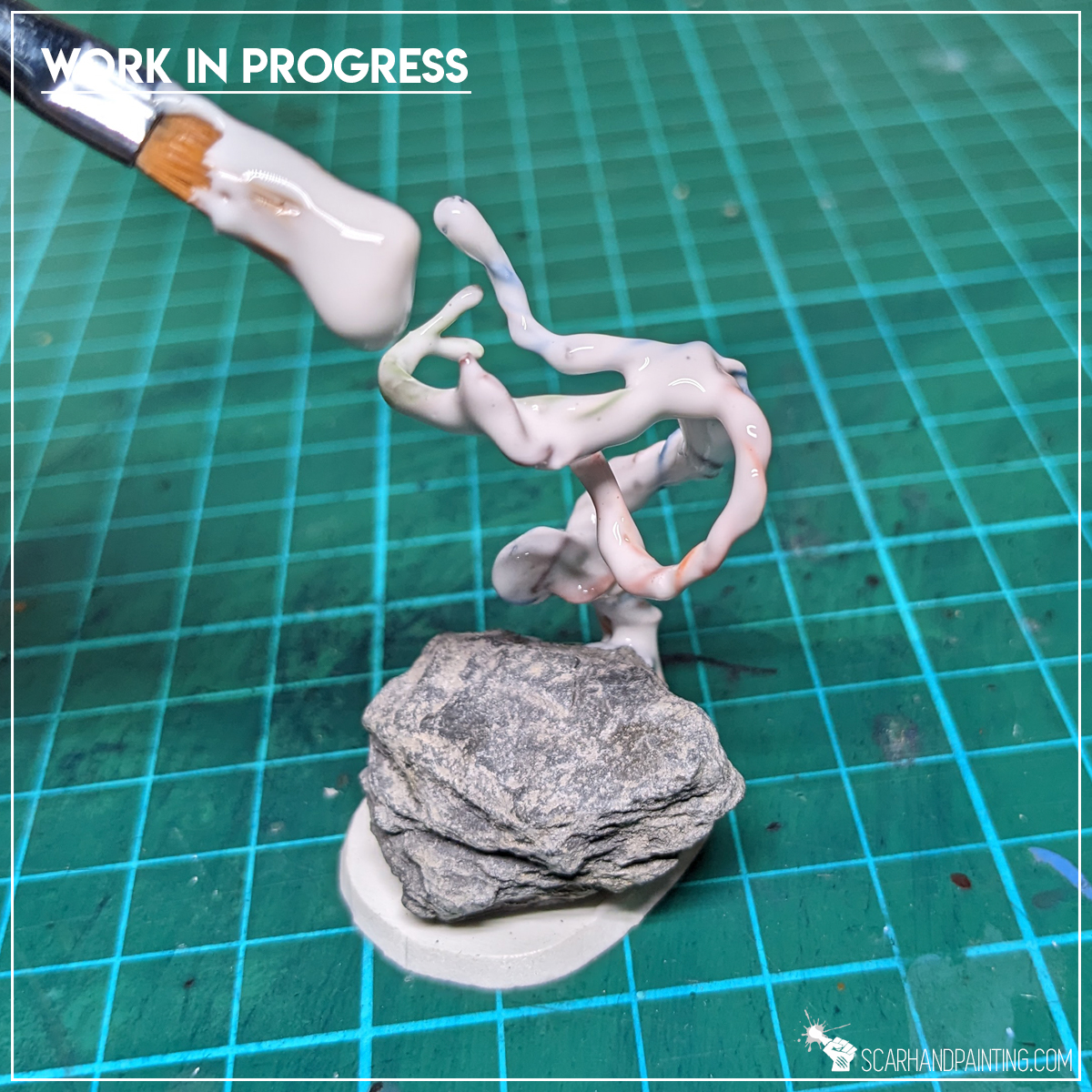
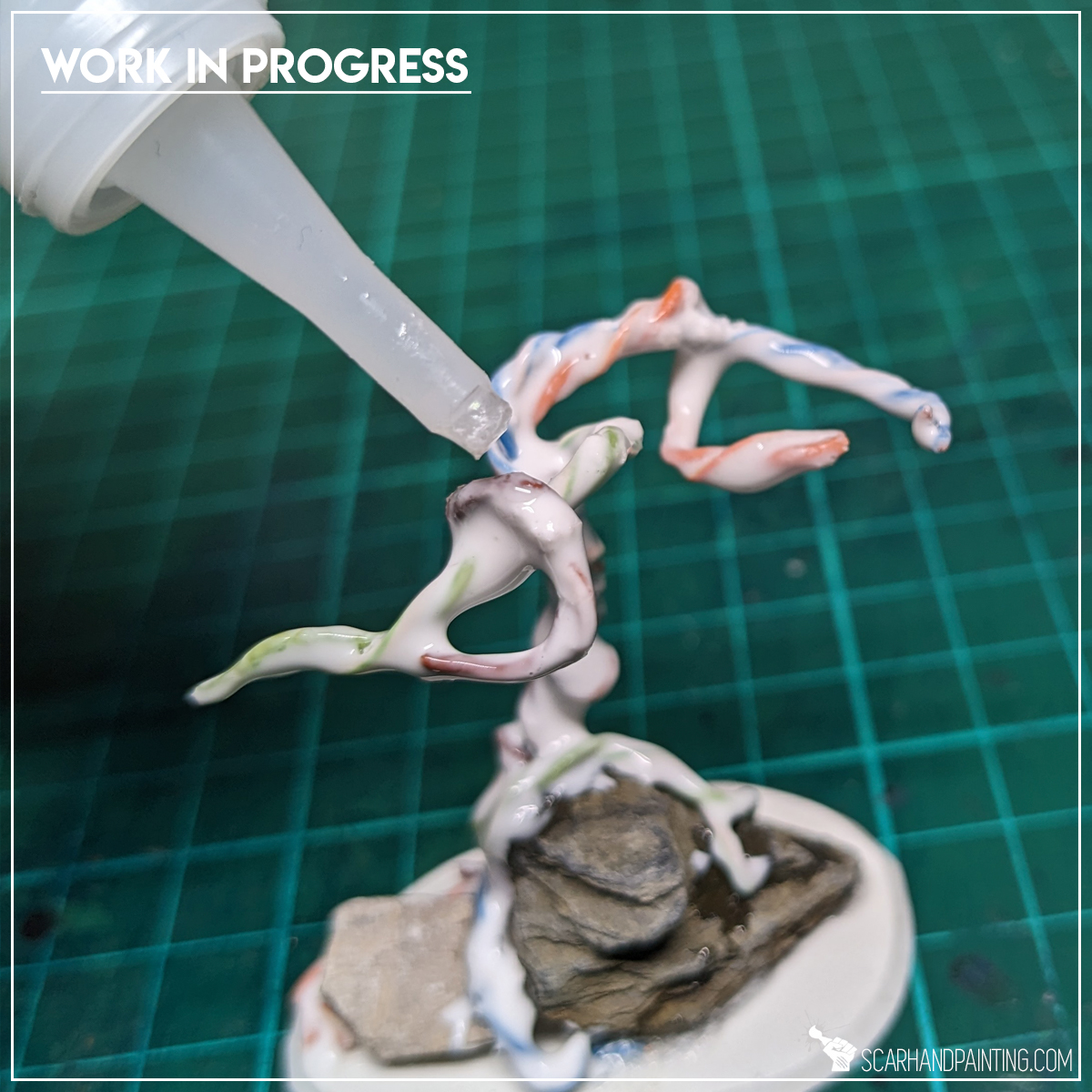
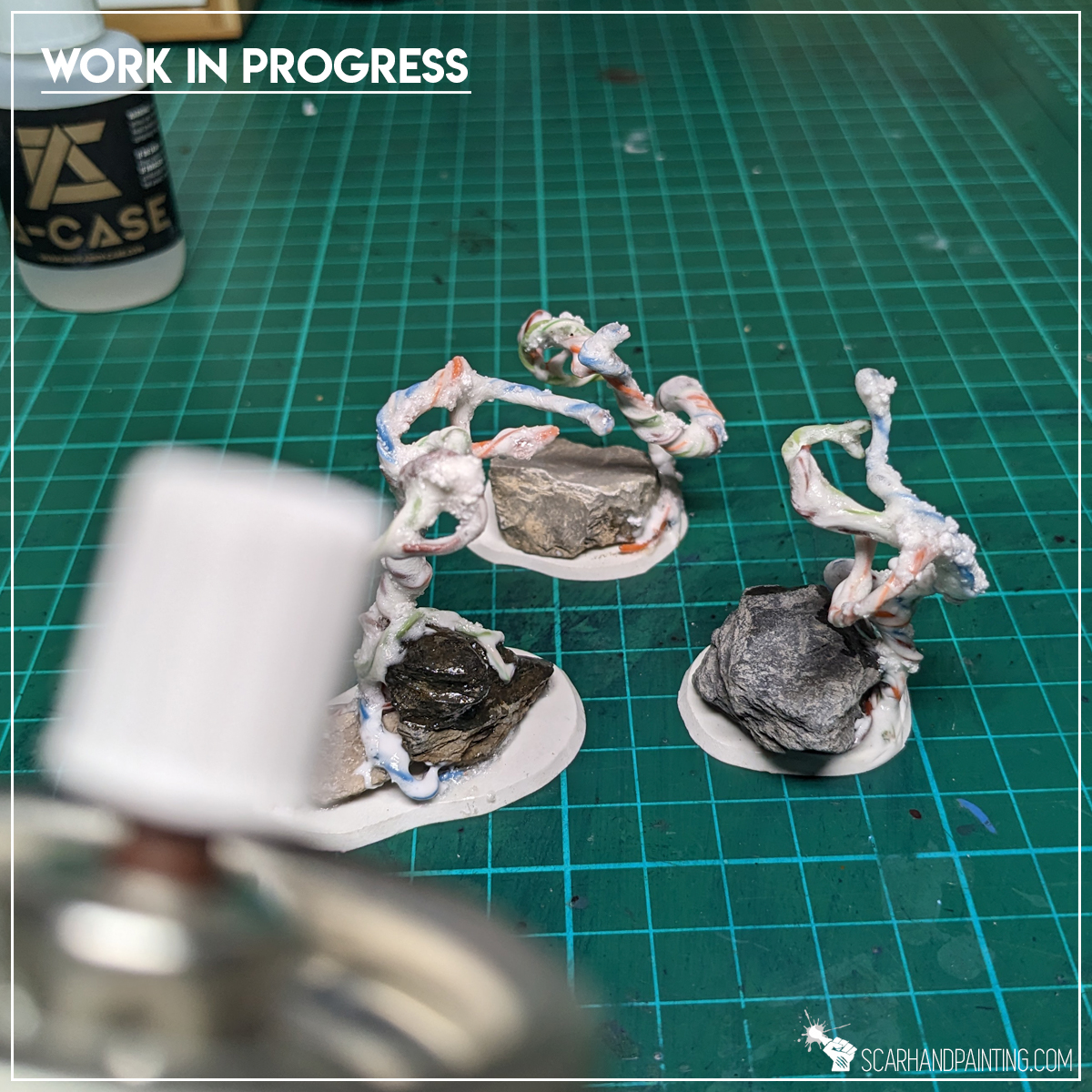
…Painting
This one I leave up to you. Everyone have their own painting preferences, depending on scale and the effect they’re aiming for. My set was painted with grey pre-shades on black undercoat, then covered in brown contrast like paint to finally get a drybrush od bright sandy-brown. Nothing special, but on a 10mm scale it really does the job.
Step Four: Foliage
As a final touch I applied just a bit of Super Glue on top of each branch then, using a set of tweezers, glued a small canopy made of Green Stuff World Tall Shrubbery on top. I then sealed it with Vallejo Polyurethane Matt Varnish airbrushed all over, to keep small specks from falling off.
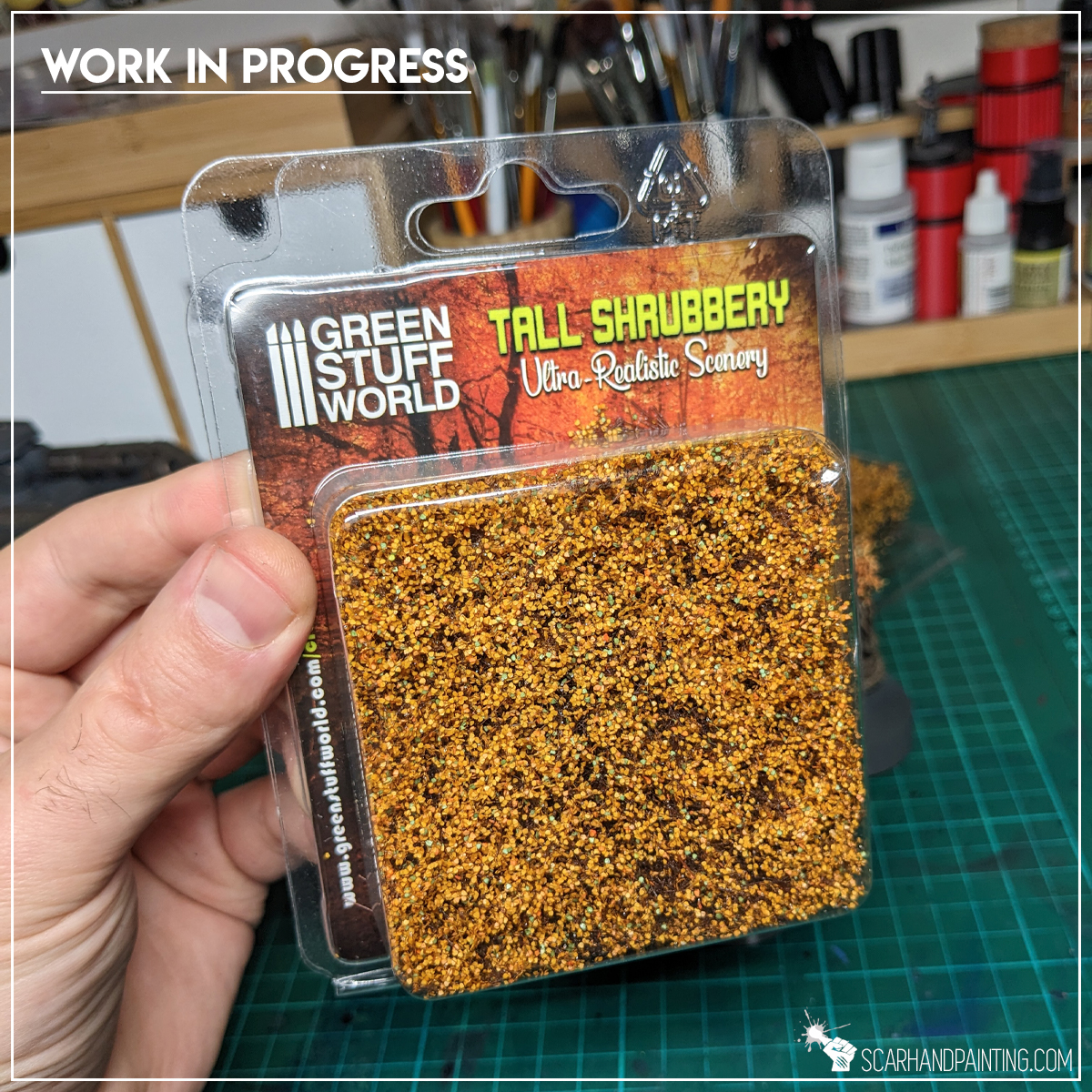
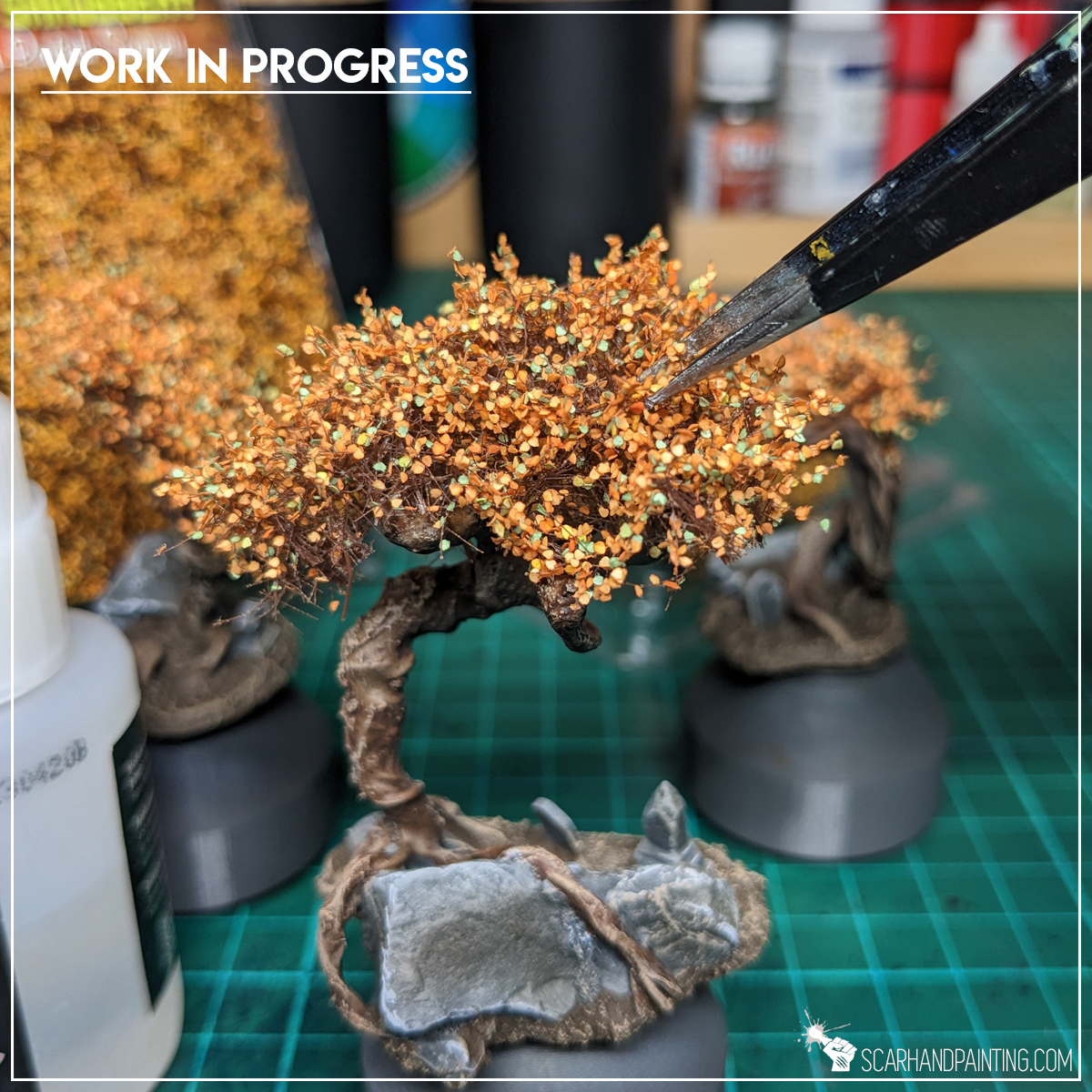
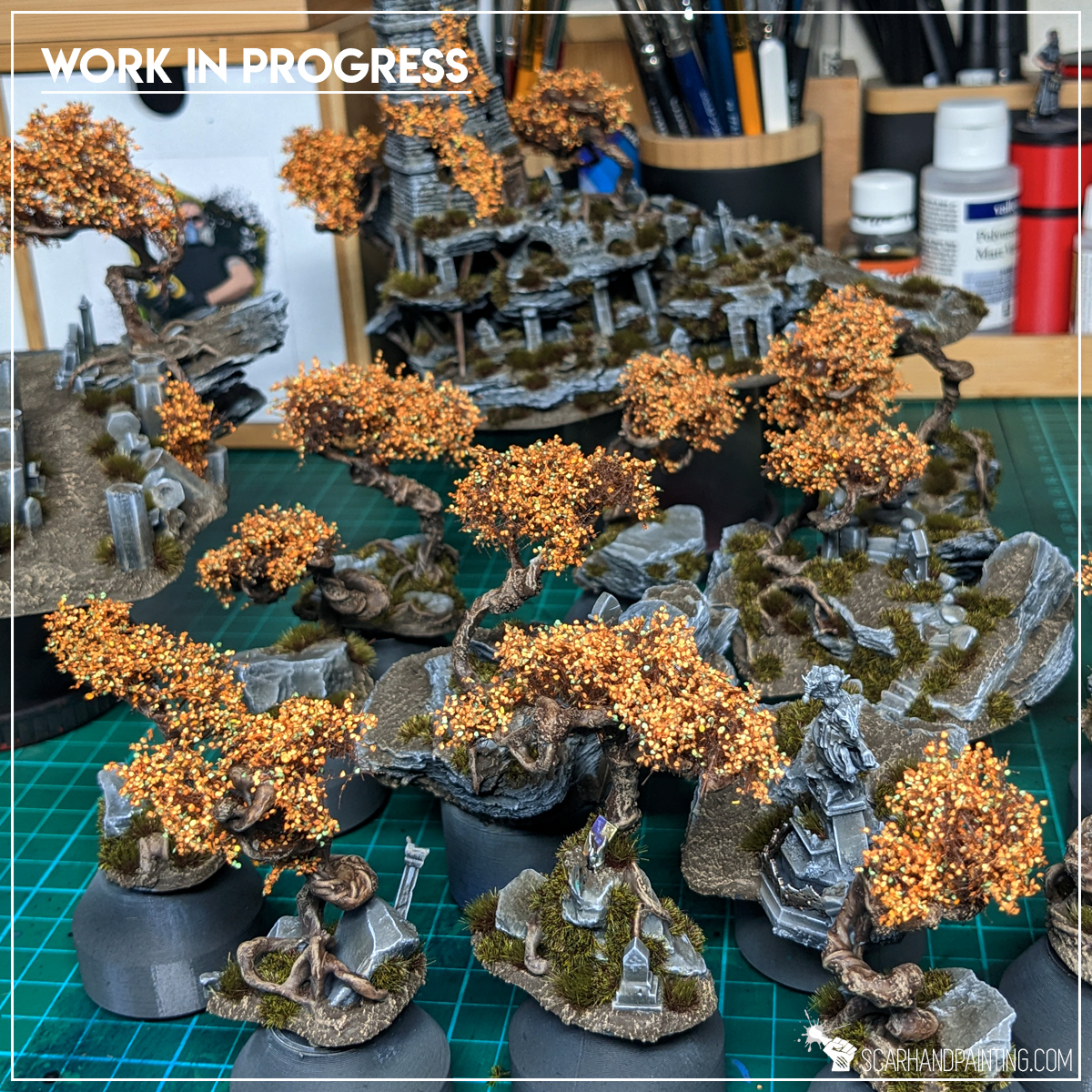
That’s all – a set of awesome looking trees for miniatures is now within your reach. As a final word I recommend staying open minded – there’s plenty of different materials you can use to make your own trees, not just the ones I presented. It is worth experimenting. Be sure to share your result with me.

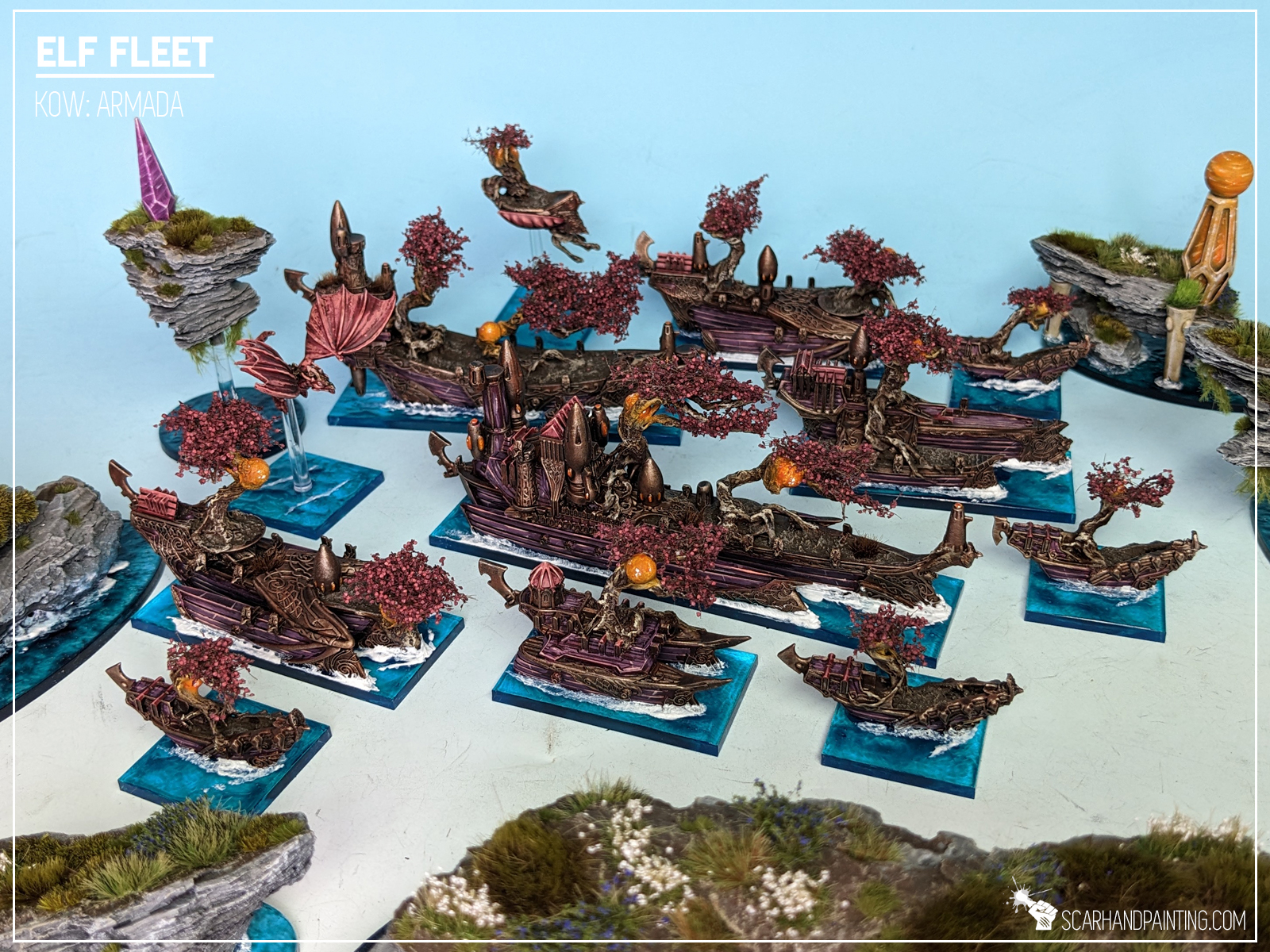
I hope you’ve enjoyed this article. Be sure to let me know your thoughts in the comments below or via Facebook or Instagram. I would also appreciate it if you considered sharing this content with your friends, who might find it interesting. Finally if you are looking for a professional miniatures painting service, be sure to contact me with this contact form. I always reply within 24 hours, after which please check out your spam folder.

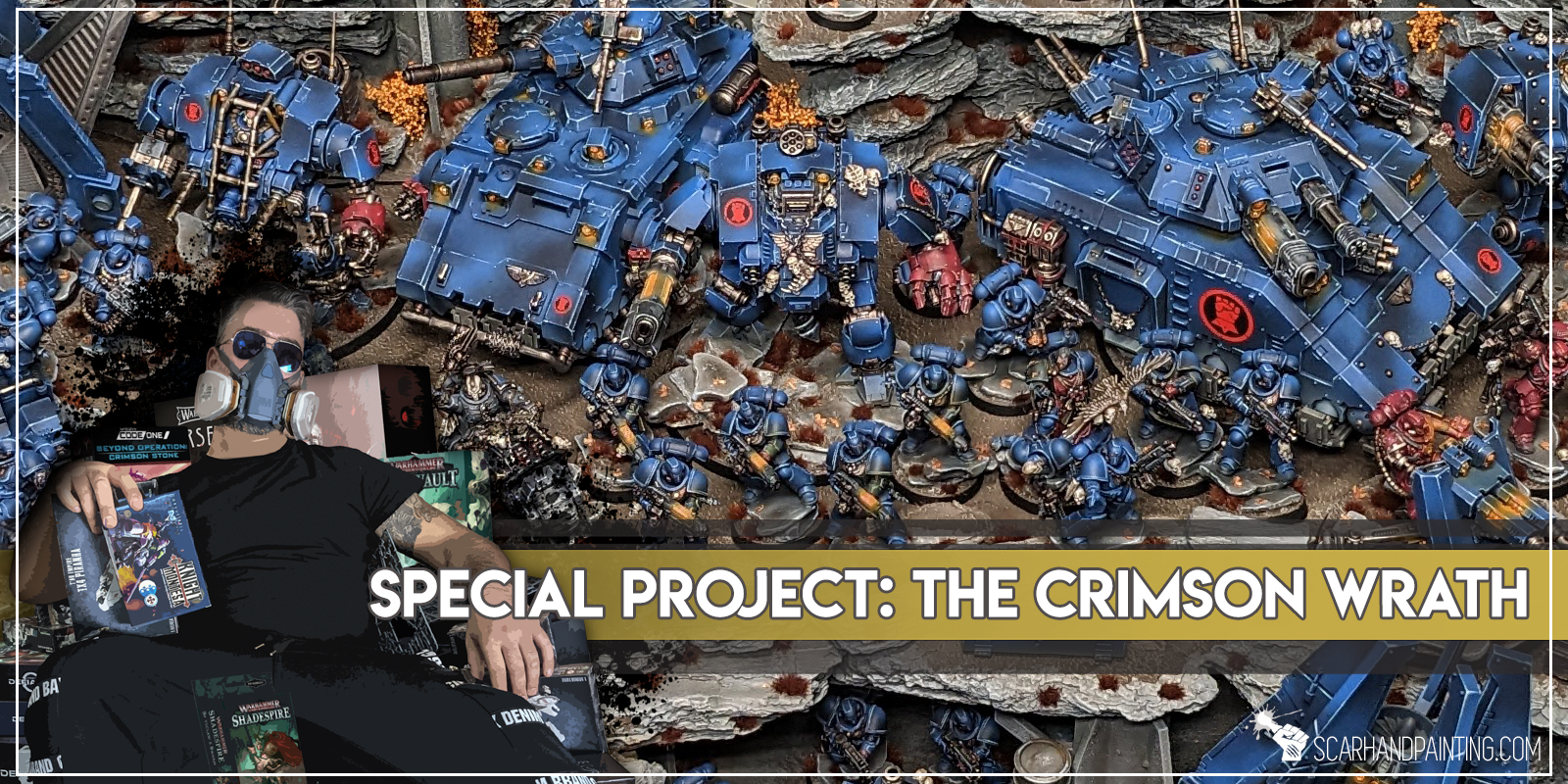
Armies On Parade – a yearly contest held by Games Workshop, pitting lovingly crafted Warhammer armies from across the globe against each other. I always admired all the stunningly painted pieces of art presented in the content with a mix of awe and jealousy. Deep down I felt (and still feel) the ceiling is just too high for me to reach. Then again the entire theme of this competition seems to be fun and participation, sharing our hobby joy, rather than trying to win against the very pinnacle of talented people out there. This year, seven days before the very deadline, I have decided to unleash my Crimson Fists and join the challenge!
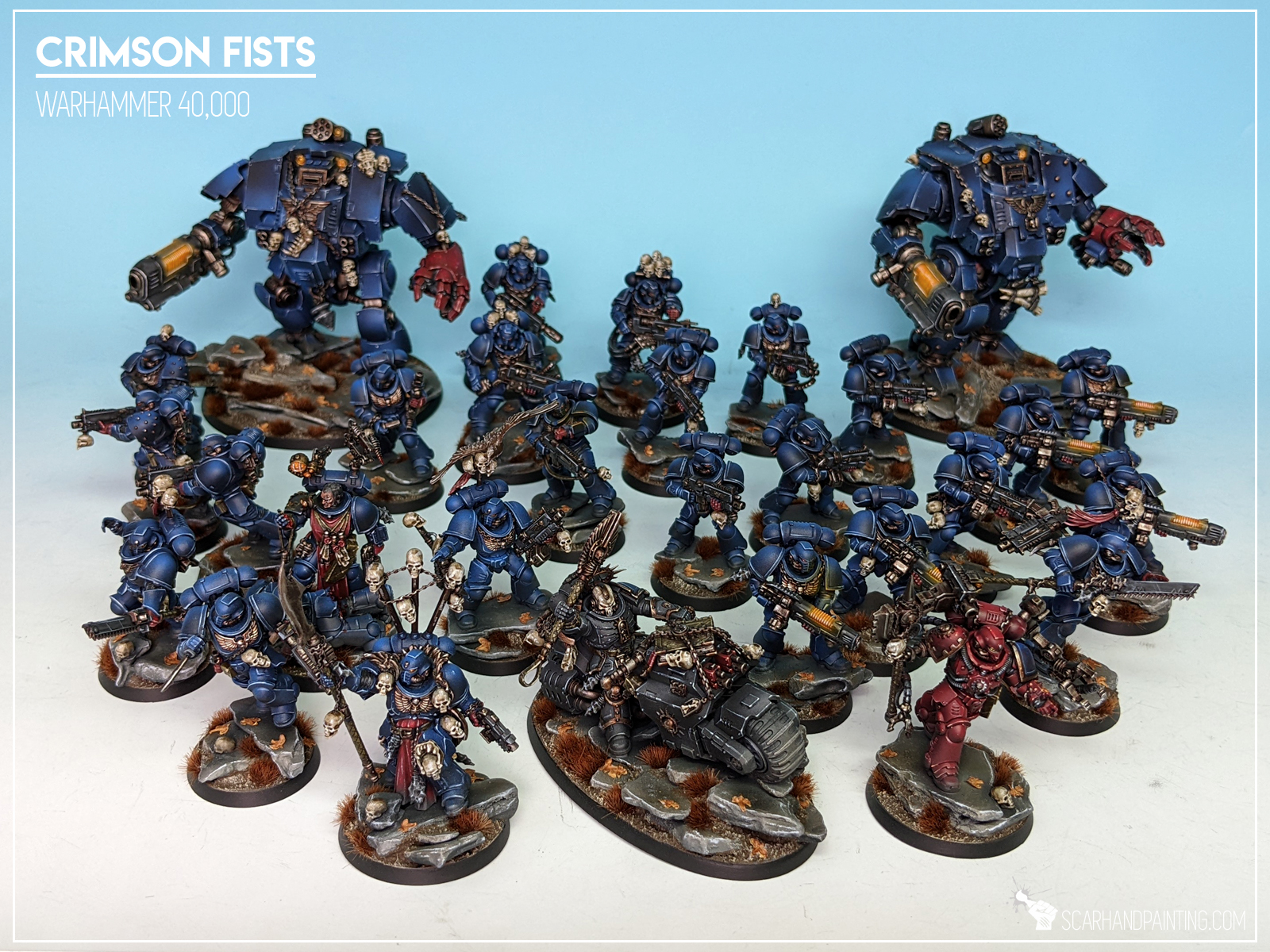
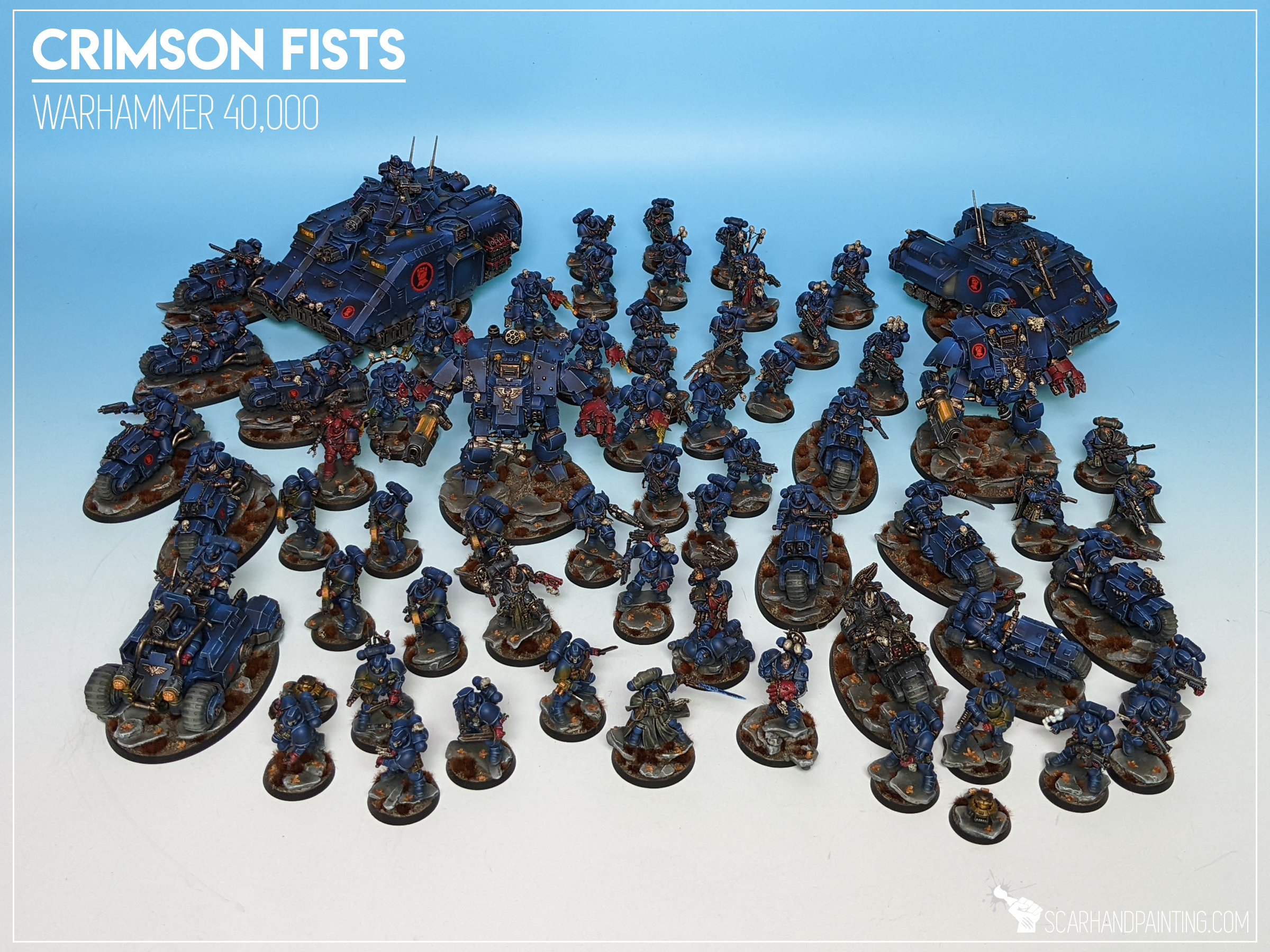
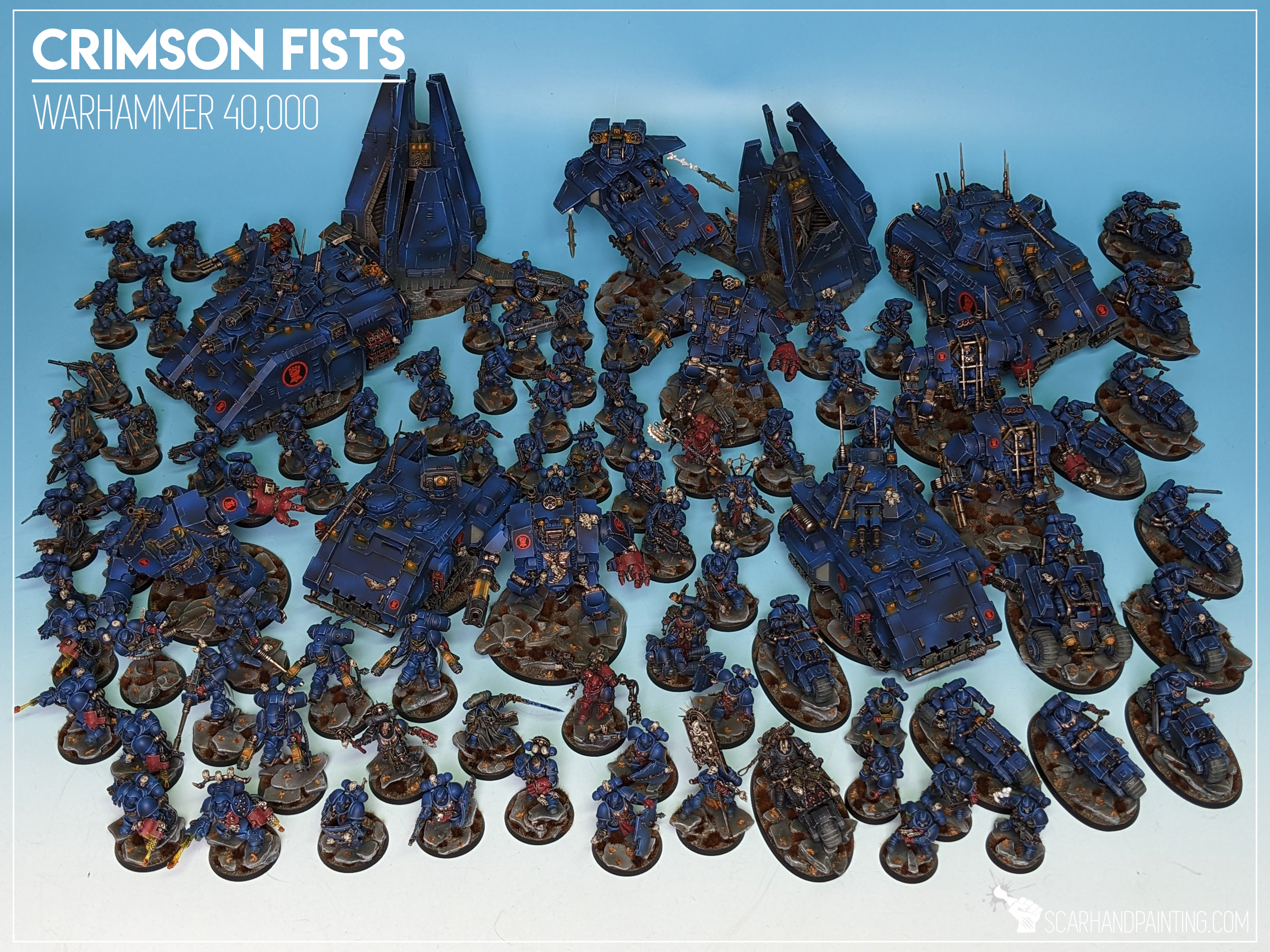
Like all of my hobby projects, the Crimson Fists collection started out of nowhere. I was ‘divorced’ with Warhammer 40,000 for about ten years, after abandoning a huge Space Marines army back at the down of the sixth edition. The new Primaris Marines grew on me and for a long time I felt like it’ll be fun to start a new army. One day something broke and I went for it, getting just enough carefully selected boxes to build a solid 2000 points list. I had many ideas on where to take my miniatures, including multiple made up Chapters and color schemes. In the end, remembering the wrathful charge of the Crimson Fists from the “Crimson Tears” Soul Drinkers novel, I decided to follow up on a youthful dream of a Crimson Fists collection. Contrary to my usual practices of fast bulk painting to play, I focused on small numbers, cherishing the process and pouring my heart and soul into each and every miniature. I steadily grew the collection, adding a few units at a time, prioritizing unit diversity rather than chasing the meta. As it happens, expanding a collection by adding one or two units every month, allows for some awesome hobby experience – but also expands the available toolset to breathe fresh air into the gaming experience. With a lively, positive local community around the corner, I’m having the time of my life with miniatures games right now and am speaking from over 25 years of wargaming experience behind my belt.
Easy to say that having a main, living project – a growing collection to add to and have fun with, might have saved me as a hobbyist. I love my Crimson Fists army and it is for this reason that I chose to honor it by preparing a special diorama.
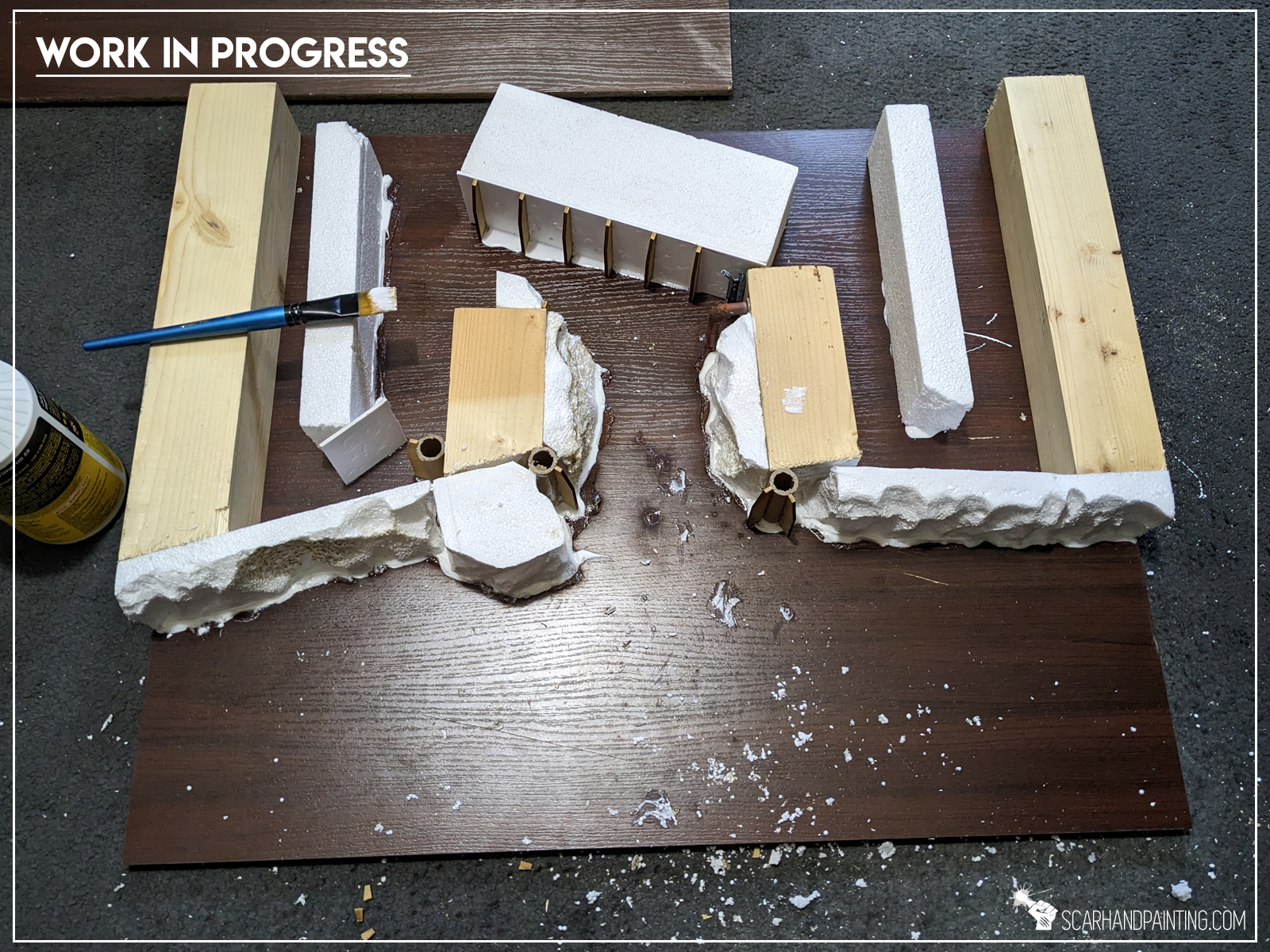
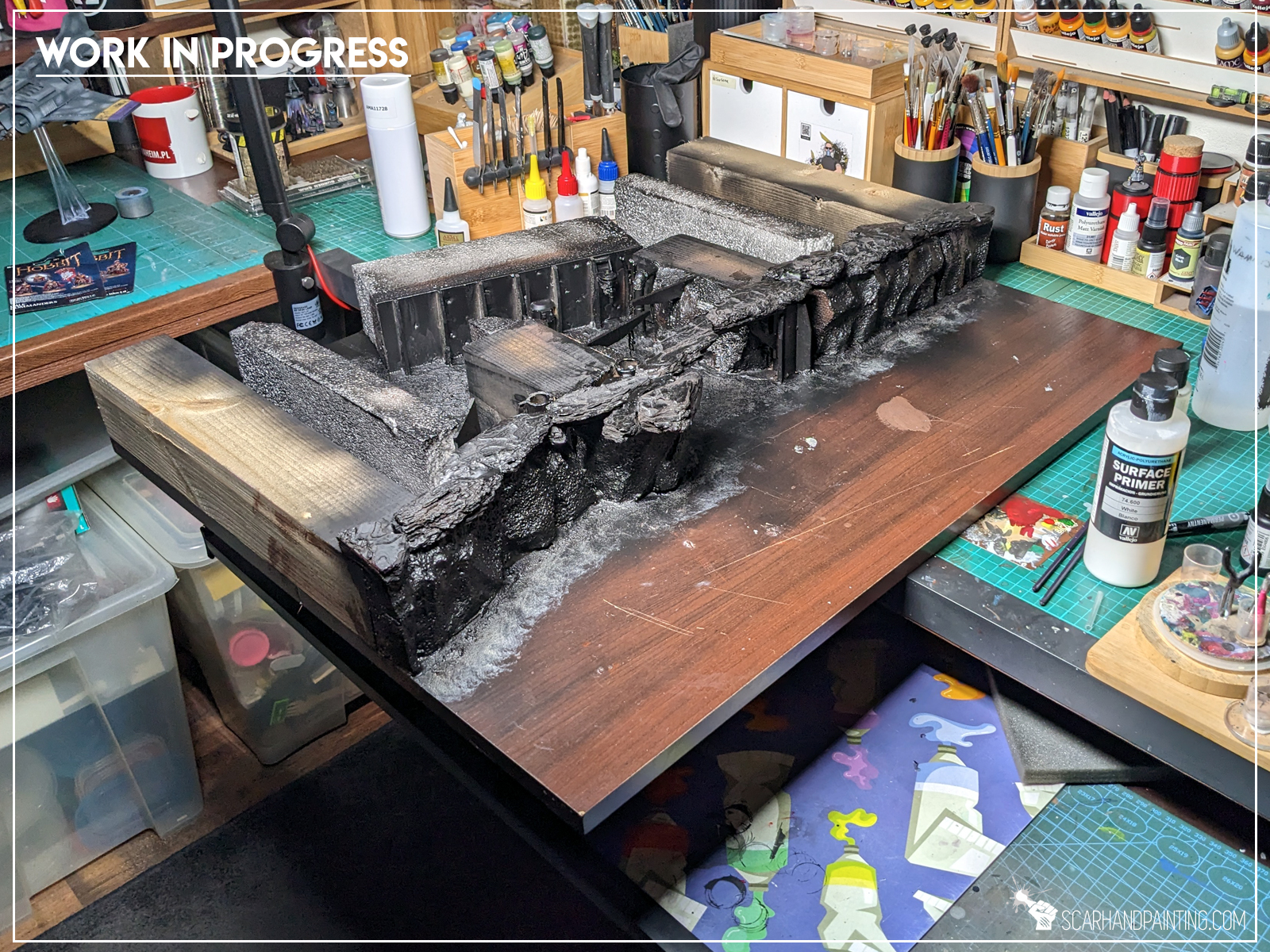
Once I’ve committed I had a really bad time sleeping – multiple ideas ferociously fighting with one another inside my head. I spent almost four hours laying in bed, trying to fall asleep, grinding thoughts on how to better present the army. In the end I chose to focus on a two level base with a part of an exposed ground level and a large vantage point. I have been building advanced Crimson Fists themed scenery for the last year and figured a relatively simple base would allow me to use everything I have to build an interesting background and add detail.
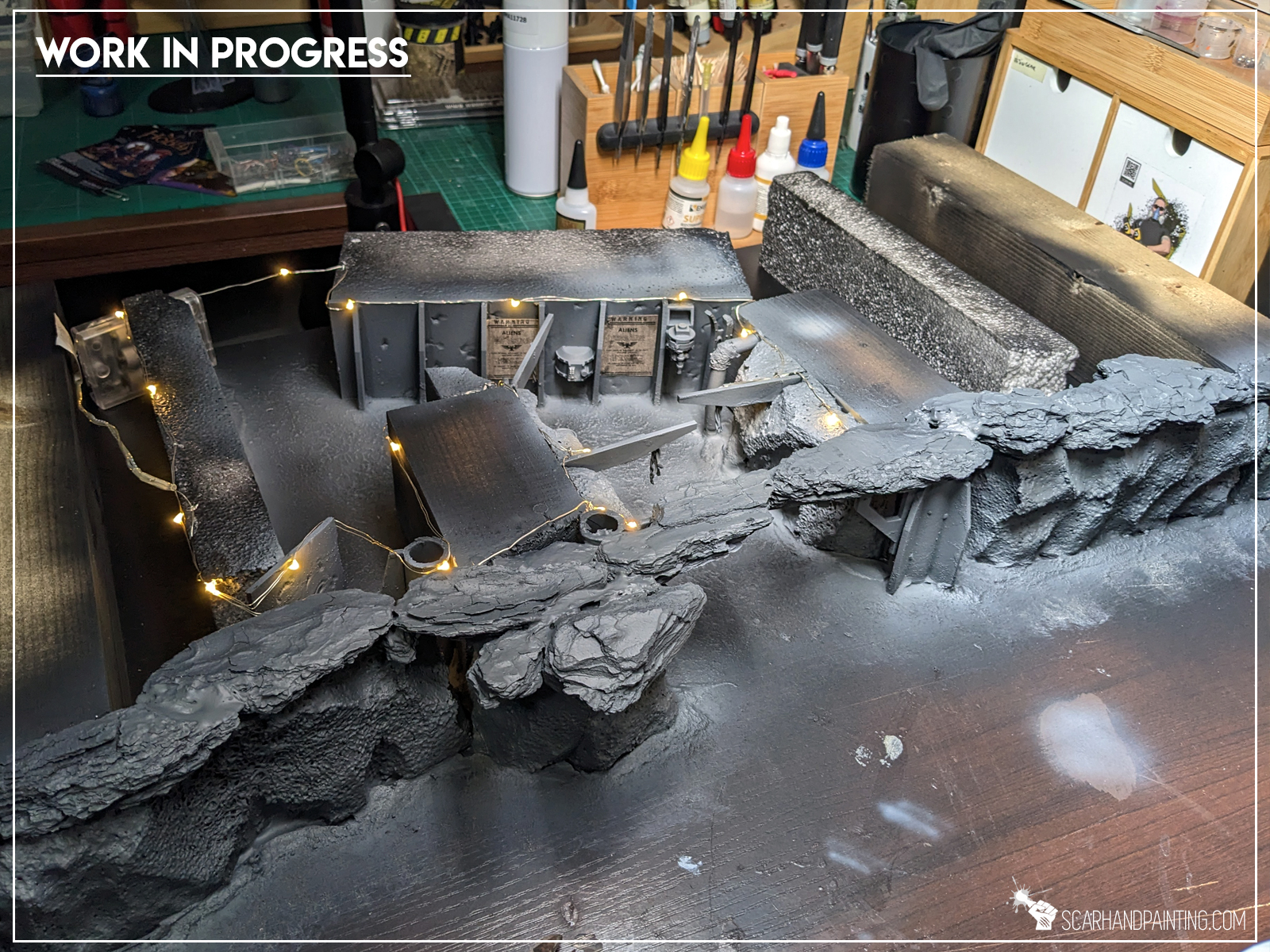
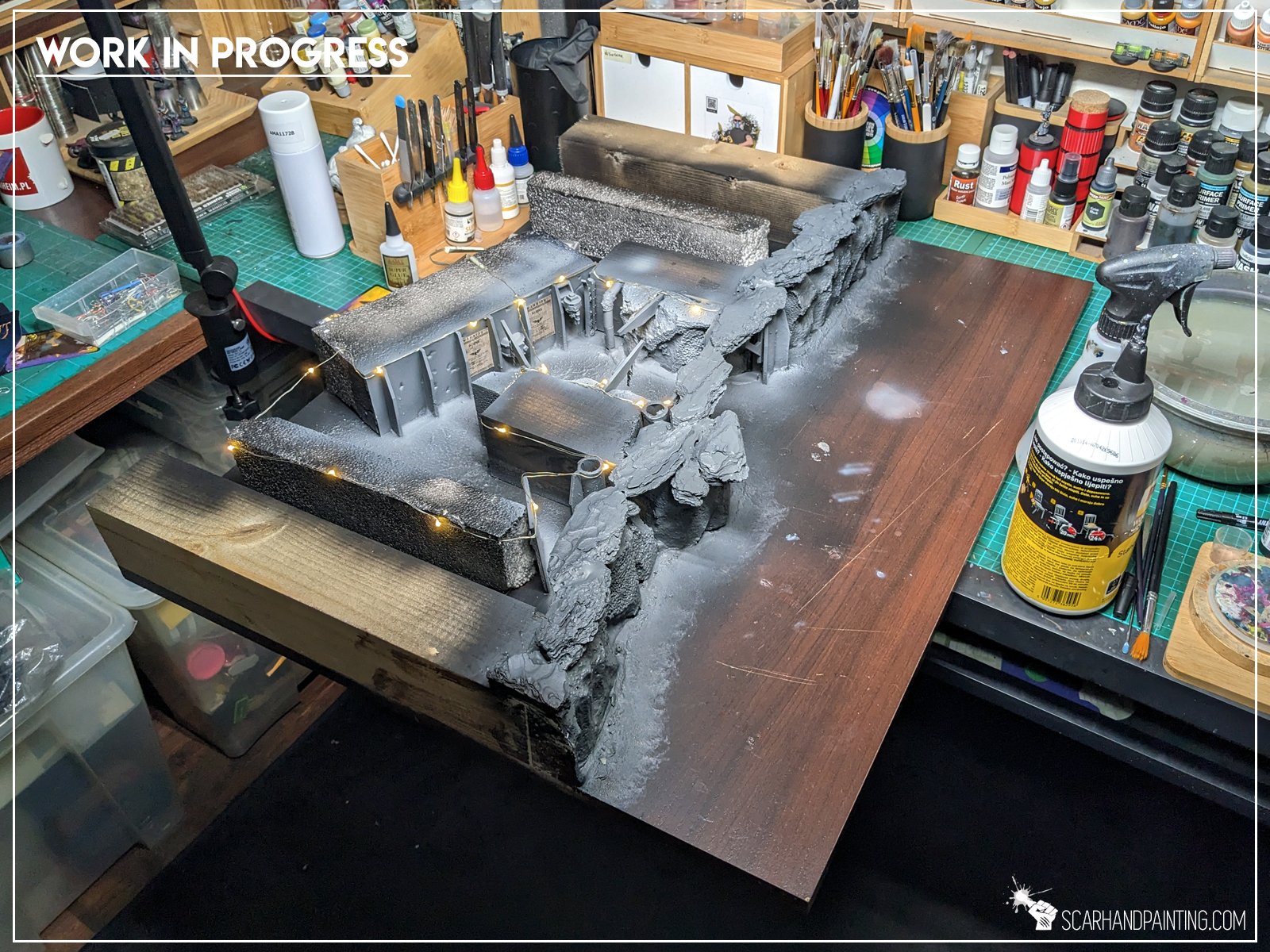
To spice things up I have added a decrepit bunker complex entry tunnel and taken it a little bit further with a set of small lights spread across its length. Because there was an entire vantage level coming in on top – I had to finish painting the tunnel before starting to work on the exterior area.
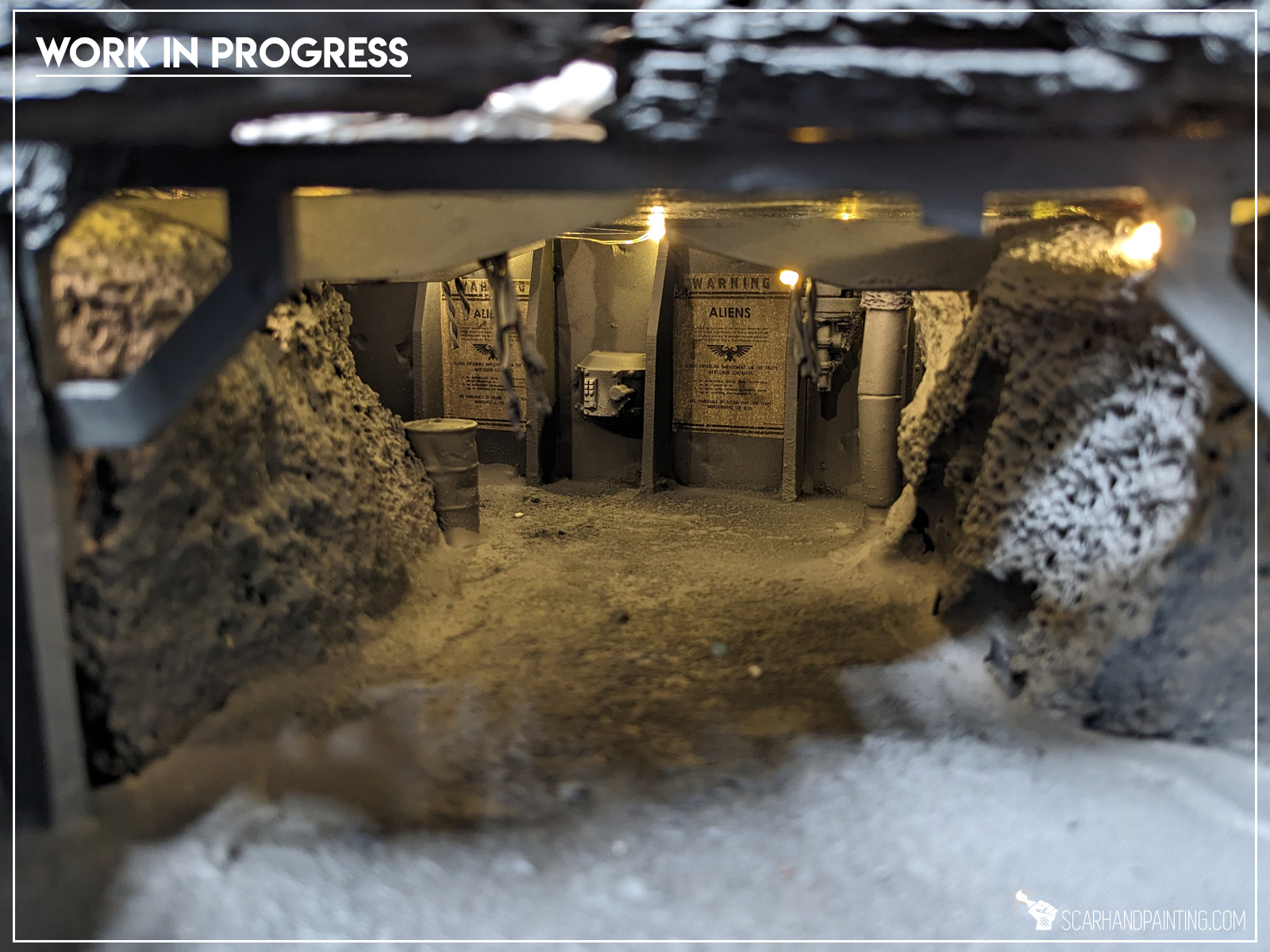
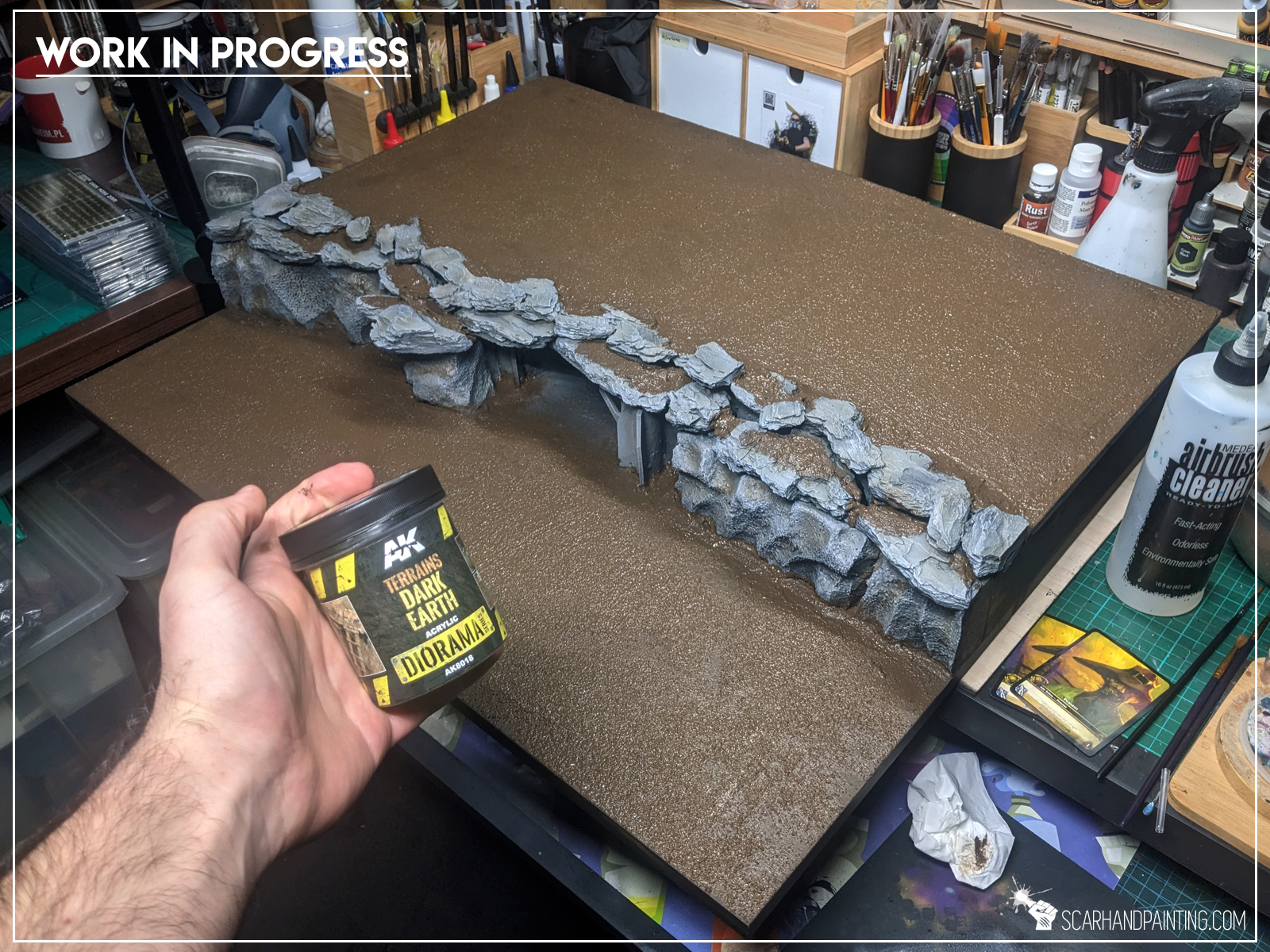
It took me about four hours from laying a wooden worktop on the ground to sealing the vantage floor on top of the finished tunnel. What was left was the exterior and this part was rather easy in comparison. It took less than two hours of the actual work (and a lot of AK Interactive’s Dark Ground texture paint apart from other hobby materials) to see the thing completed.
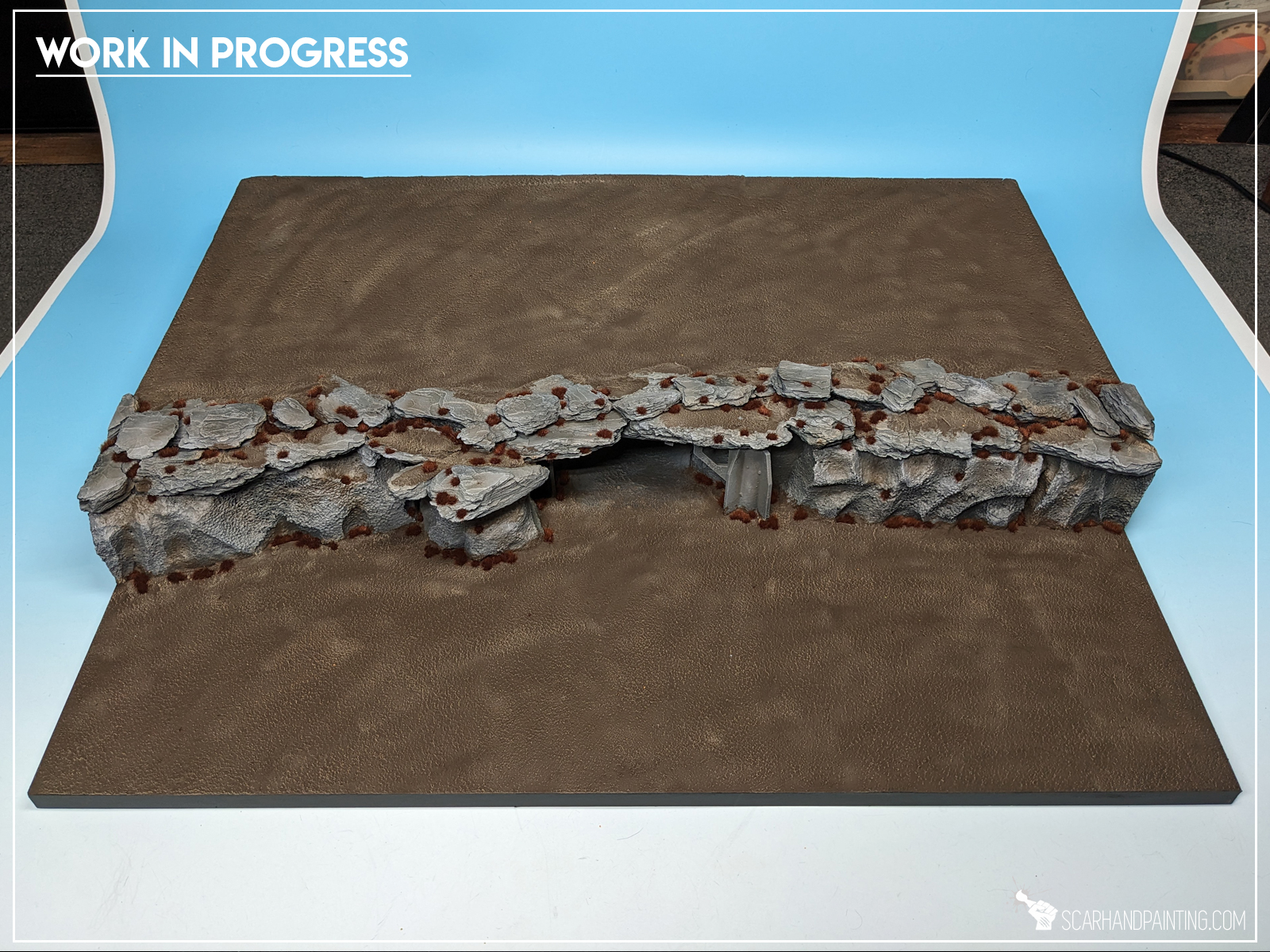
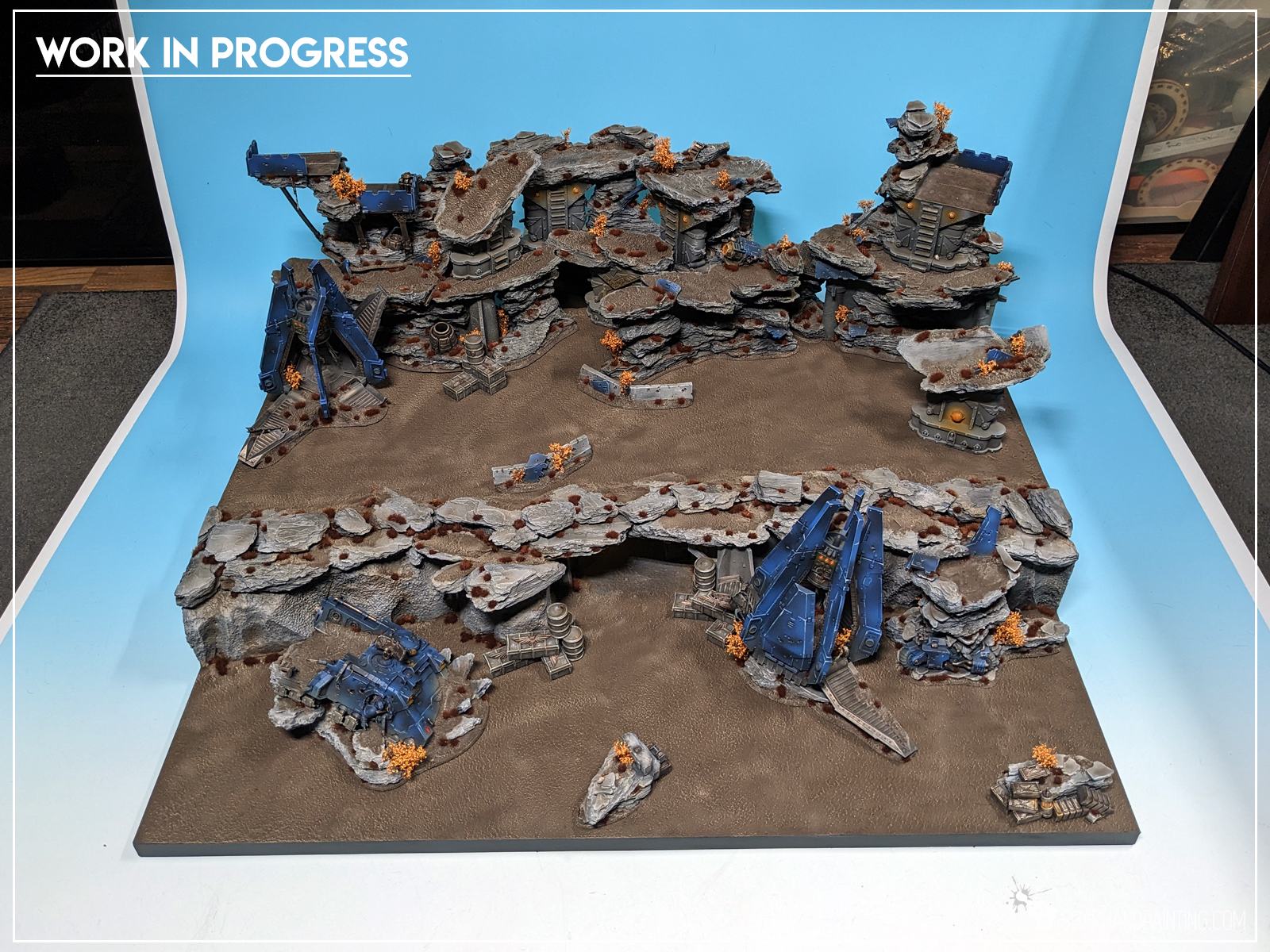
Once the painting process was finished, I was left with the tedious and challenging process of setting up the background, planning the scene and breathing some life into it. I always admired cinematic shots from White Dwarf magazines – never would I ever dared to imagine I would be taking one myself 🙂
It took a lot of time and hard decision making on which units to include and which ones had to be cut, but in the end I finally had my epic, cinematic shot. Or at least a test shot to be precise.
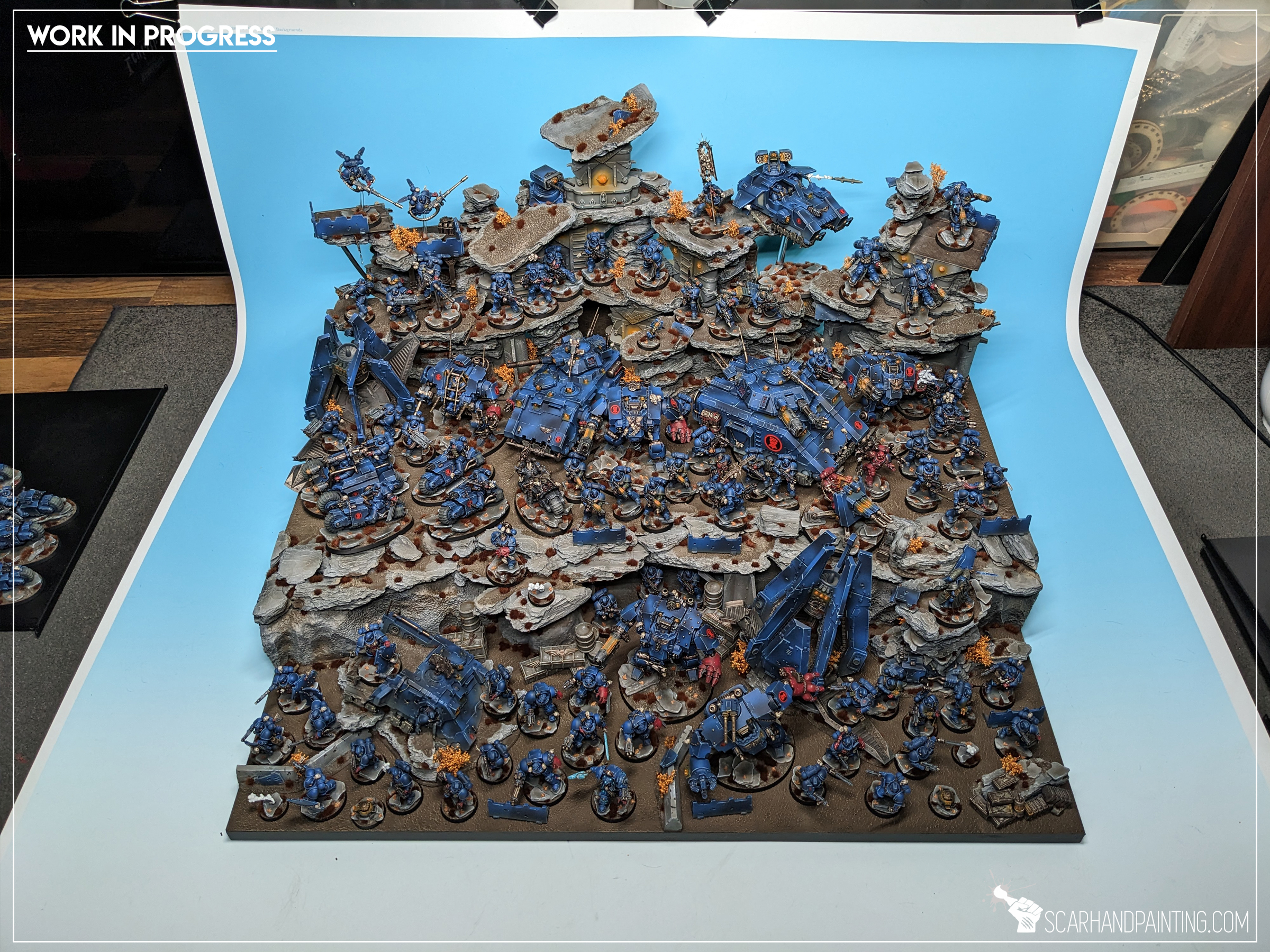
Now all is in the hands of Games Workshop’s team. Let’s see if I can get as much as a shout out from them. Keep your fingers crossed for me mates!
I hope you’ve enjoyed this article. Be sure to let me know your thoughts in the comments below or via Facebook or Instagram. I would also appreciate it if you considered sharing this content with your friends, who might find it interesting. Finally if you are looking for a professional warhammer 40k miniatures painting service, be sure to contact me with this contact form. I always reply within 24 hours, after which please check out your spam folder.

Welcome to Painting Star Wars: Shatterpoint Cad Bane tutorial. Here I will present to you a Step-by-step of a basic painting process for Fistful of Credits Aurra Sing miniature and a few extras.

Before we start, some notes:
Both Mandalorian Super Commandos were prepared in the same way as previous Shatterpoint miniatures. Visit Tutorial: Painting Star Wars Shatterpoint Clone Troopers article for a detailed step-by-step guide.
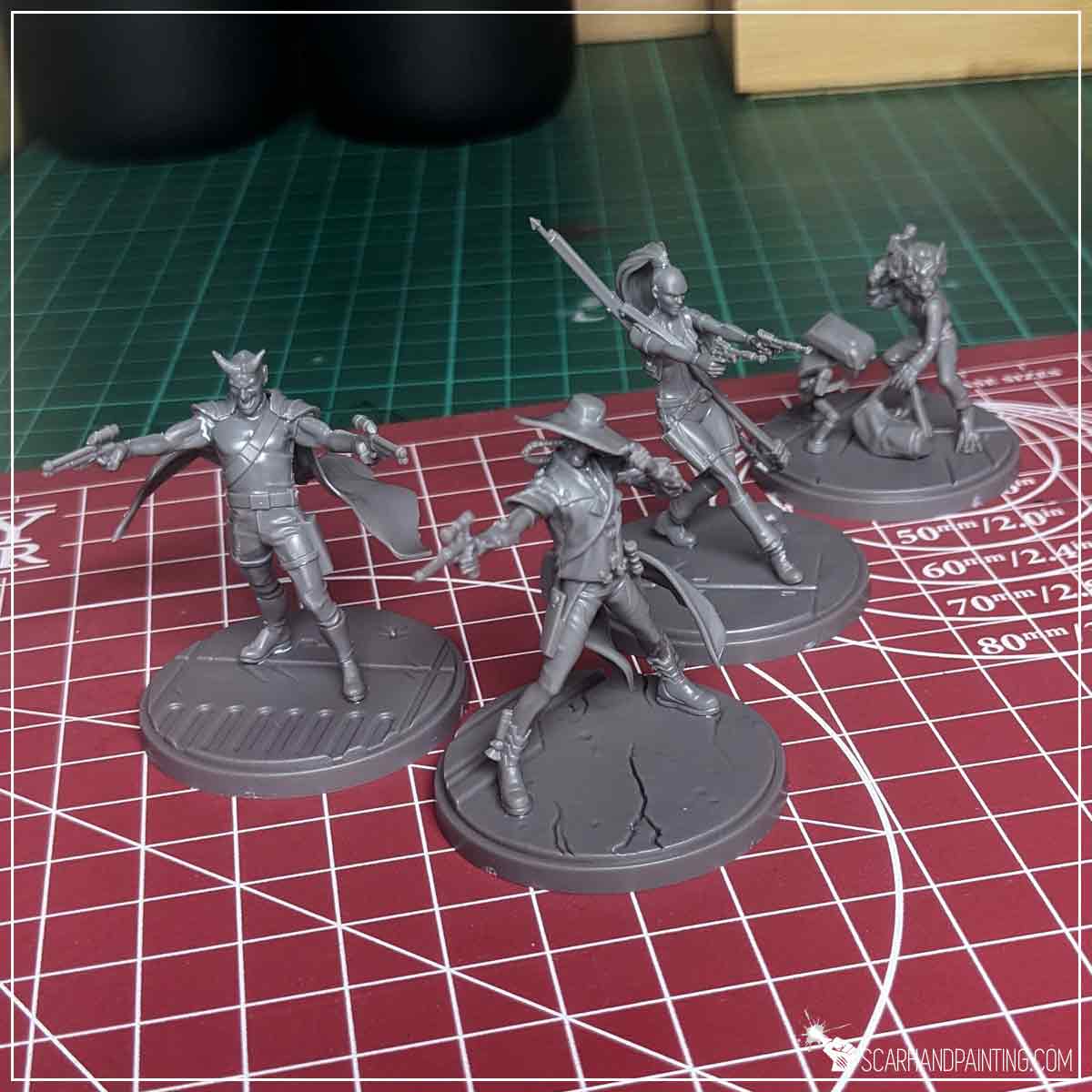
I mounted the miniatures on a stick with a piece of Blu-Tack, then undercoated them with The Army Painter White Matt Primer.
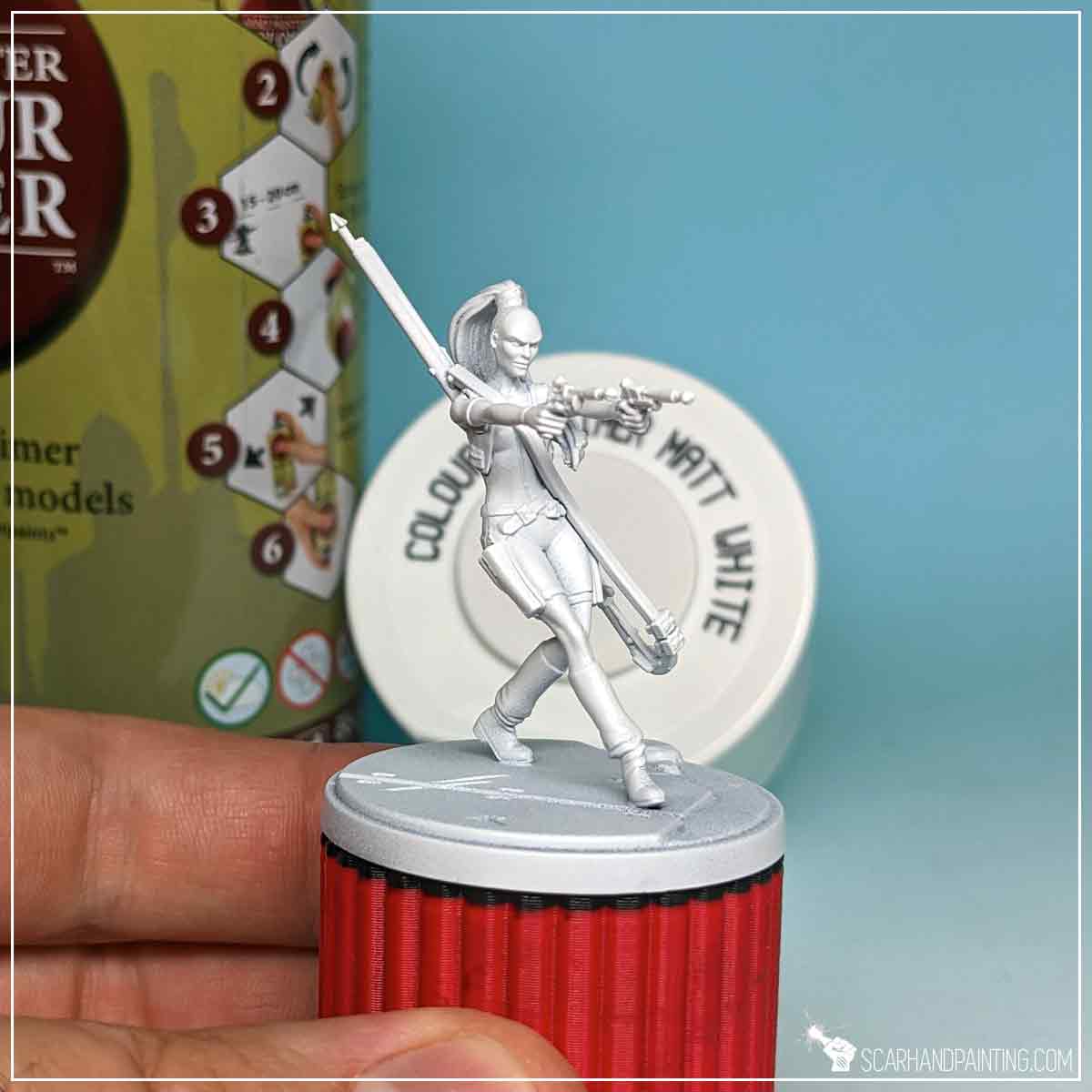
Aurra Sing is commonly represented in either opaque orange or yellow clothes. I decided to base this paint job on Fistful of Credits box art, so honey yellow. Using Wargamer: Character Brush I have painted all clothes with Ancient Honey Speedpaint.
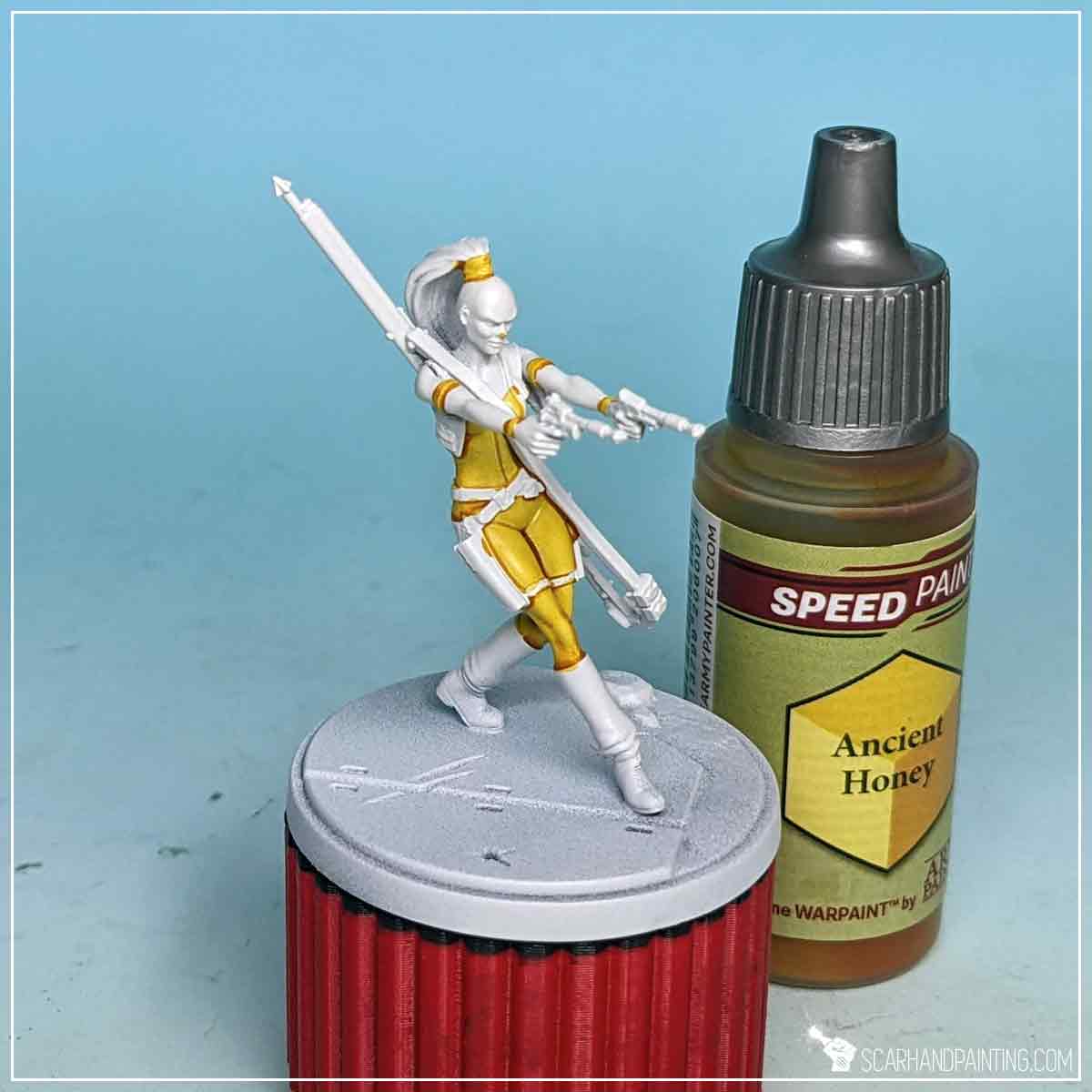
Next, using the same brush, I’ve painted boots, weapon holsters, straps, hair and vest with Brownish Decay.
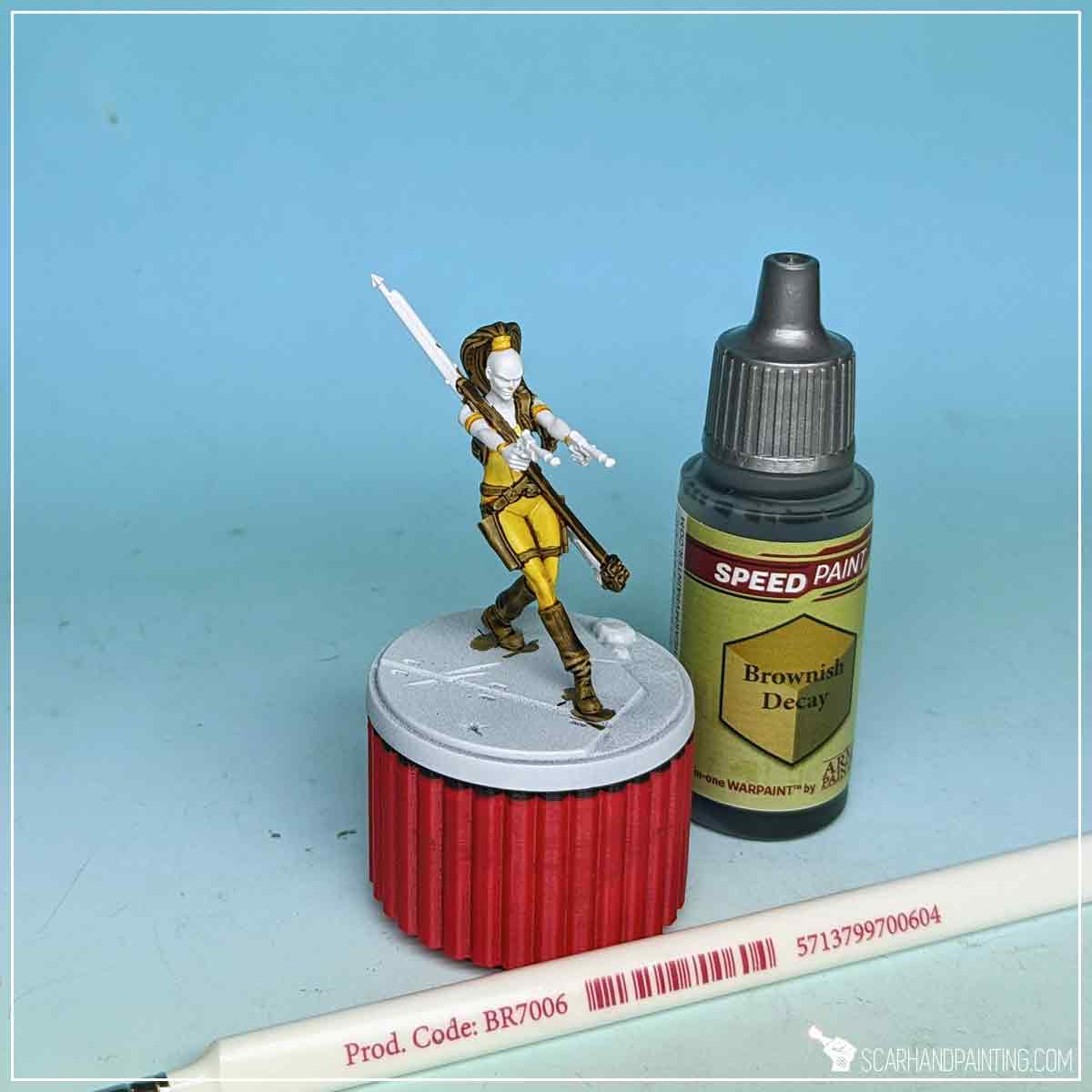
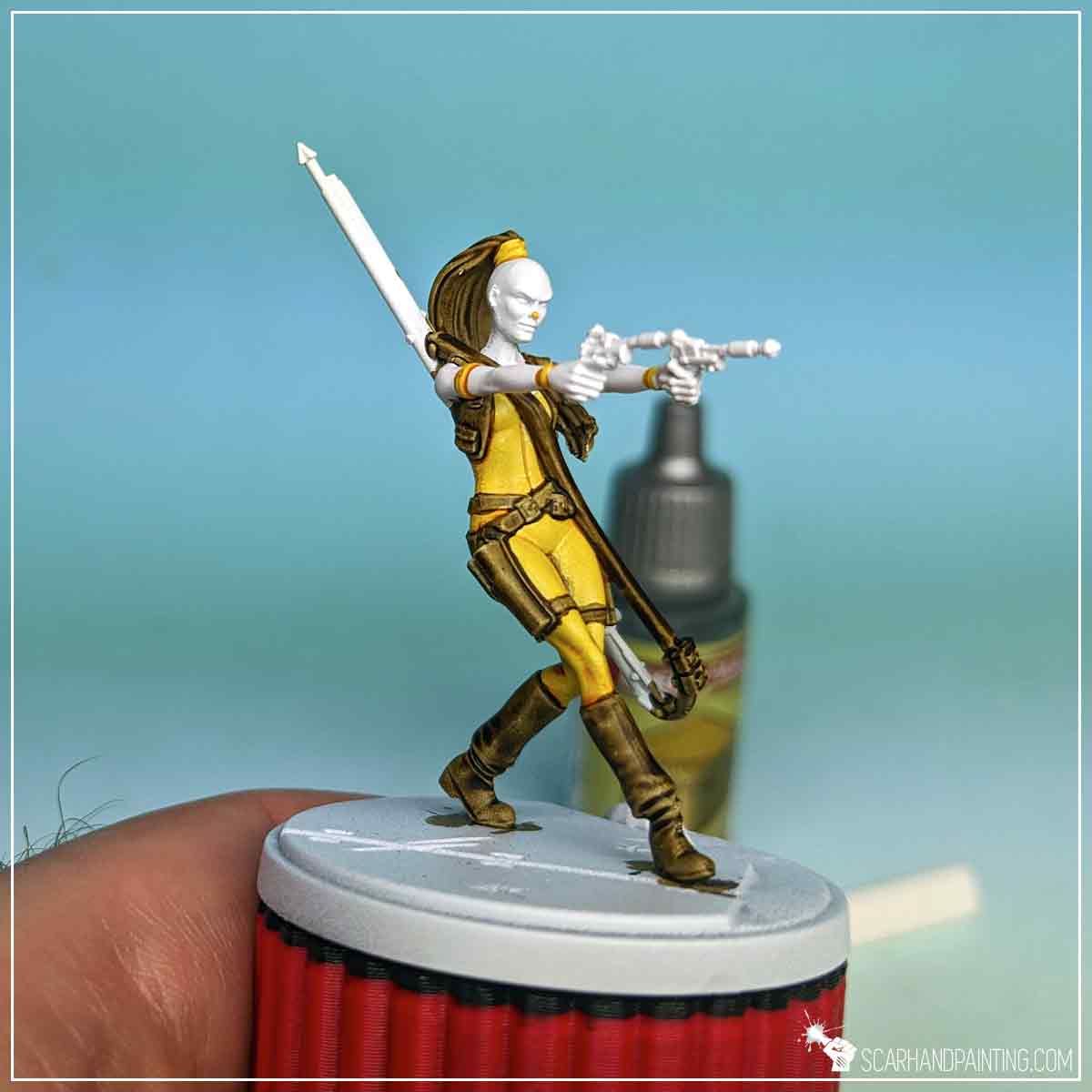
I’ve made quite a few mistakes with previous layers that I have corrected in this step using Matt White.
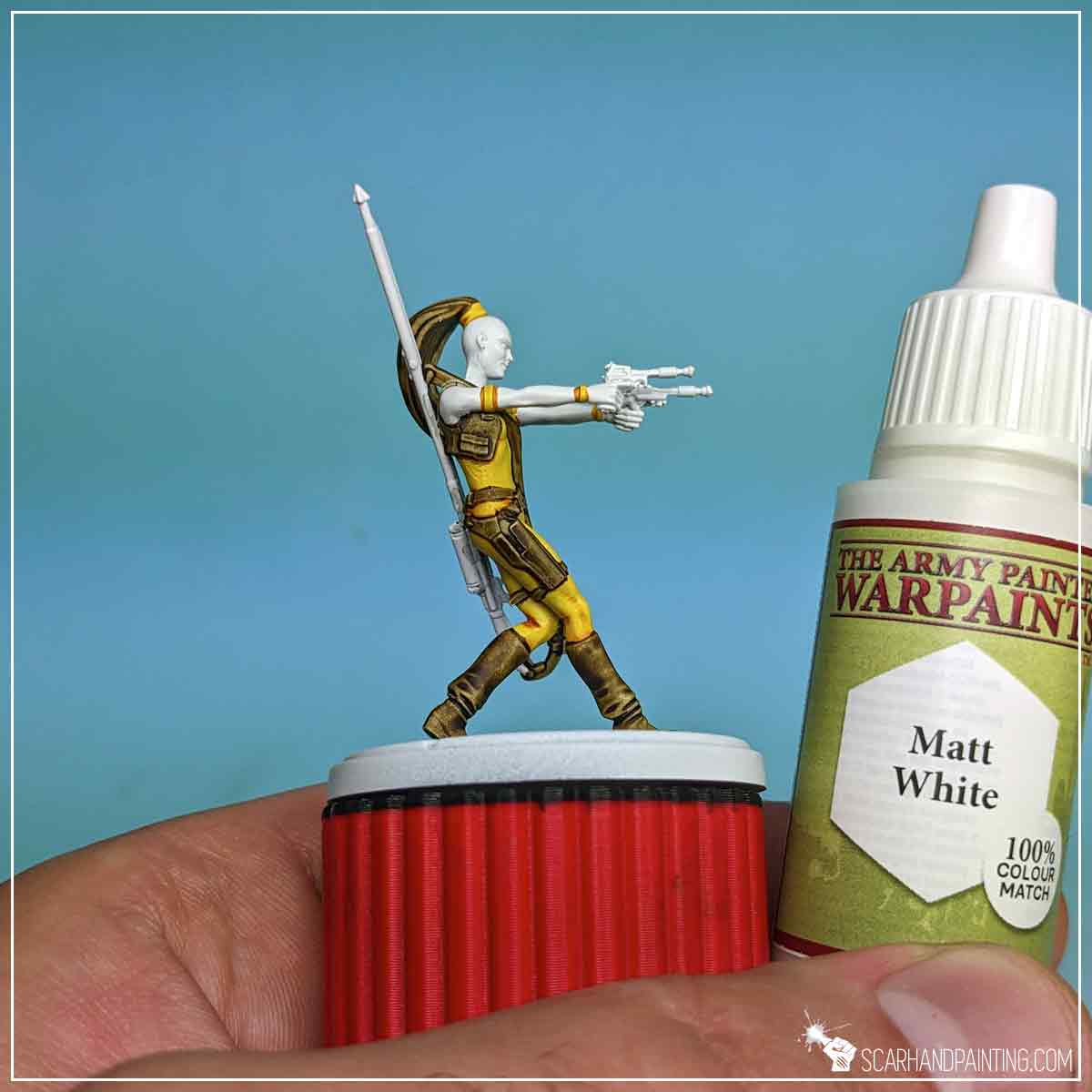
To better represent Aurra’s pale grey’ish skin tone I applied a layer of Ashen Grey.
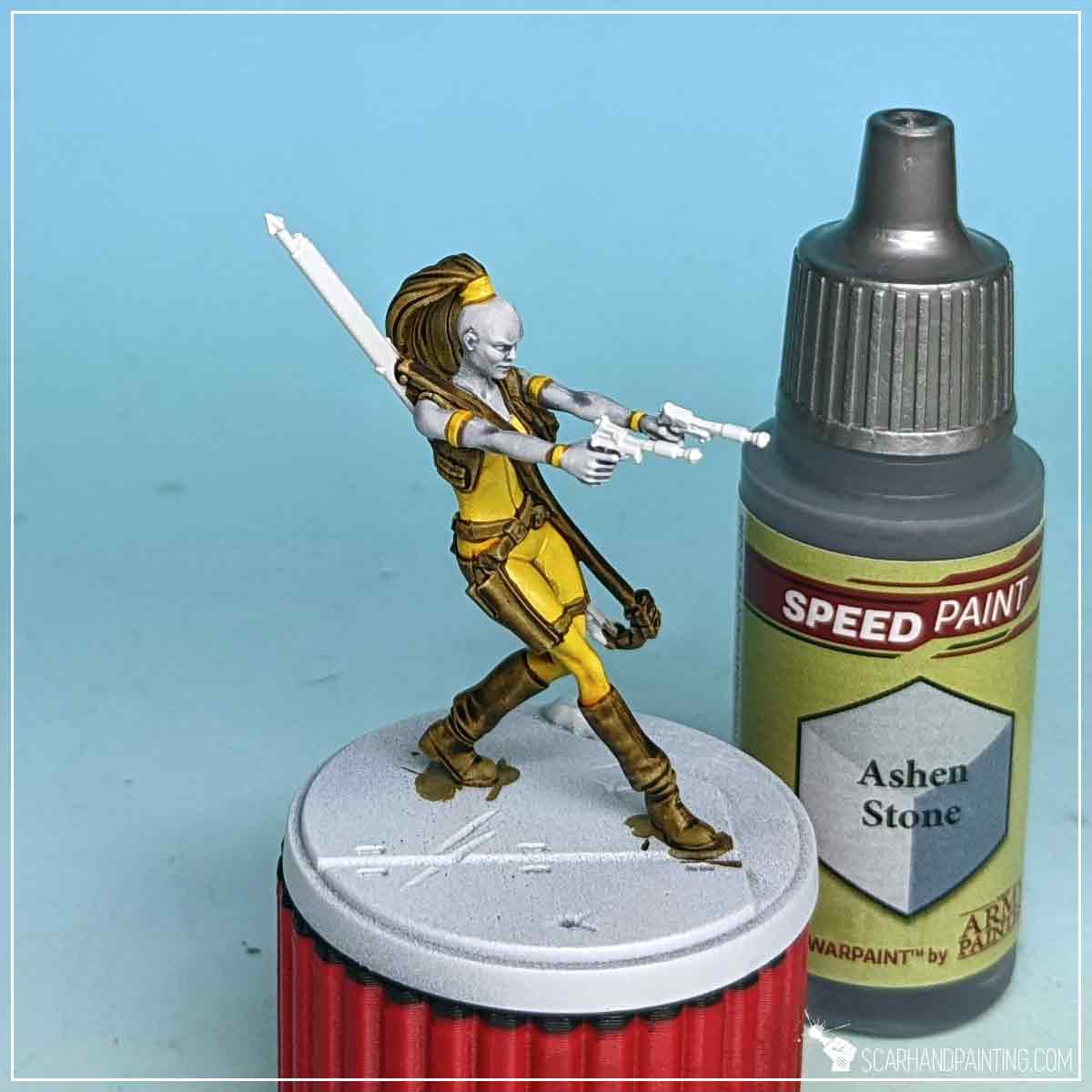
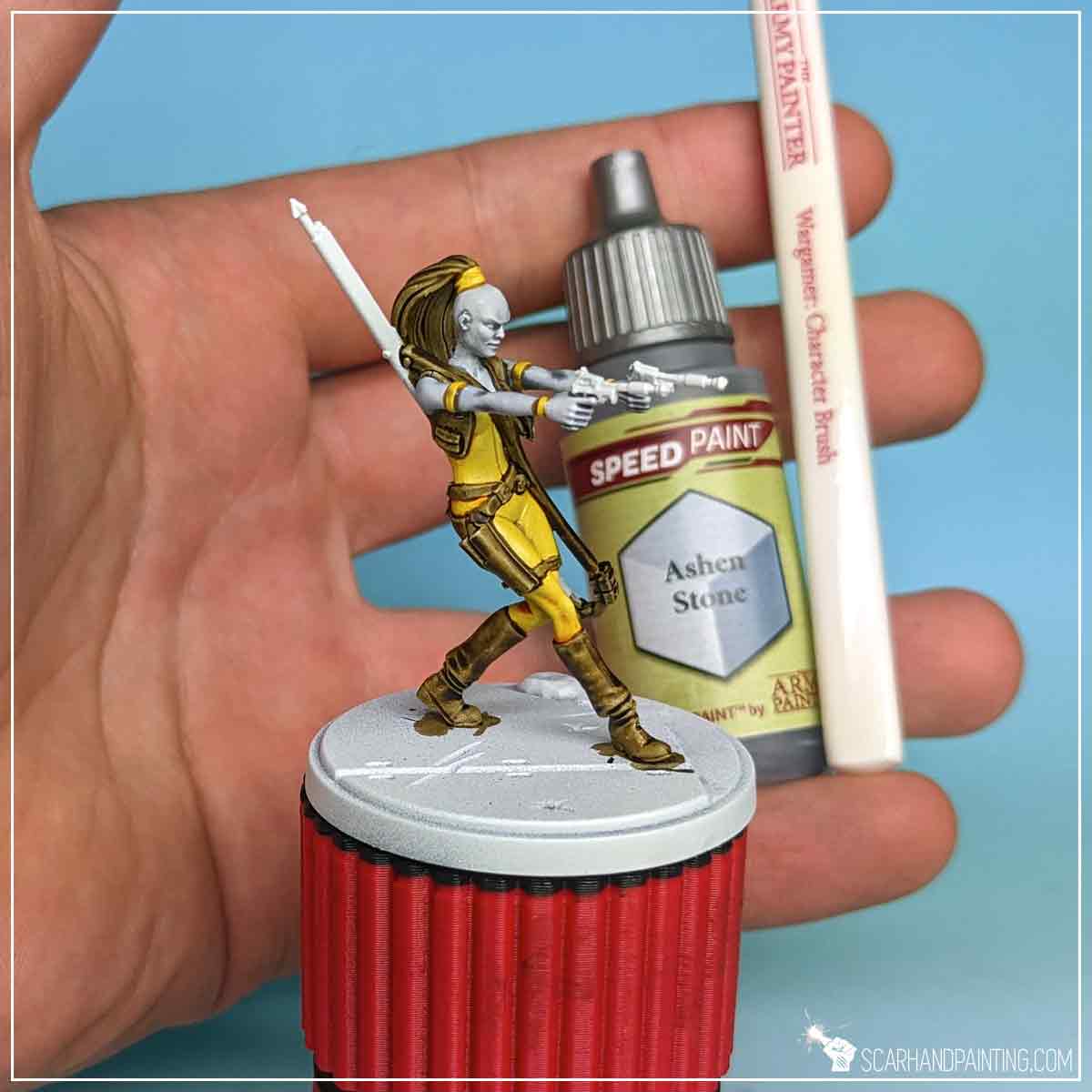
I then painted weapons, strap buckles and hair jewelry with Grim Black Speedpaint.
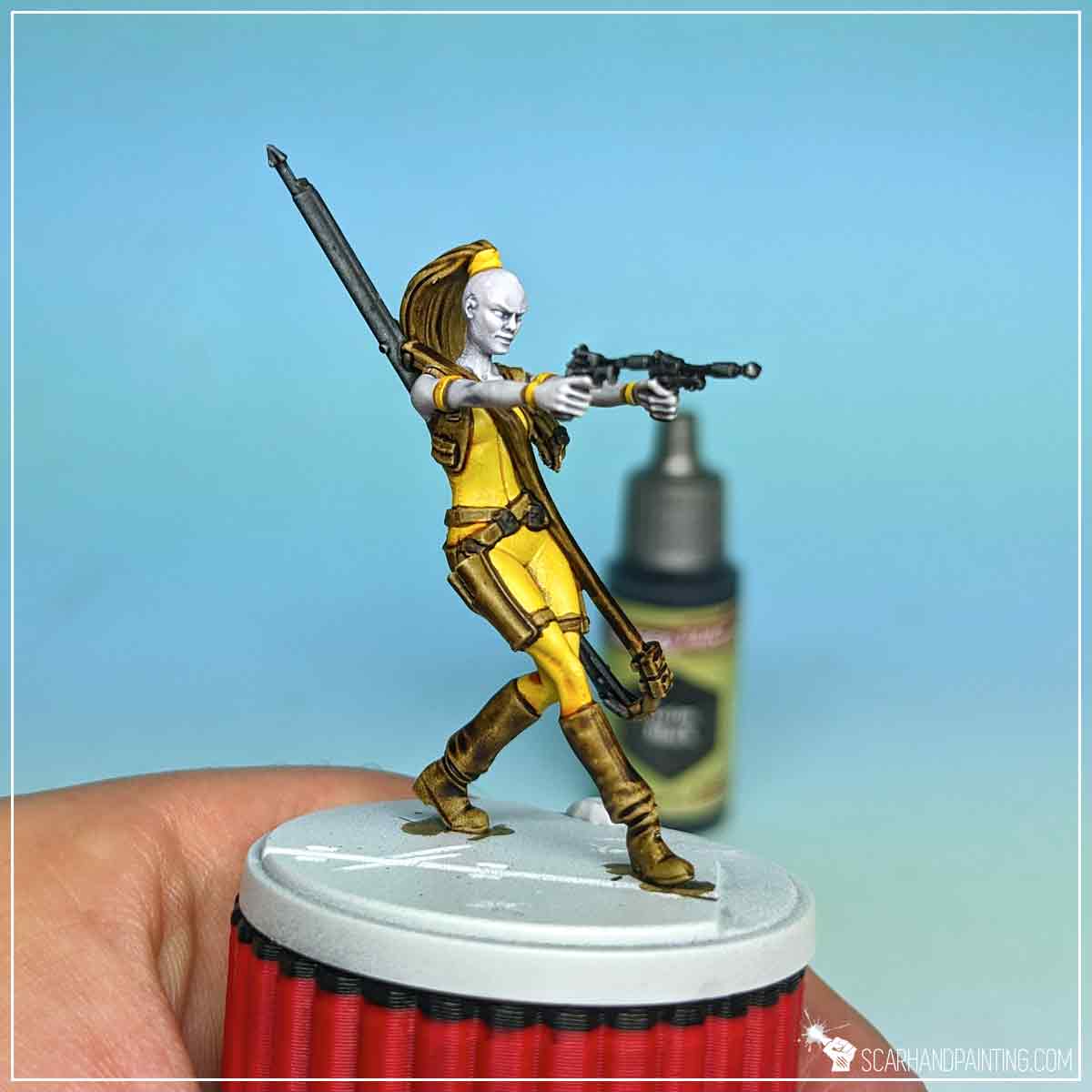
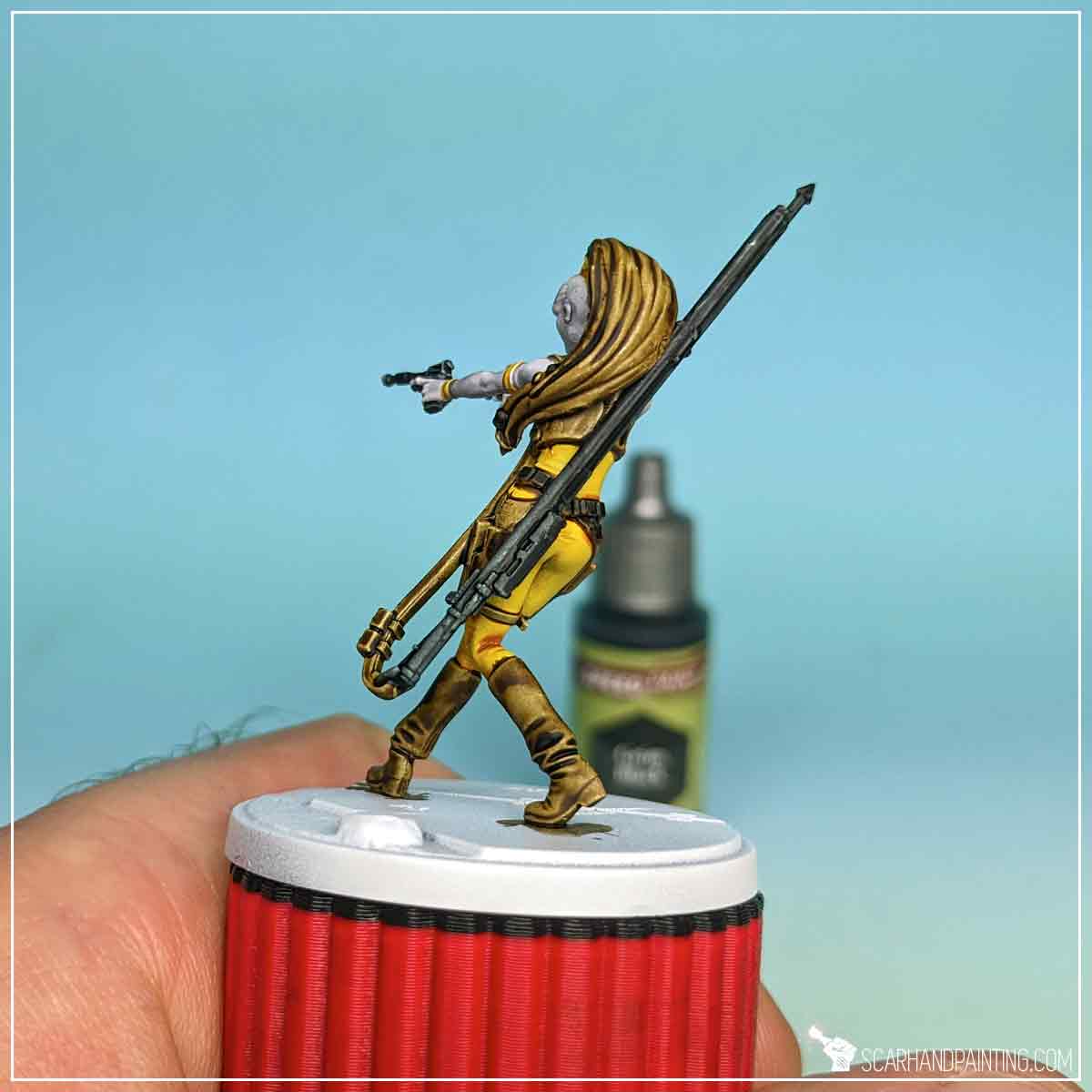
Painting eyes is a craft in its own category. Fortunately for Aurra here two small dots of Matt Black followed by delicate ‘touches’ of Dark Tone wash worked like a charm. I also applied Dark Tone wash to her lips. Wargamer Detail Brush was perfect for this step.
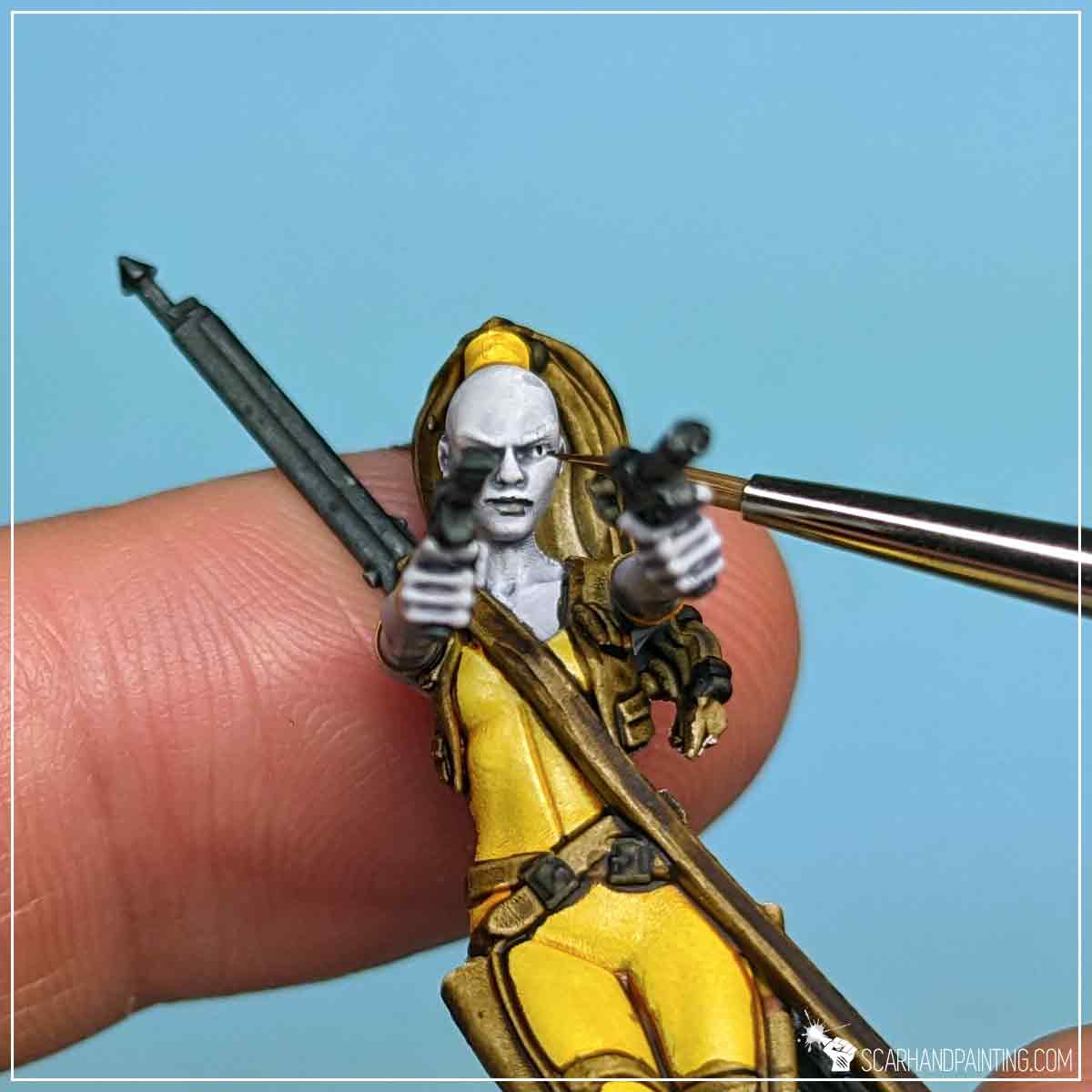
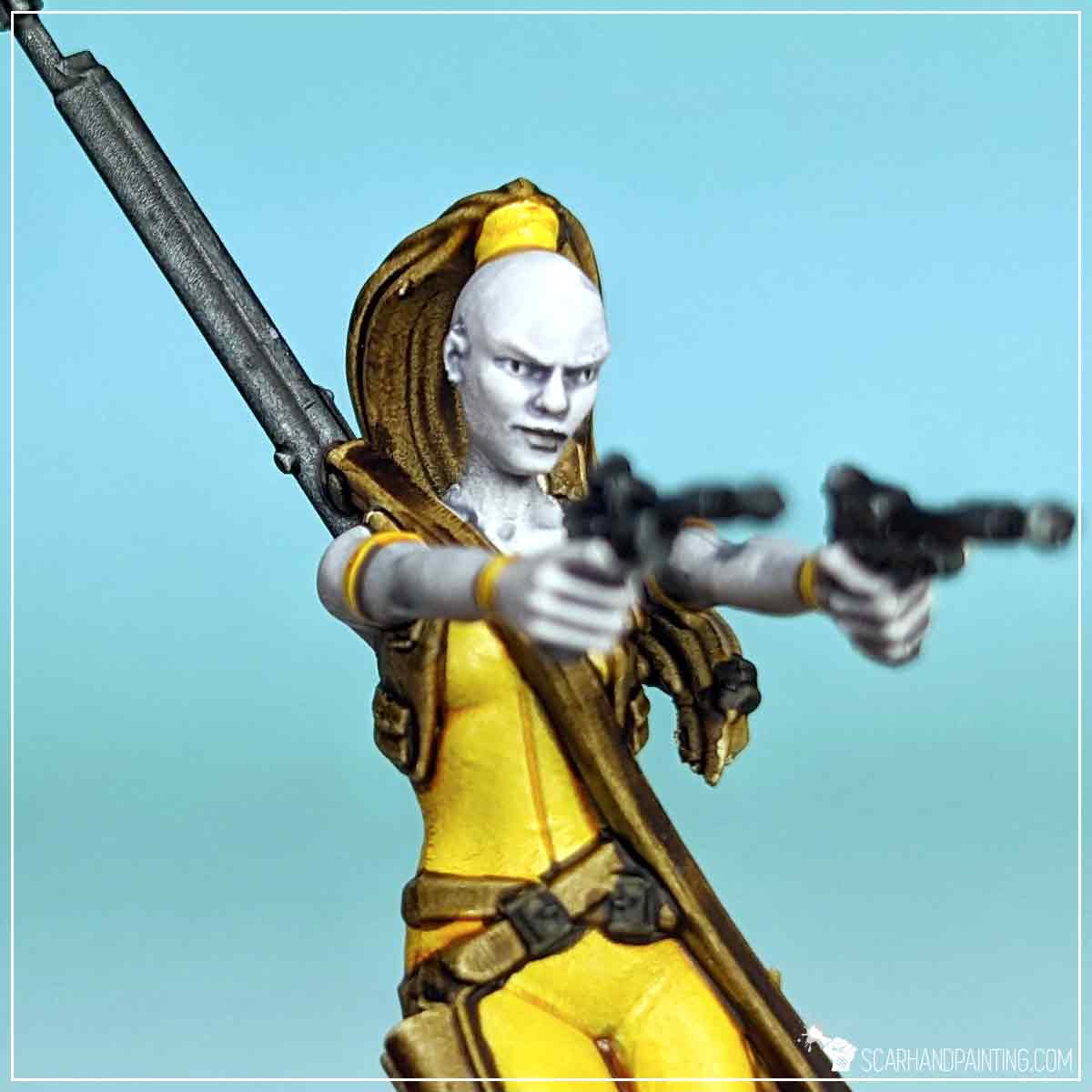
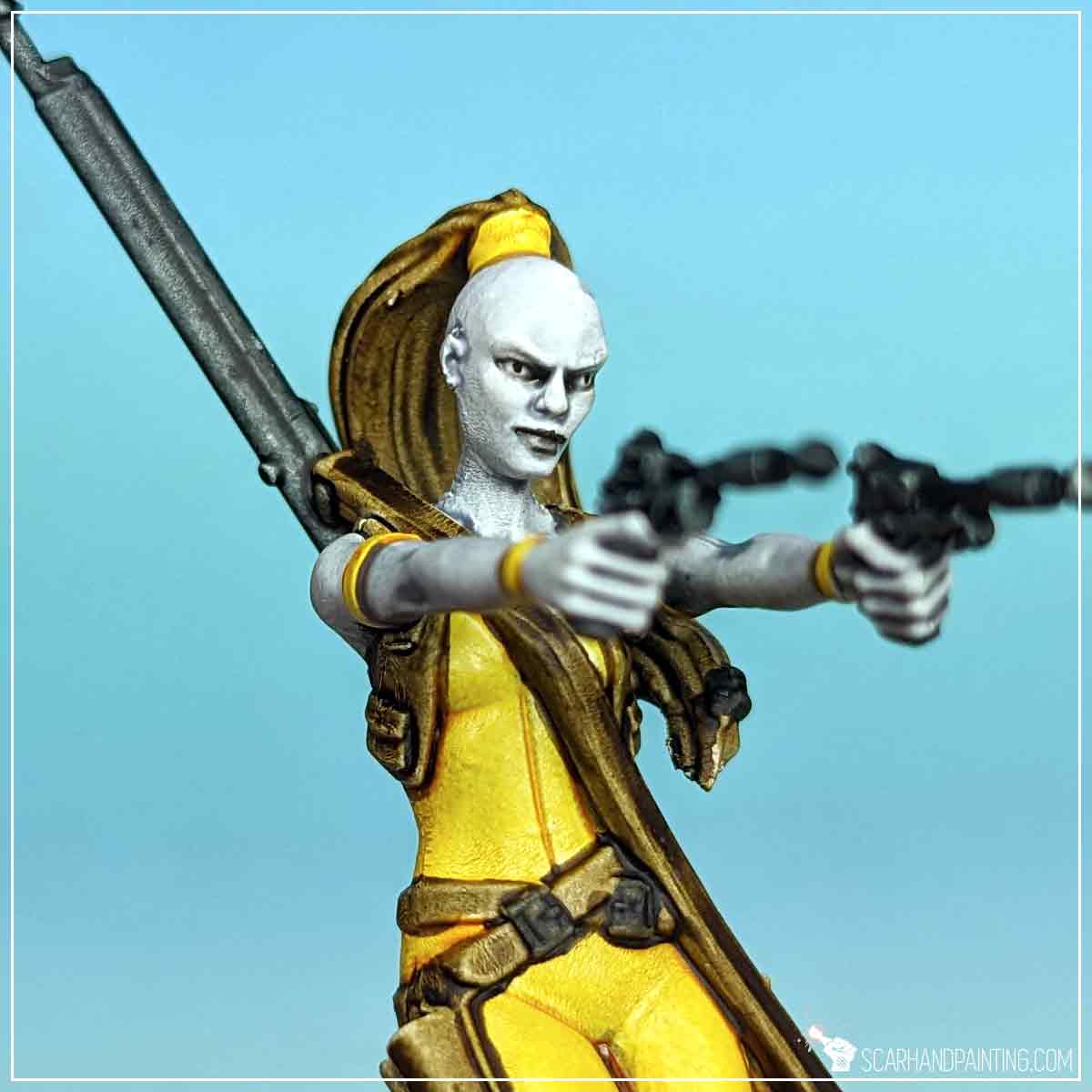
Finally I have painted the base following steps previously presented in the Tutorial: Painting Star Wars Shatterpoint Clone Troopers article, at which point the basic painting process was over and the miniature might have been considered done… but why not take it further?
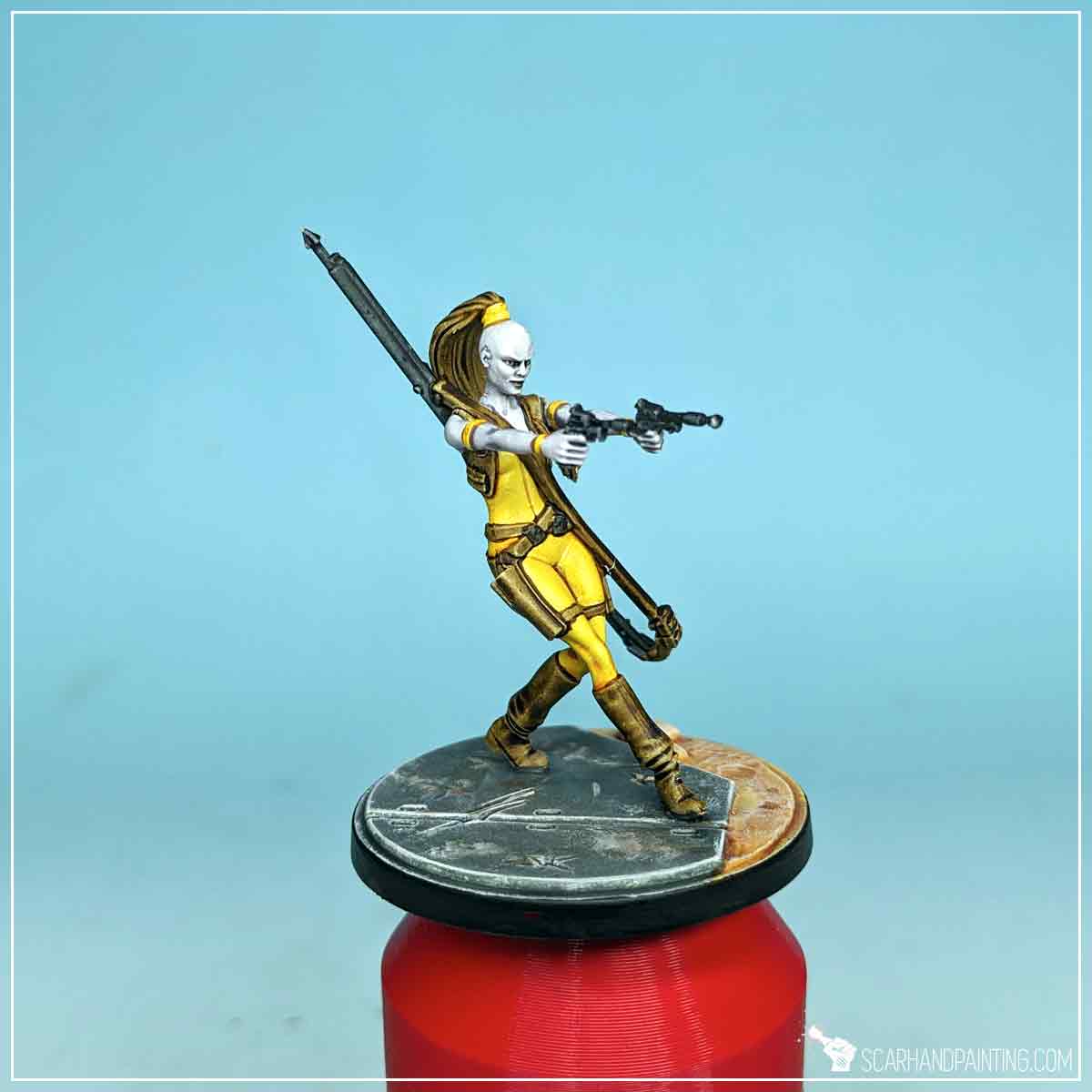
To bring more depth to Aurra’s clothes I applied a layer of Flesh Wash.
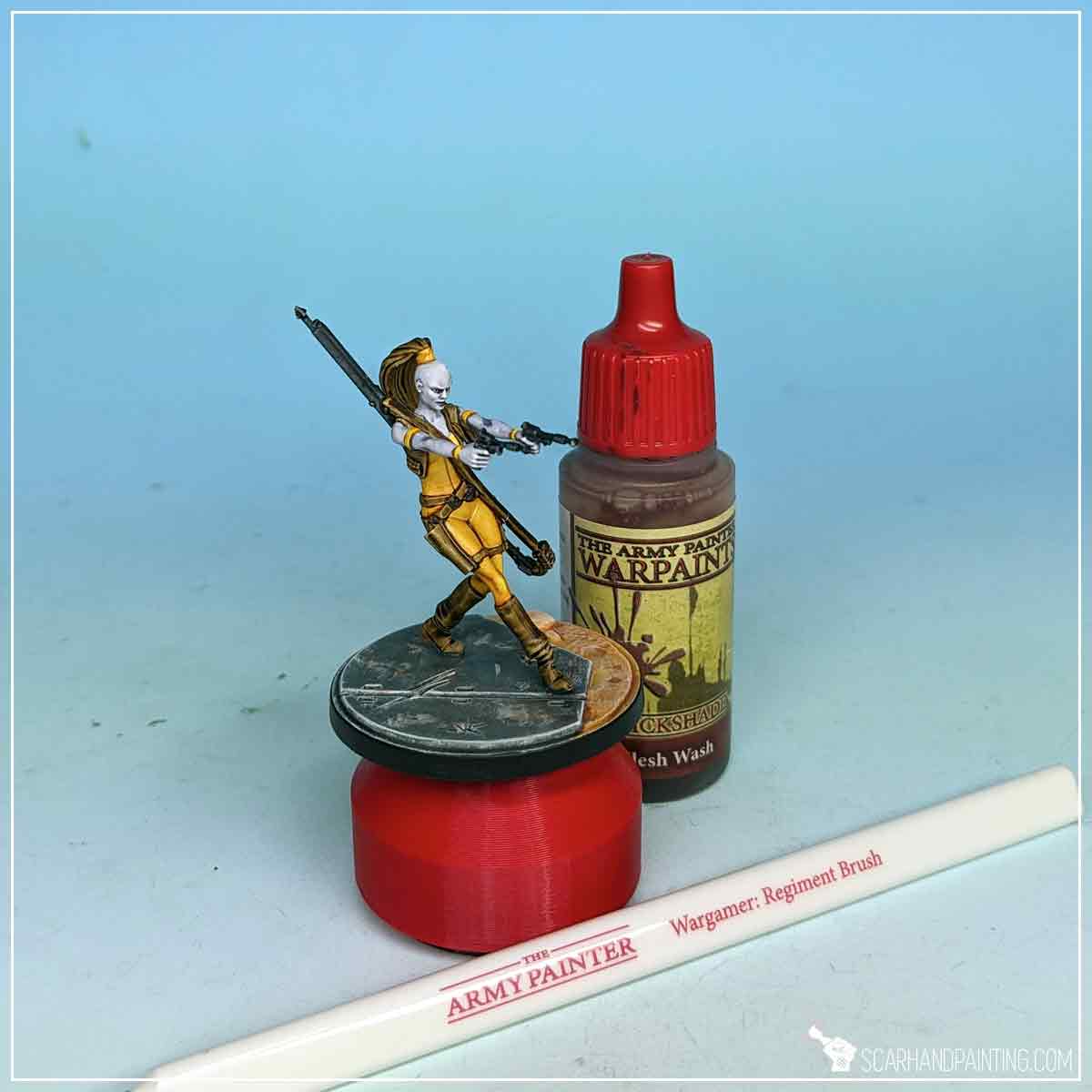
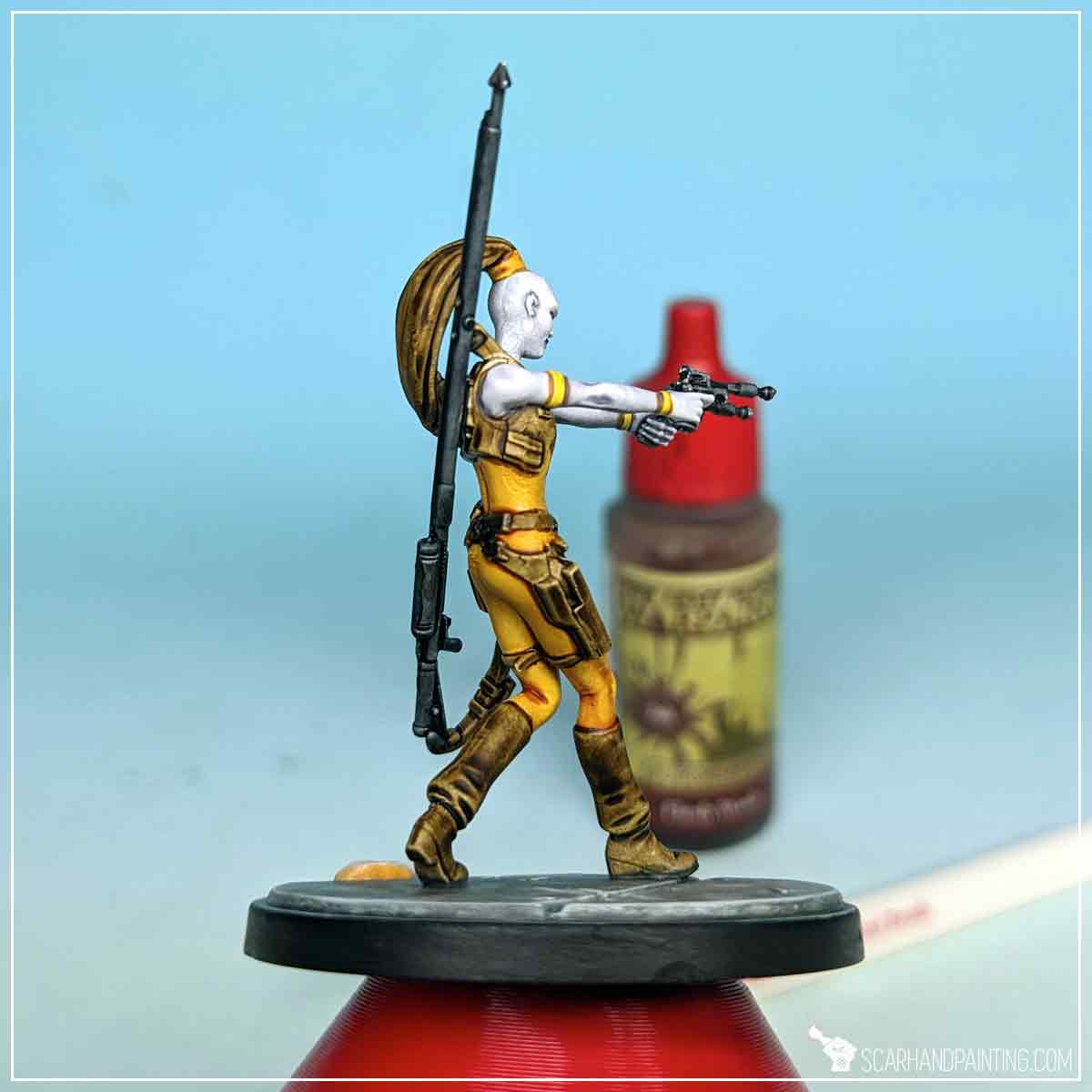
With Wargamer: Detail Brush I applied thin lines of Mummy Robes to the sharp edges of weapons and strap buckles. I also applied a few tiny dots to selected spots on weapons, buckles and hair jewelry. Dots of bright colors create focus points that result in more contrast within a particular color range.
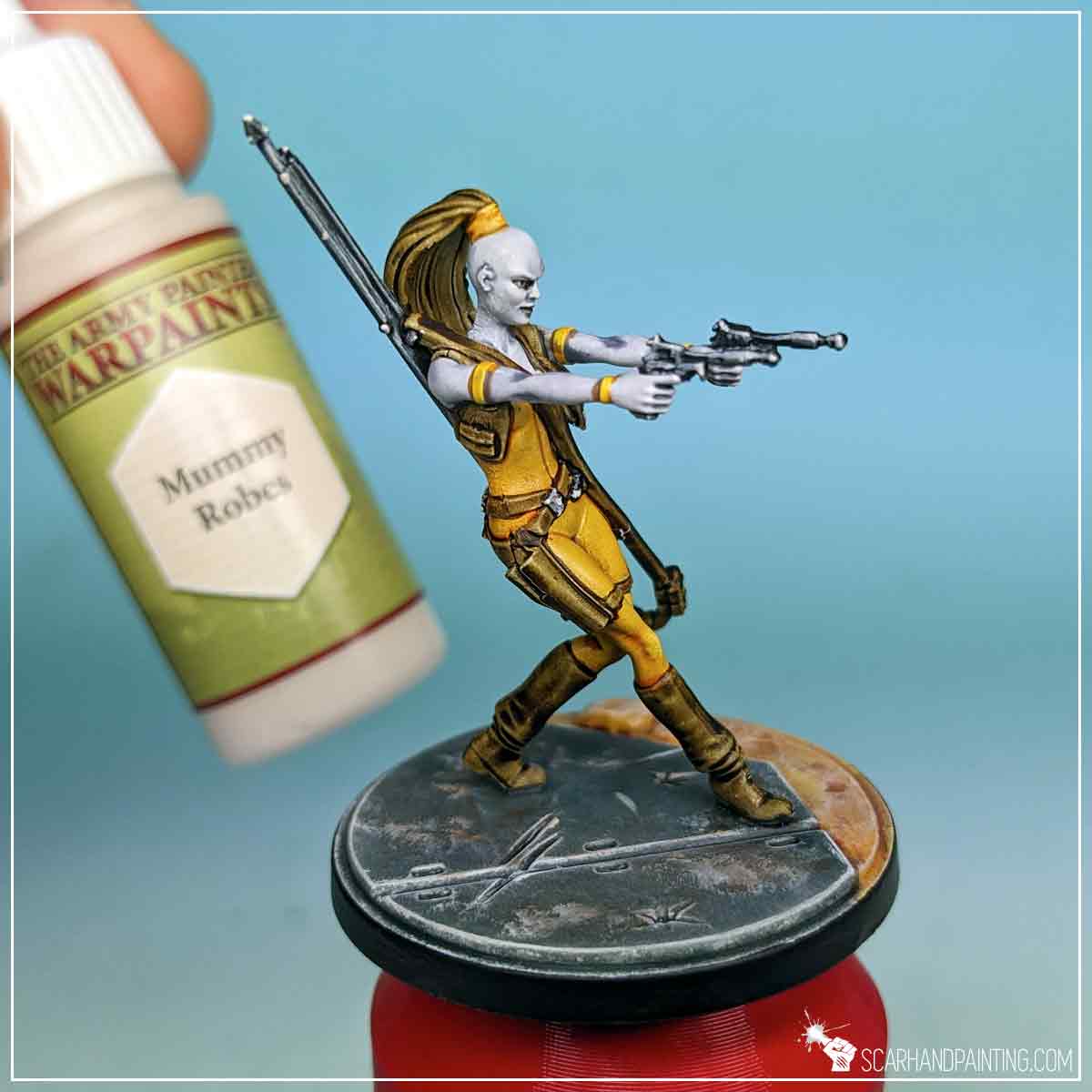
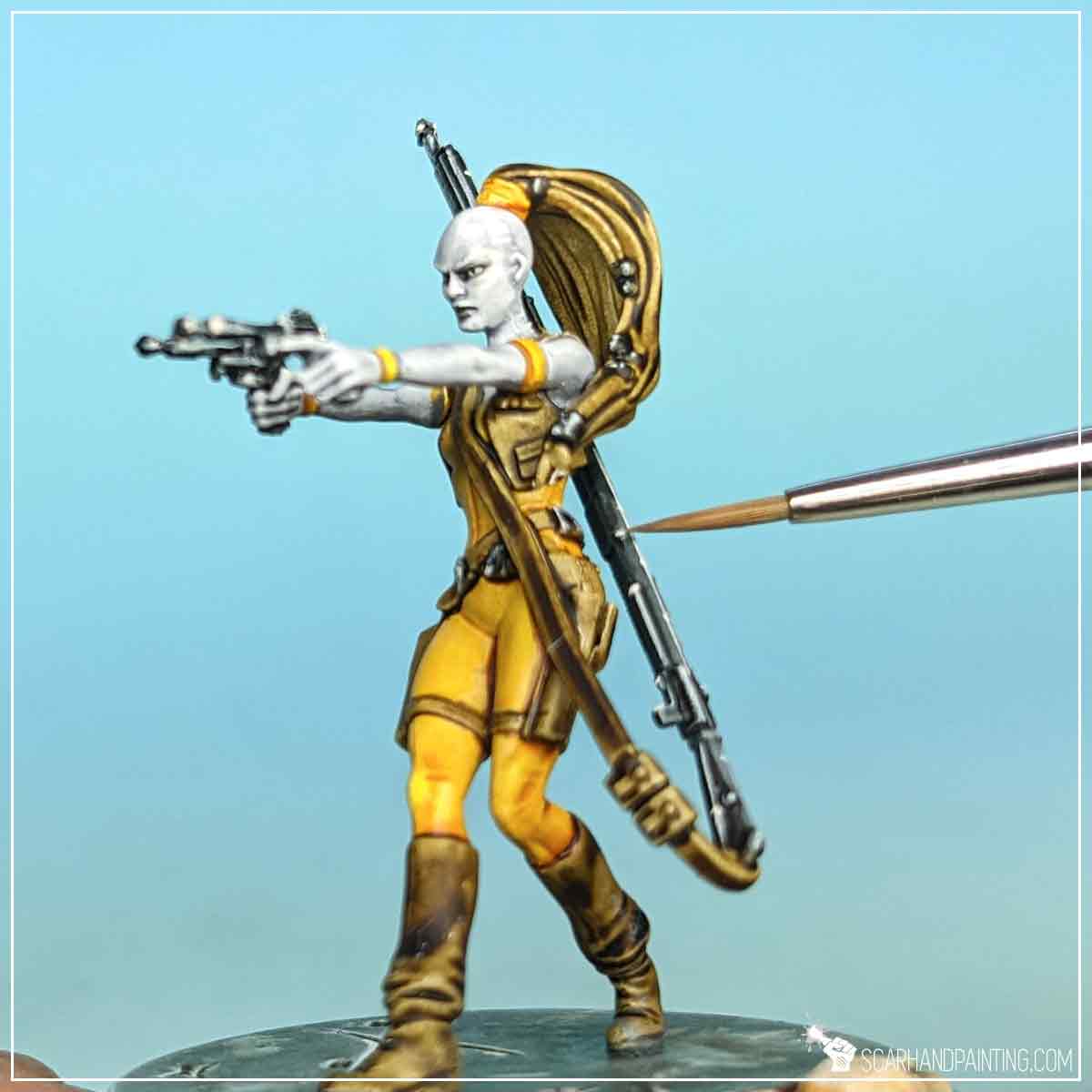
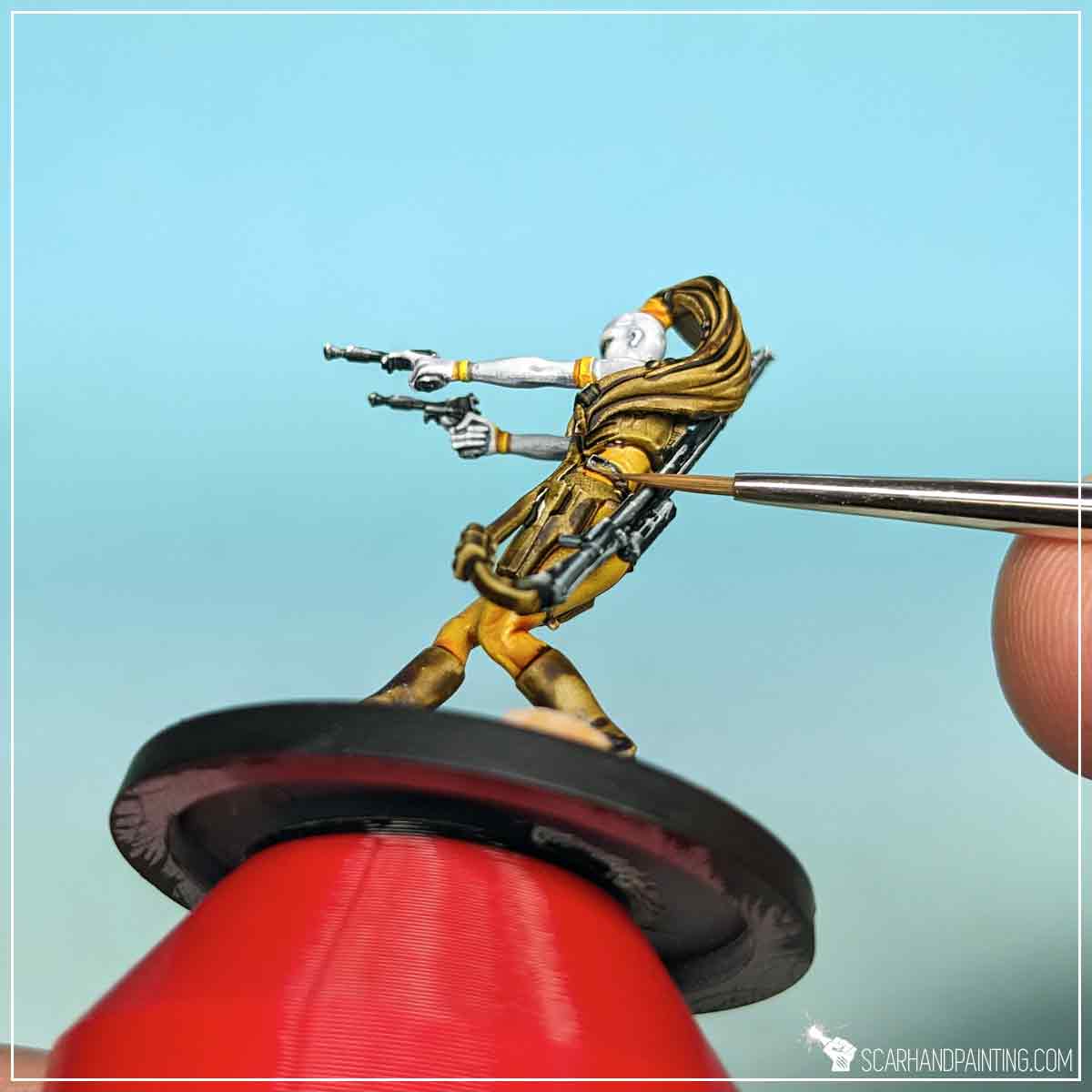
Next I applied similar lines and dots to the weapon strap with Elven Flesh color.
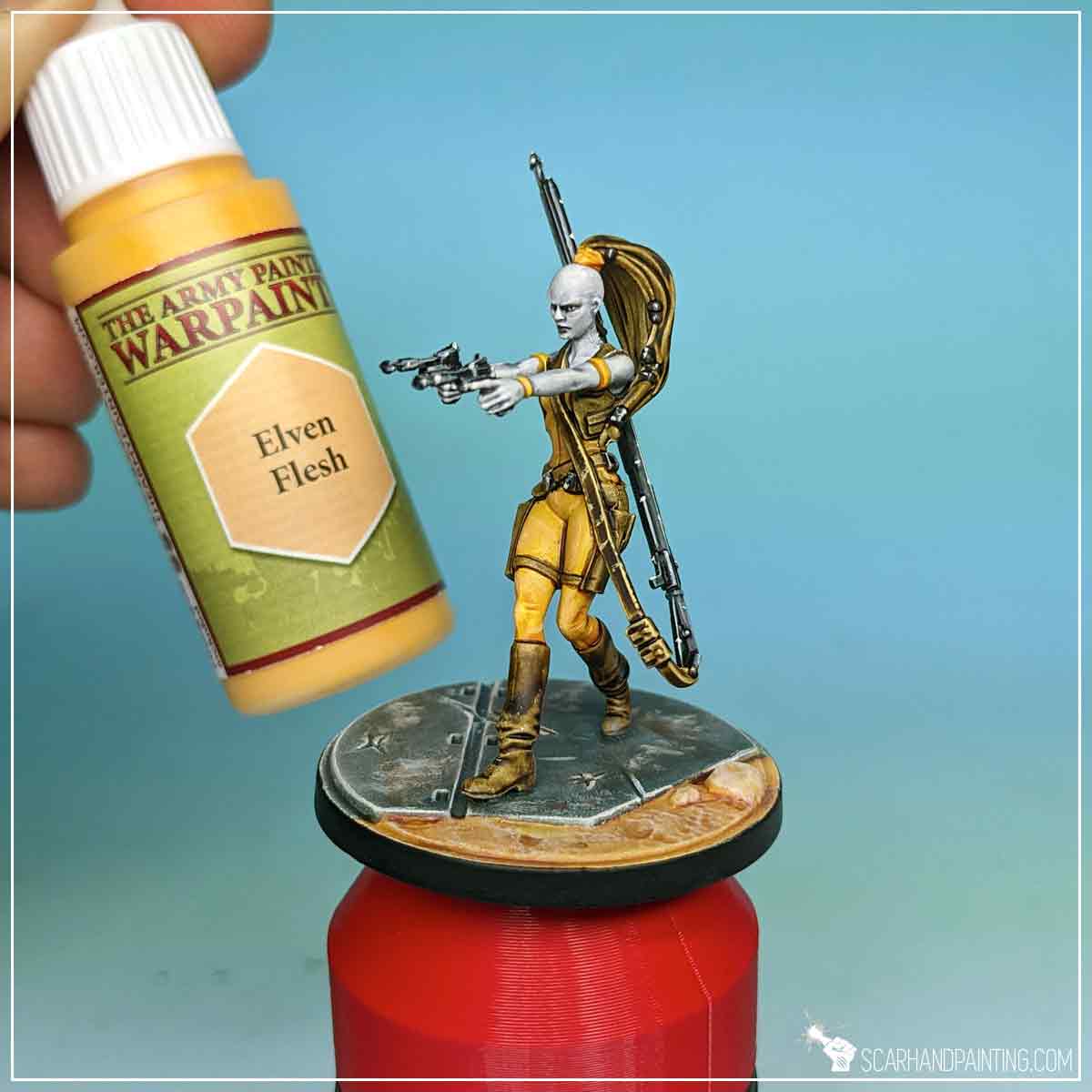
All other browns, including straps, hair, boots and weapon holsters, I have highlighted with lines and dots of Mummy Robes to prepare them for upcoming color filters.
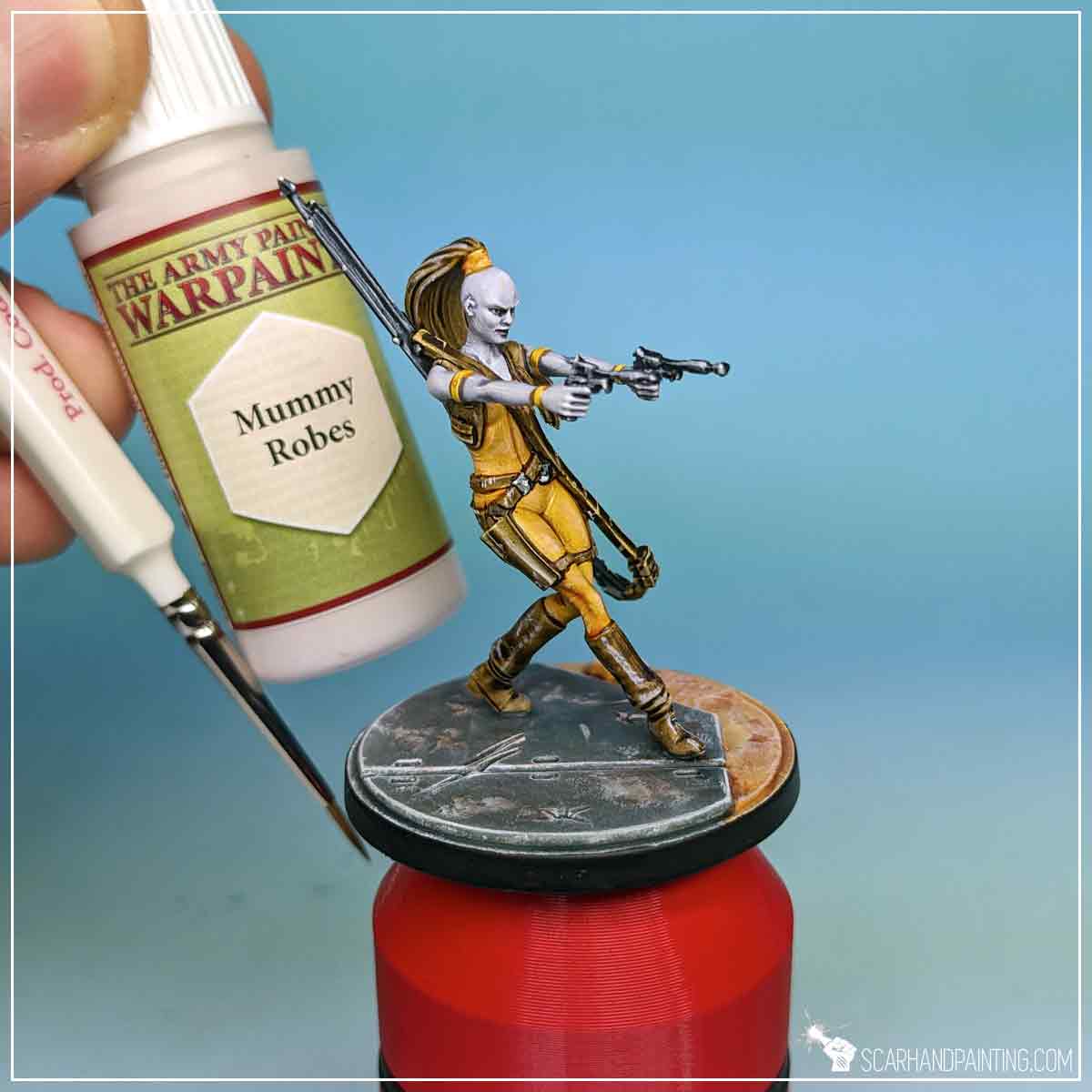
Next I have applied slightly thinned down Dusk Red to all elements, except for hair that got Brownish Decay treatment instead. Combined with well punctuated weapon strap the miniature ended up with a nicely diversified range of browns.
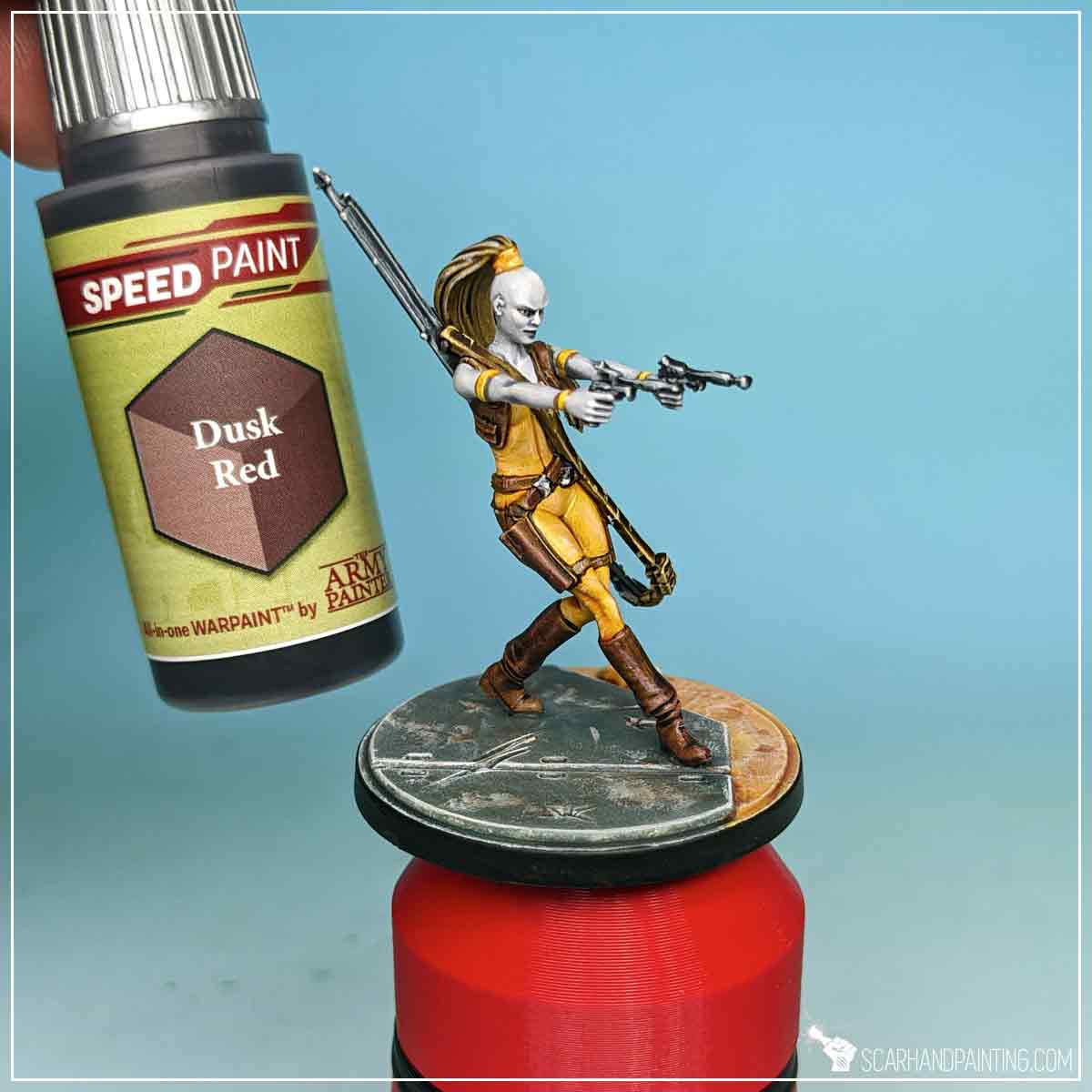
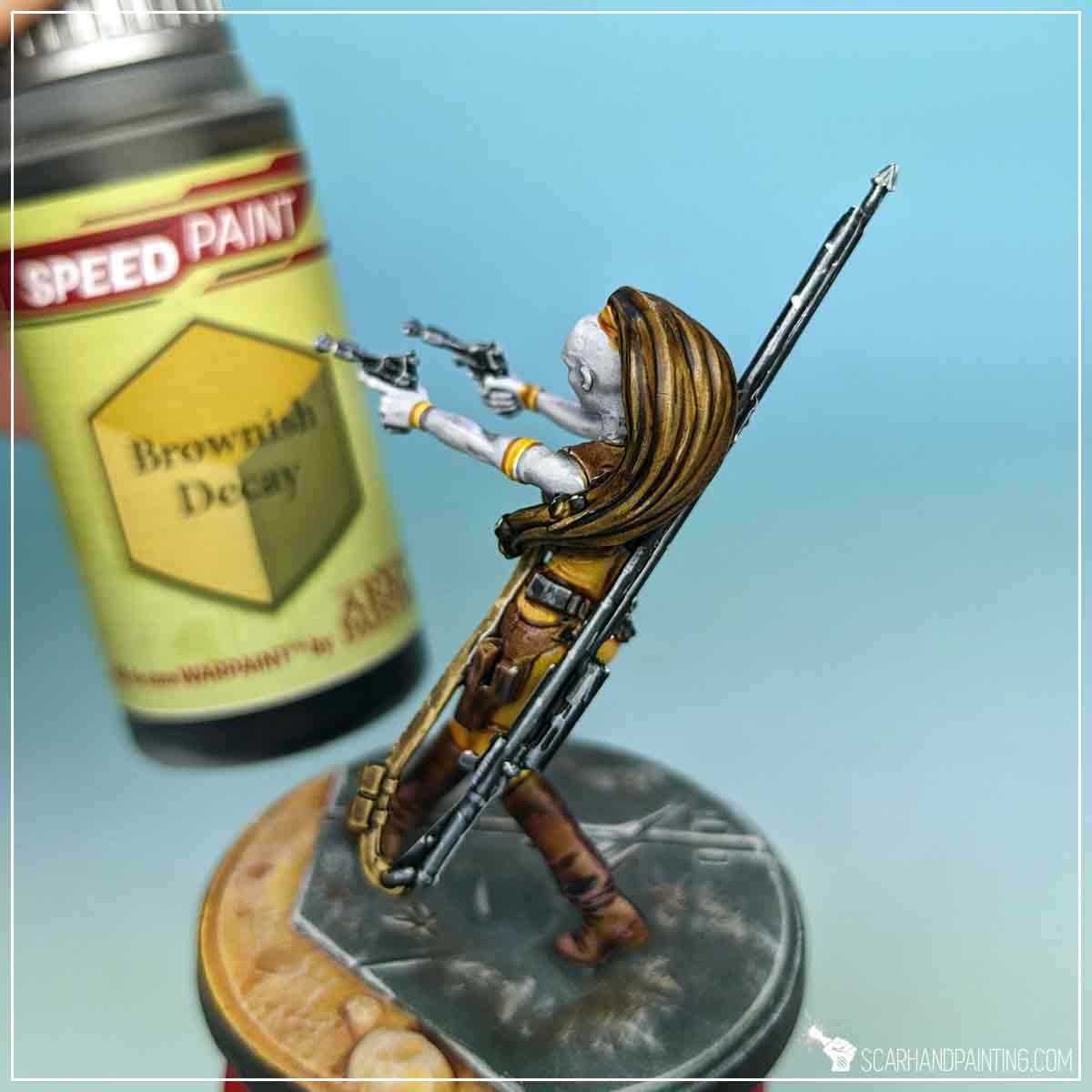
Finally I Varnished the miniature the same way as presented in the Tutorial: Painting Star Wars Shatterpoint Clone Troopers article.
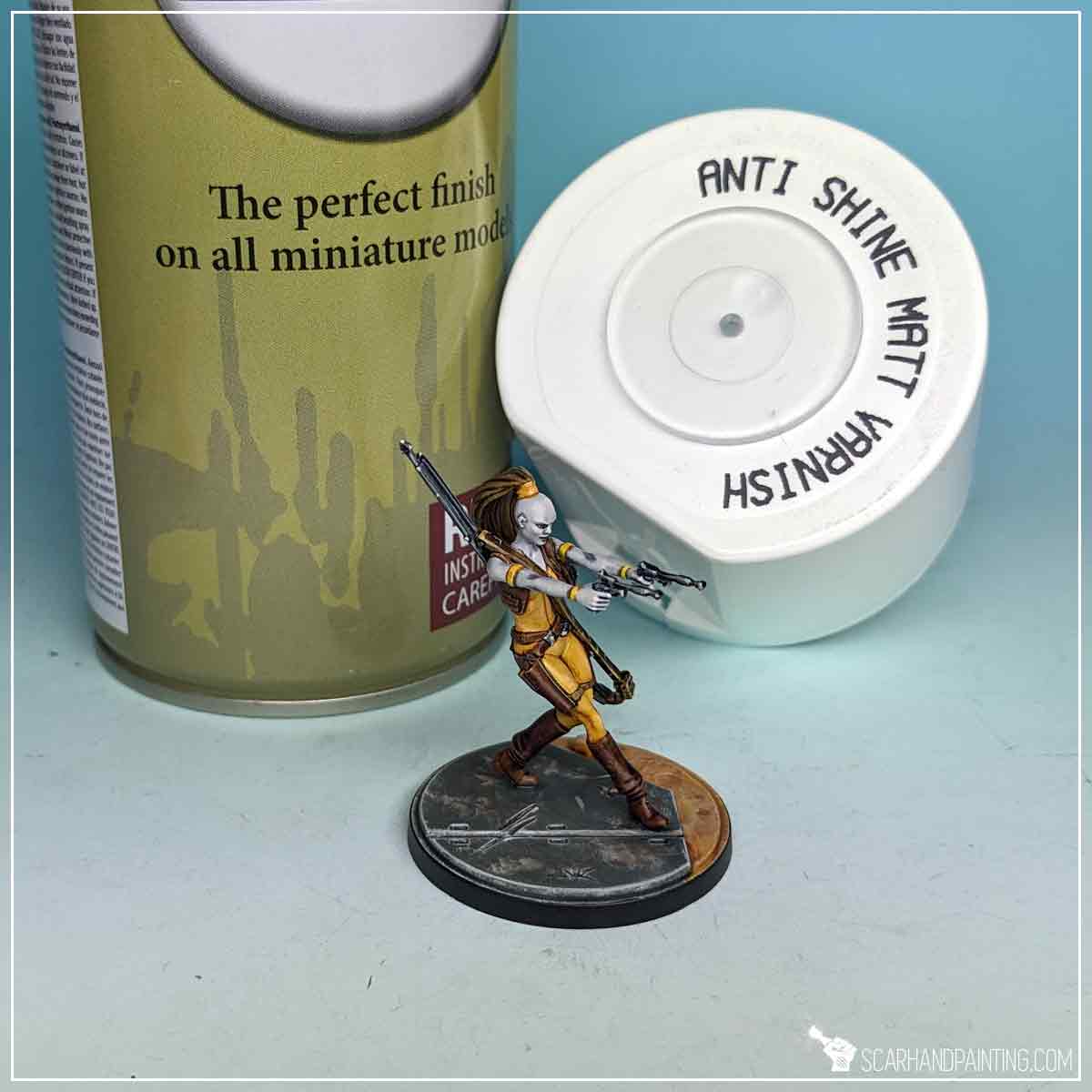
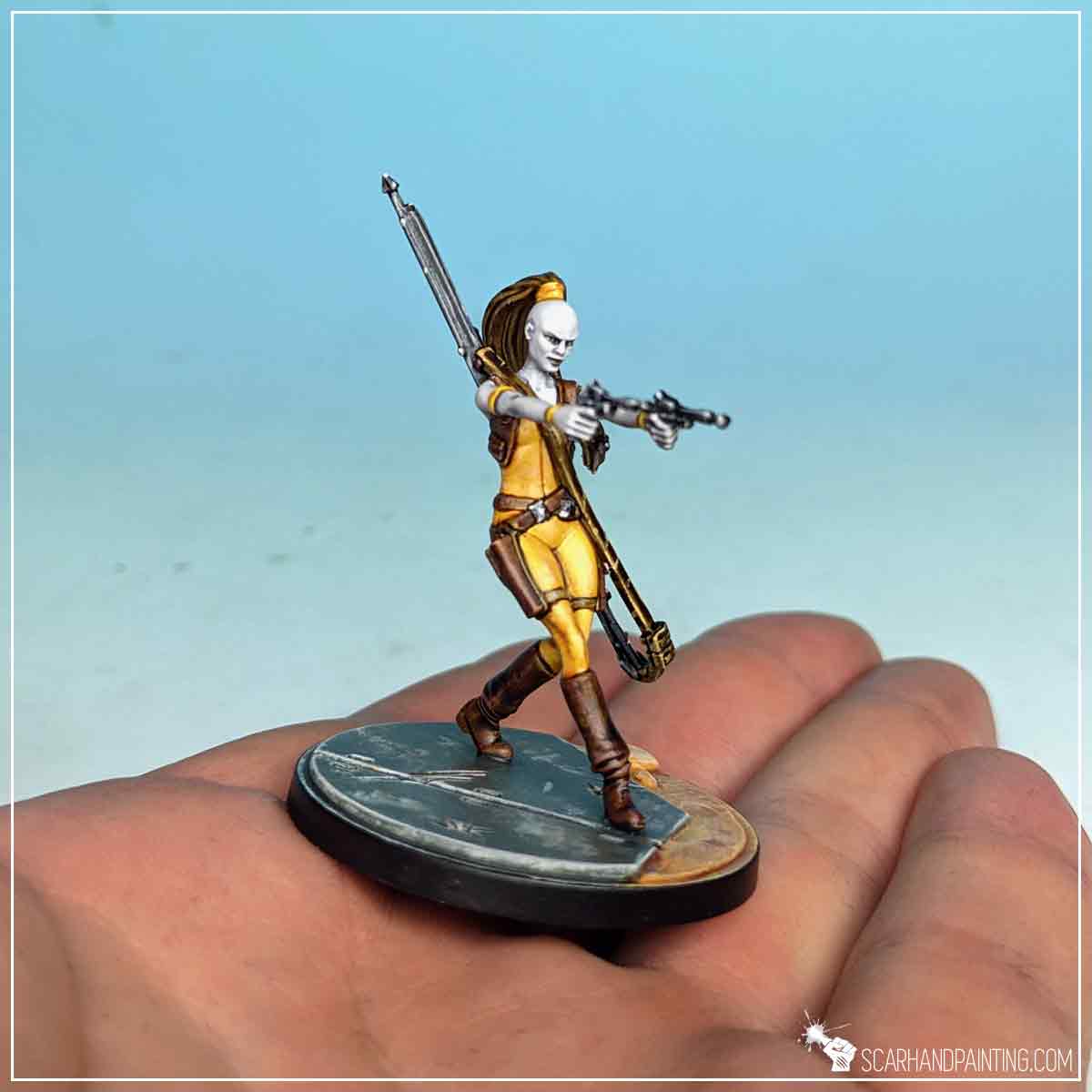
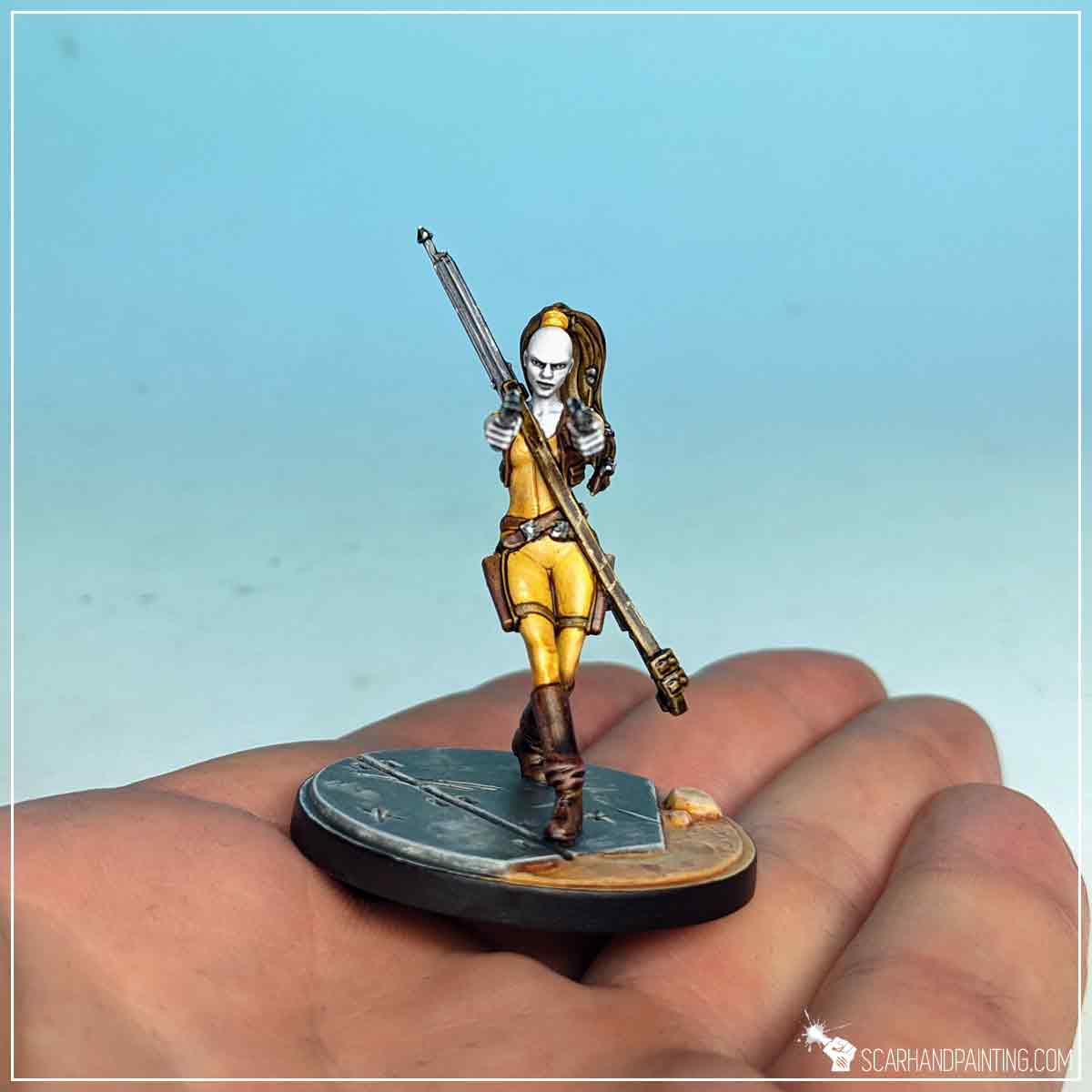
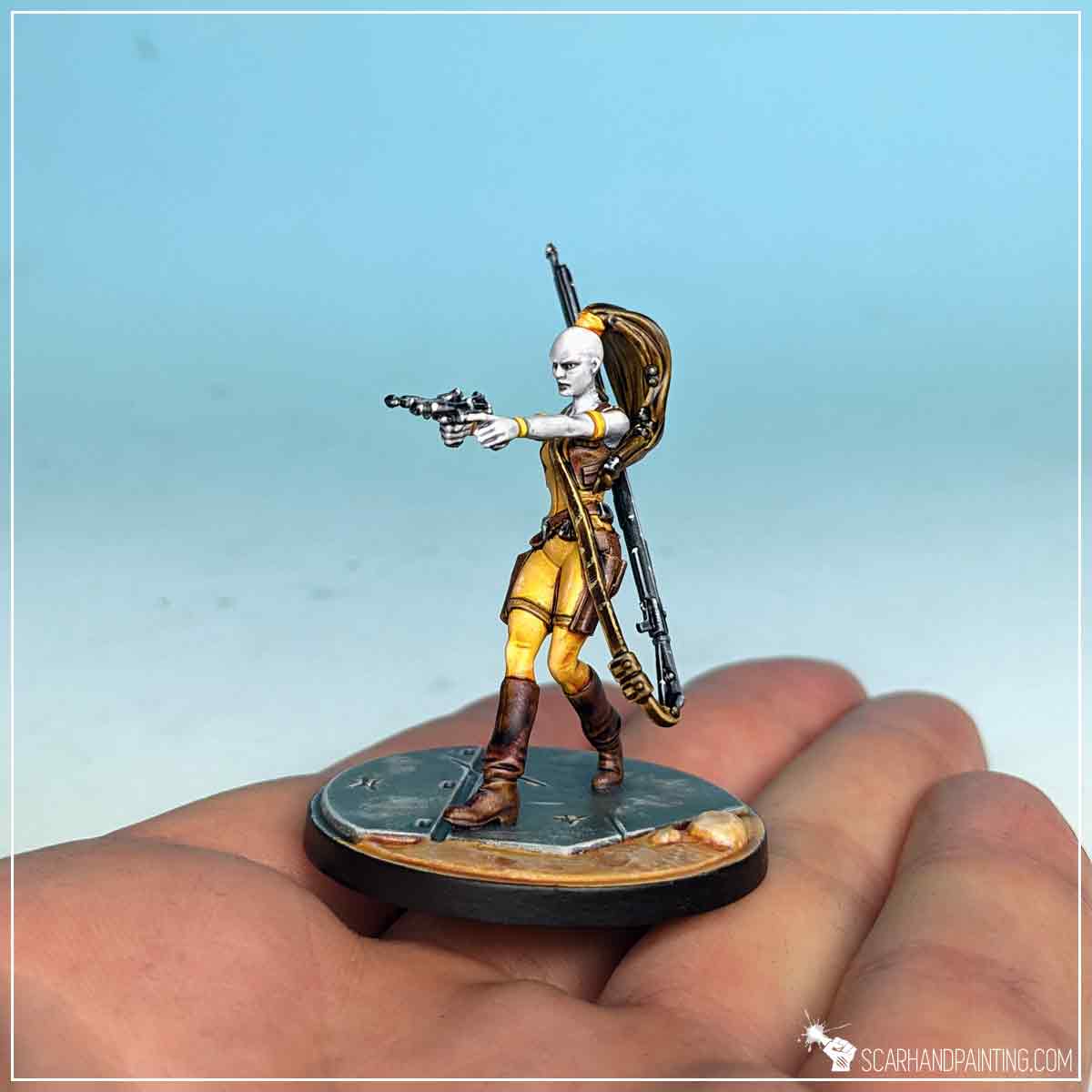
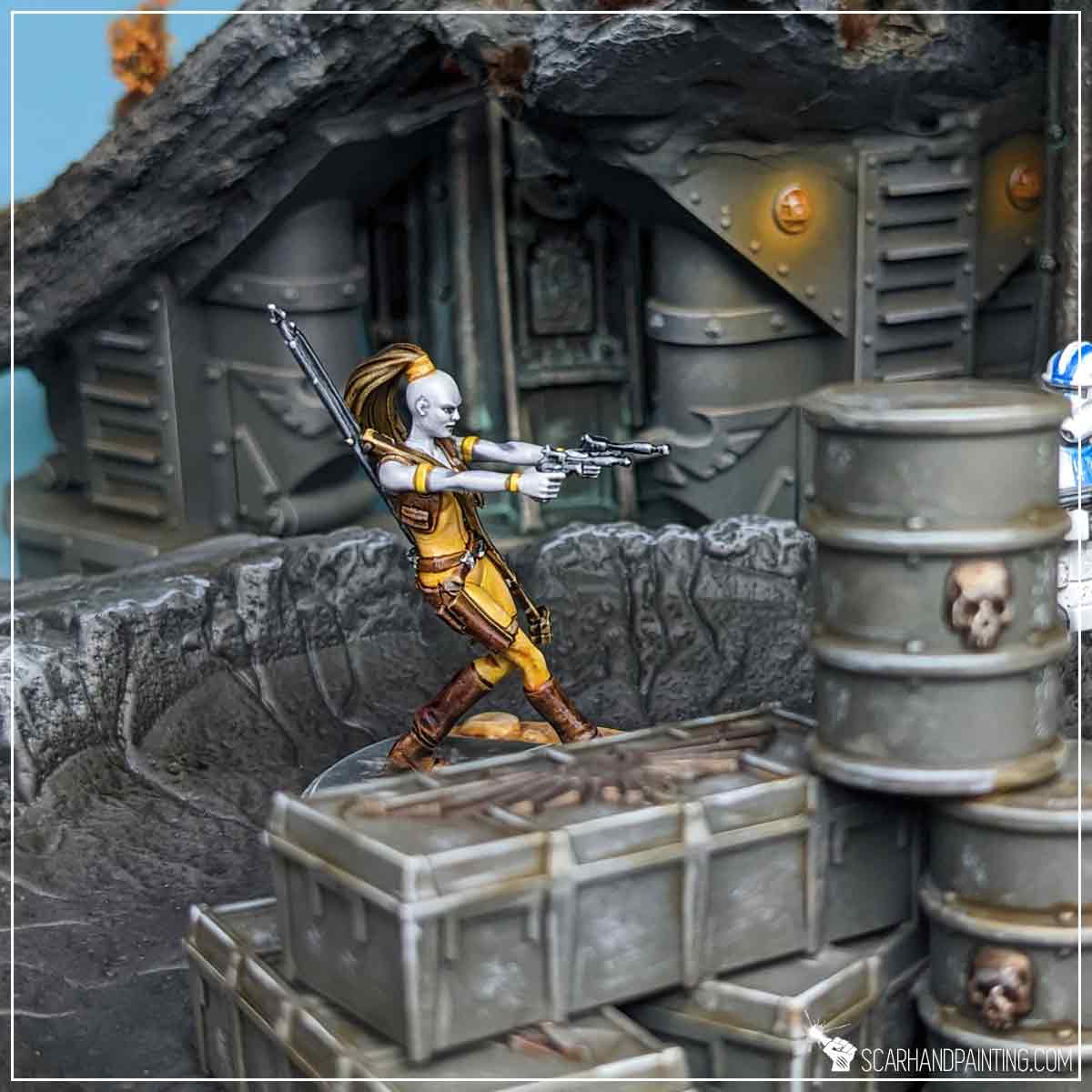
I hope you find this tutorial interesting. Be sure to let me know your thoughts in the comments below or via Facebook or Instagram. I would also appreciate it if you considered sharing this content with your friends, who might find it useful. Many thanks to Rebel.pl for sponsoring this content. Stay tuned for more Star Wars: Shatterpoint tutorials.

Welcome to Painting Star Wars: Shatterpoint Cad Bane tutorial. Here I will present to you a Step-by-step of a basic painting process for Fistful of Credits Cad Bane miniature and a few extras.
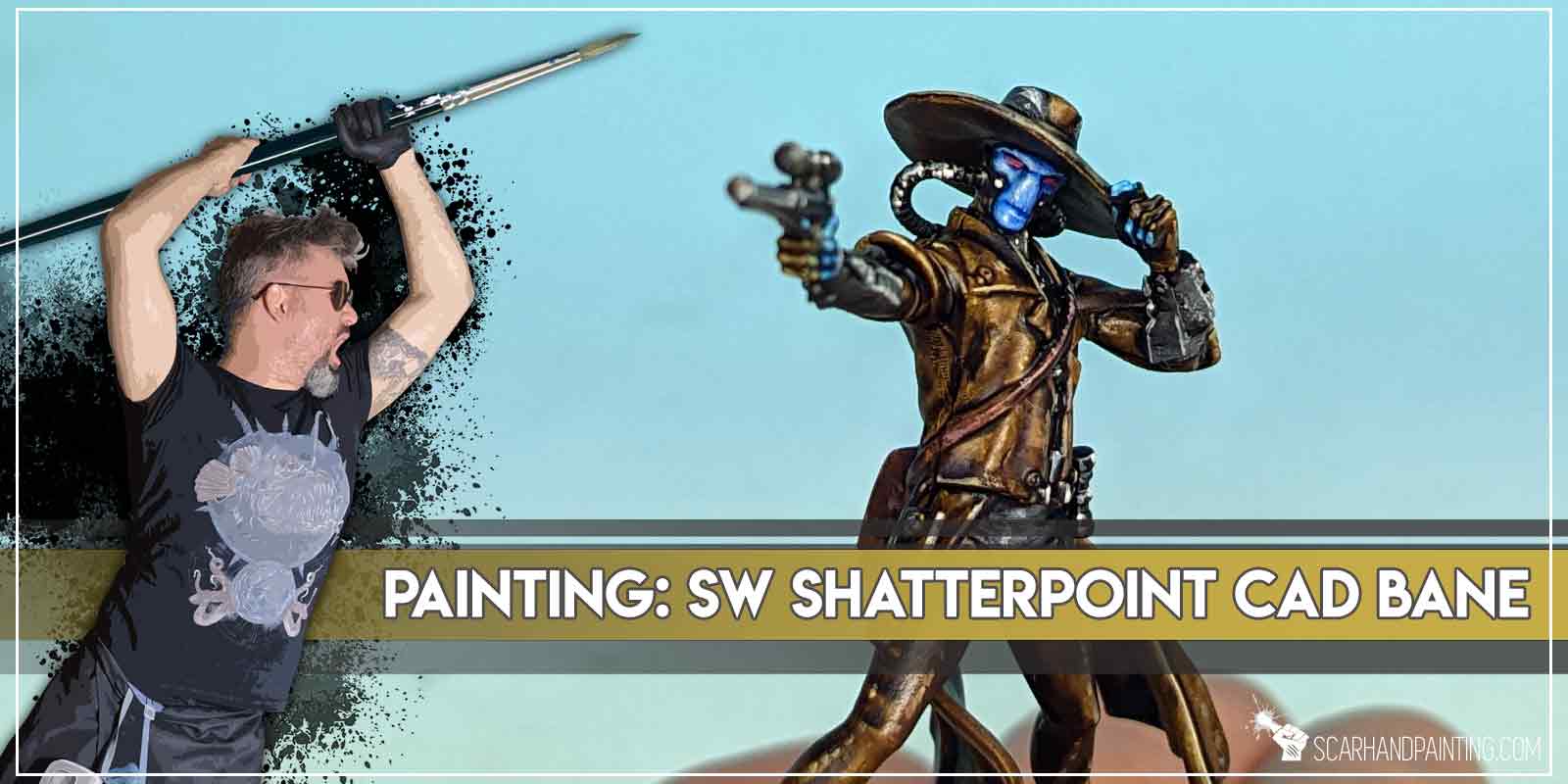
Before we start, some notes:
Both Mandalorian Super Commandos were prepared in the same way as previous Shatterpoint miniatures. Visit Tutorial: Painting Star Wars Shatterpoint Clone Troopers article for a detailed step-by-step guide.

I mounted the miniatures on a stick with a piece of Blu-Tack, then undercoated them with The Army Painter White Matt Primer.
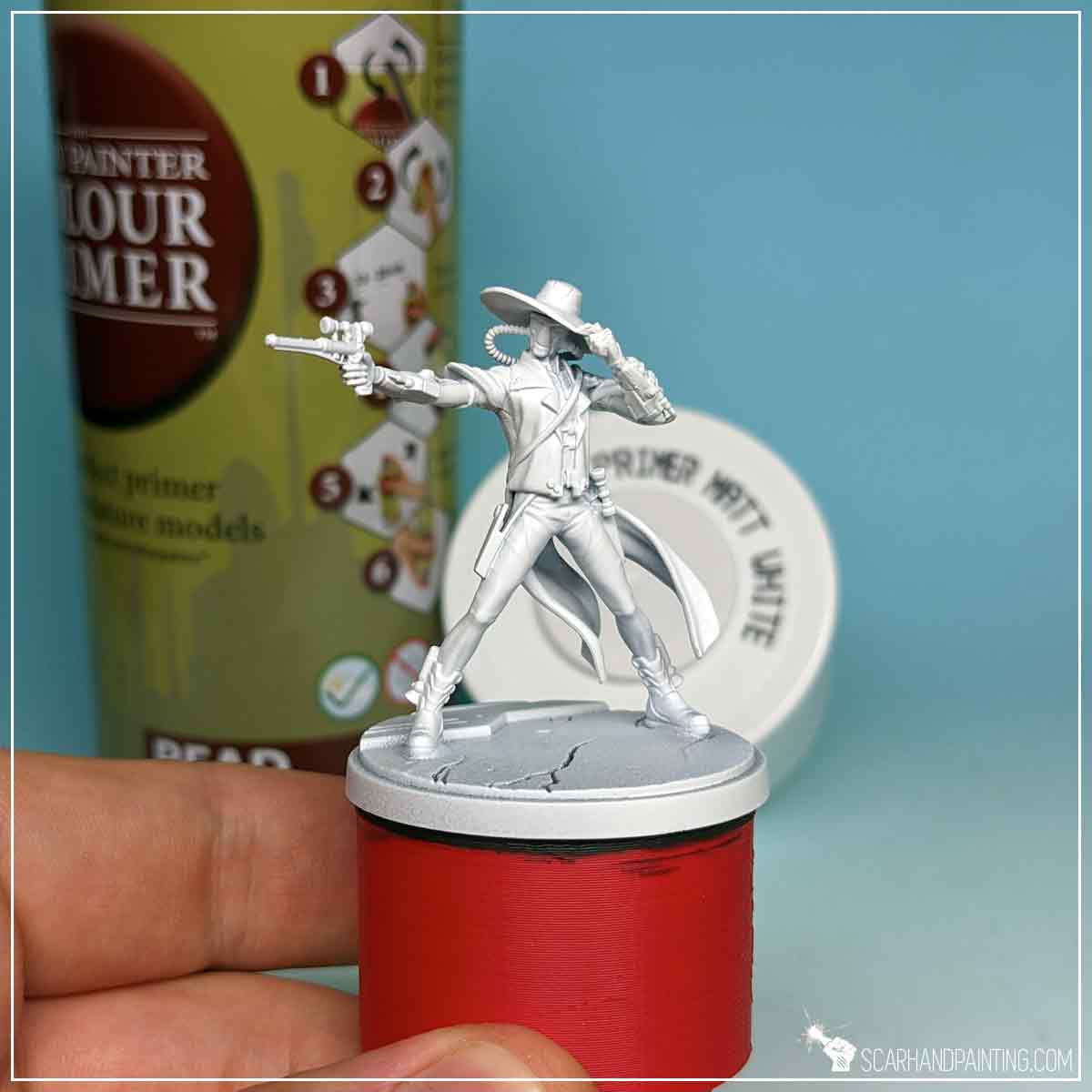
Mostly clothed in brown, the Cad Bane clearly favors comfort over style, or at least this is what I tell myself. The color is so prominent that I have decided to start with it and build from there. Using a Wargamer: Regiment Brush I have covered the entire miniature with Brownish Decay Speedpaint.
Then, once the first layer dried out completely, I repeated the process by applying another layer of Brownish Decay.
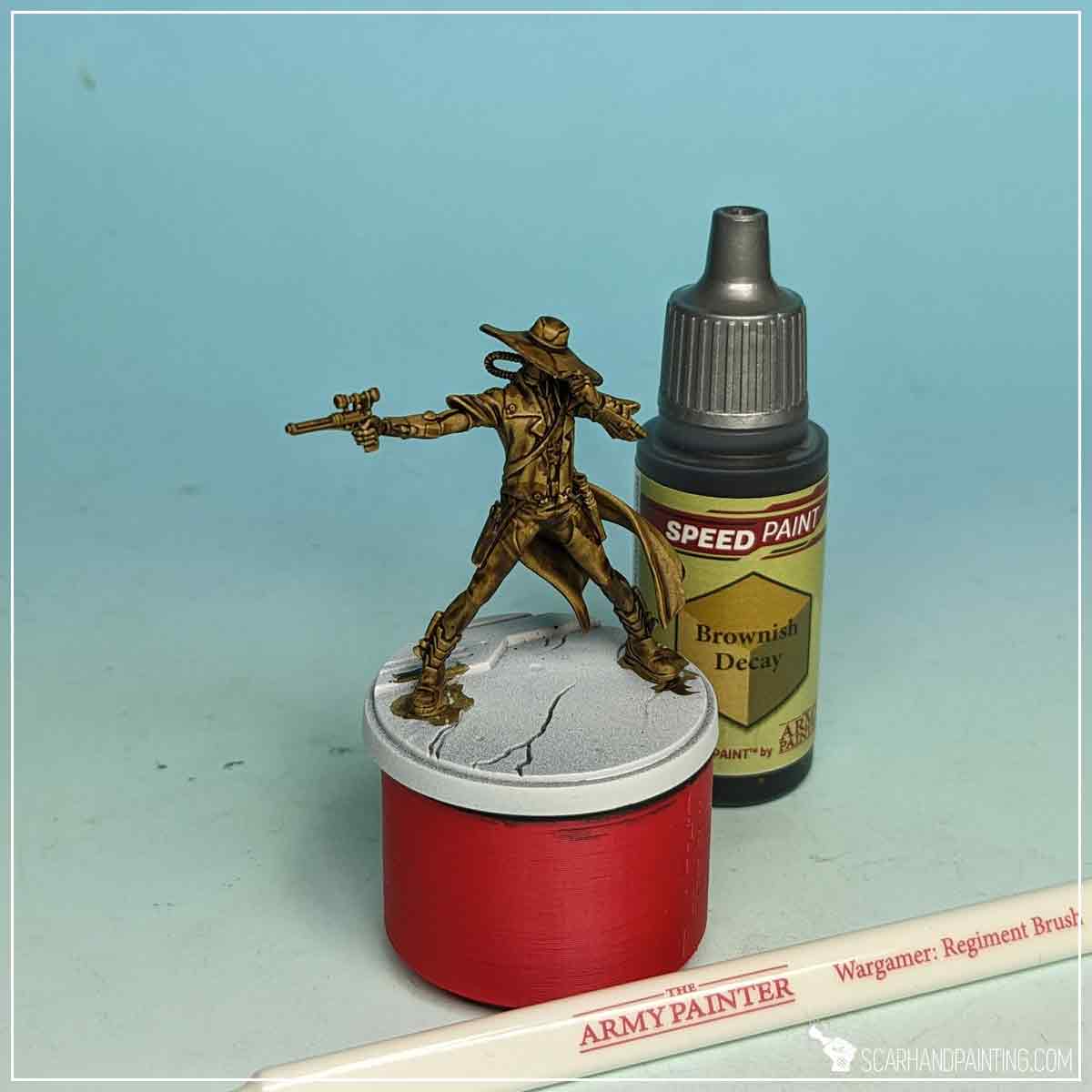
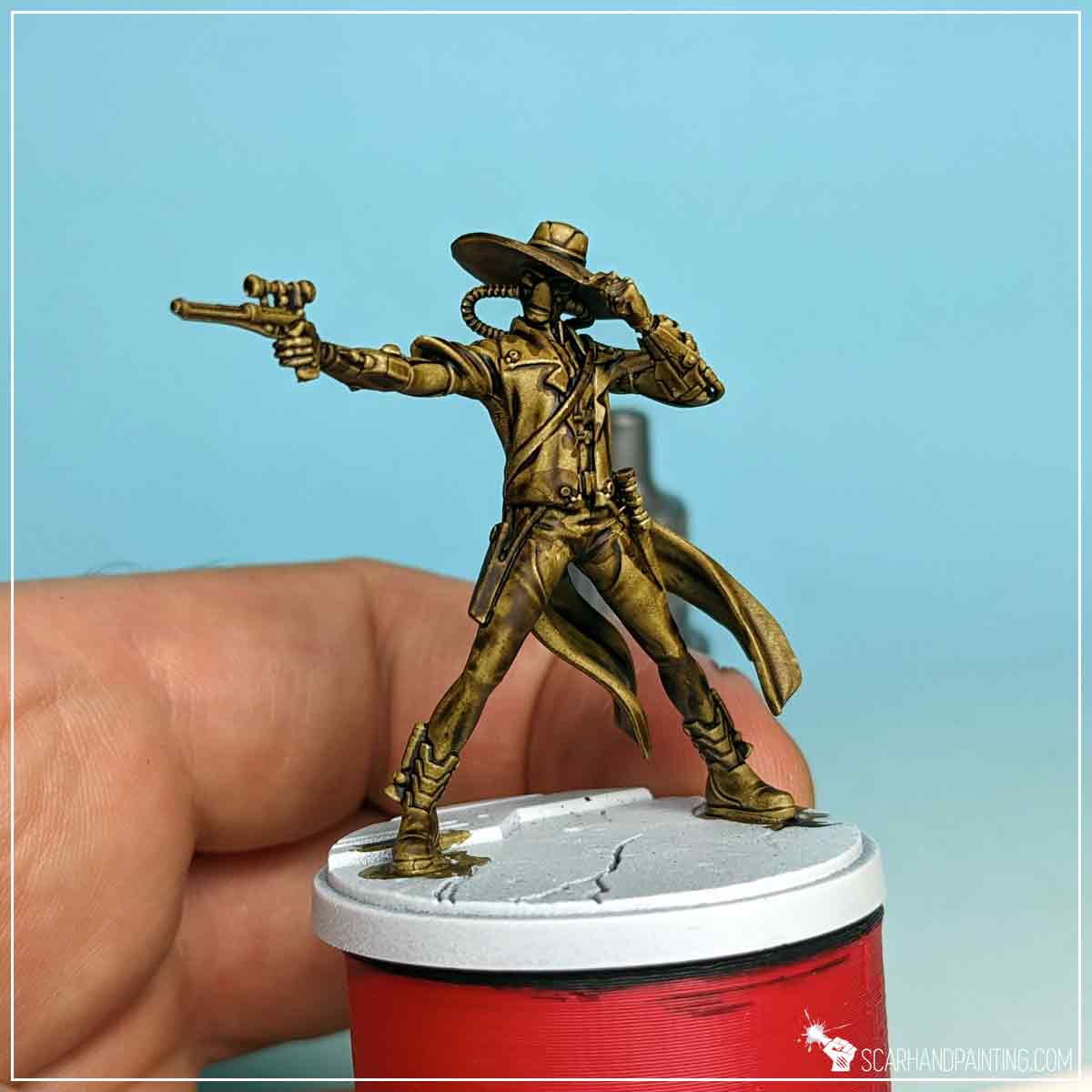
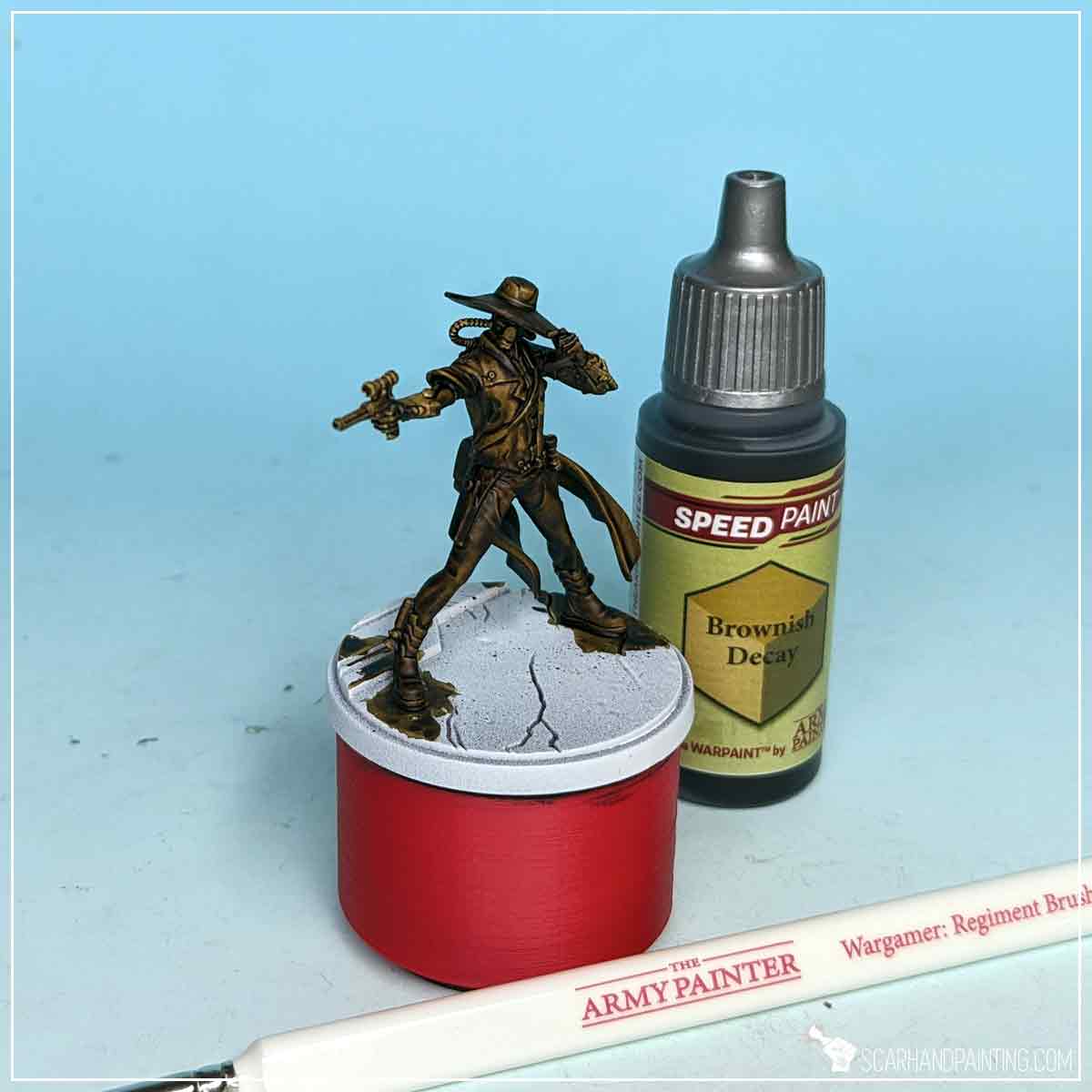
Usually I would have left some areas unpainted, but in this case painting around just a few spots (mainly face and fingers) was too much of a hassle, not worth the time investment. Instead I have repainted these areas with Matt White, thus creating a nice base for the upcoming Speedpaint coloration.
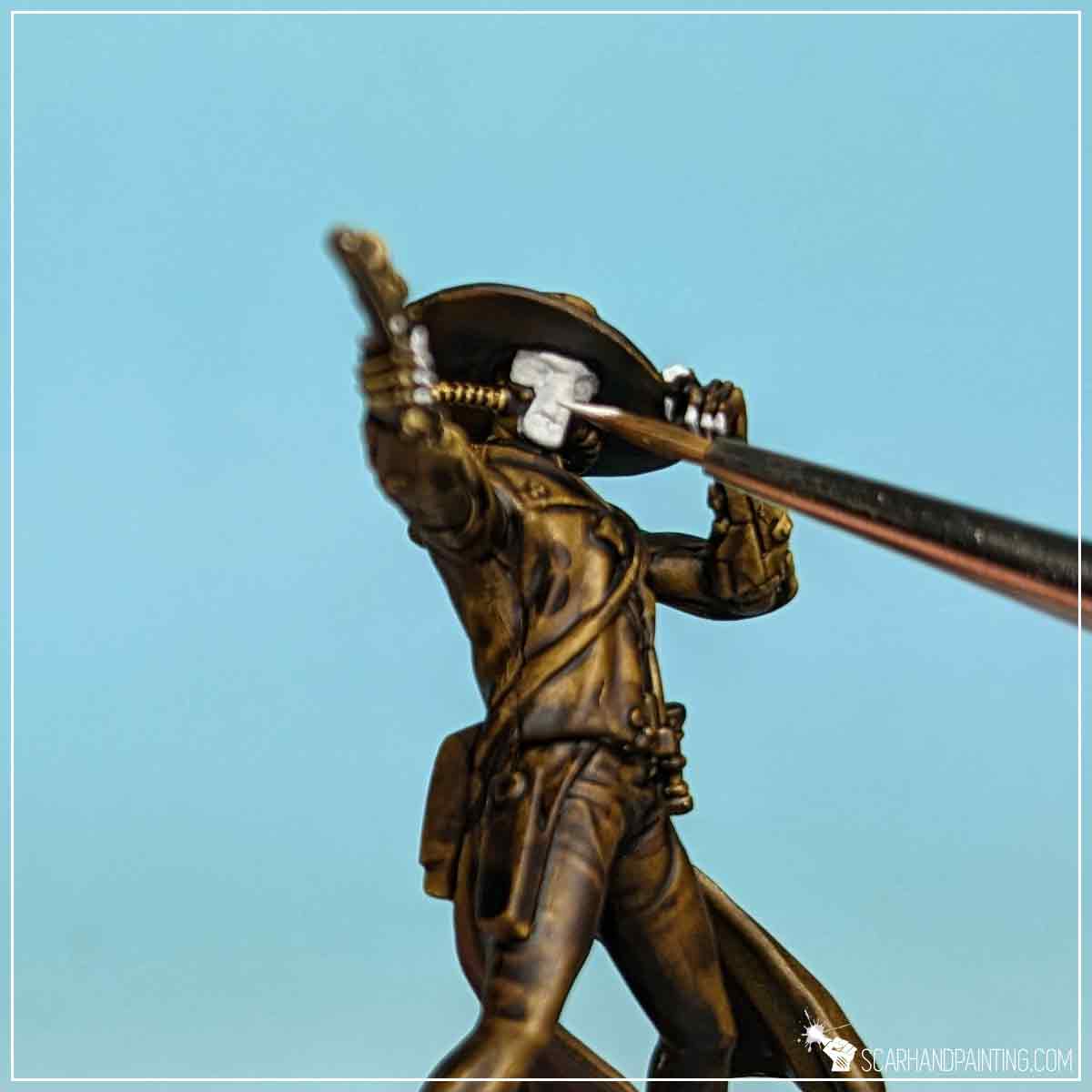
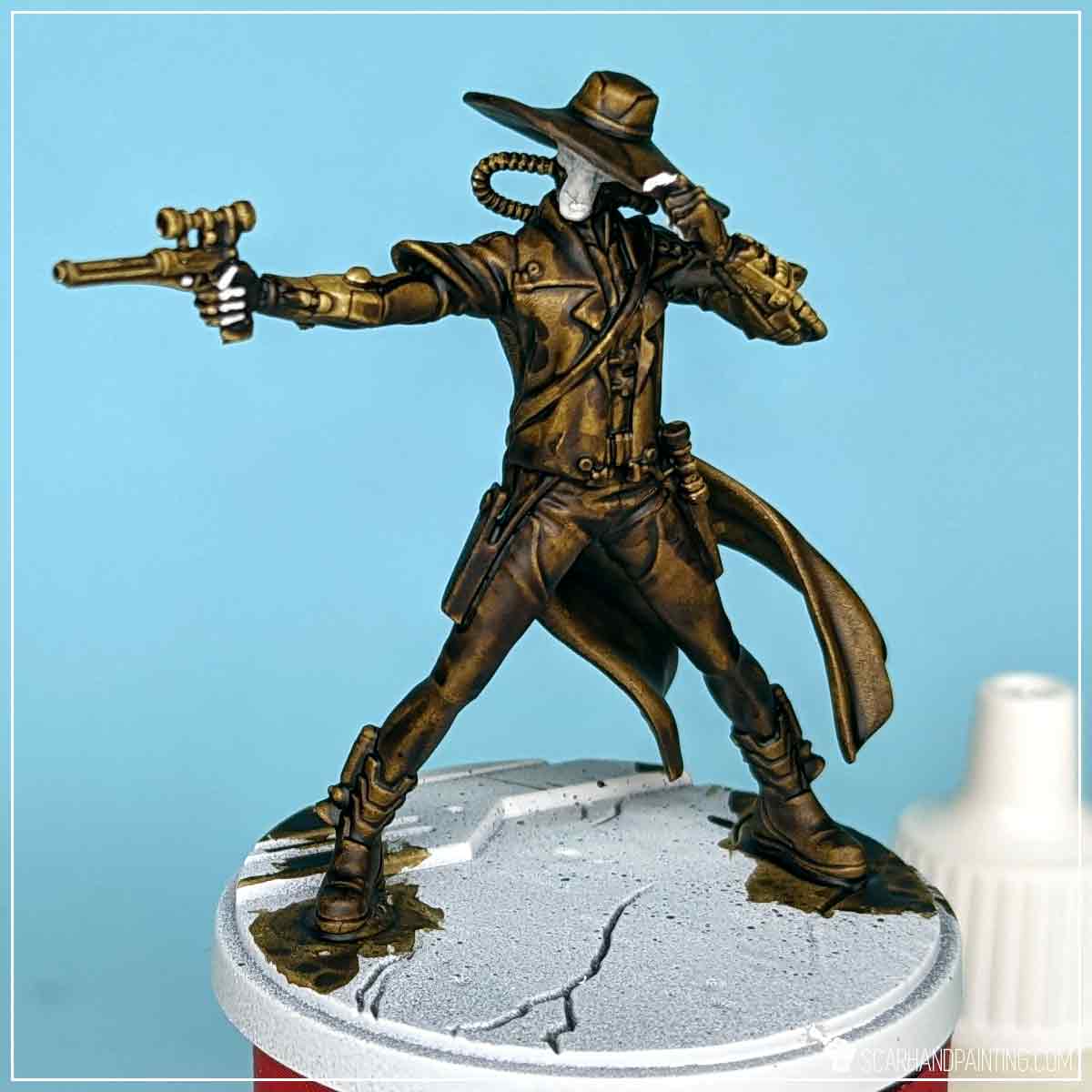
Next, with a Wargamer: Detail Brush, I applied Royal Blue Speedpaint to the face and the exposed fingers of the miniature.
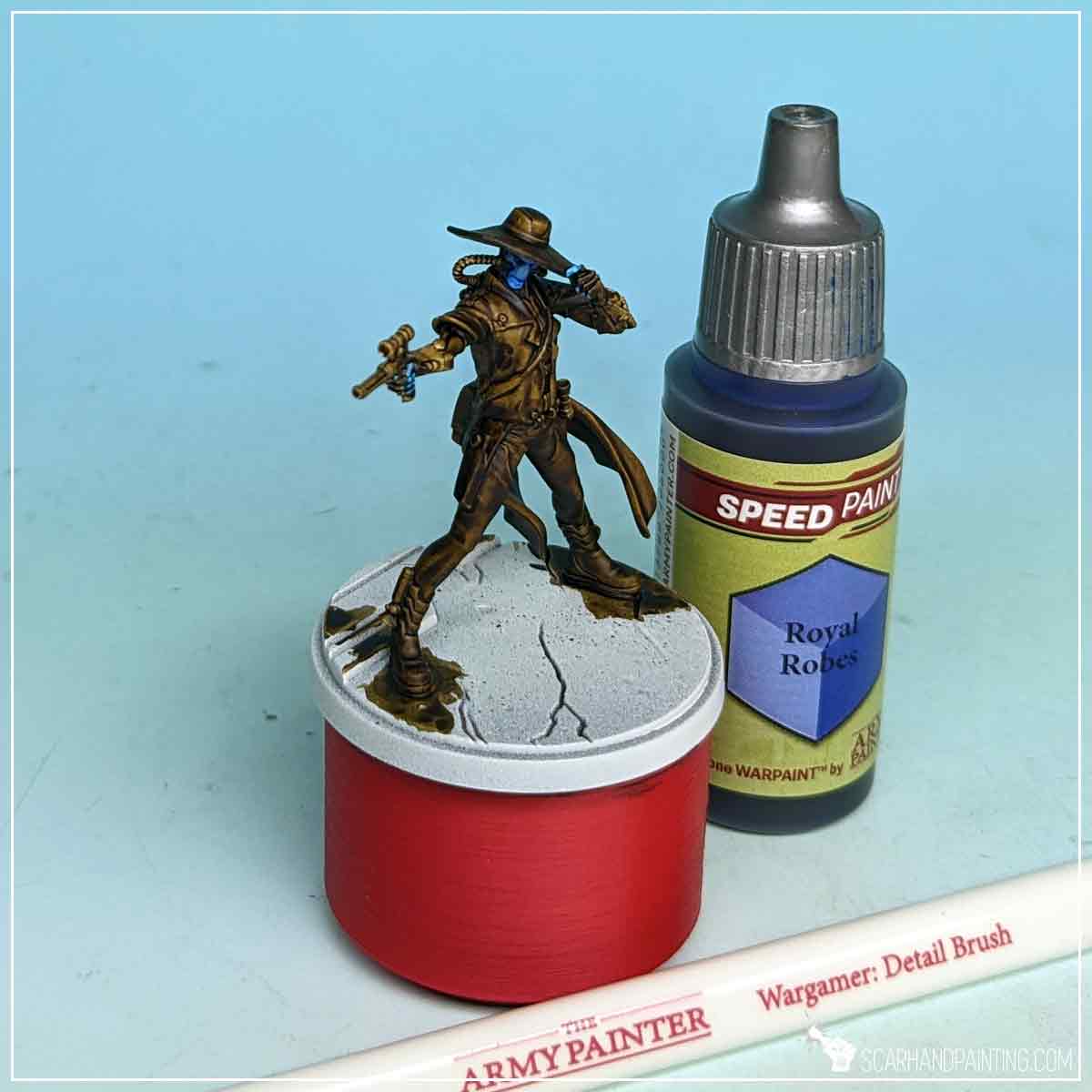
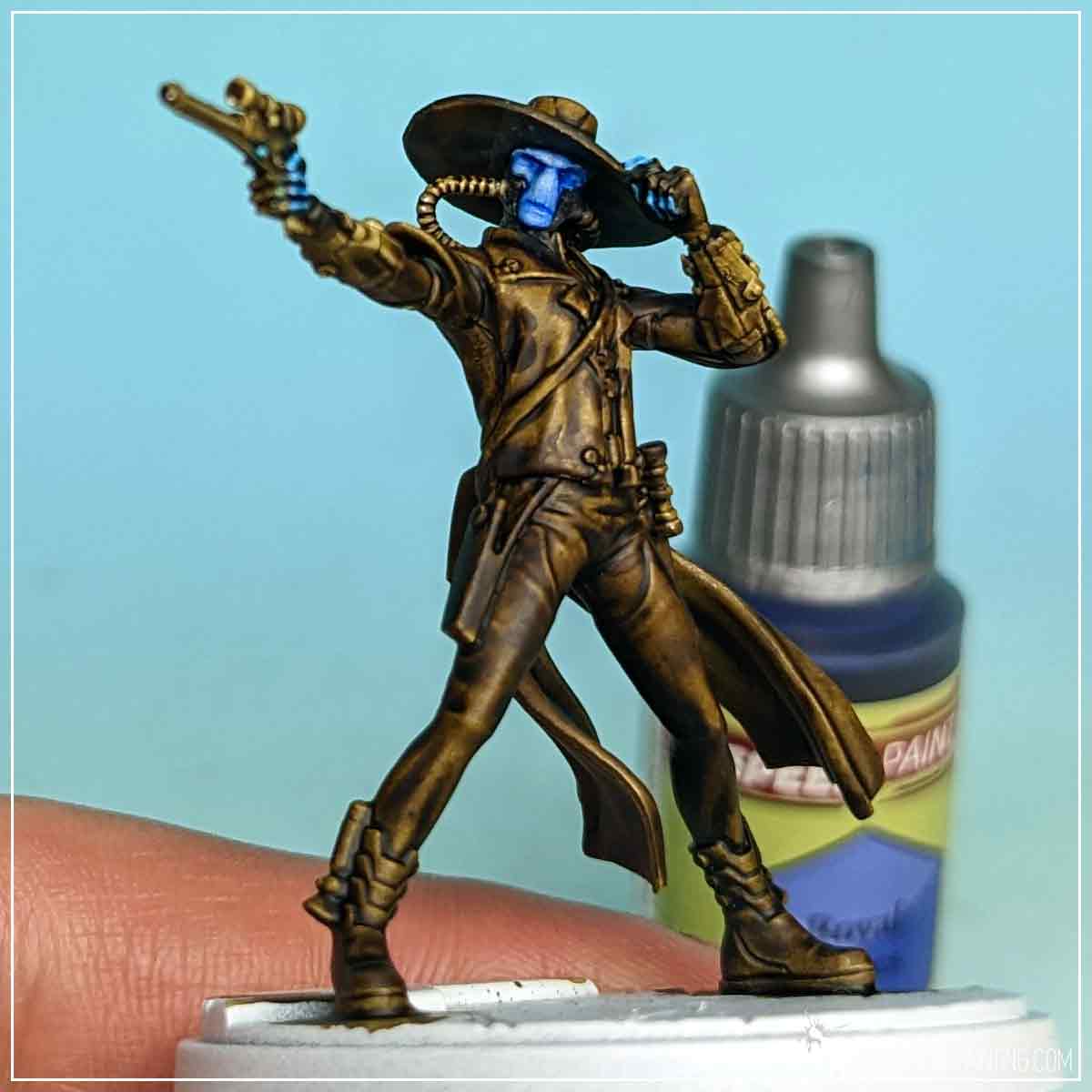
Weapons, breathing pipes, armor, had detail and the ‘under’ pants I have painted black with Grim Black Speedpaint, darkening them and creating a solid base for future highlights.
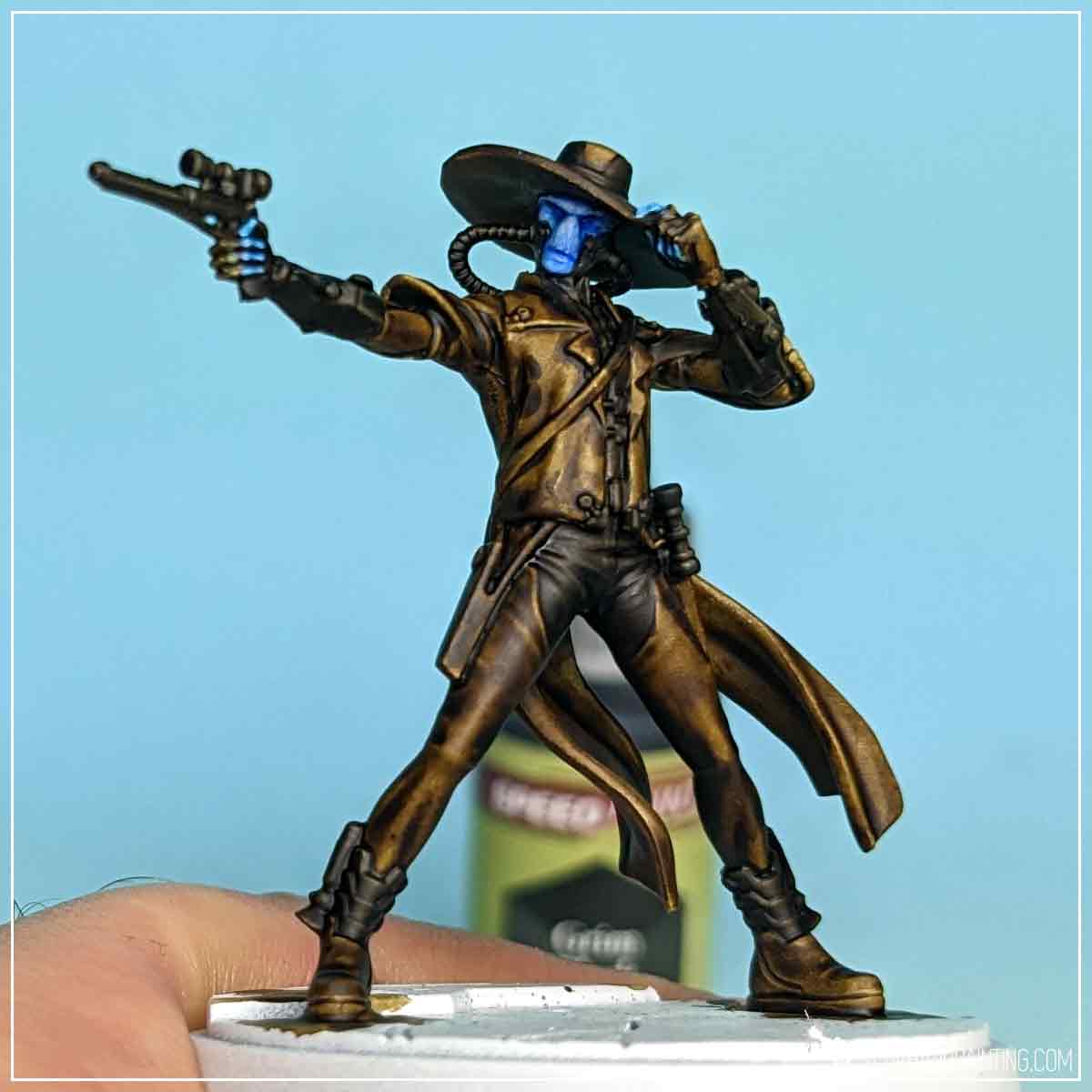
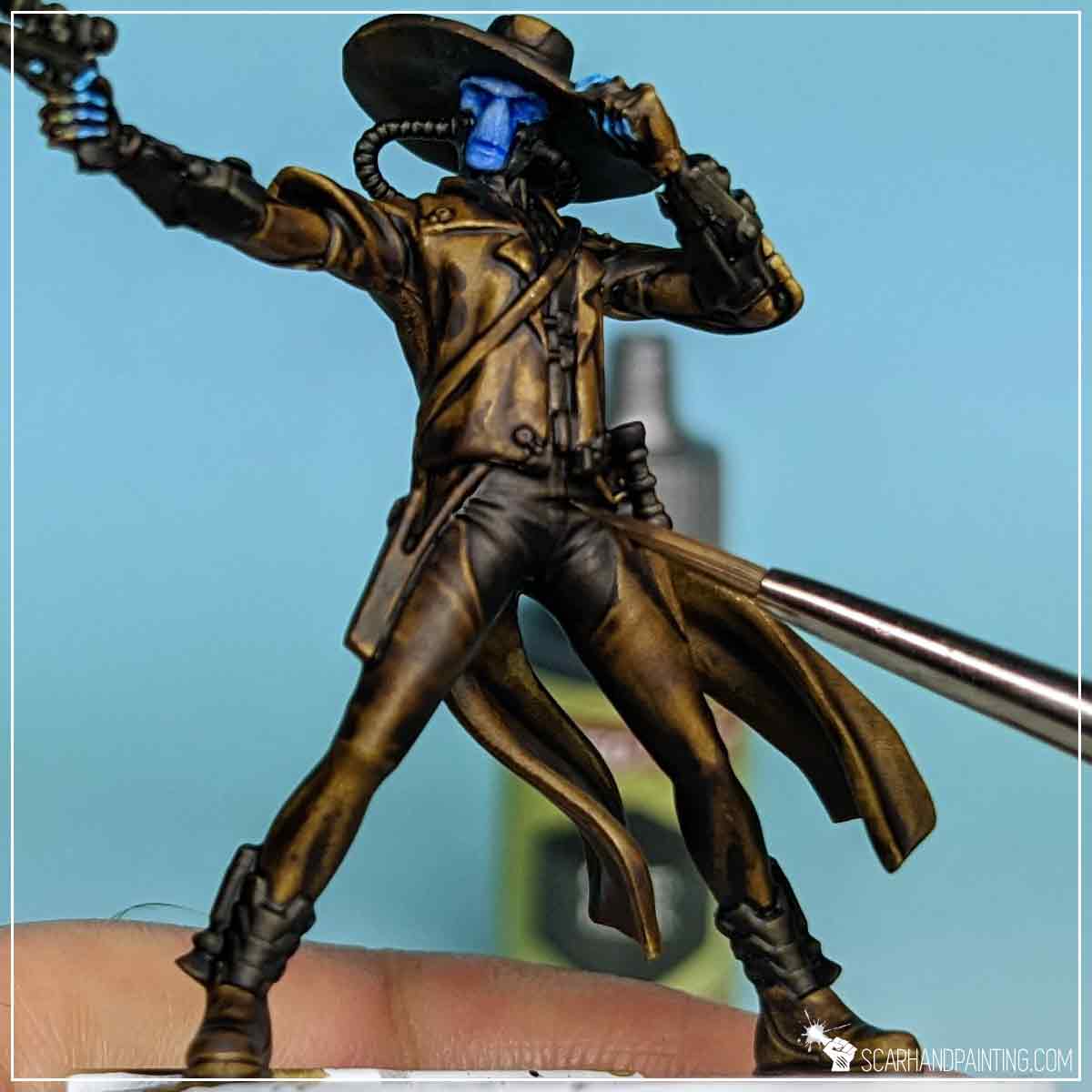
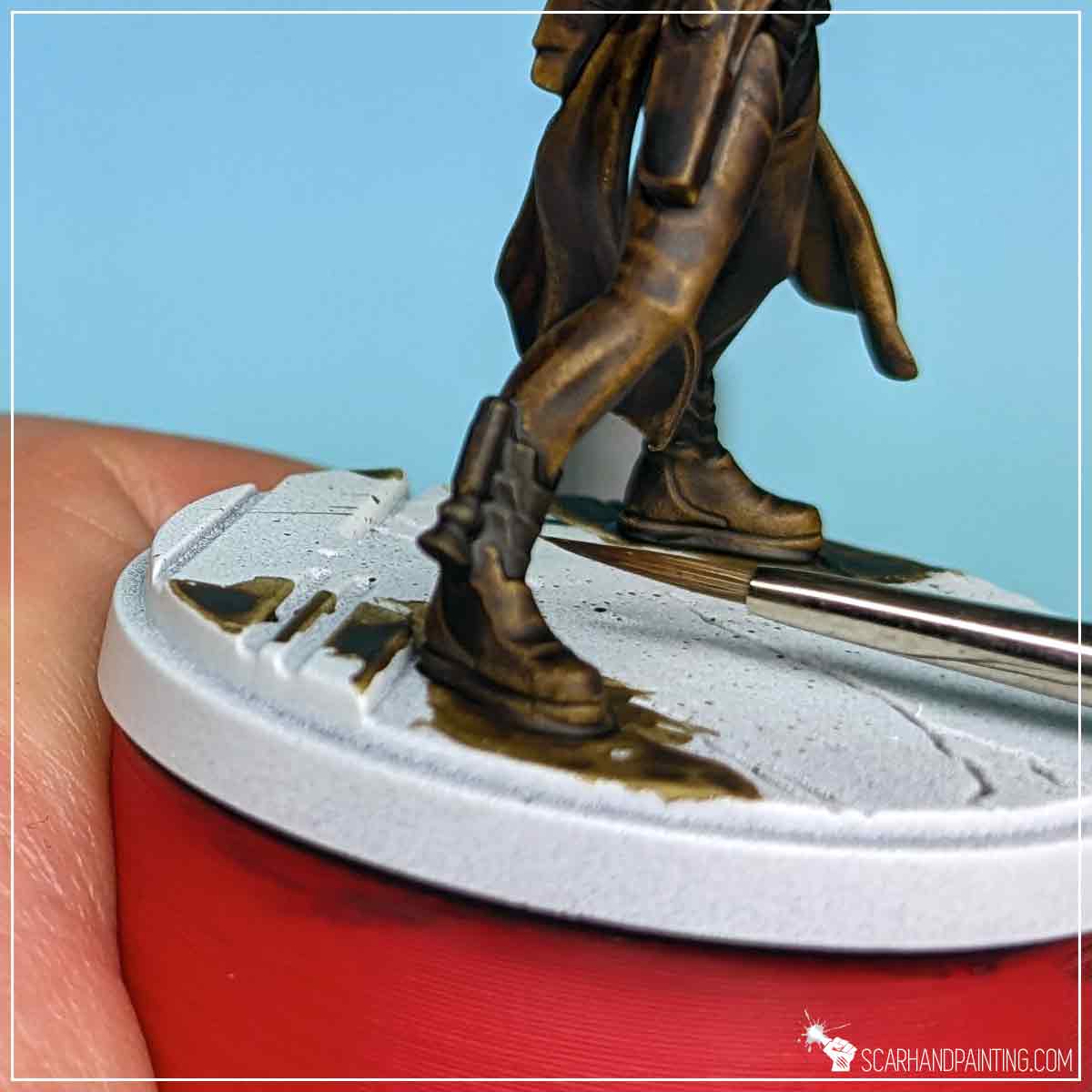
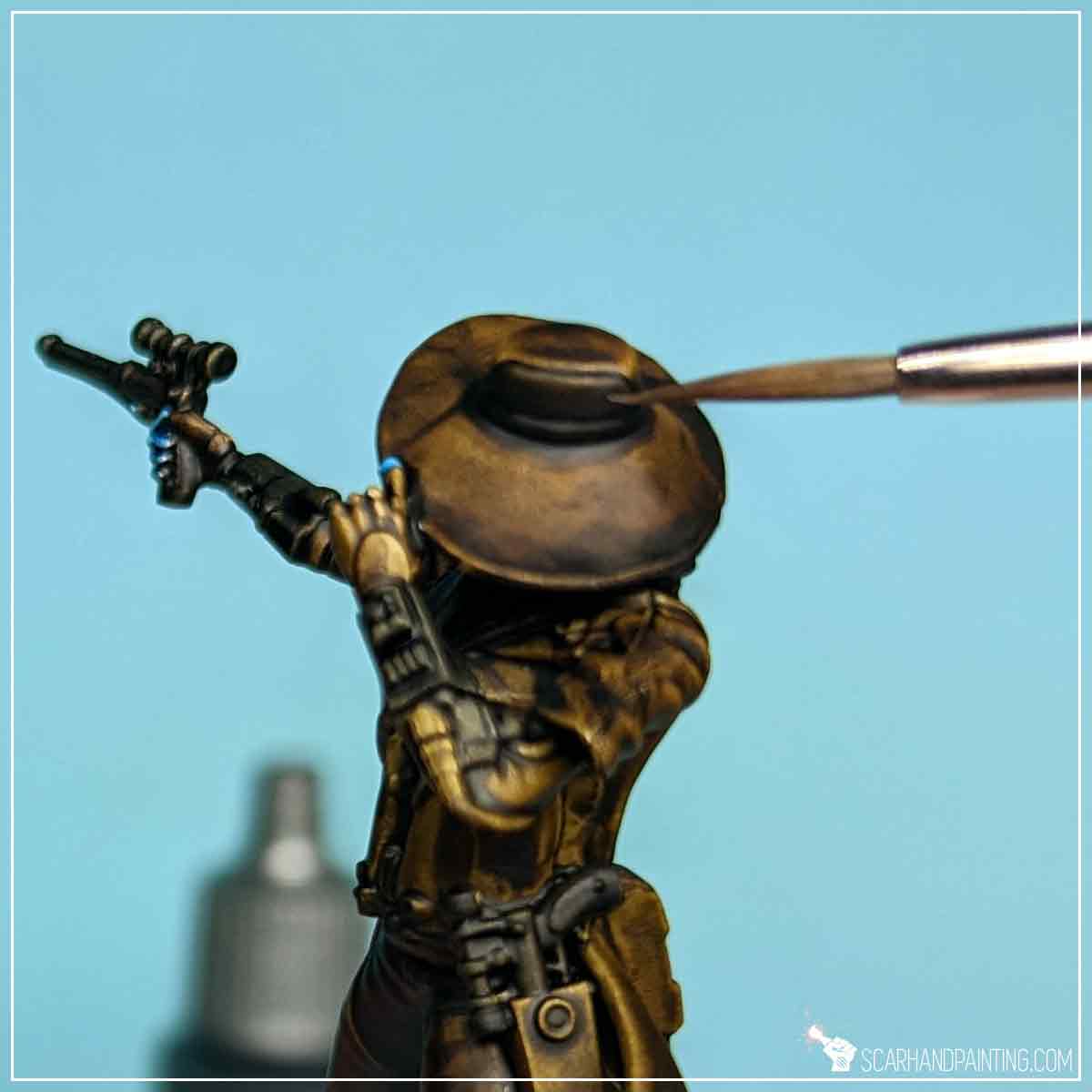
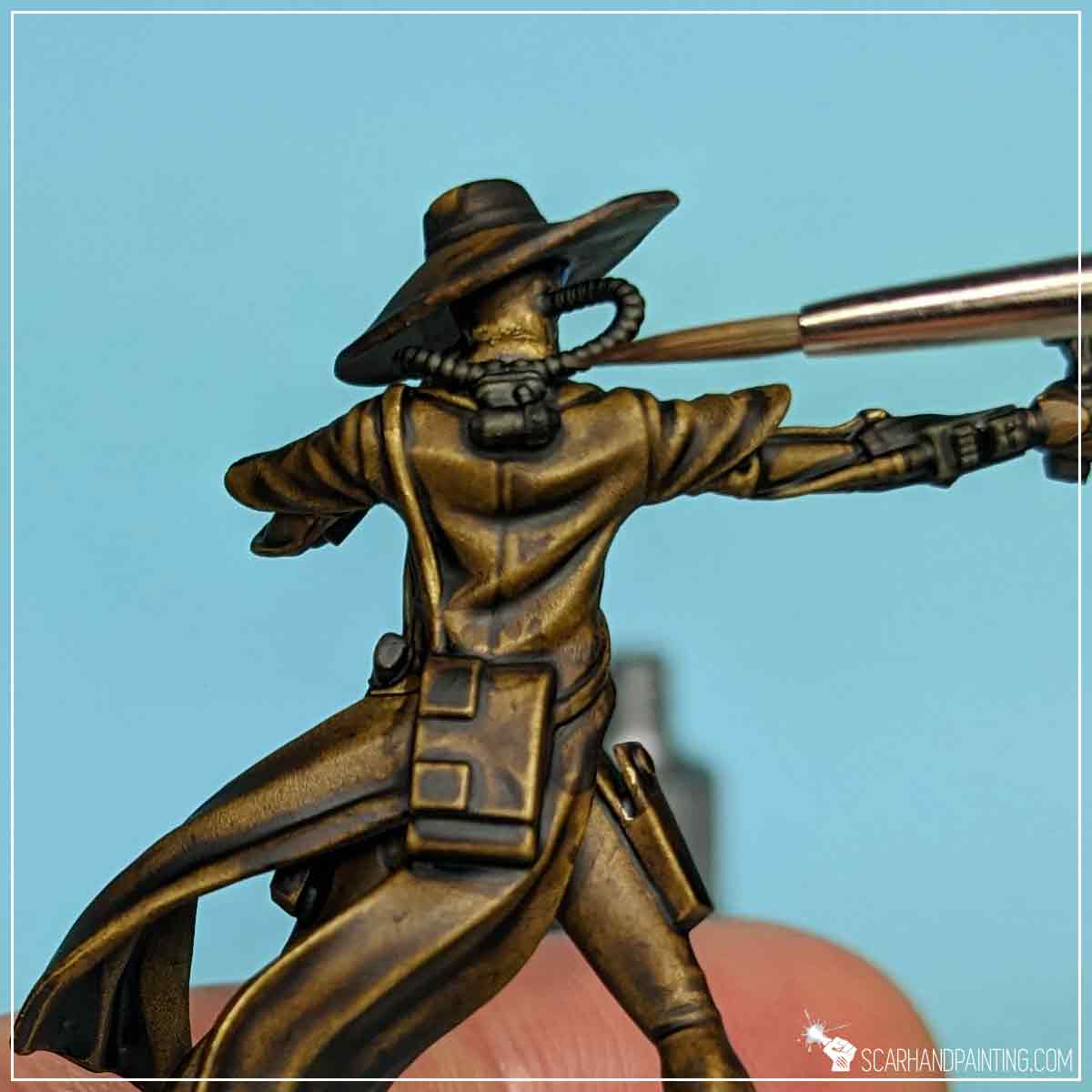
I then followed up with semi-highlights of flatbrushed Matt White. I tried to leave the excess of the paint on a dry palette and move the tip of the brush back and forth leaving blurred lines of paint on chosen surfaces. I deliberately skipped the pistols.
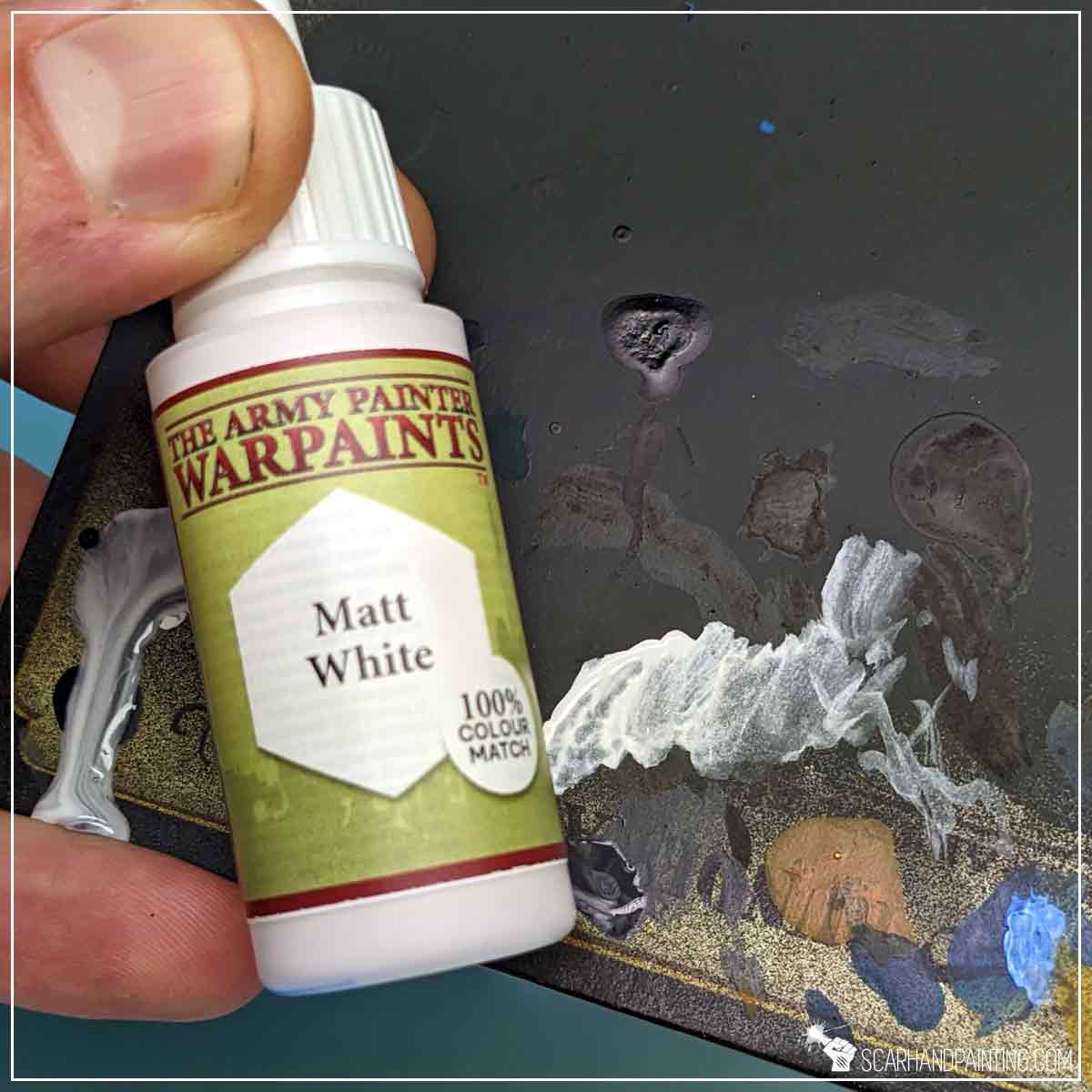
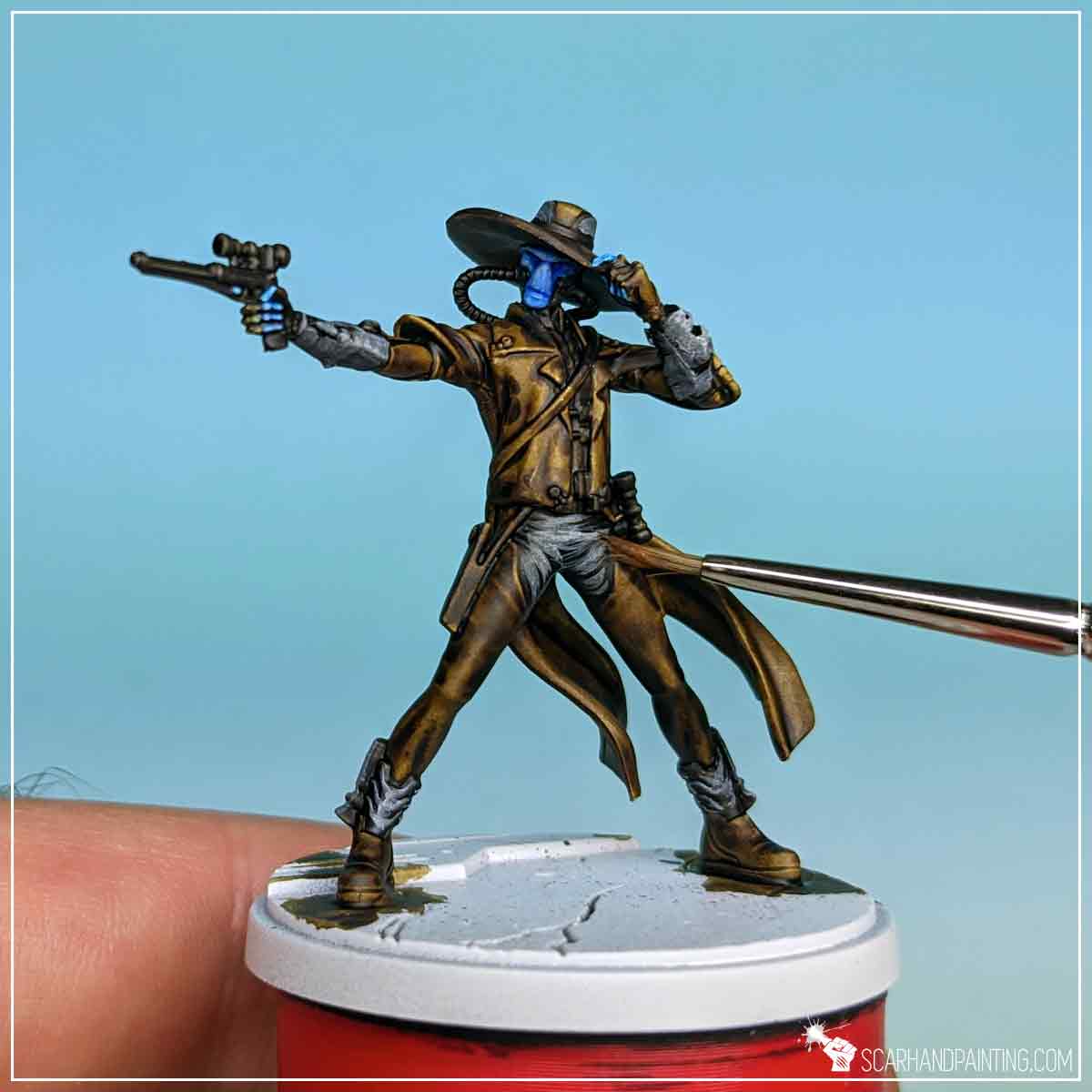
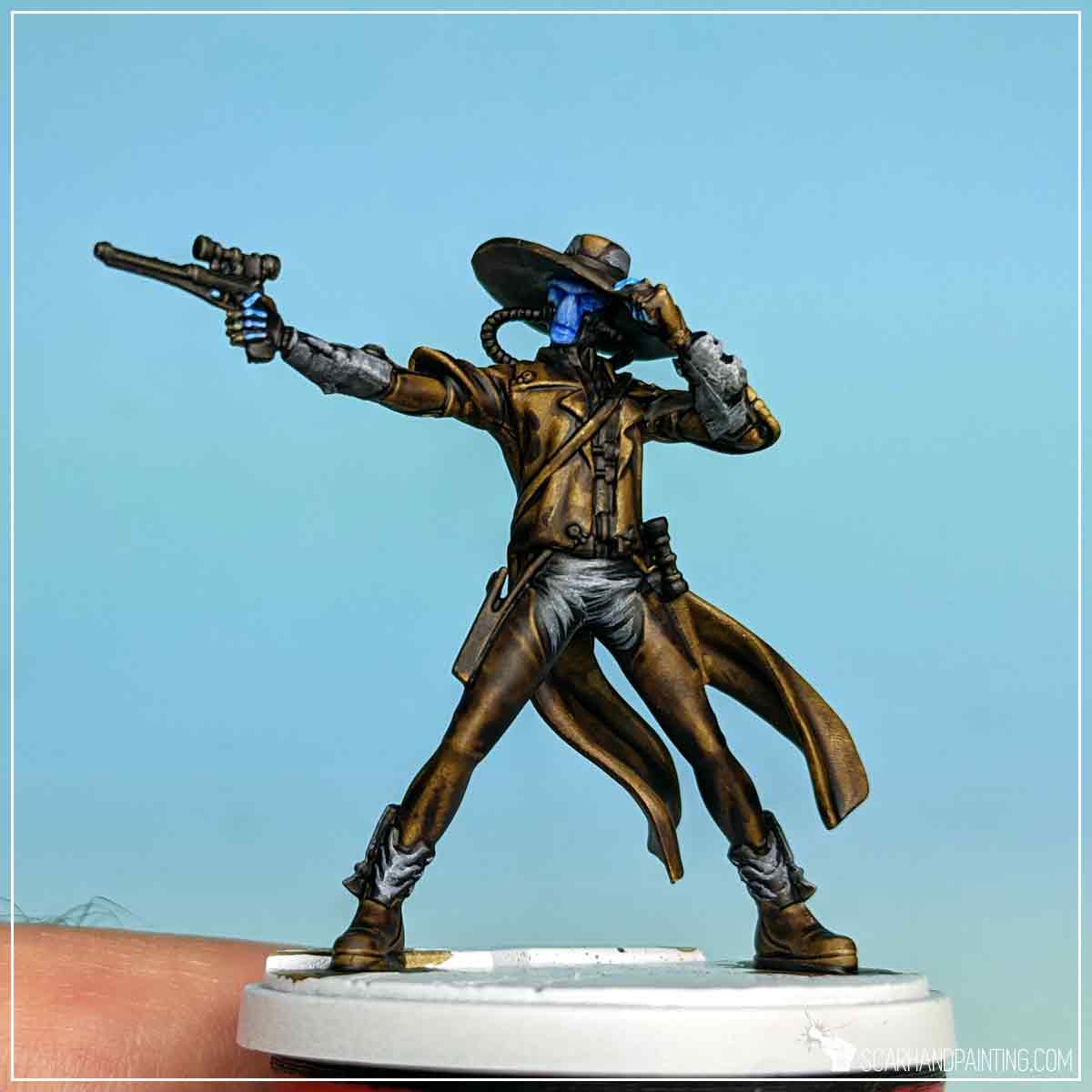
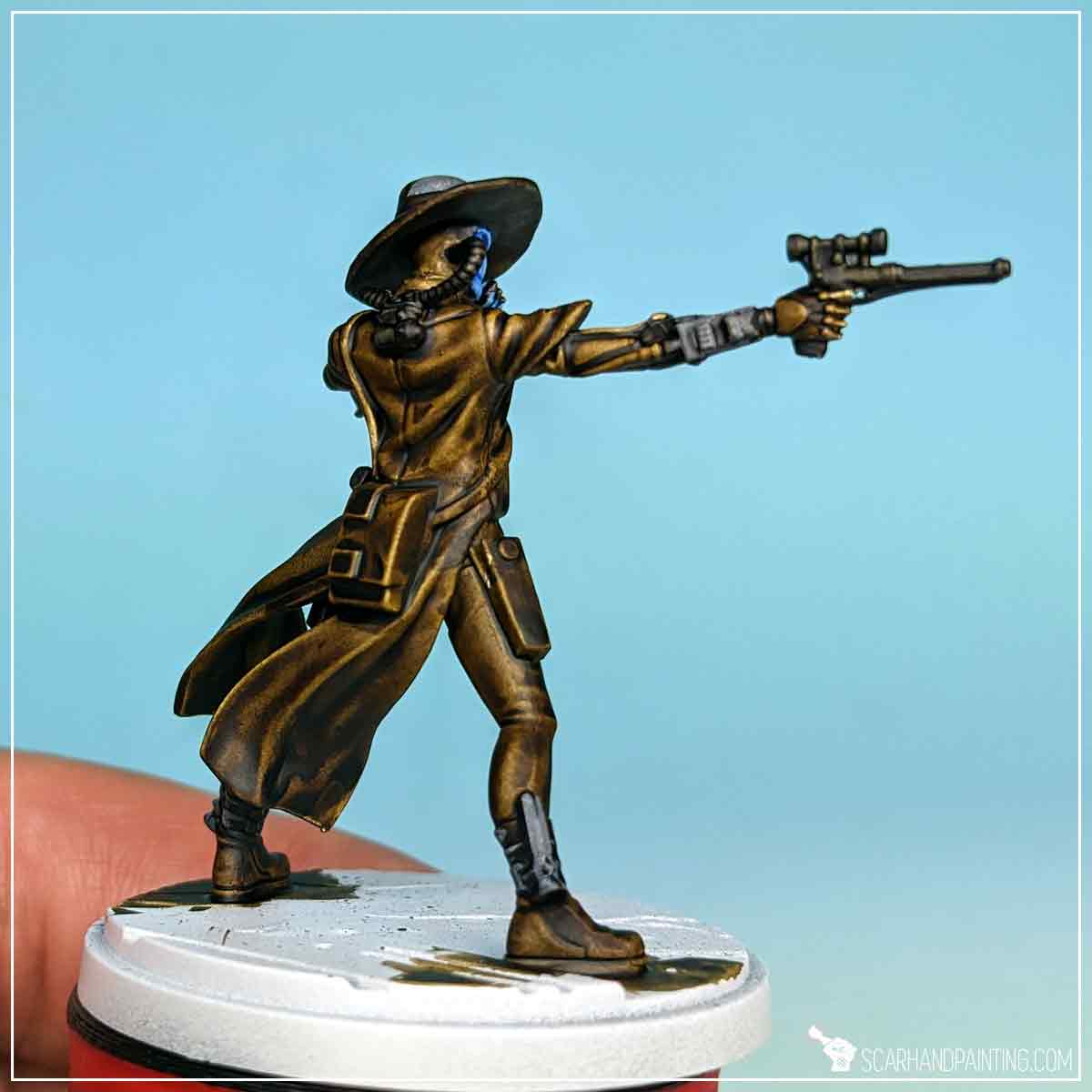
For eyes I used a Wargamer: Detail Brush, applying lines of Matt White, followed up by a touch of Poppy Red Speedpaint.
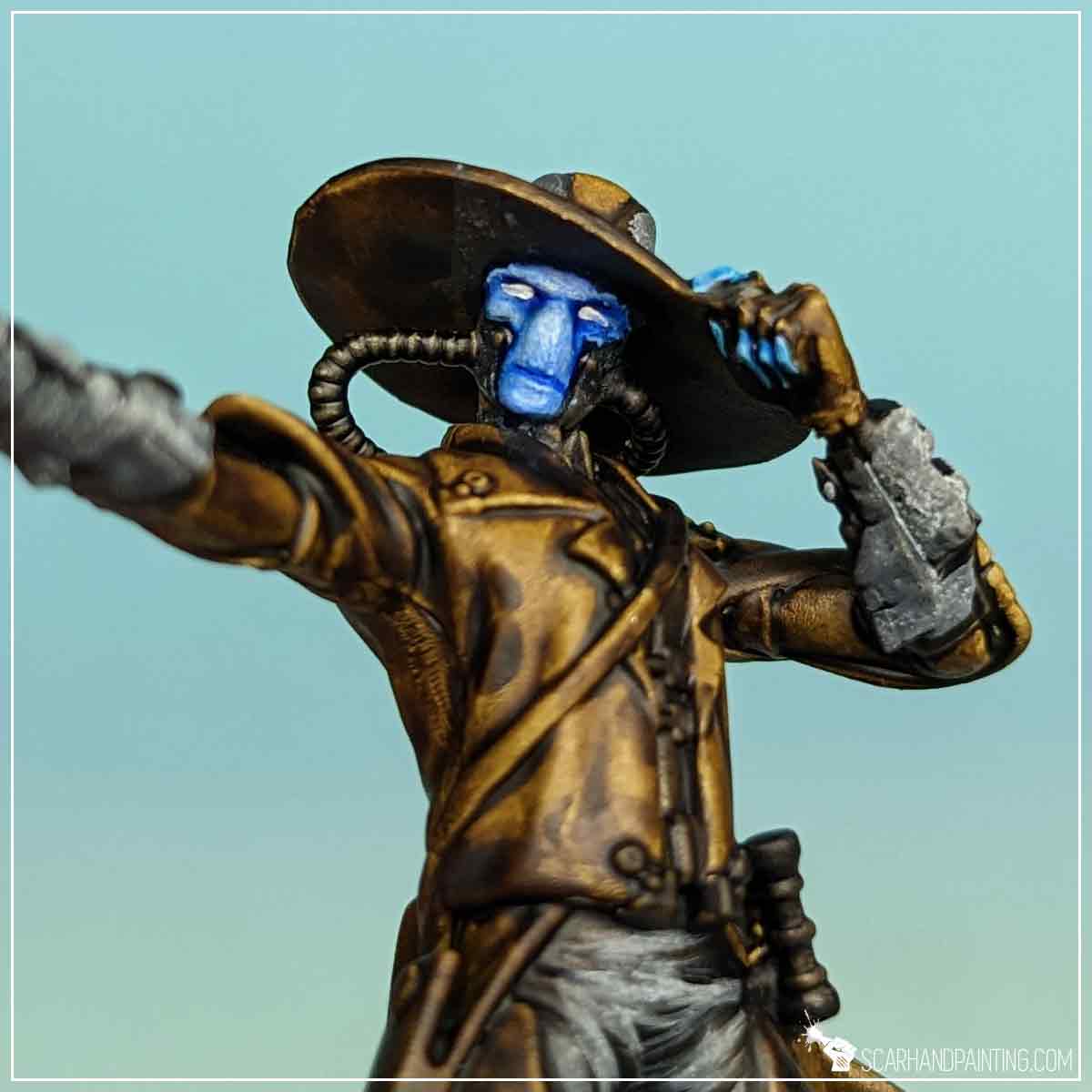
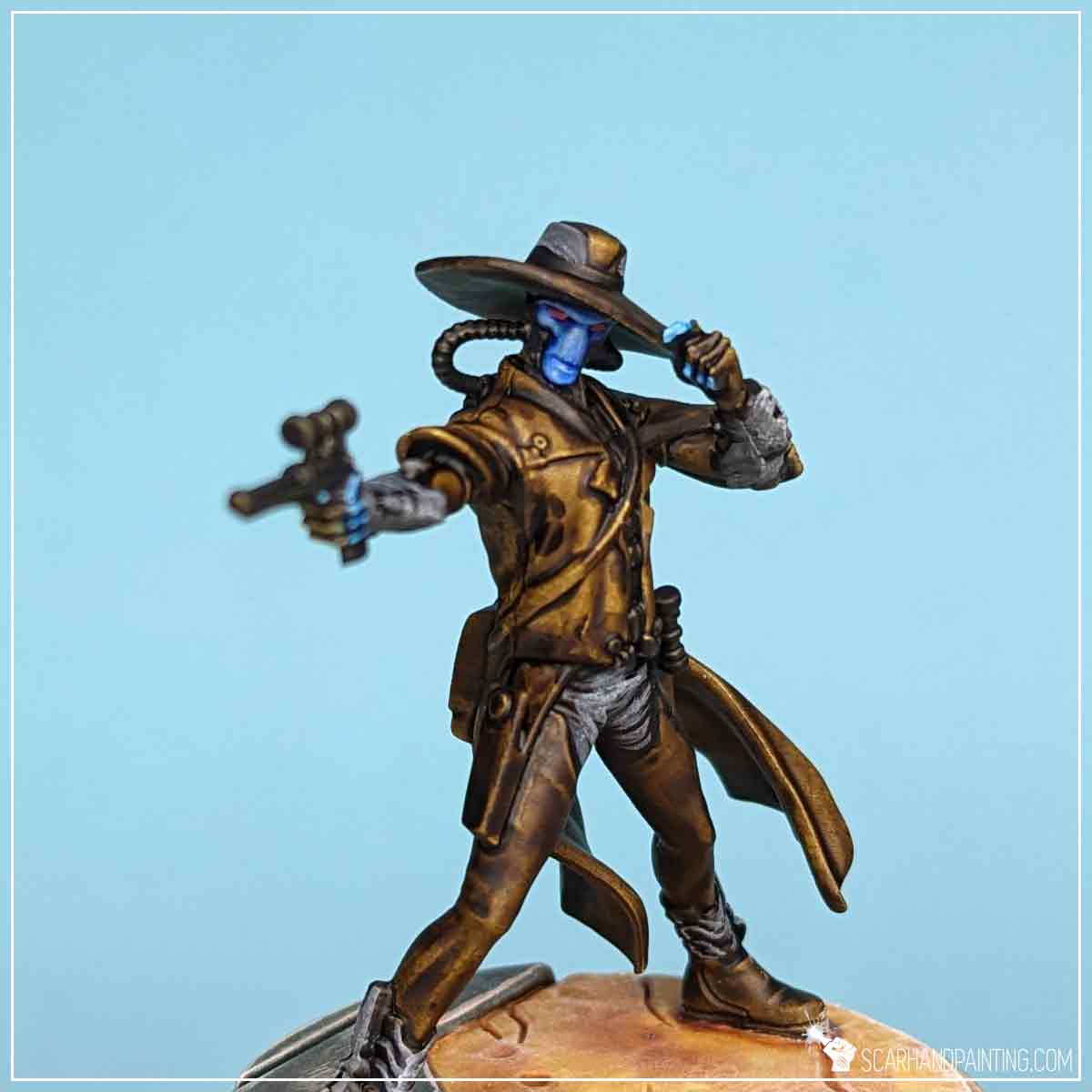
Finally I have painted the base following steps previously presented in the Tutorial: Painting Star Wars Shatterpoint Clone Troopers article, at which point the basic painting process was over and the miniature might have been considered done… but why not take it further?
With Wargamer: Character Brush I applied thin lines and dots of Mummy Robes paint on the edges and in selected spots of weapons, breathing pipes, pants, armor and dark had elements. Dots of bright colors create focus points that result in more contrast within a particular color range.
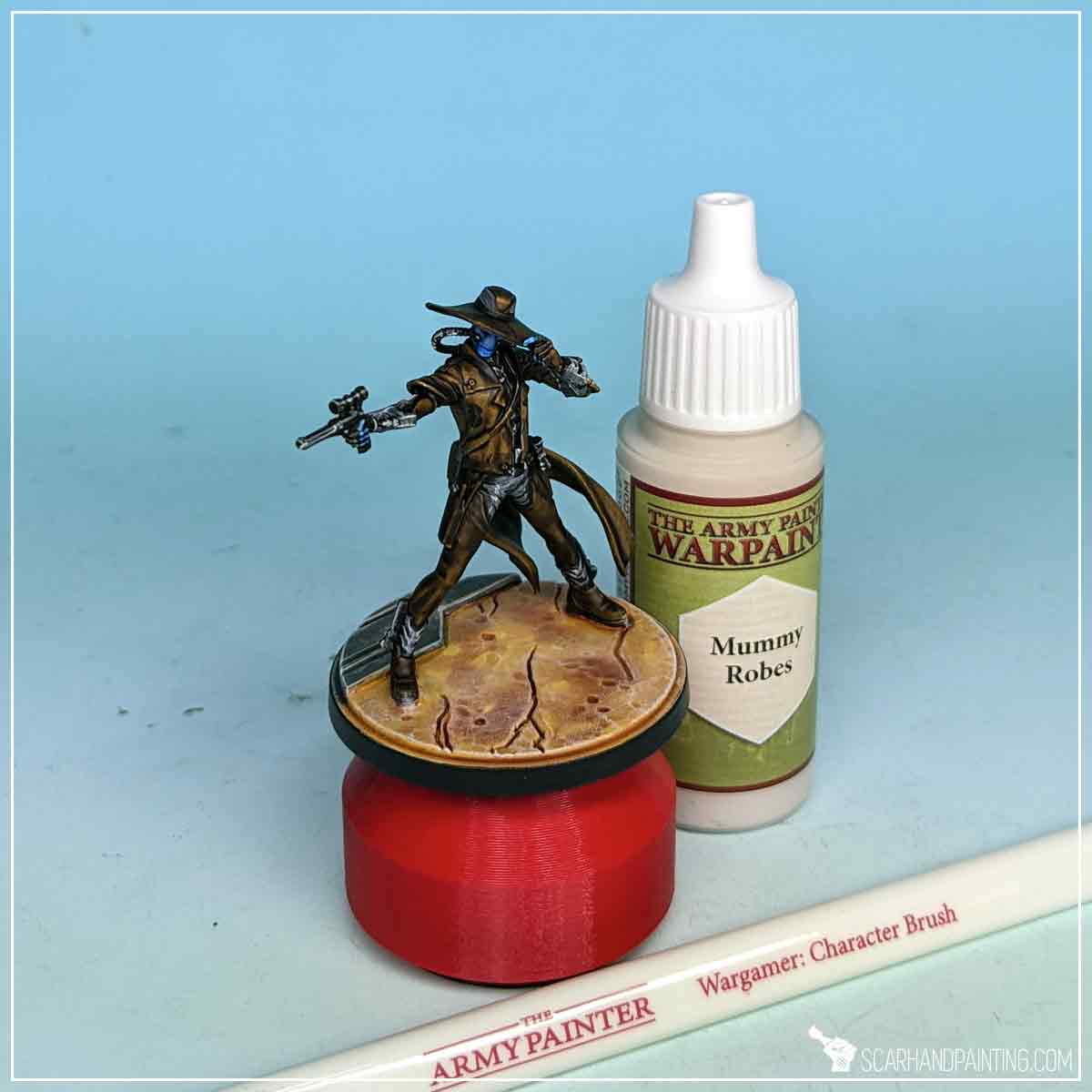
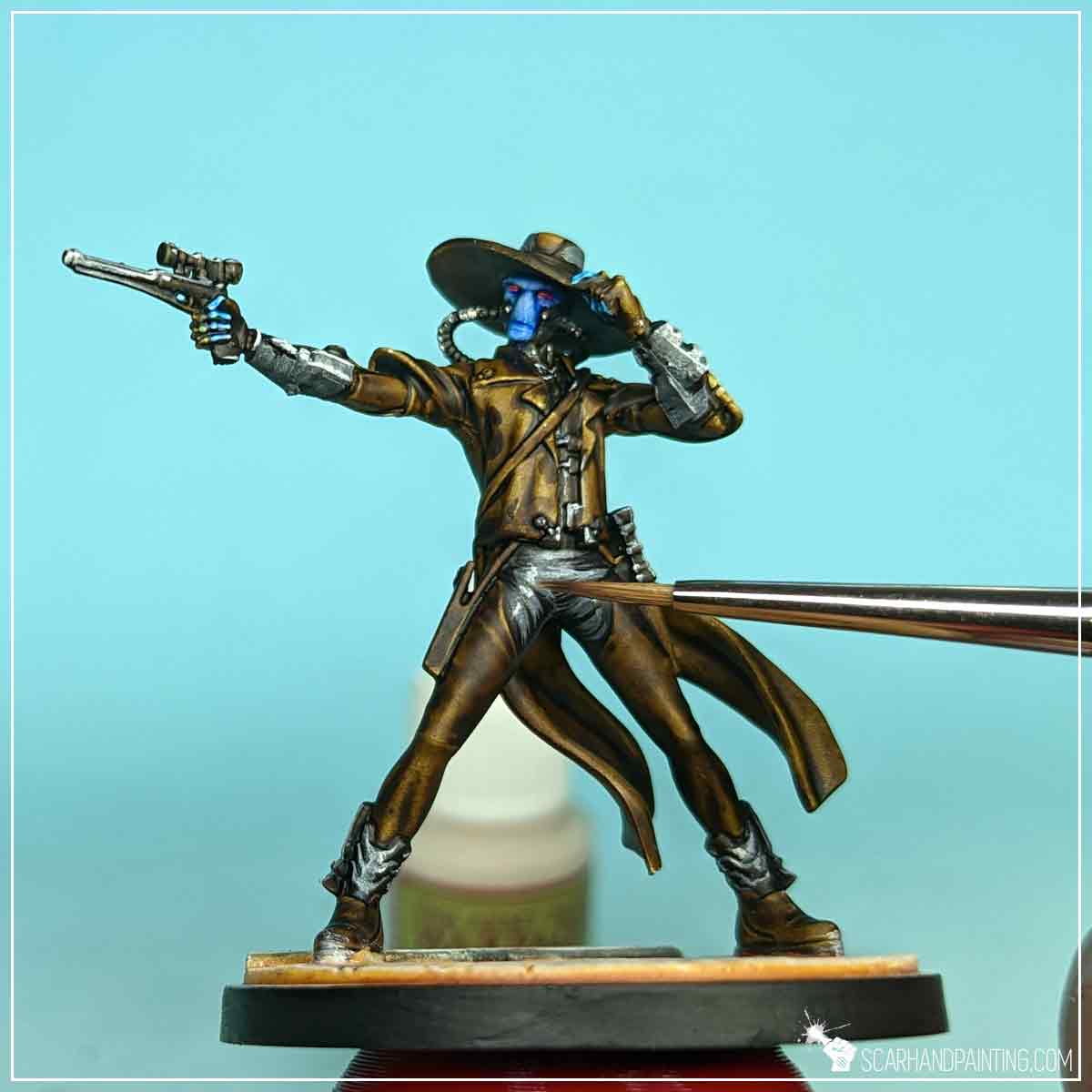
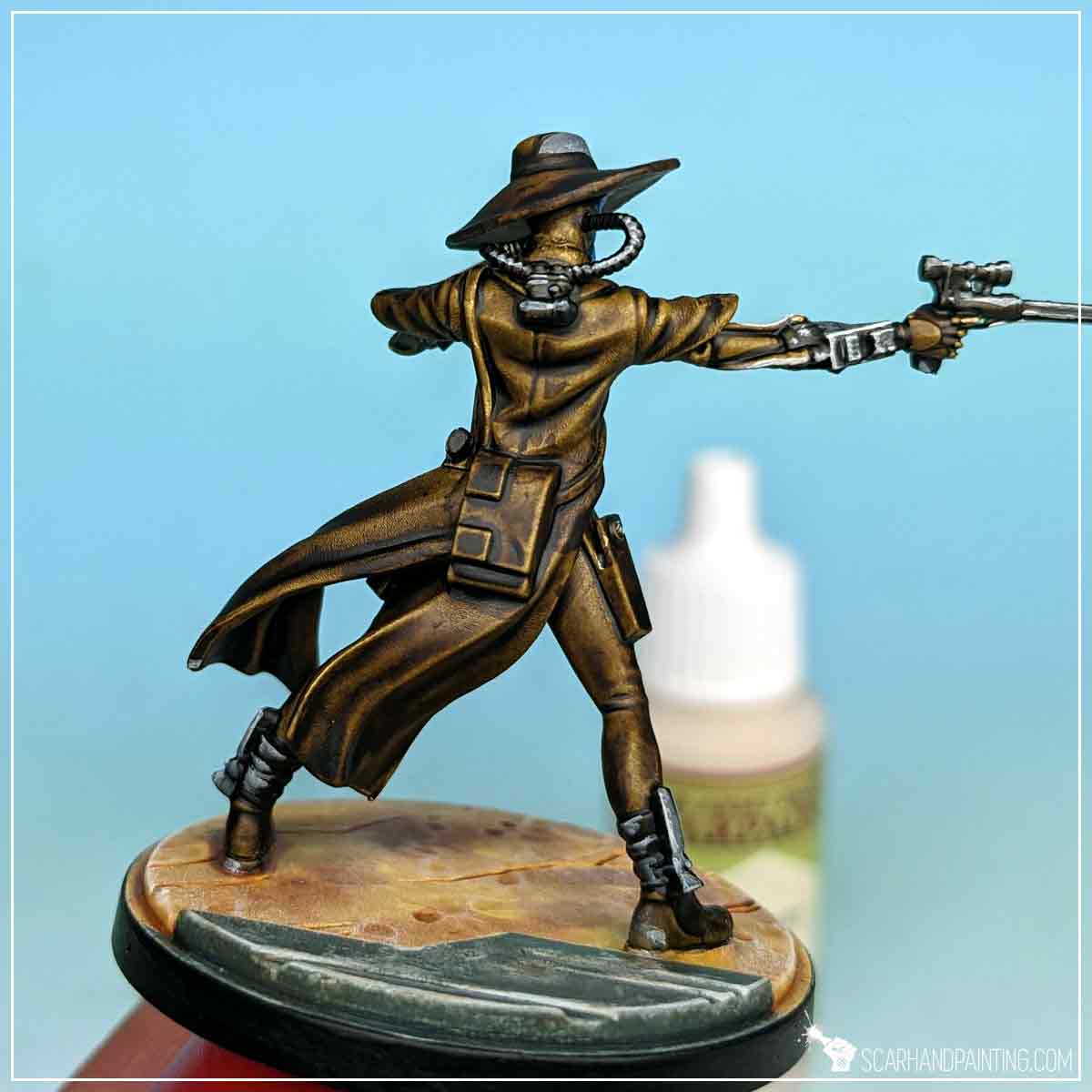
I then did the same for Browns, switching Mummy Robes for Elven Flesh which has a warmer feel to it, thus is more compatible with brow. For large, flat areas I applied small smudges and scratches of Elven Flesh with a tip of the brush, creating an interesting texture.
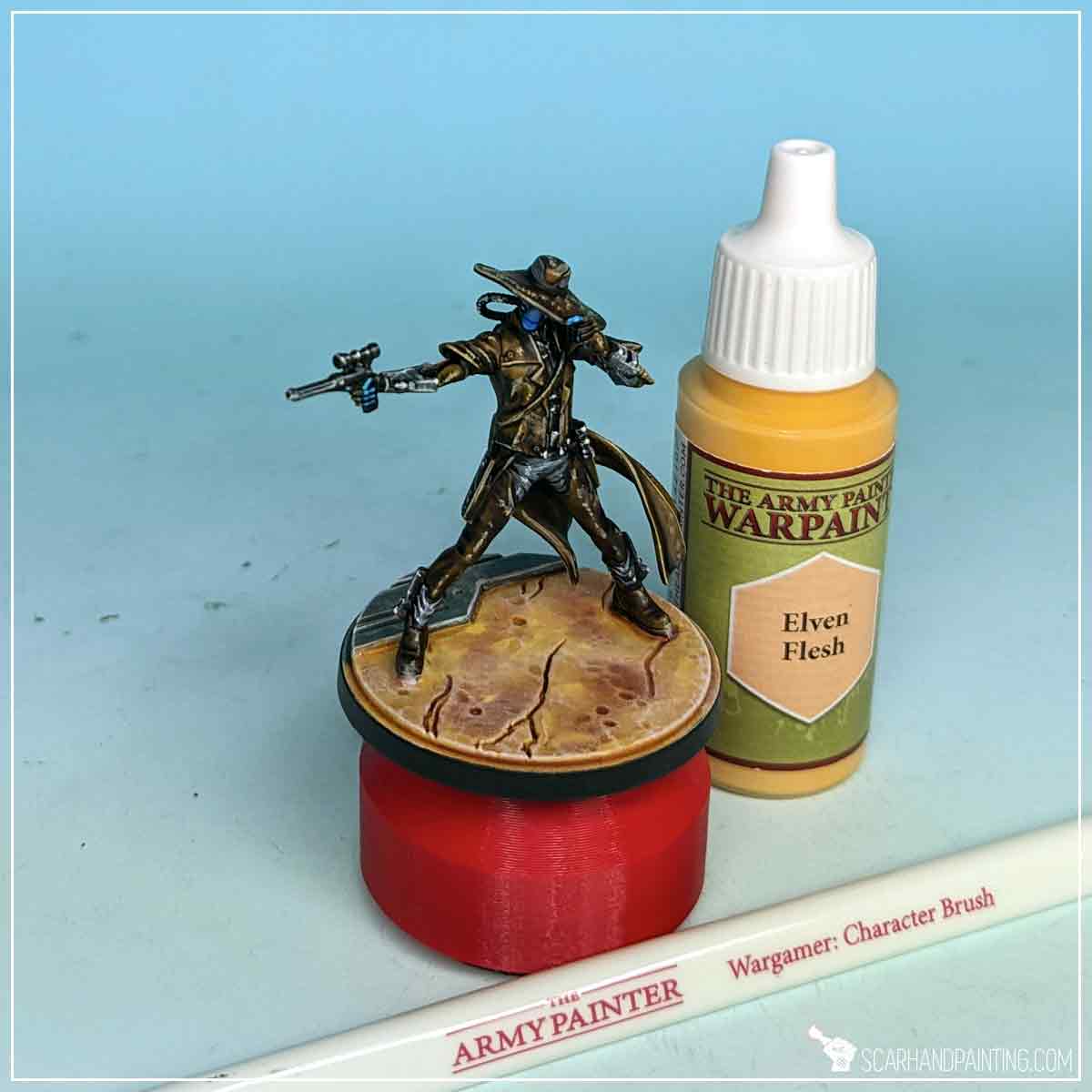
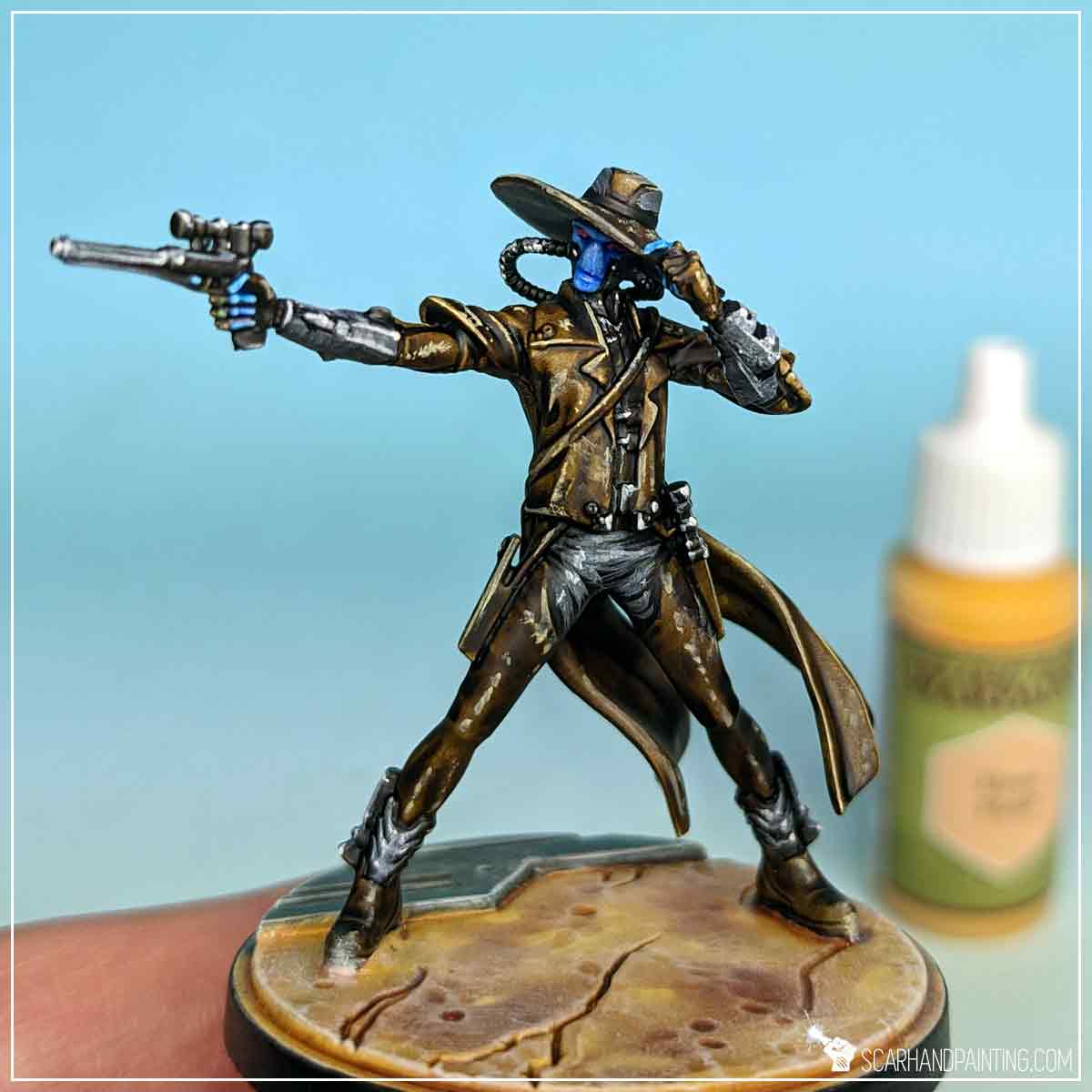
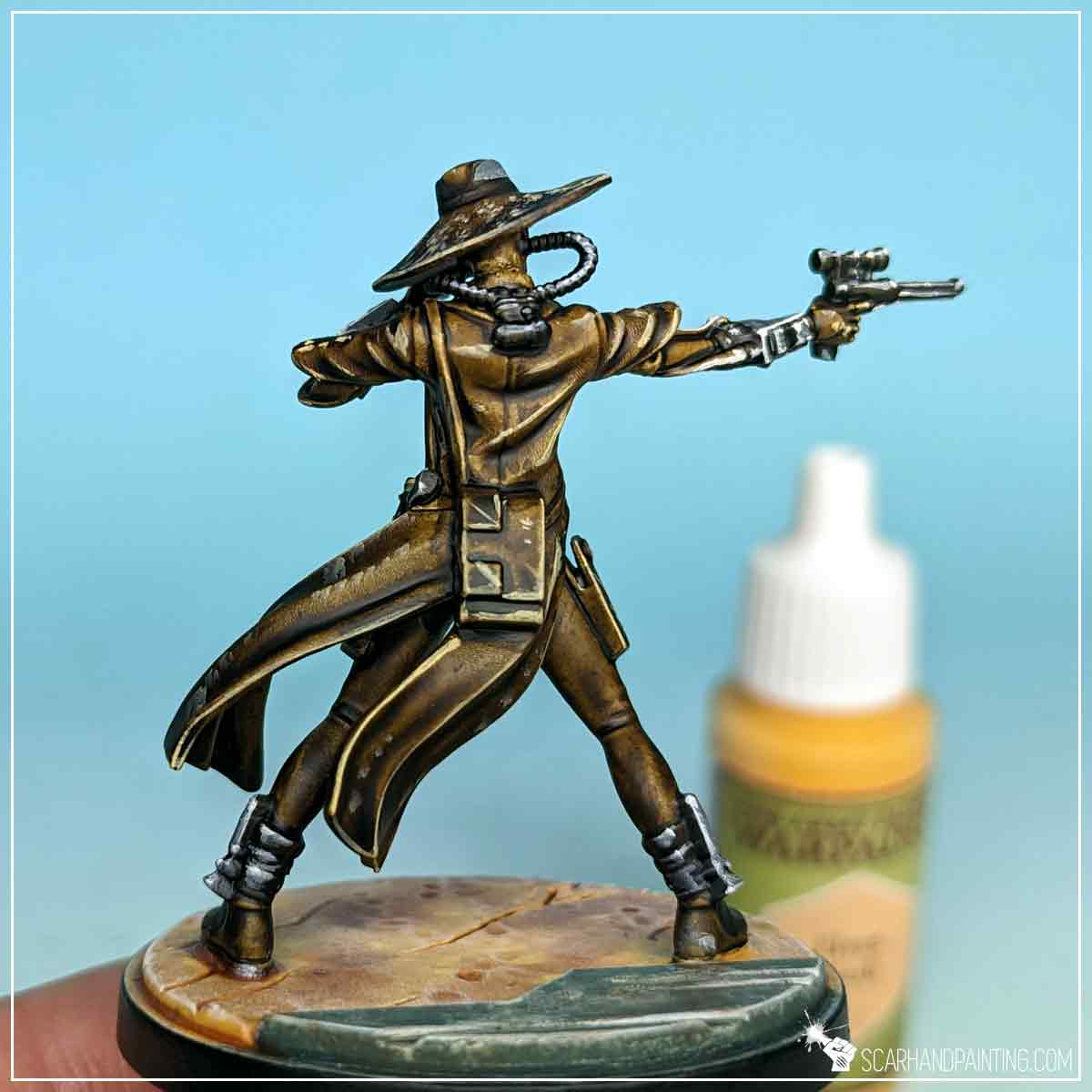
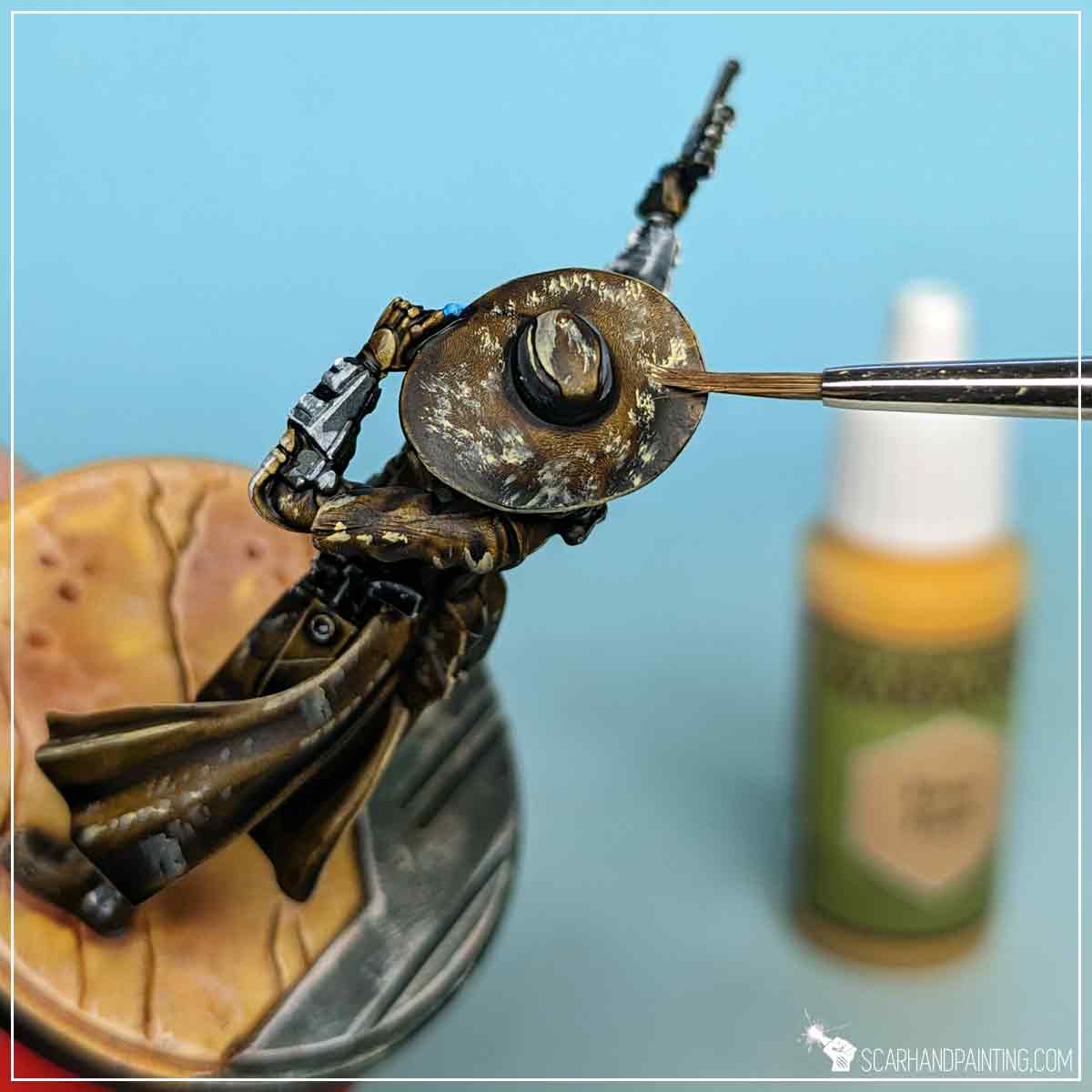
Next I applied a ‘filter’ of Flesh Wash all over browns, that toned down (and ‘browned down’) the excessive highlights.
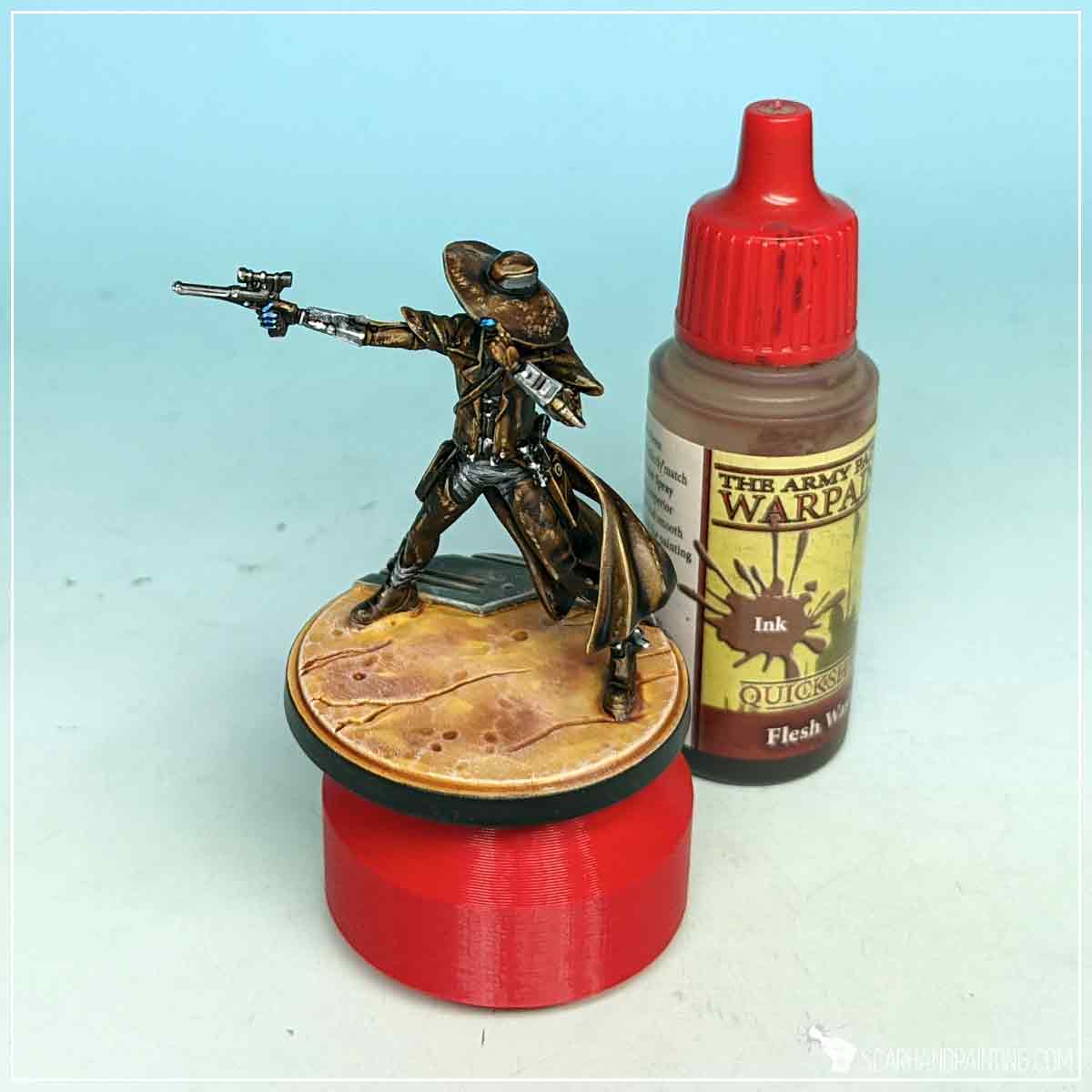
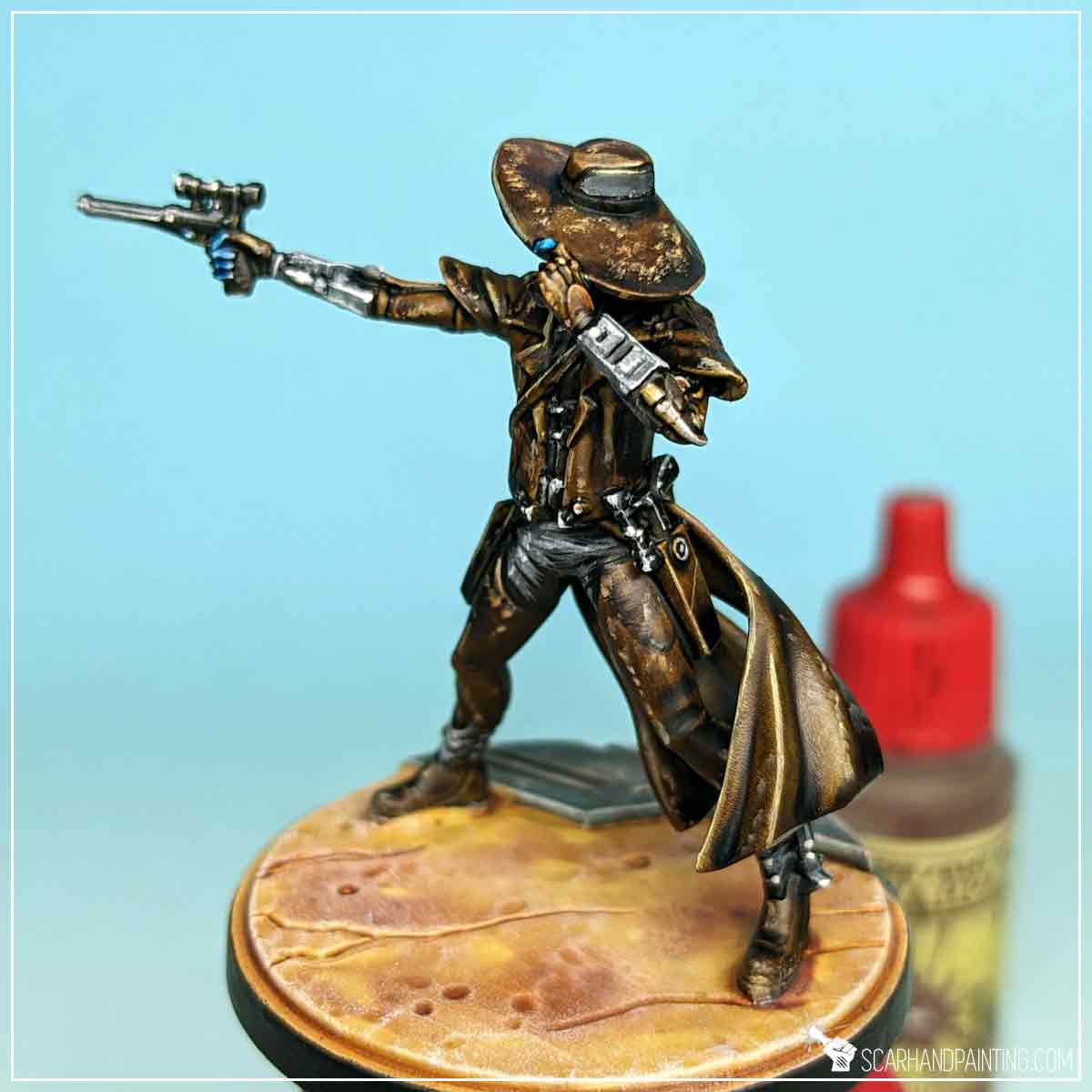
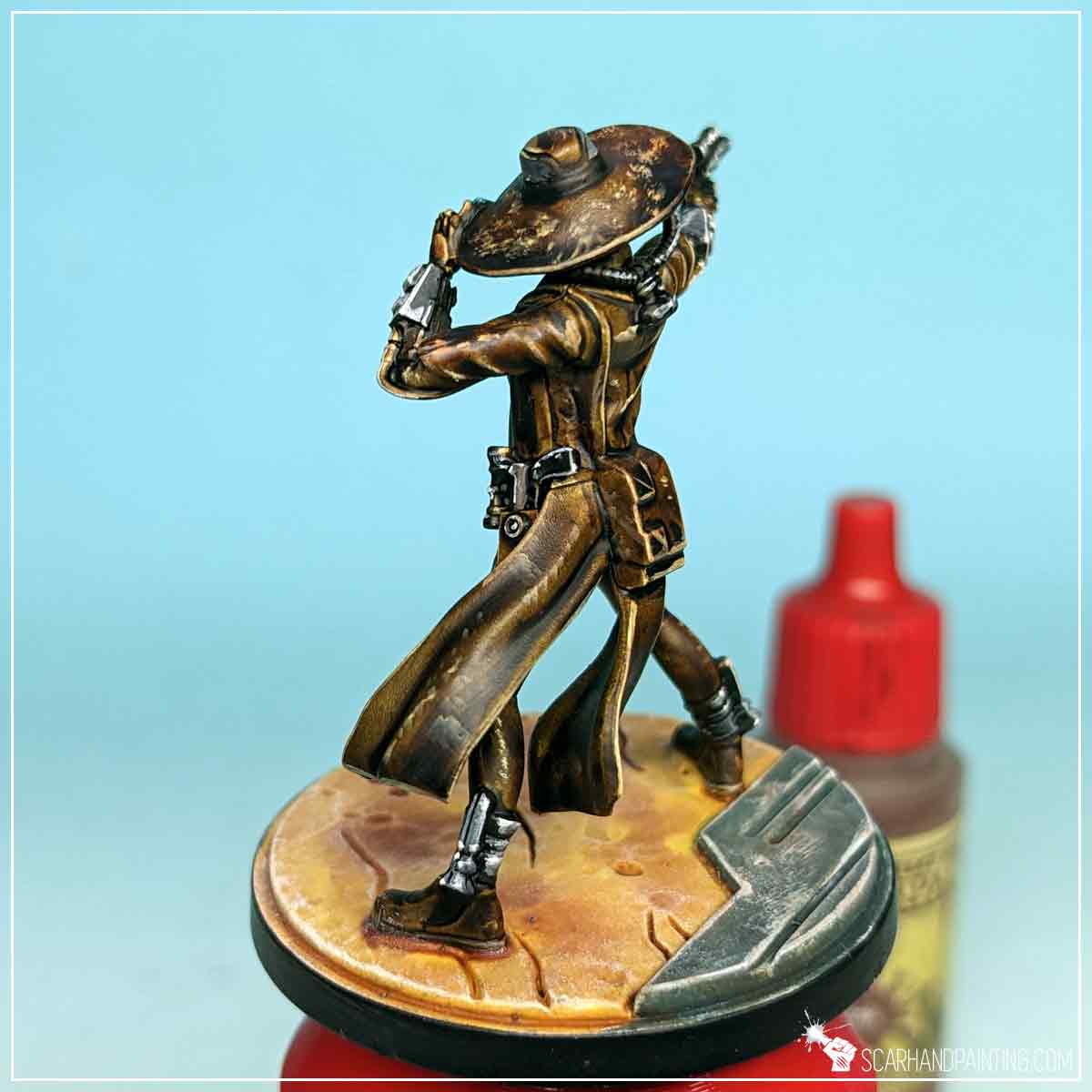
Following the box art I’ve decided to diversify browns a bit, by first applying lines and scratches of Mummy Robes on the edges alongside the satchel, gun holsters and the top of the boots. I used the opportunity to apply a few small dots of Mummy Robes to the face of the miniature as well, adding a nice highlight.
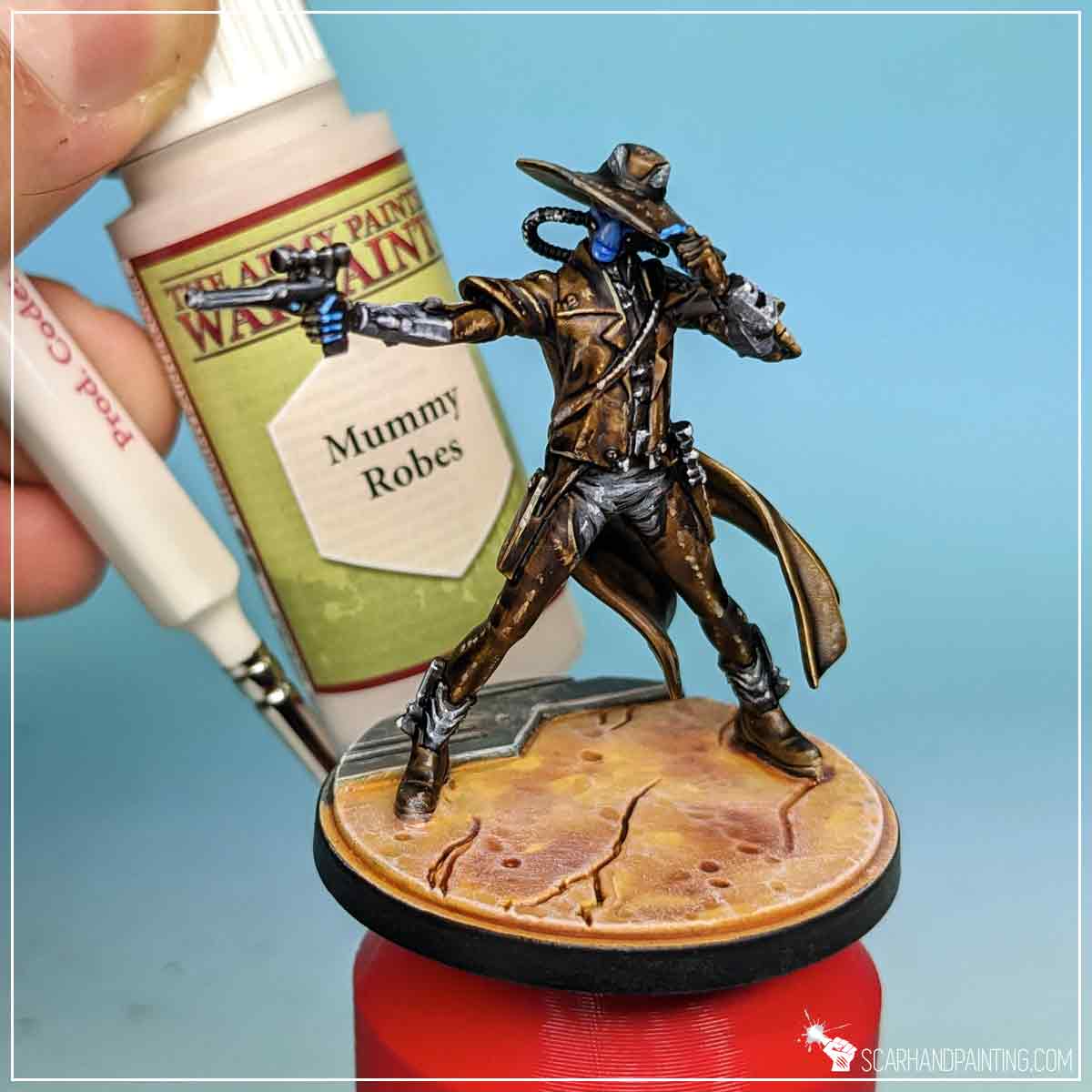
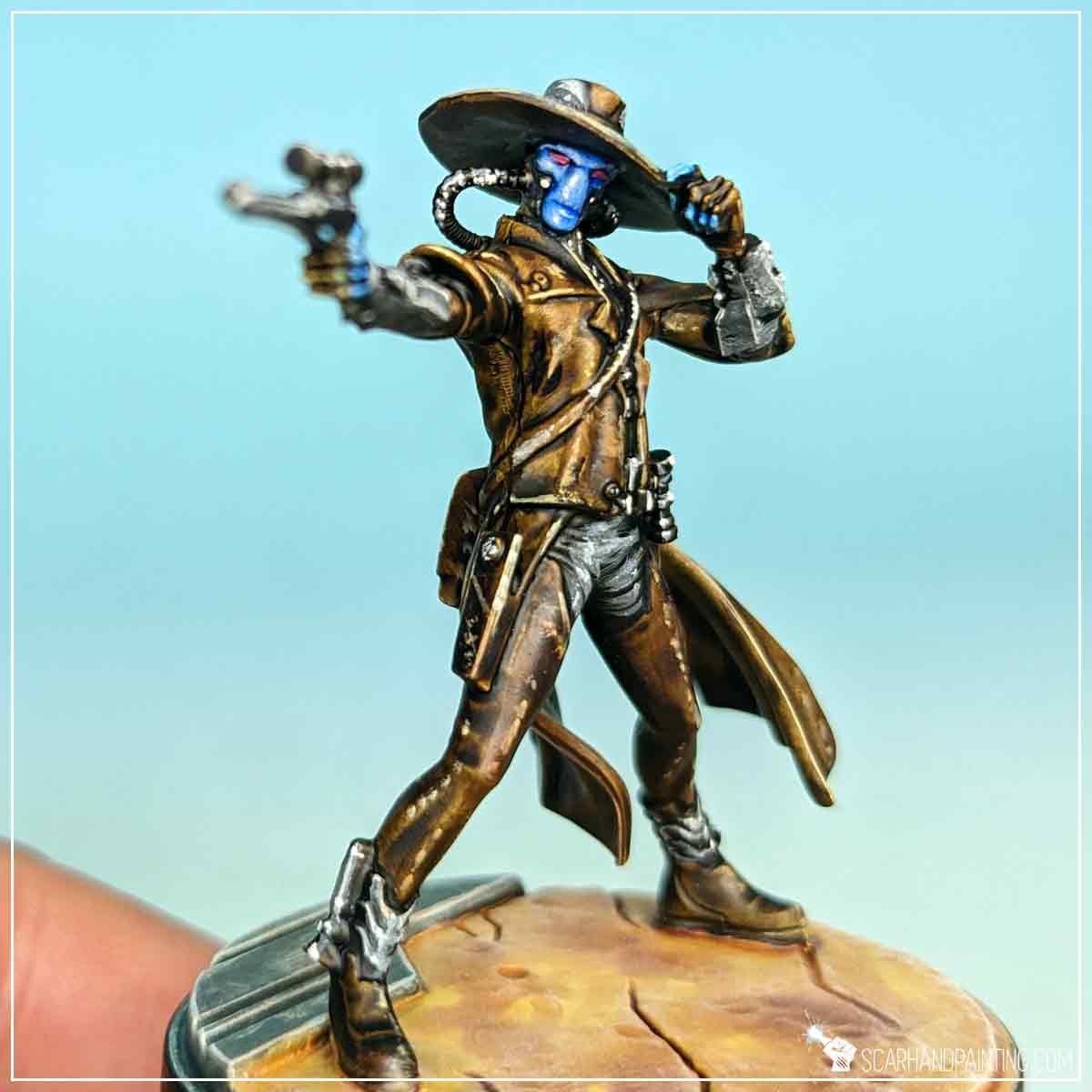
I then applied a ‘filter’ of slightly thinned down Rusk Red Speedpaint to the satchel, boots and holsters, adding a nice red’ish feel to them.
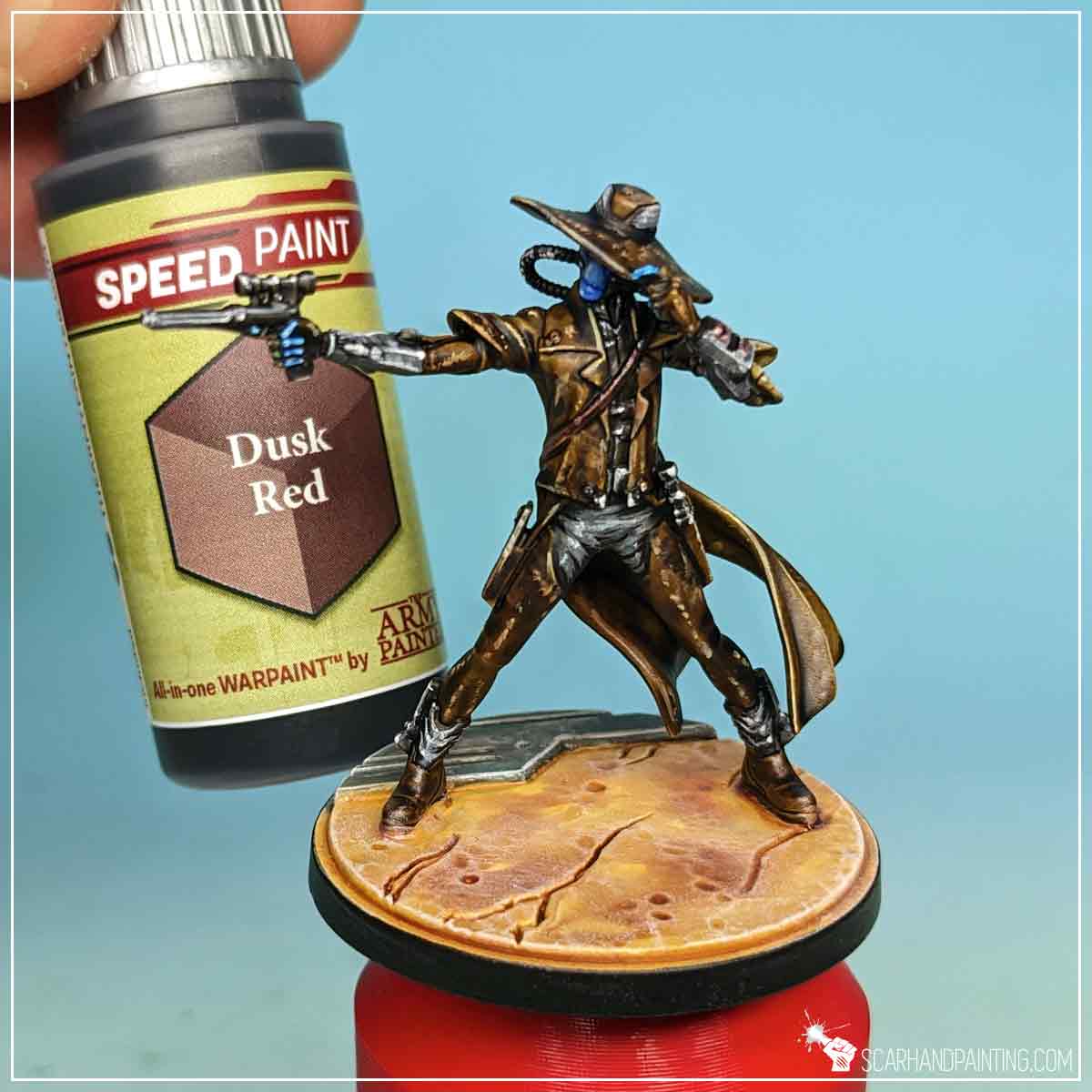
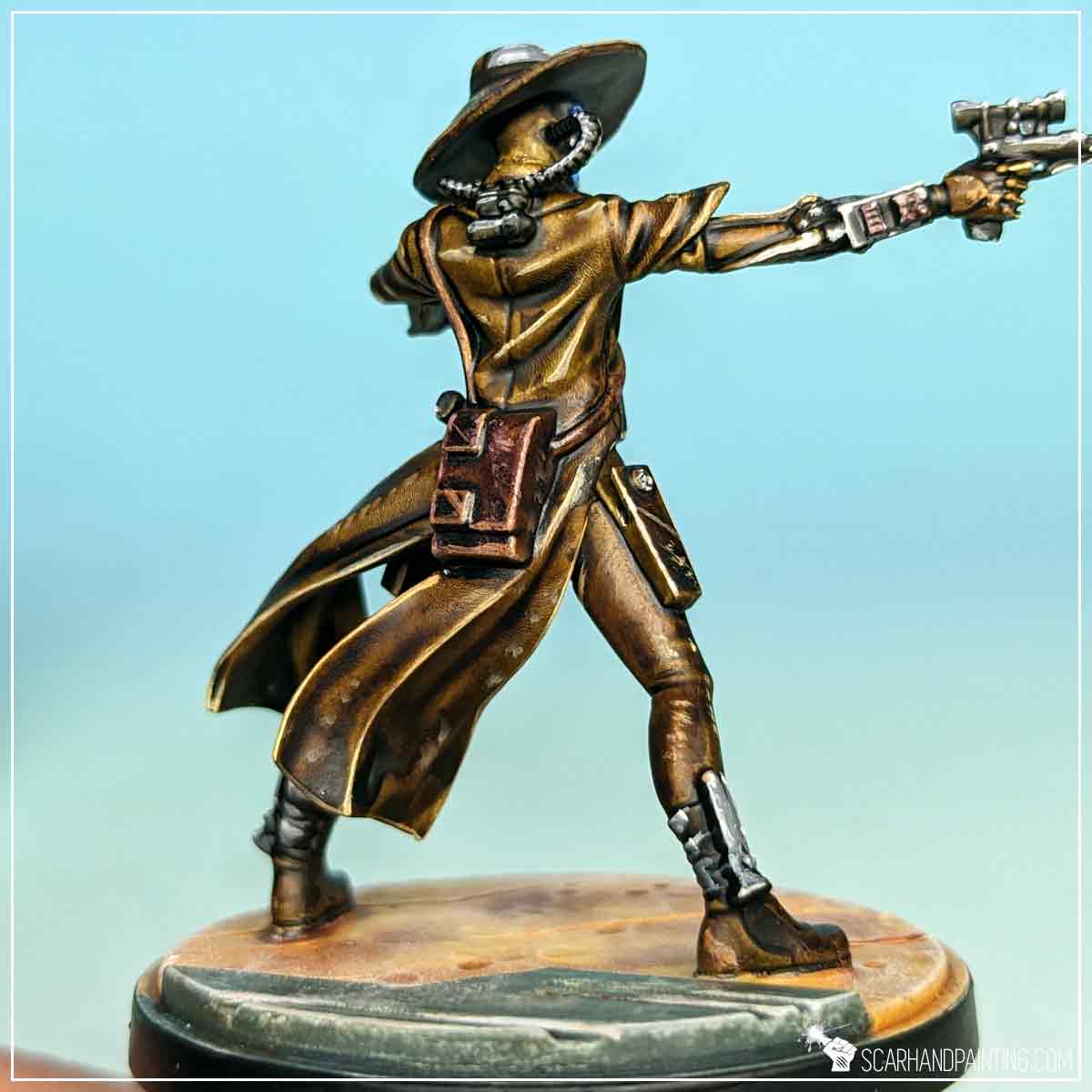
Finally I Varnished the miniature the same way as presented in the Tutorial: Painting Star Wars Shatterpoint Clone Troopers article.
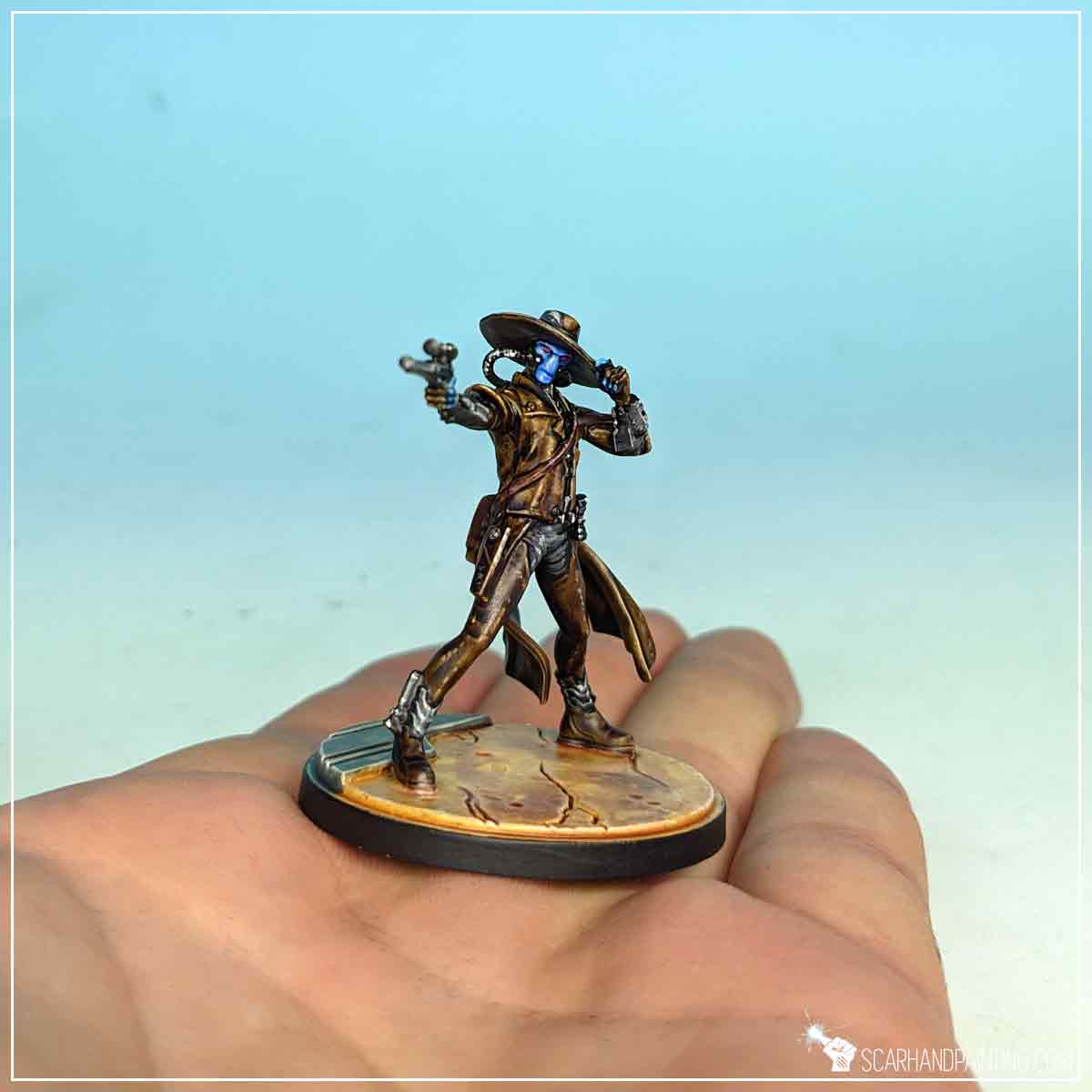
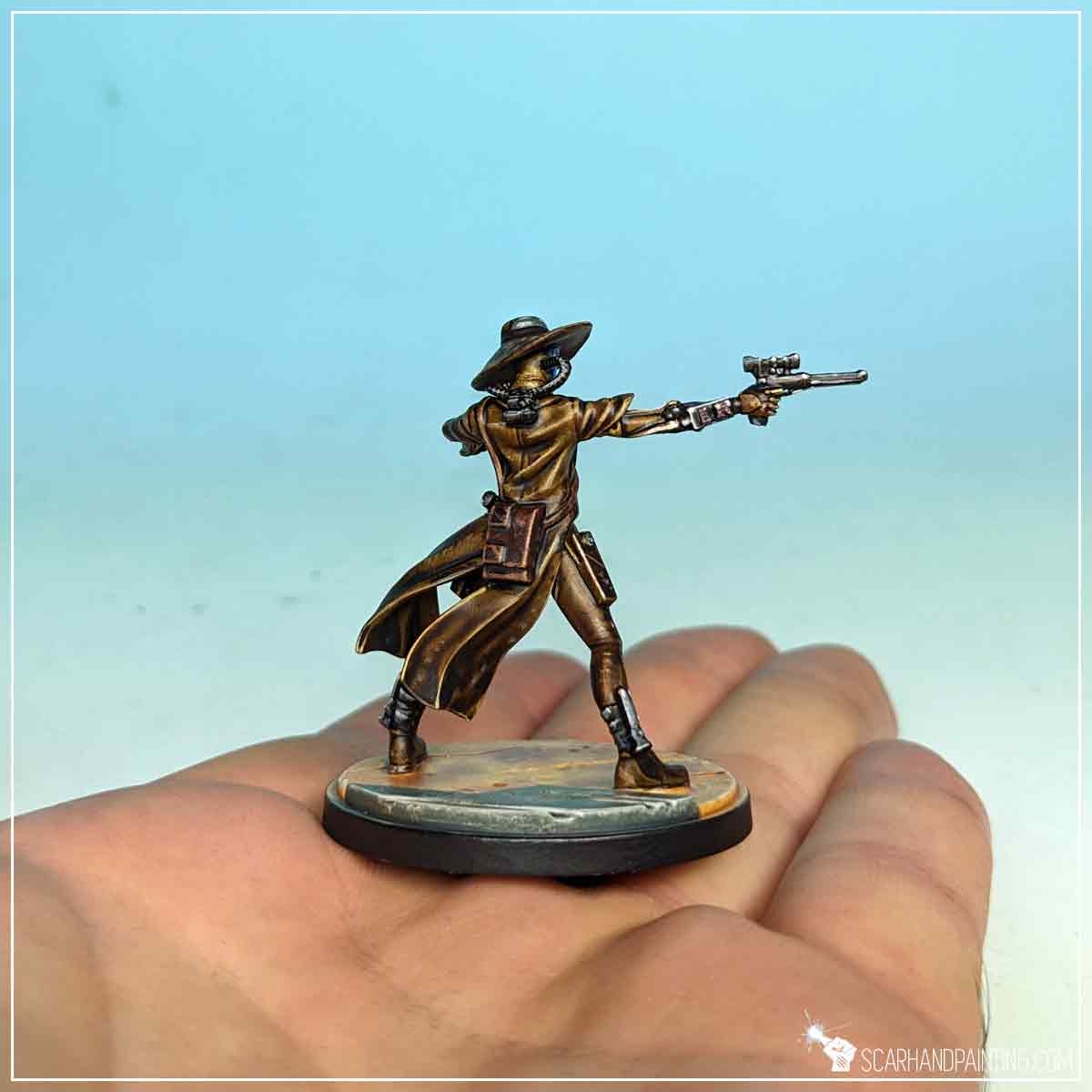
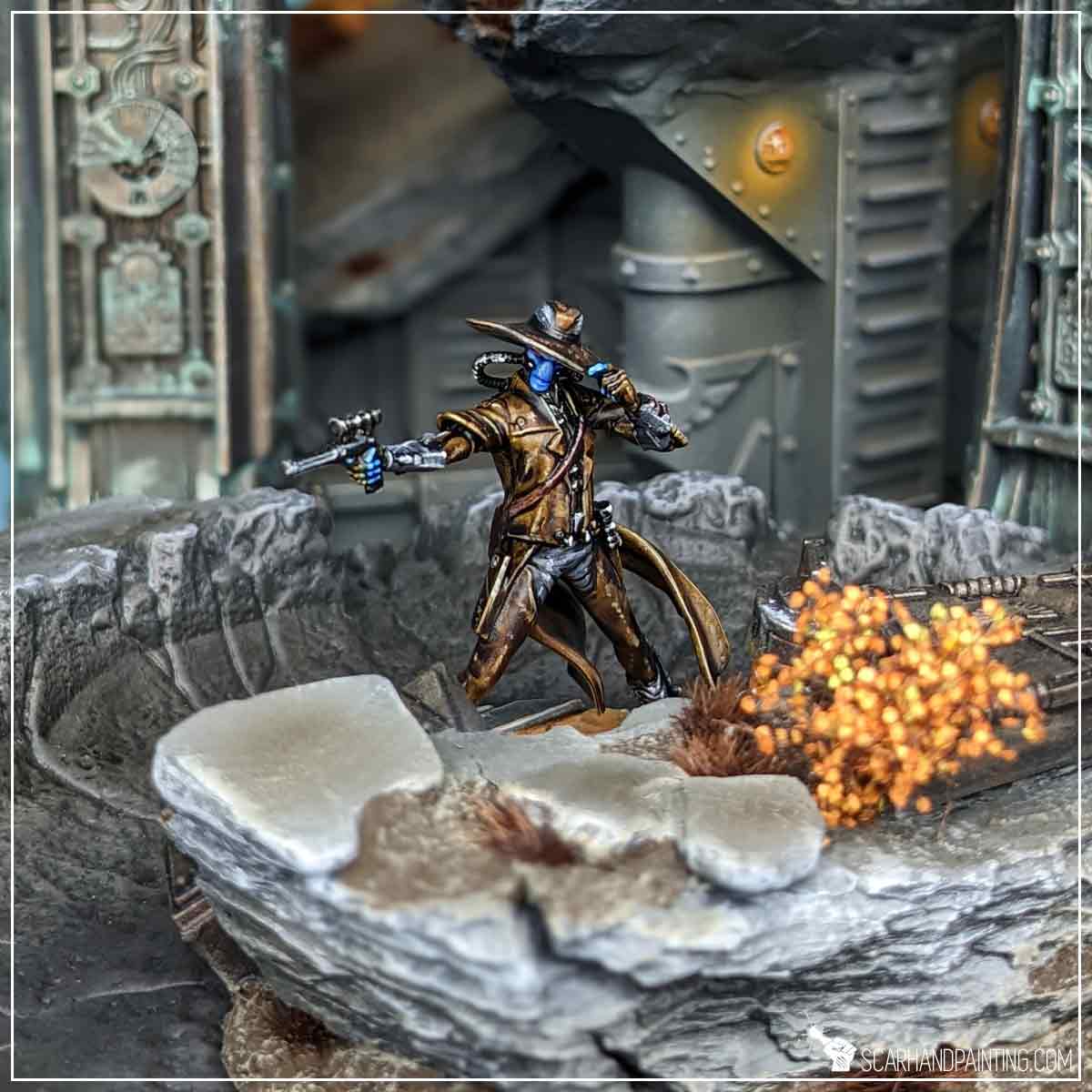
I hope you find this tutorial interesting. Be sure to let me know your thoughts in the comments below or via Facebook or Instagram. I would also appreciate it if you considered sharing this content with your friends, who might find it useful. Many thanks to Rebel.pl for sponsoring this content. Stay tuned for more Star Wars: Shatterpoint tutorials.
custom miniature commission
warhammer 40k painting service
warhammer commission painting
40k commission painting
miniature commission painting
custom miniature painting
miniatures painting service
Address:
Scarhandpainting Kulesza Maciej
Damrota 11, 42-622 Świerklaniec, Poland
E-mail: contact@scarhandpainting.com
Scarhandpainting is a professional miniatures painting service. Why choose Scarhandpainting? Two decades worth of hobby experience, a decade in the market, hundreds of finished commissions and happy customers. We offer a characteristic style of paint job on seven different levels to cater to your needs.
Looking for Warhammer 40,000 painting service on a budget? Or maybe high quality paint job with quick turnaround time? We’ve got you covered! Red more…
© 2023 Scarhandpainting Kulesza Maciej
